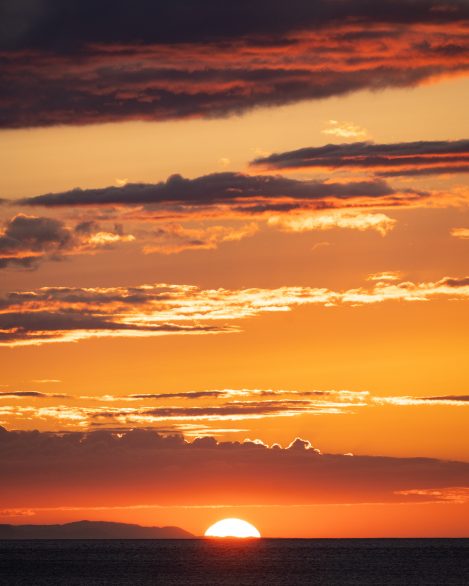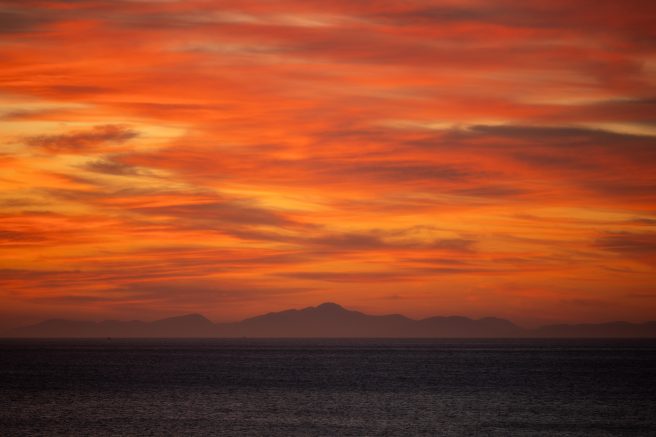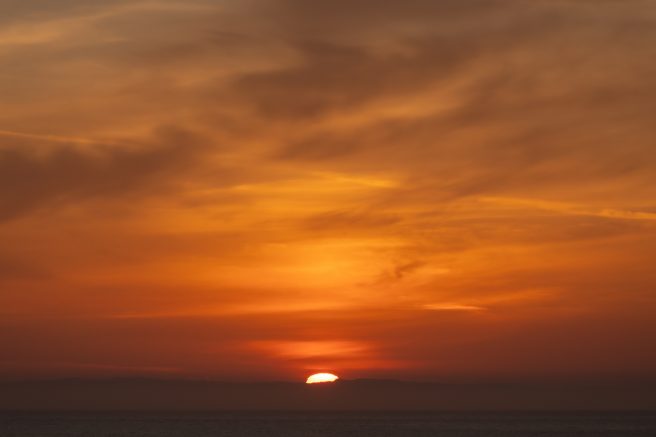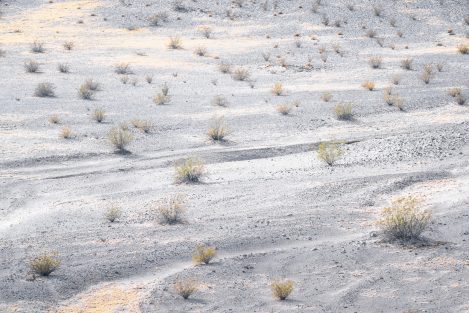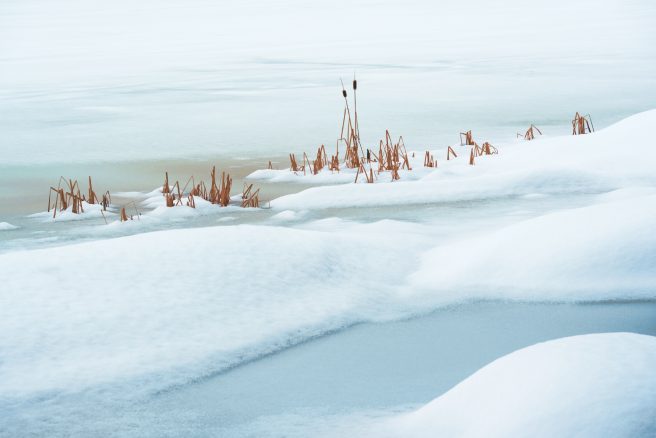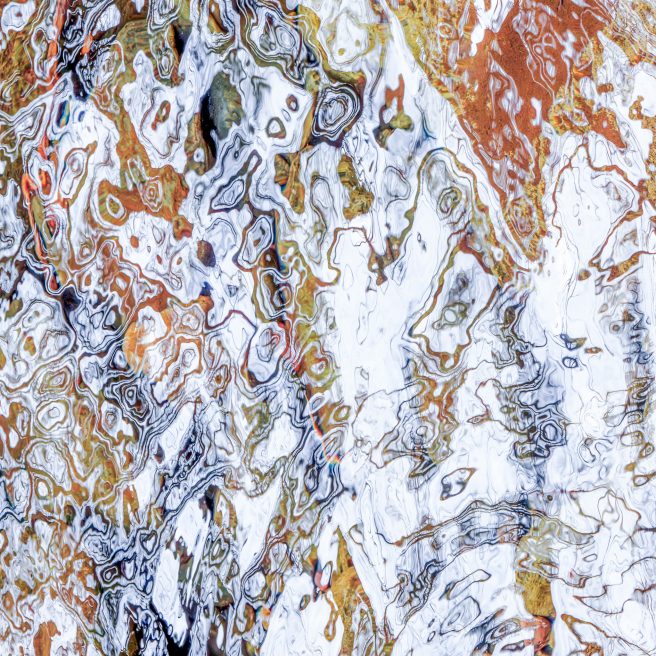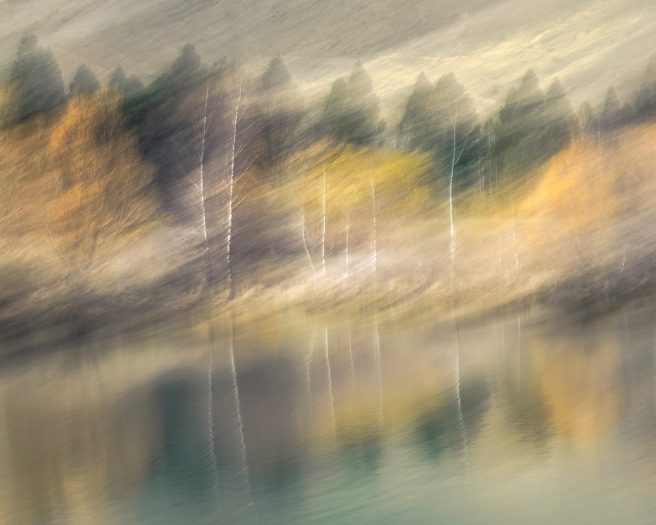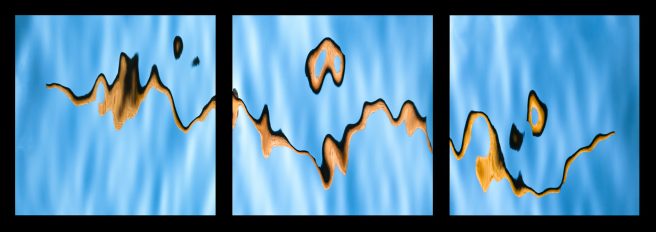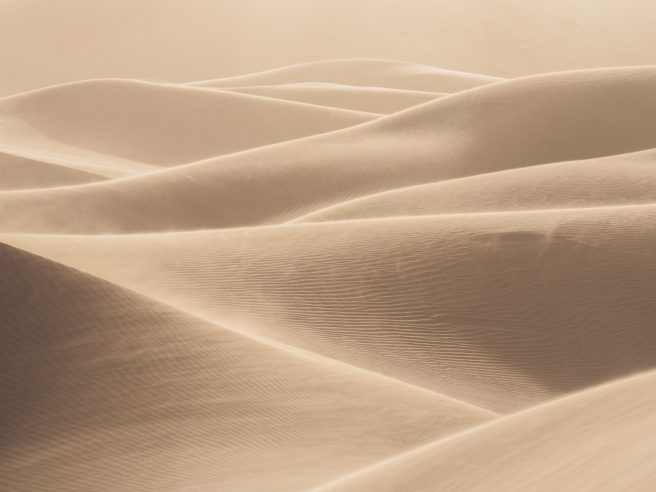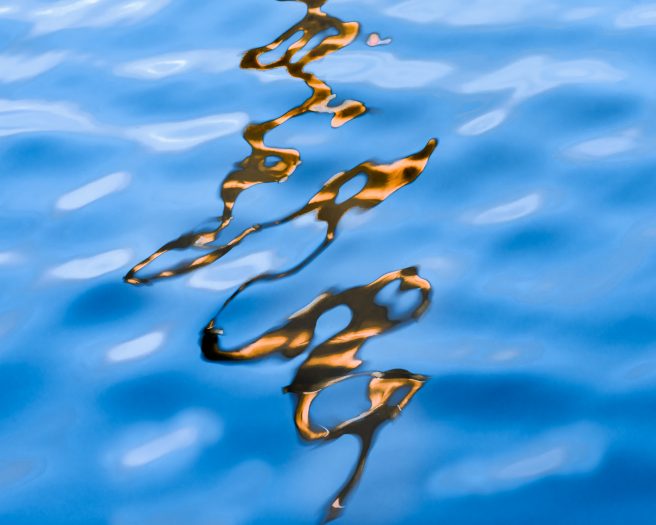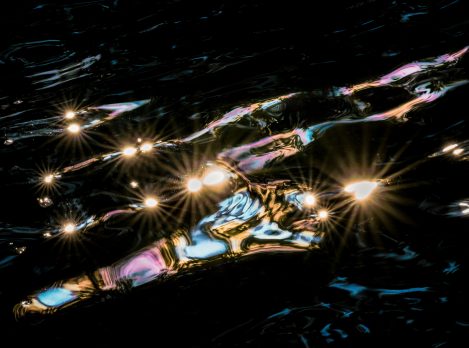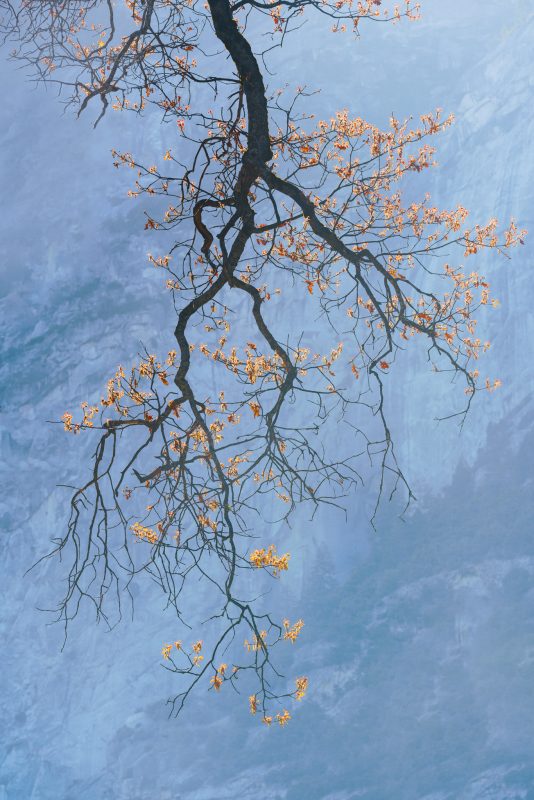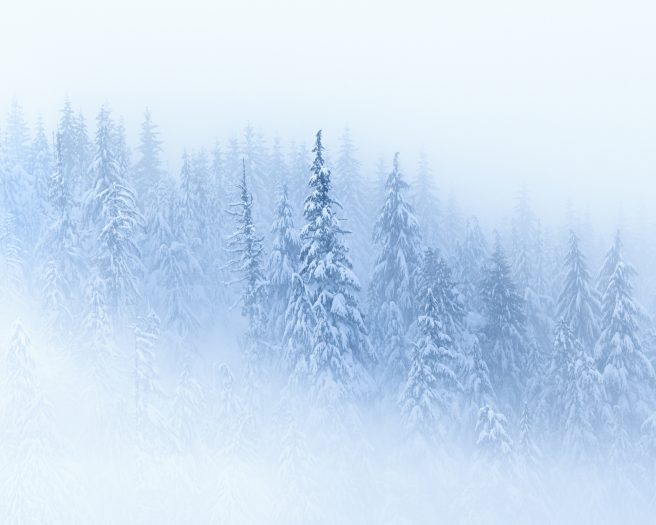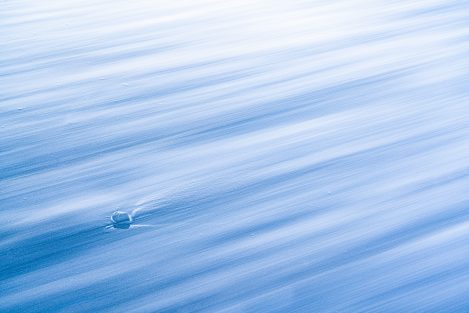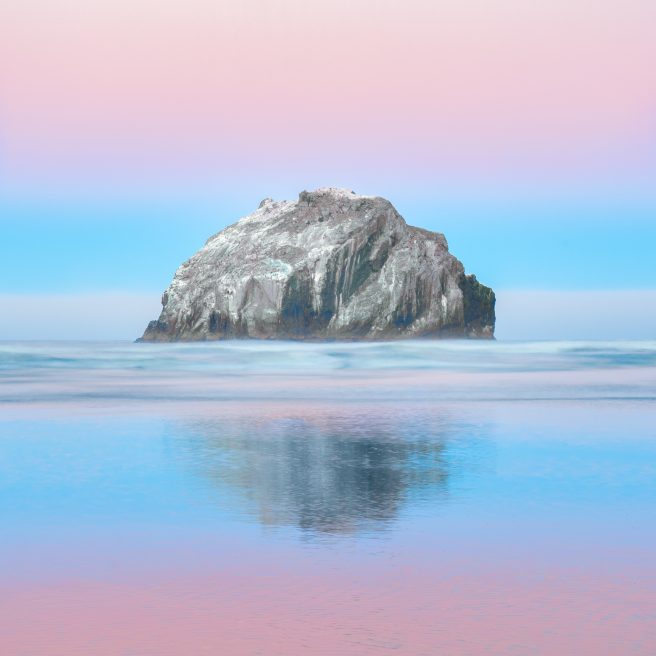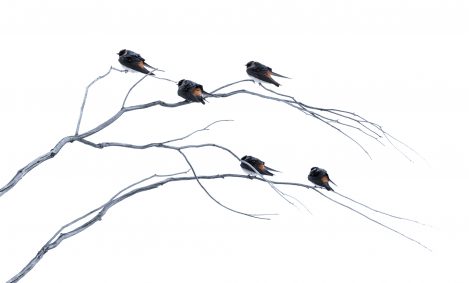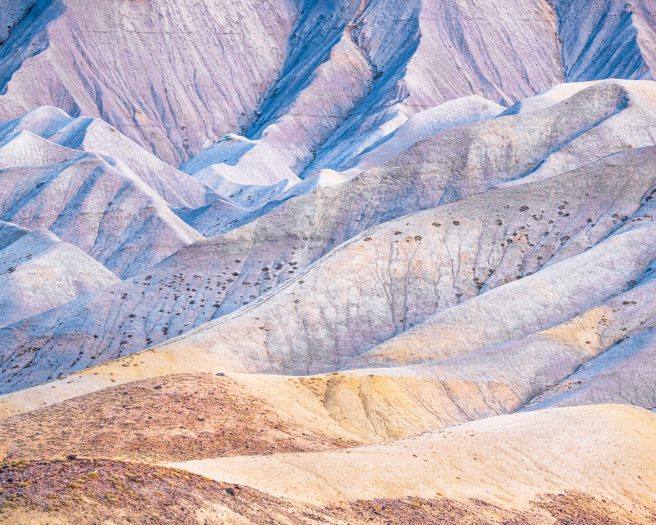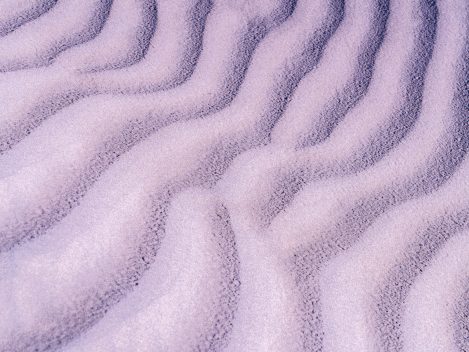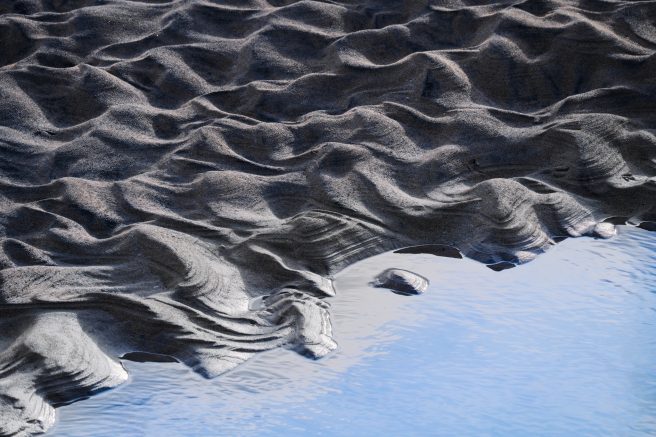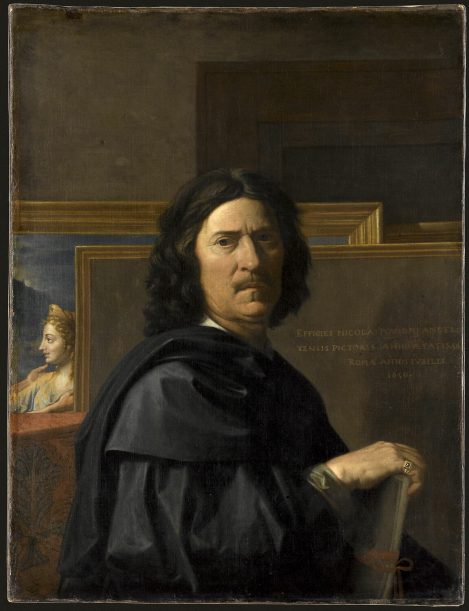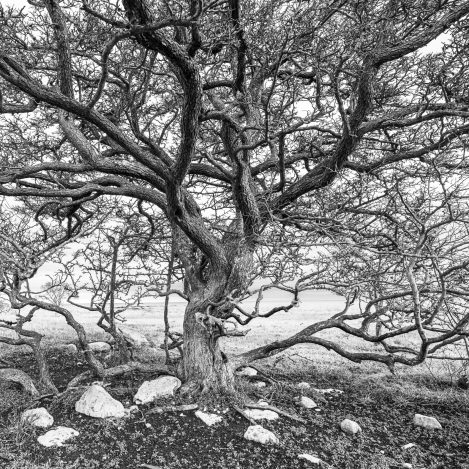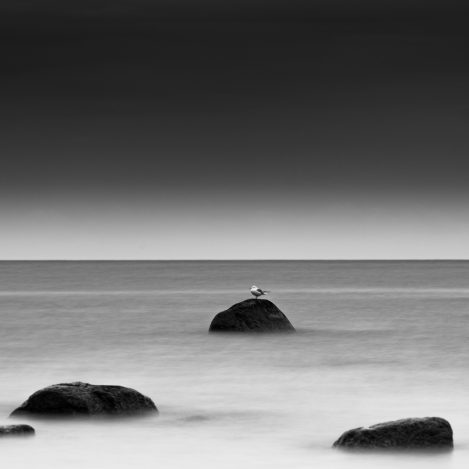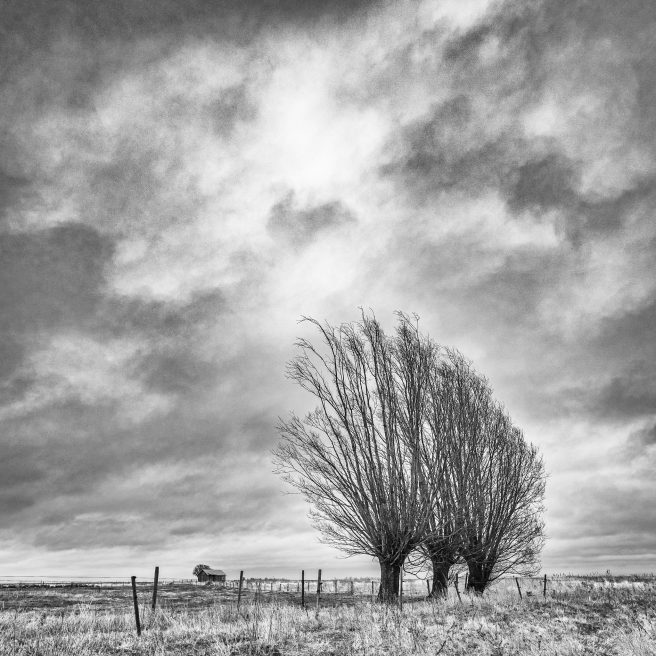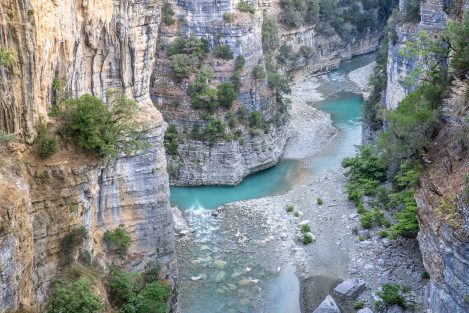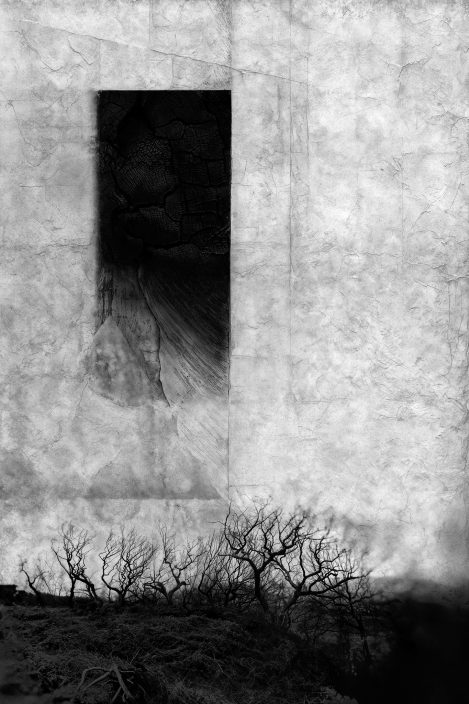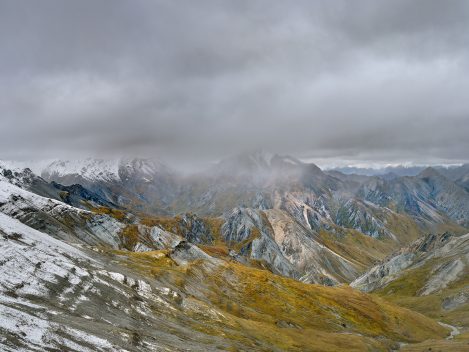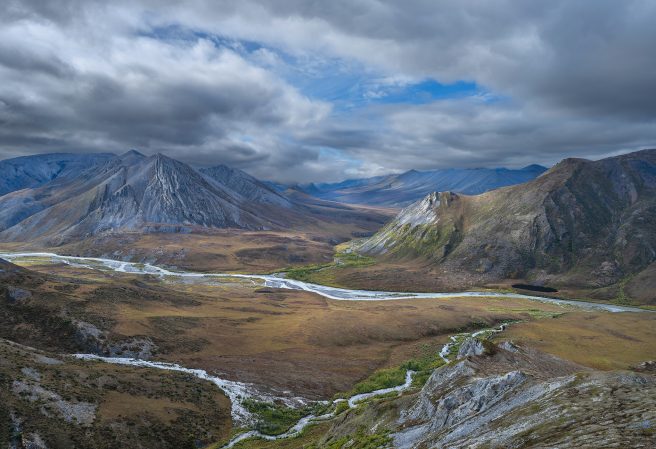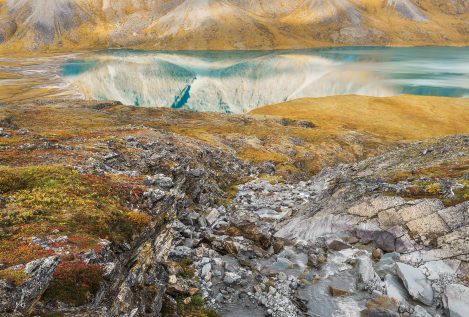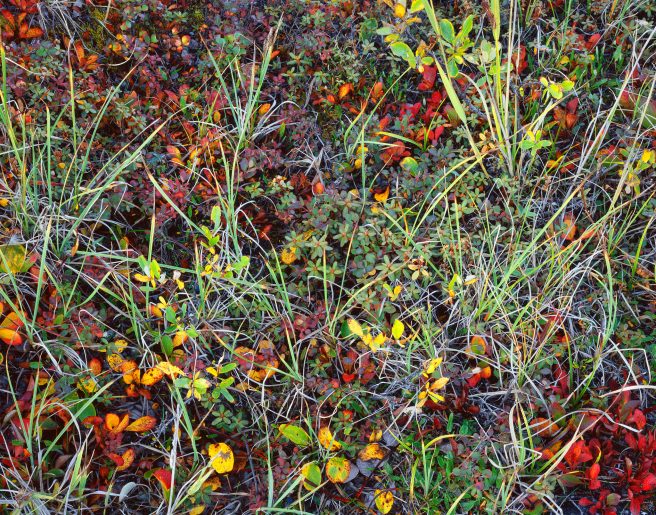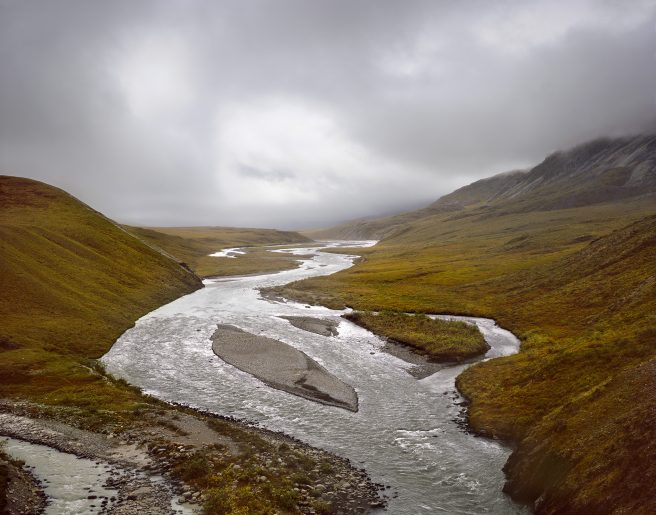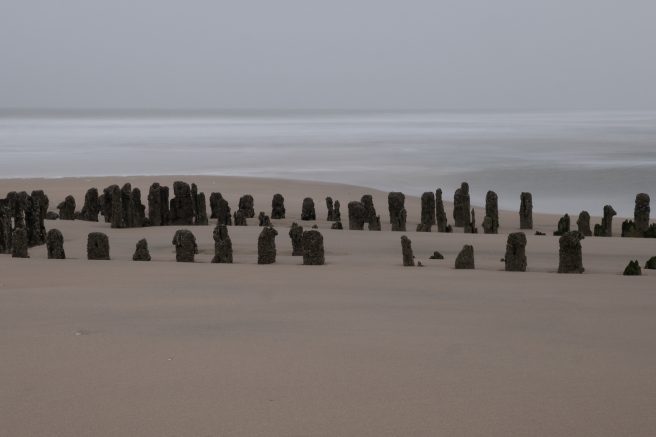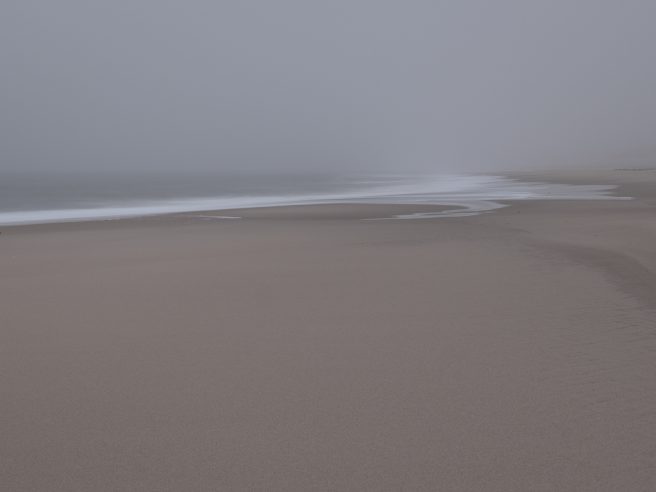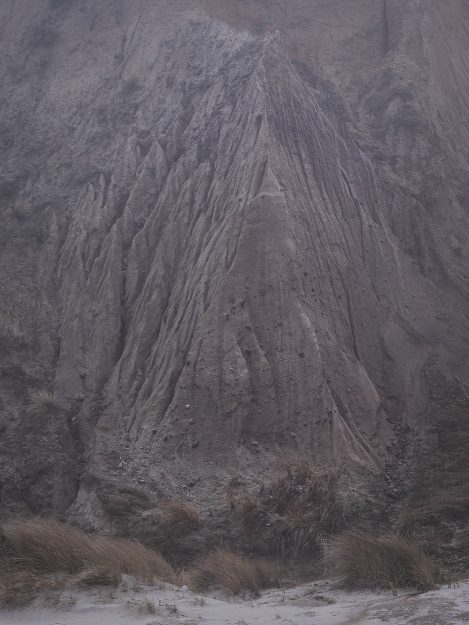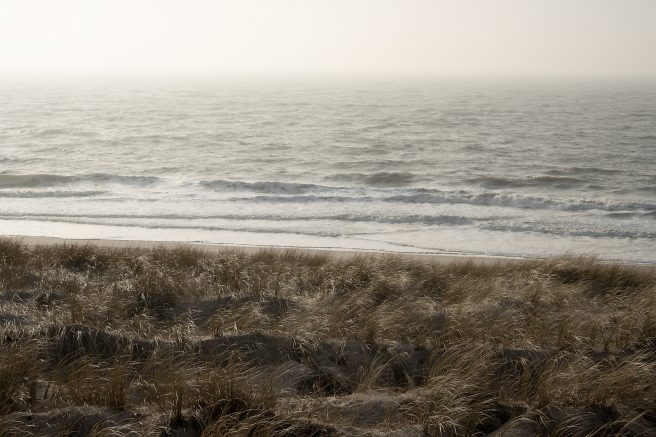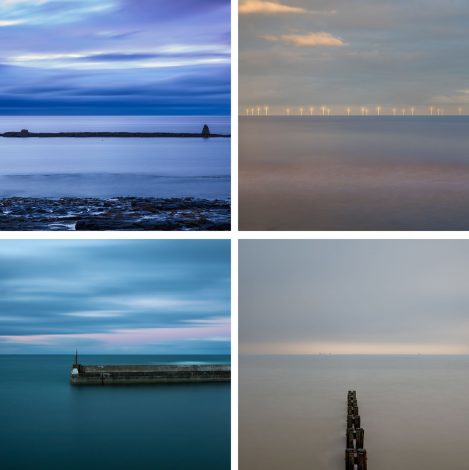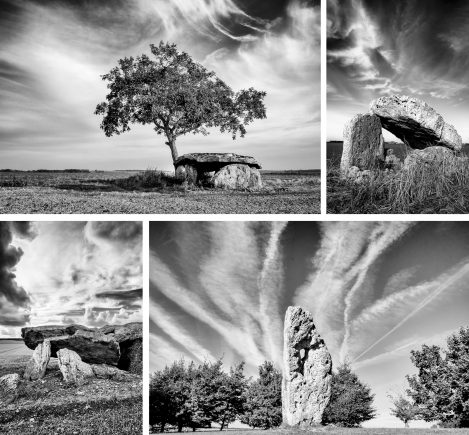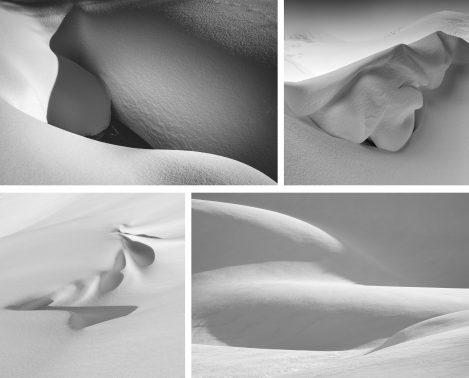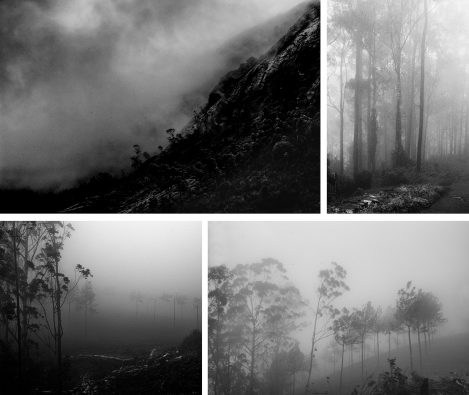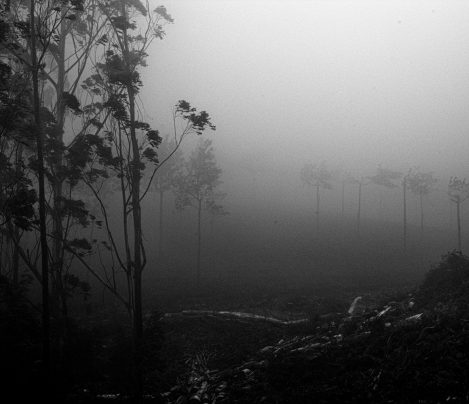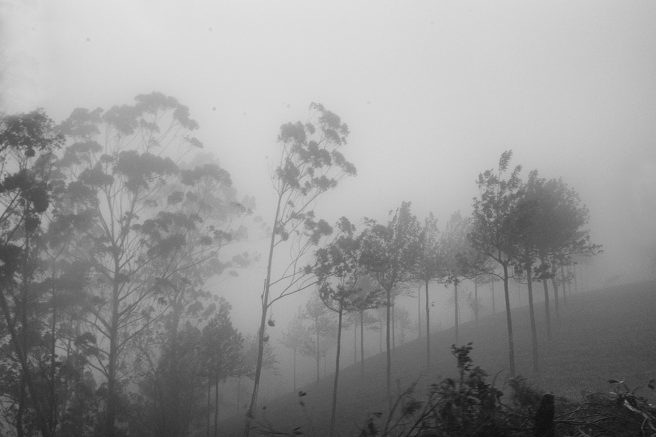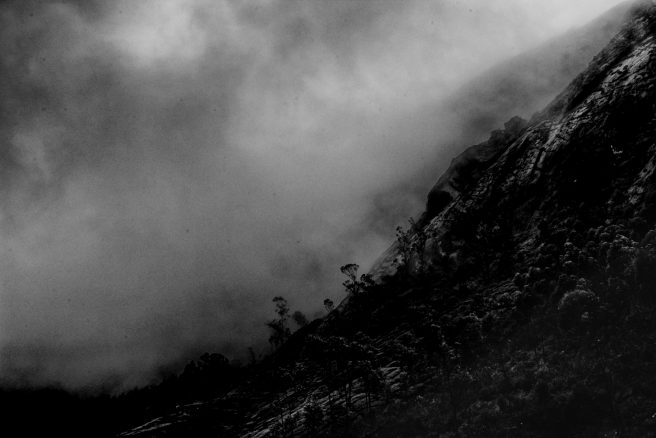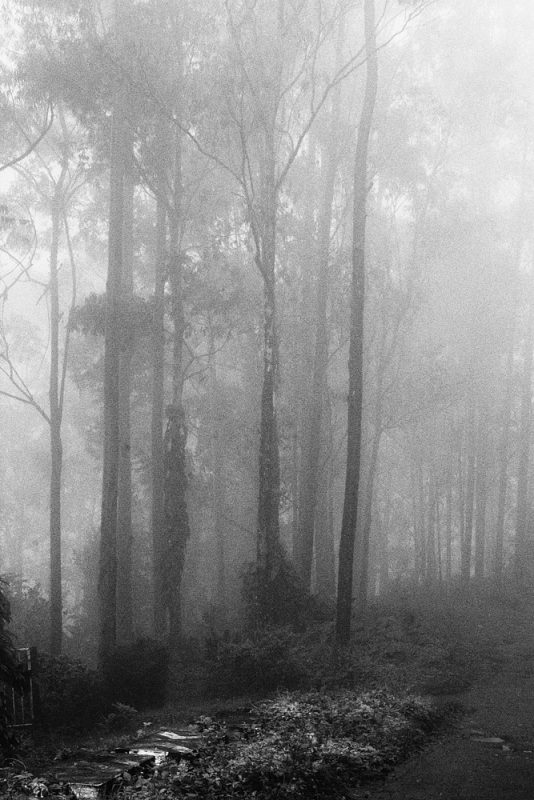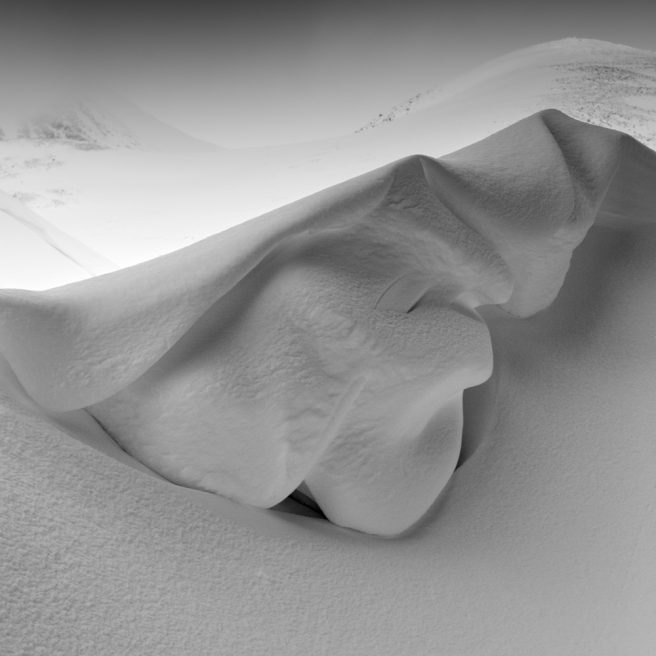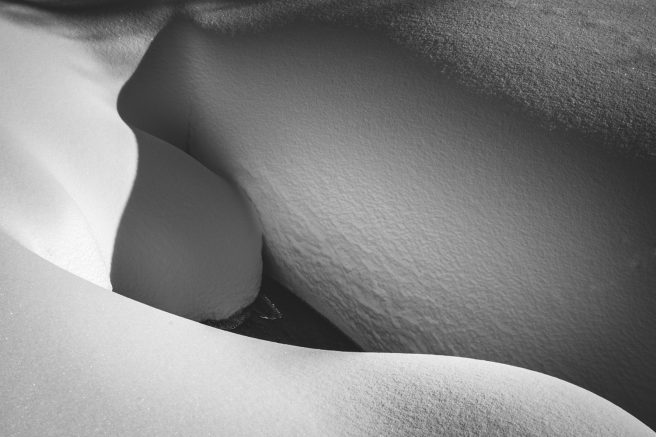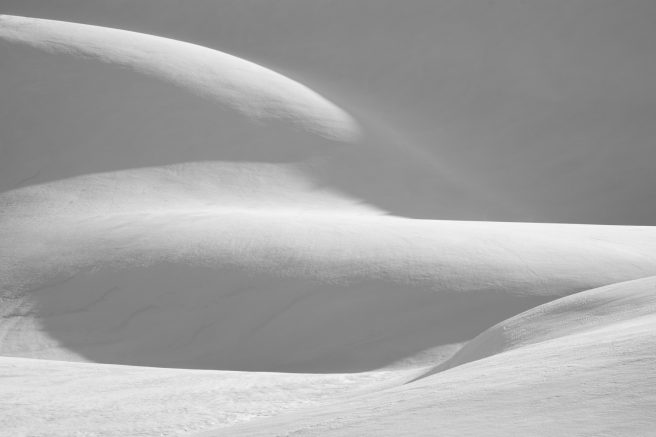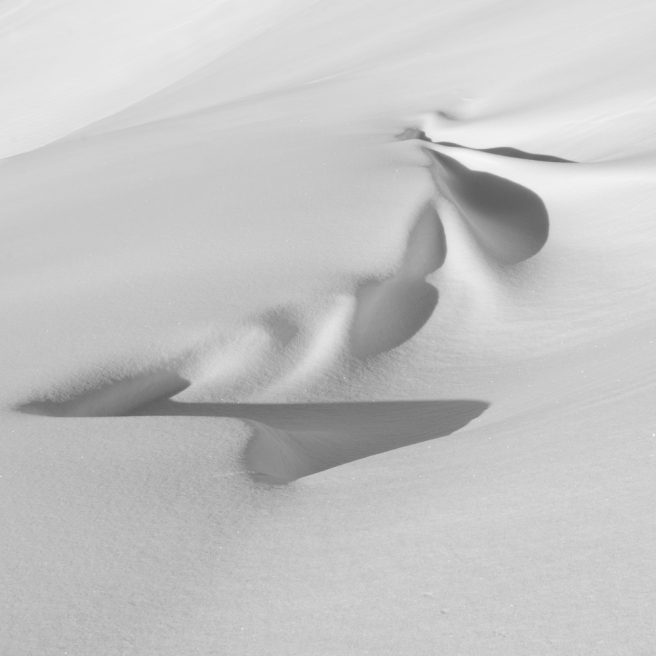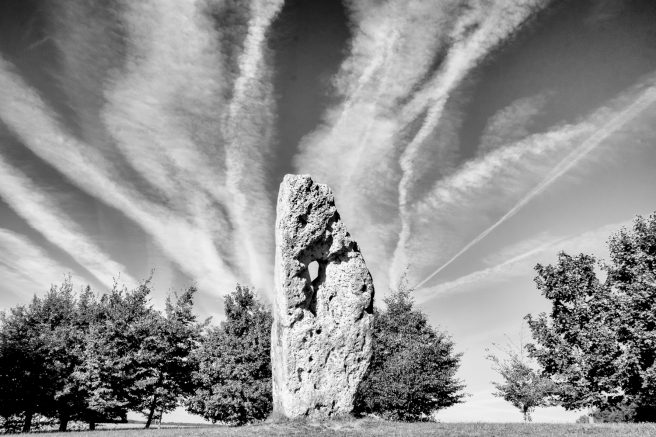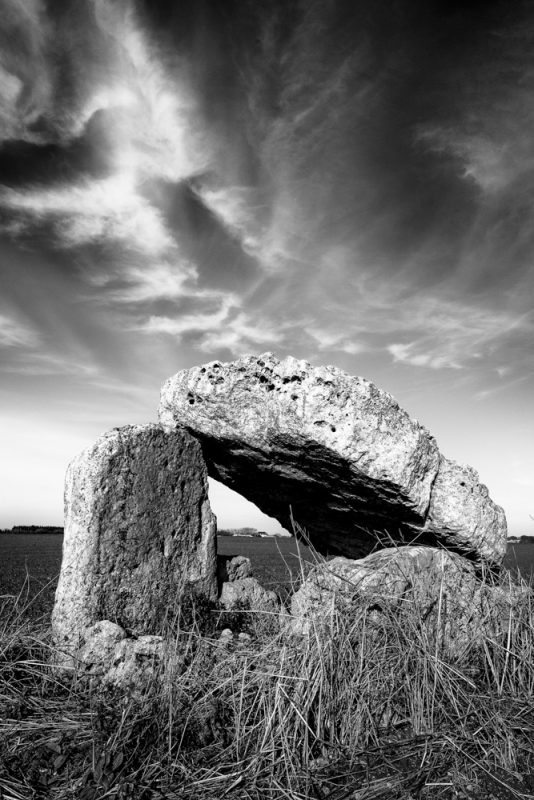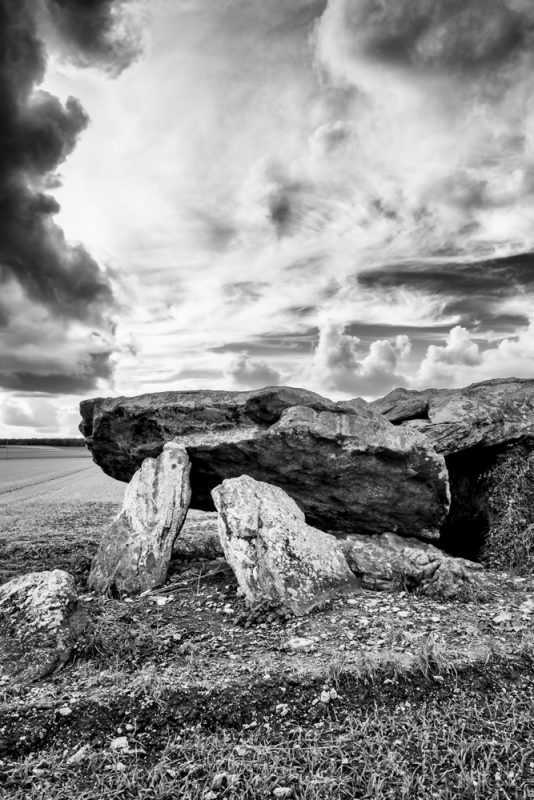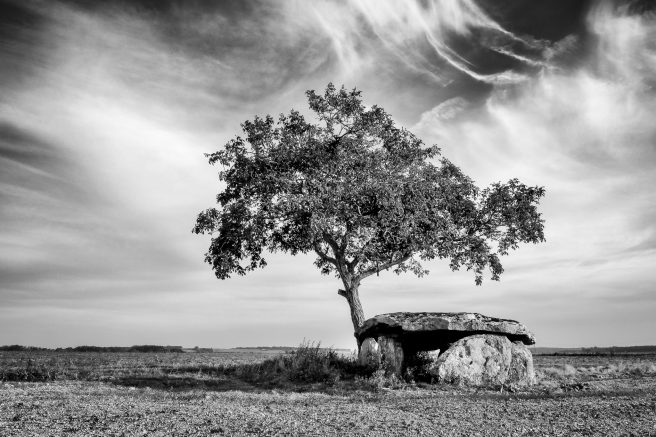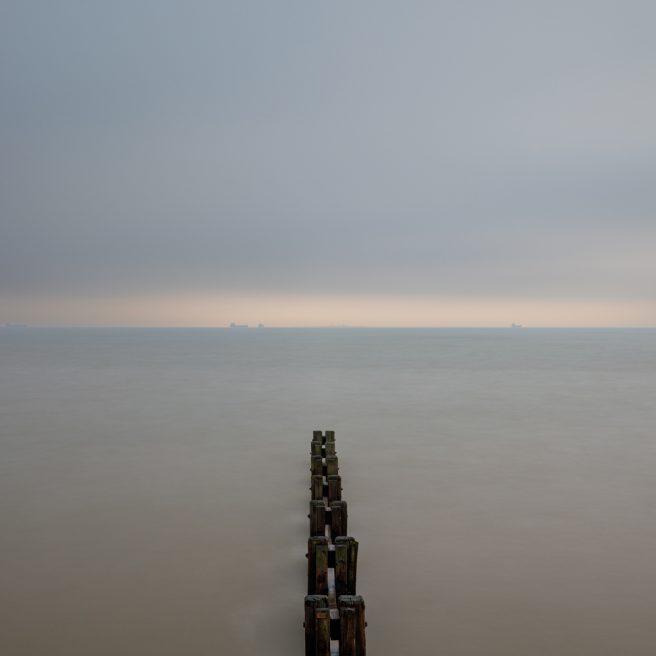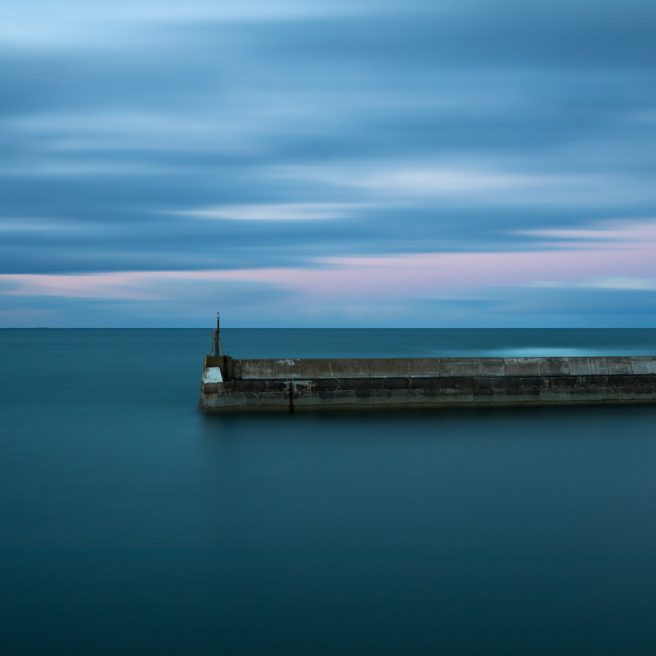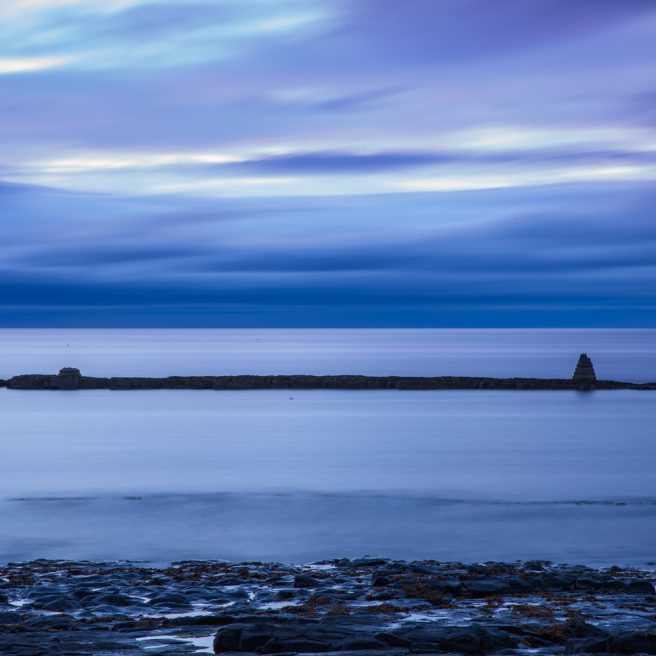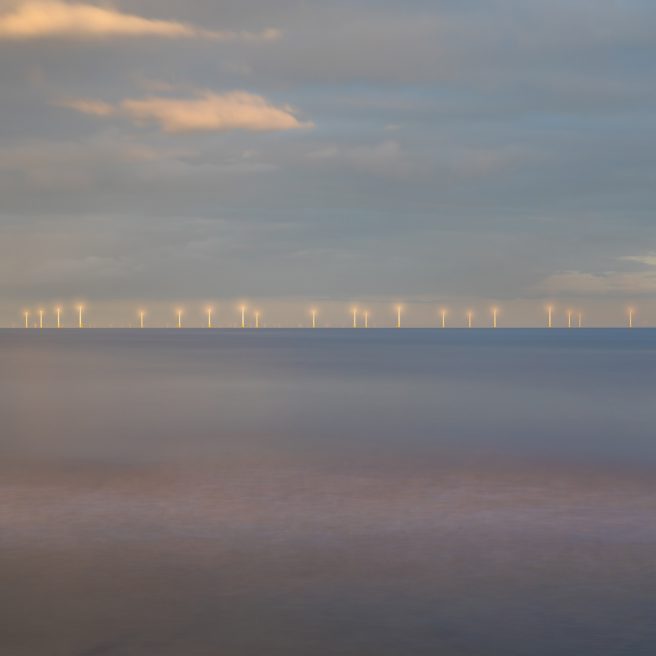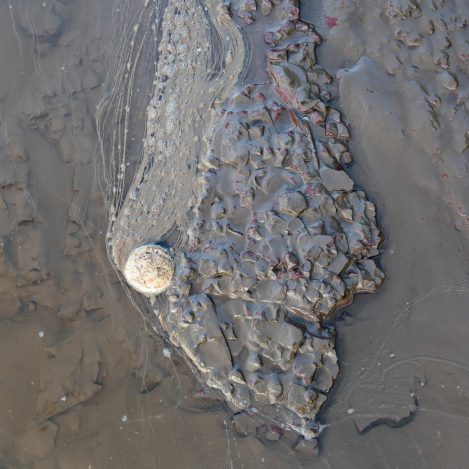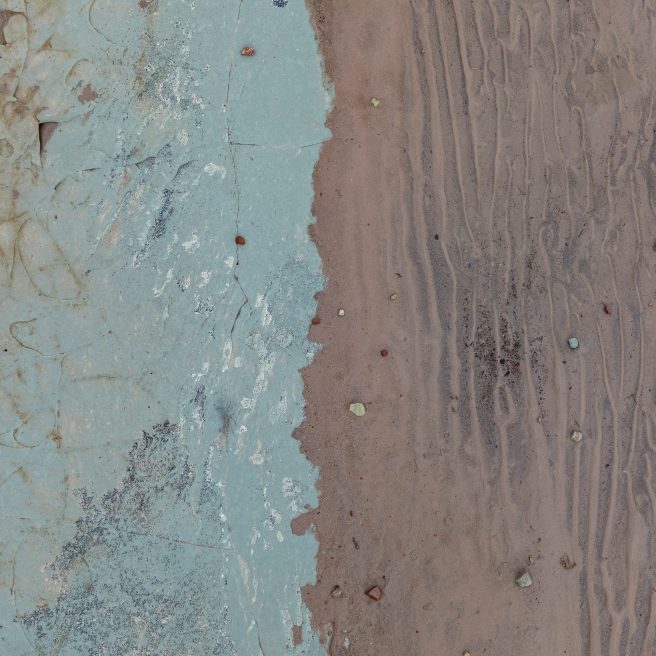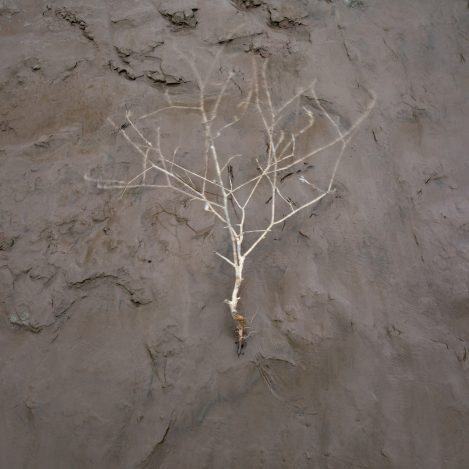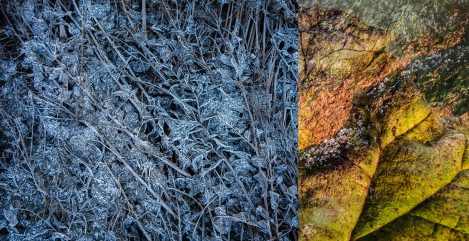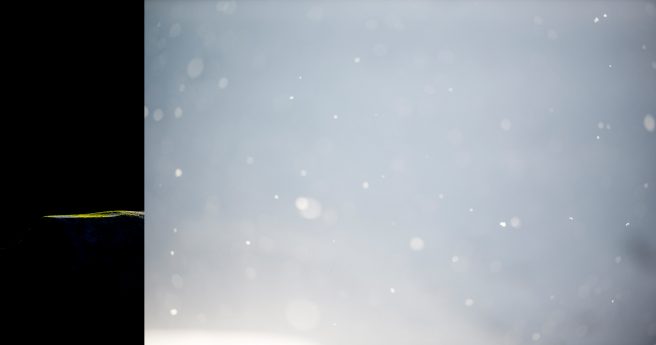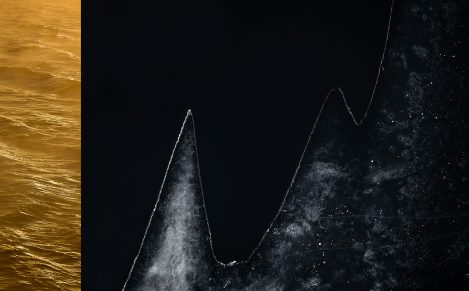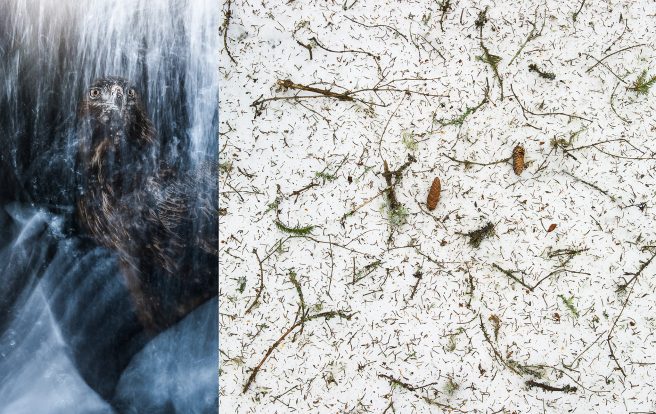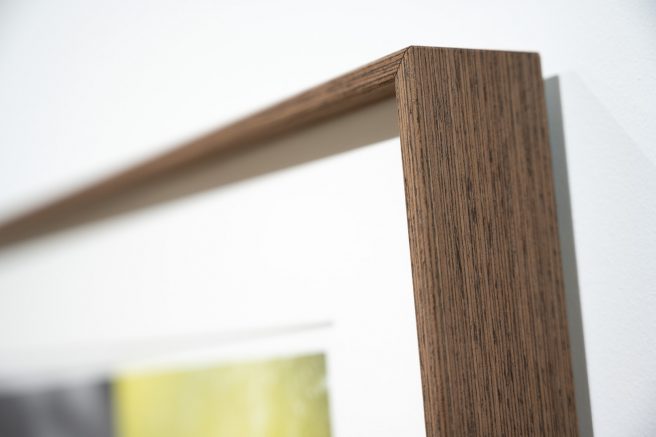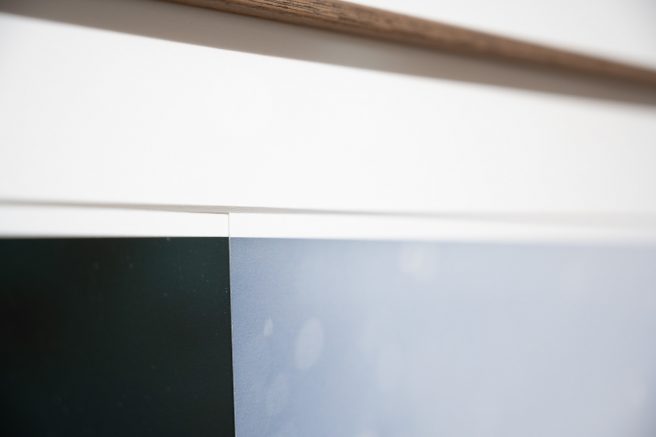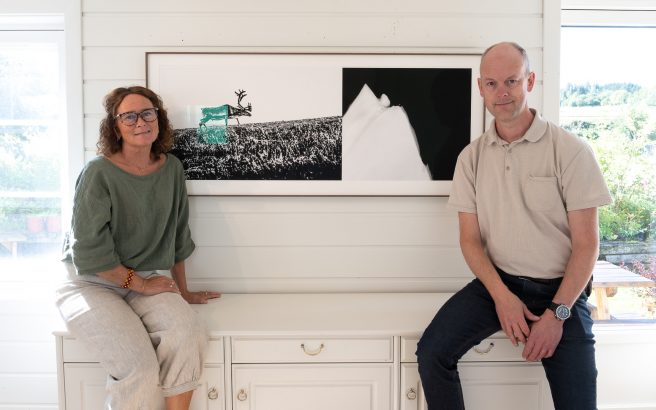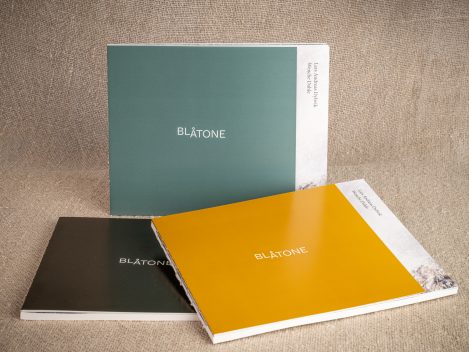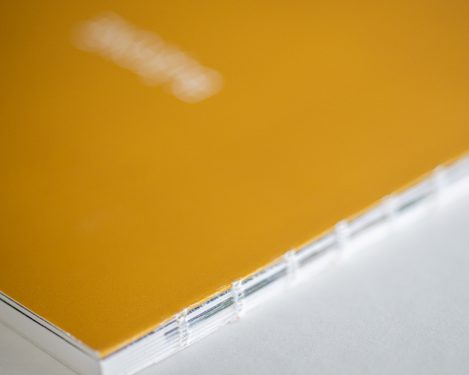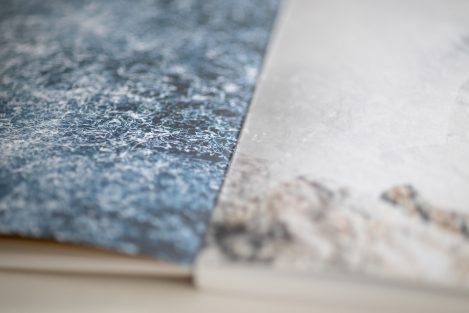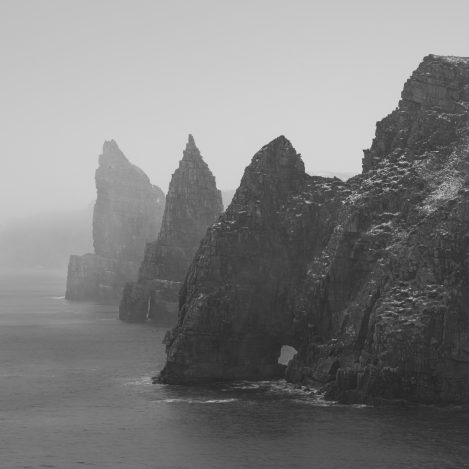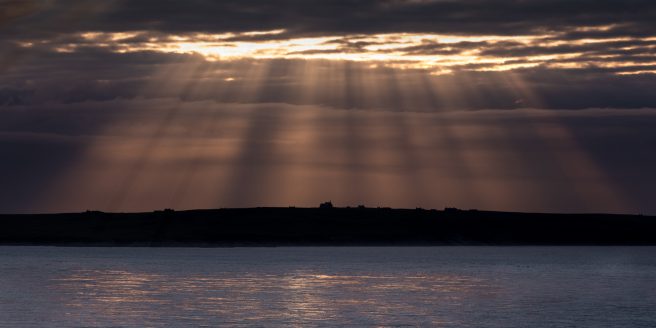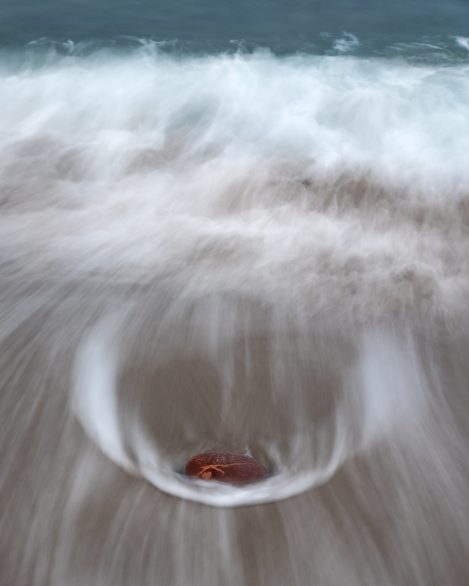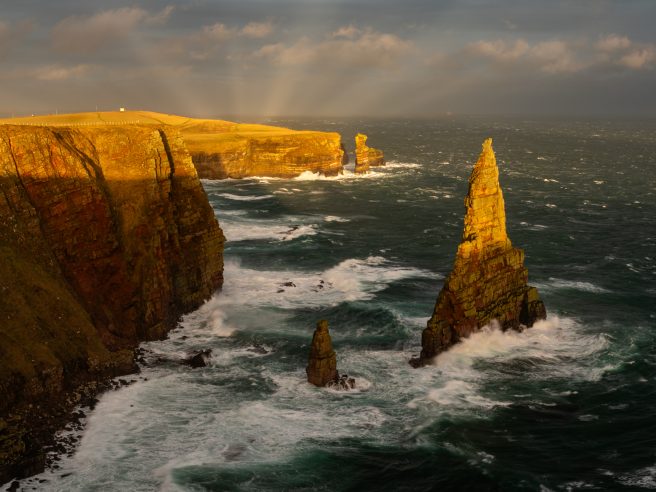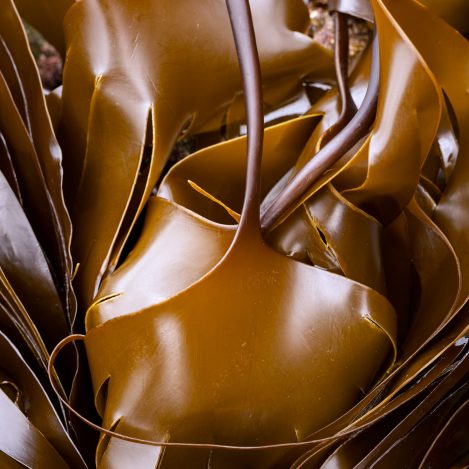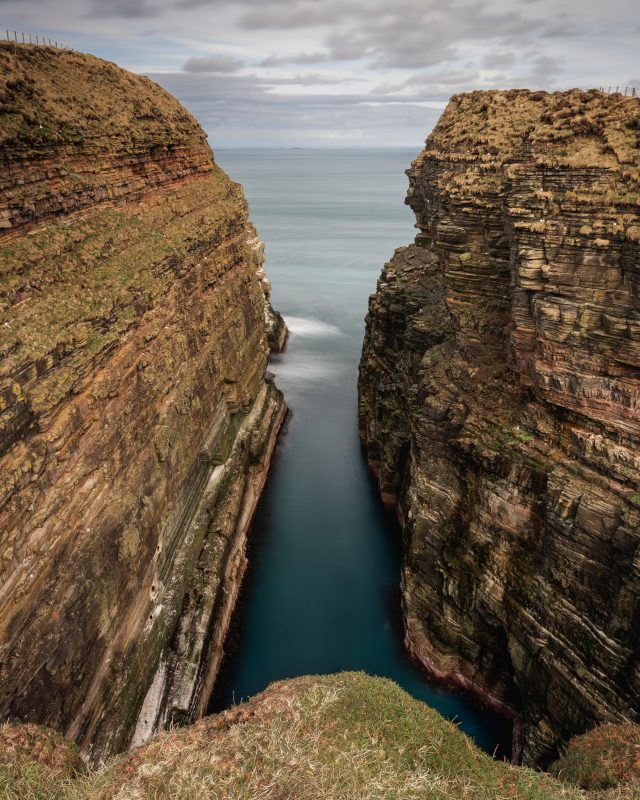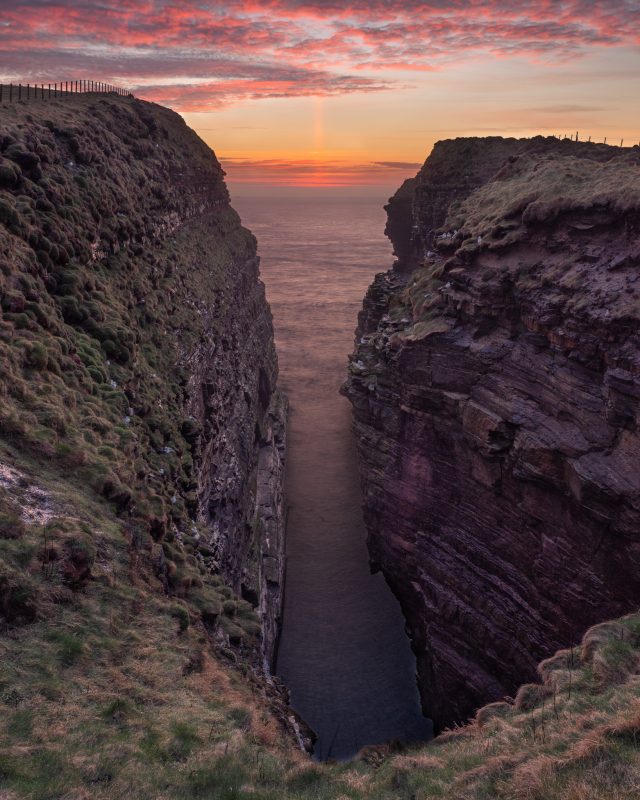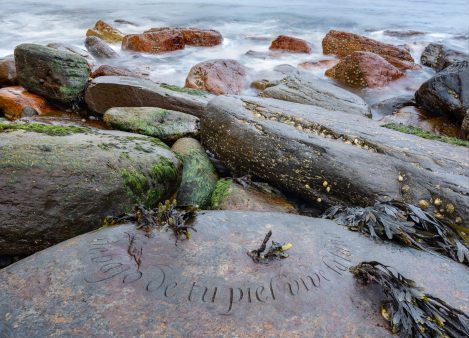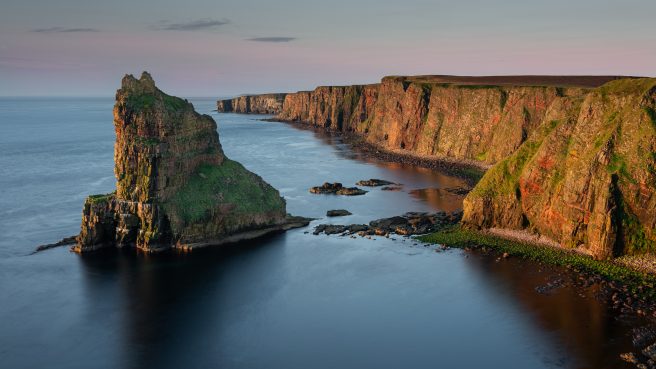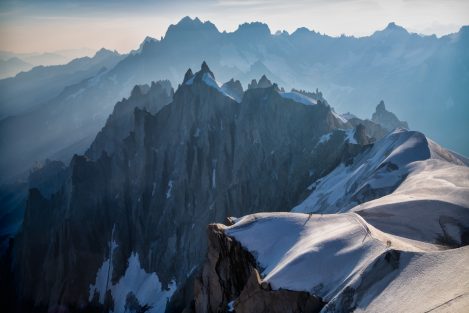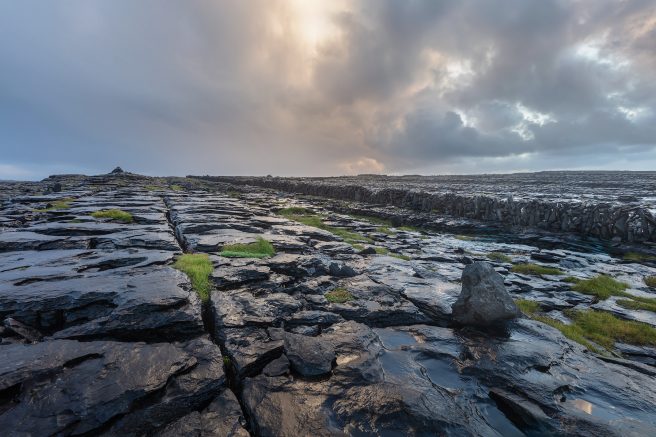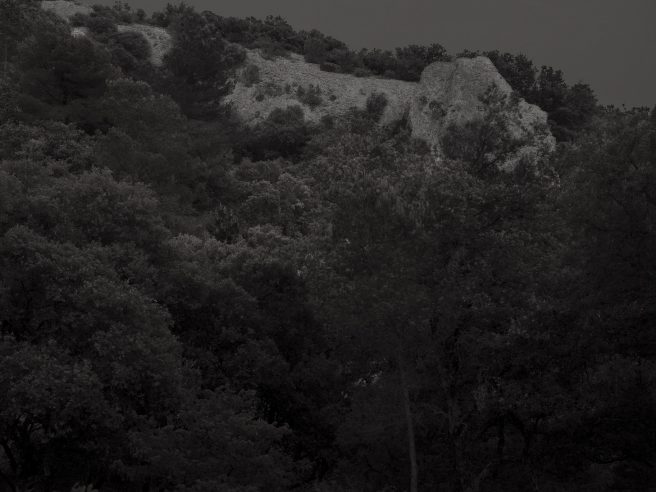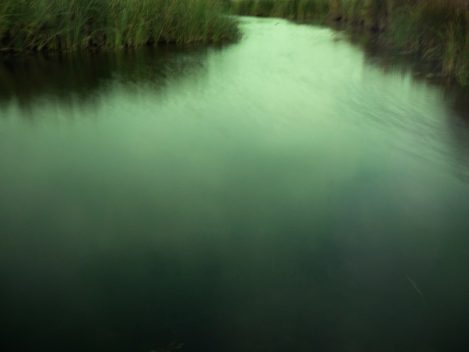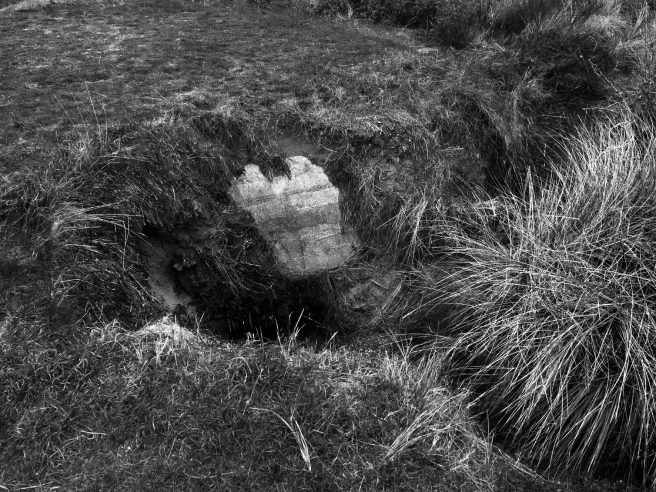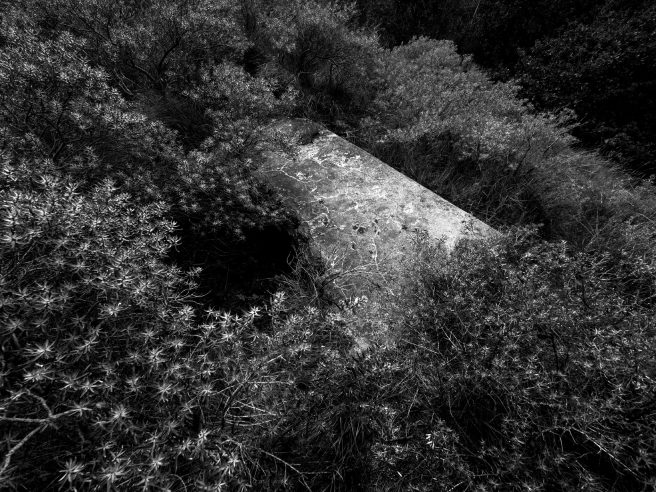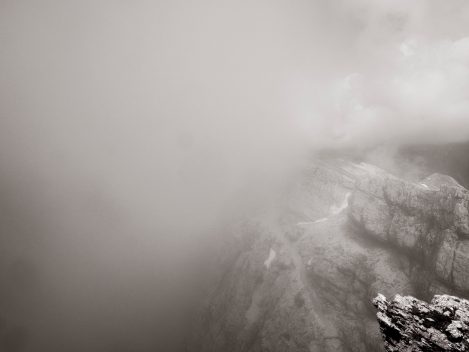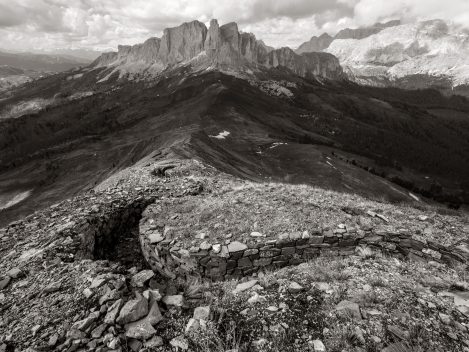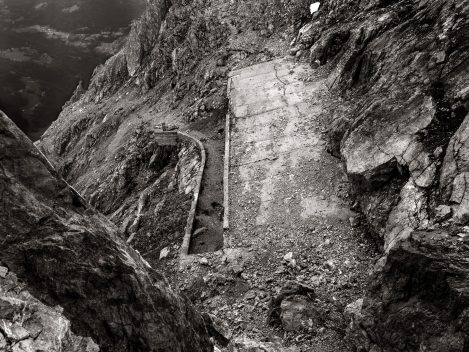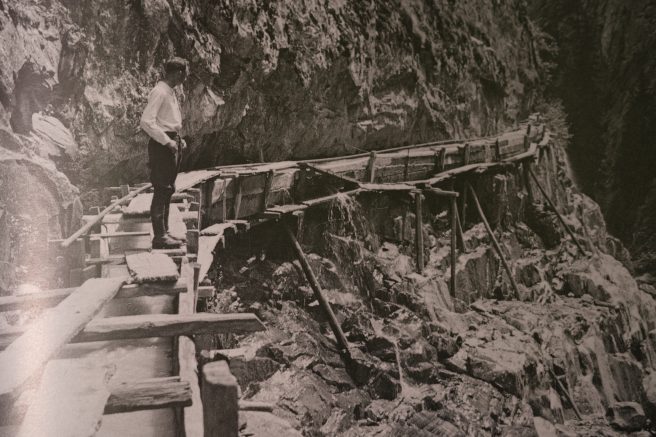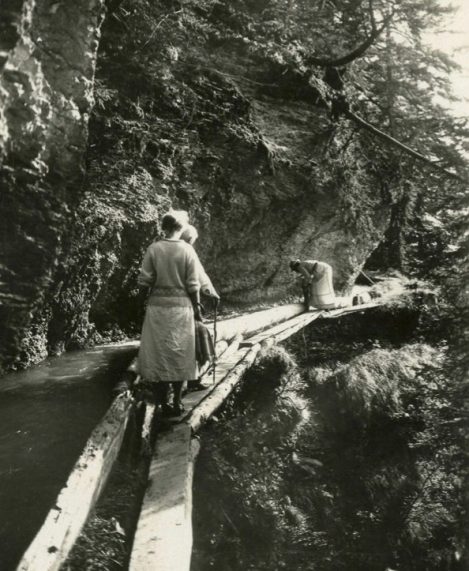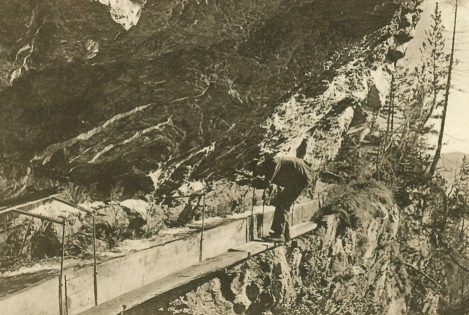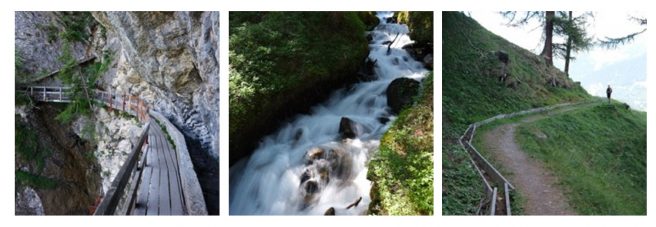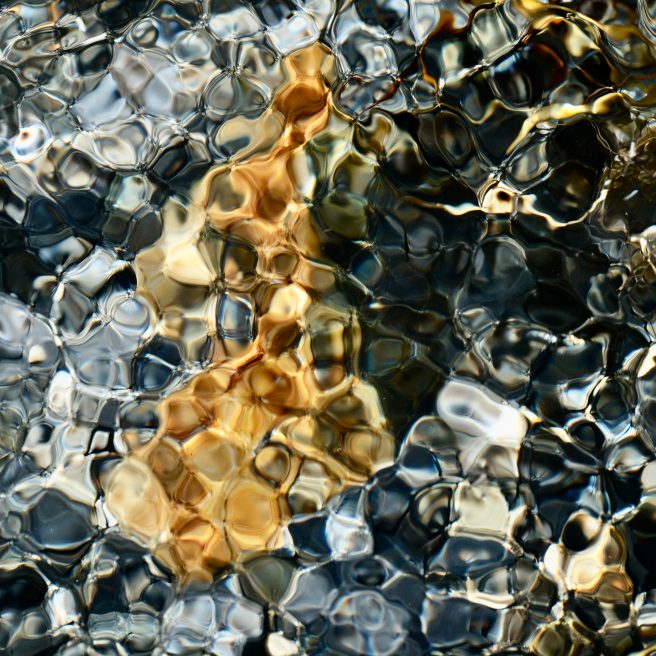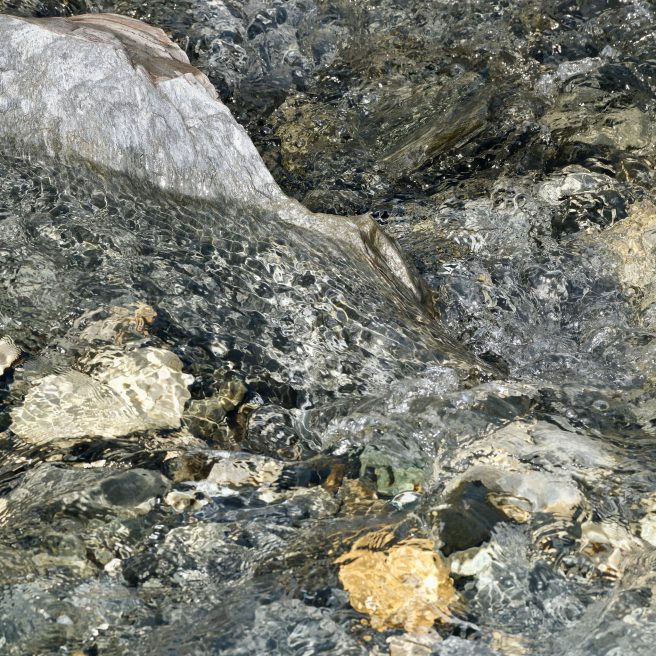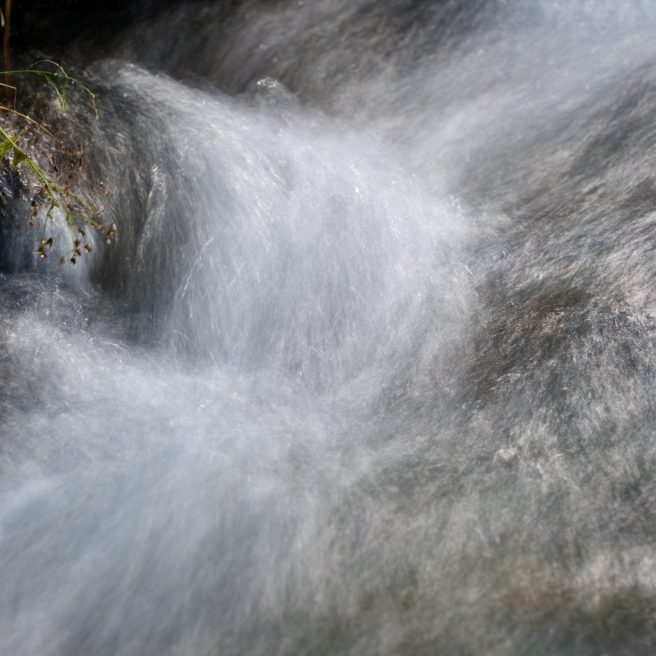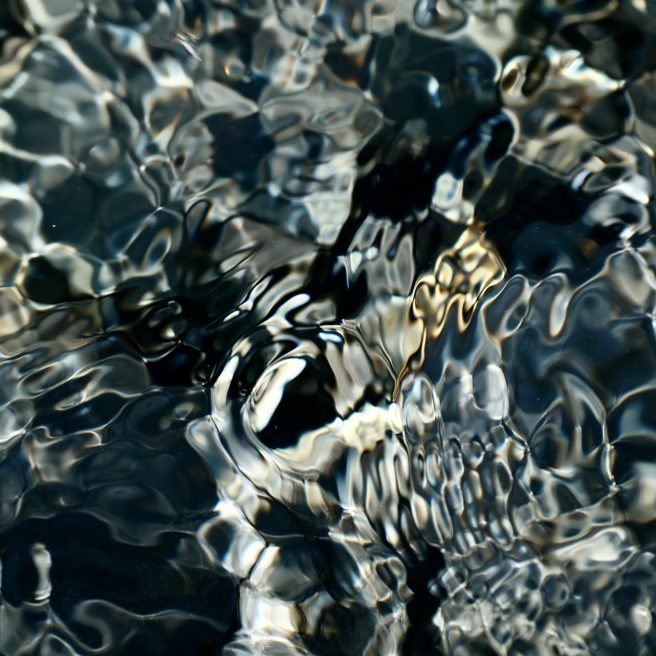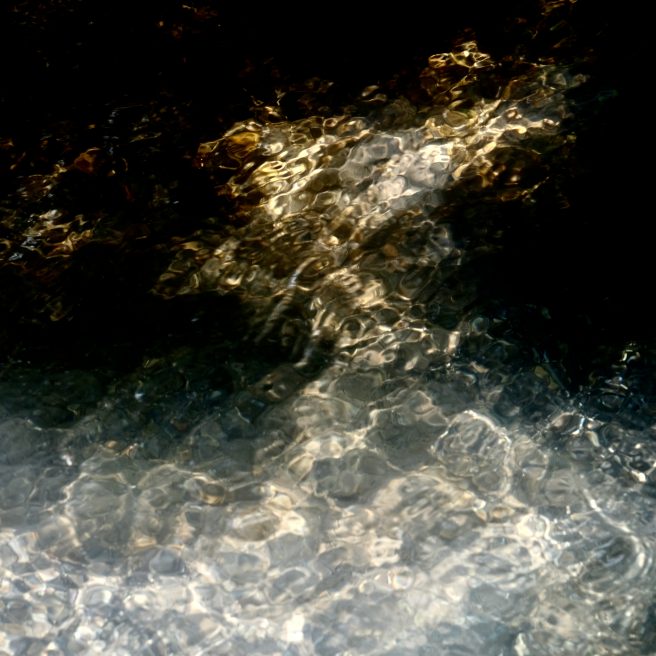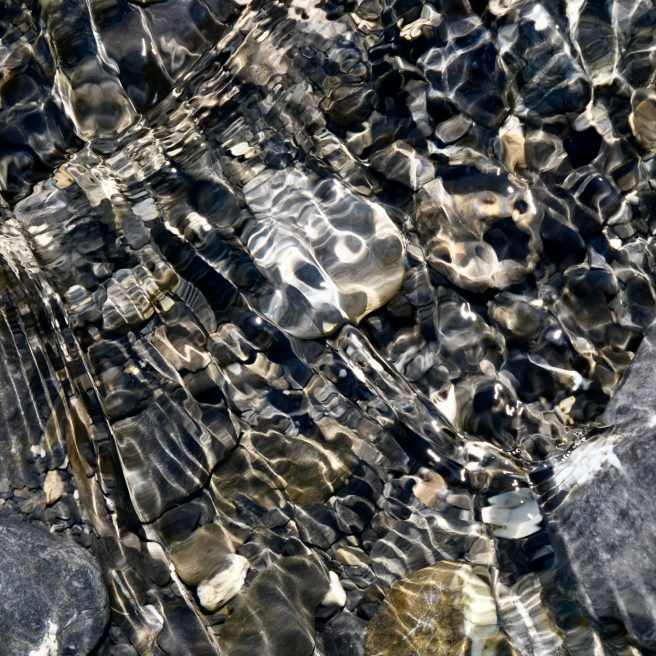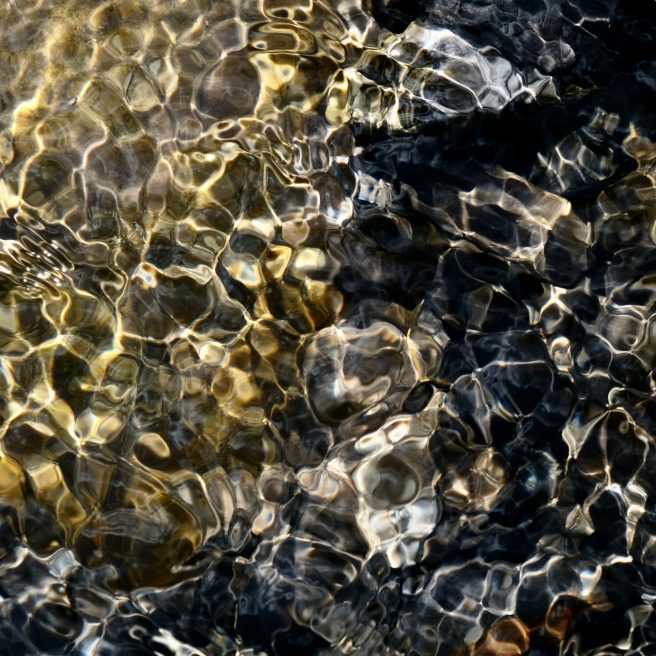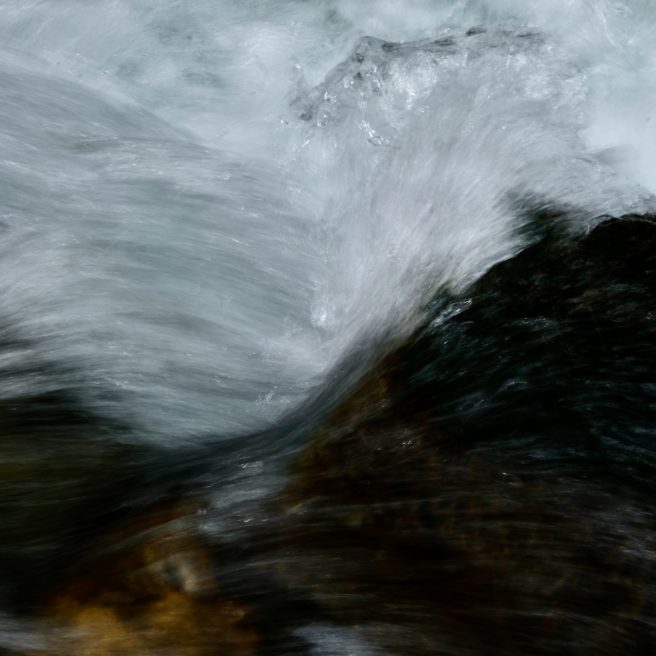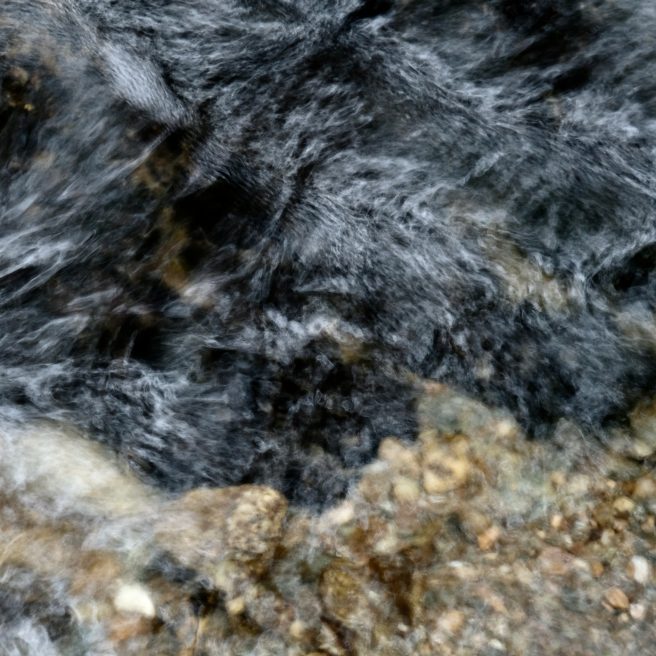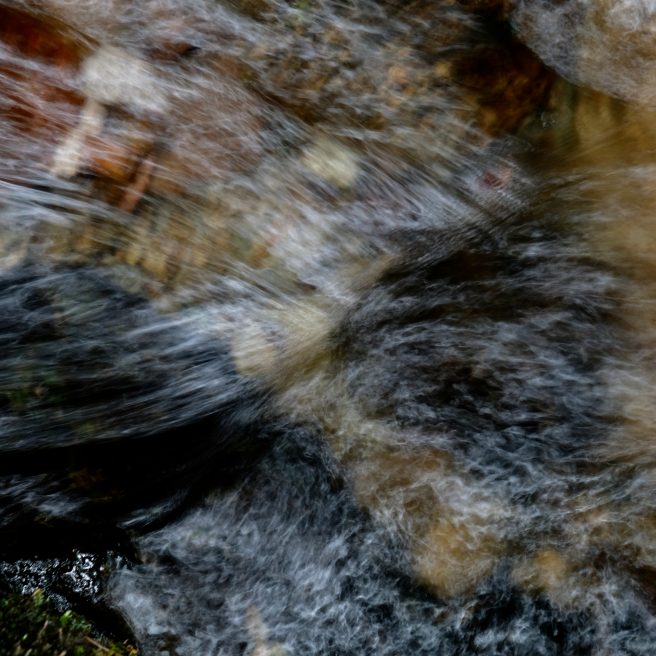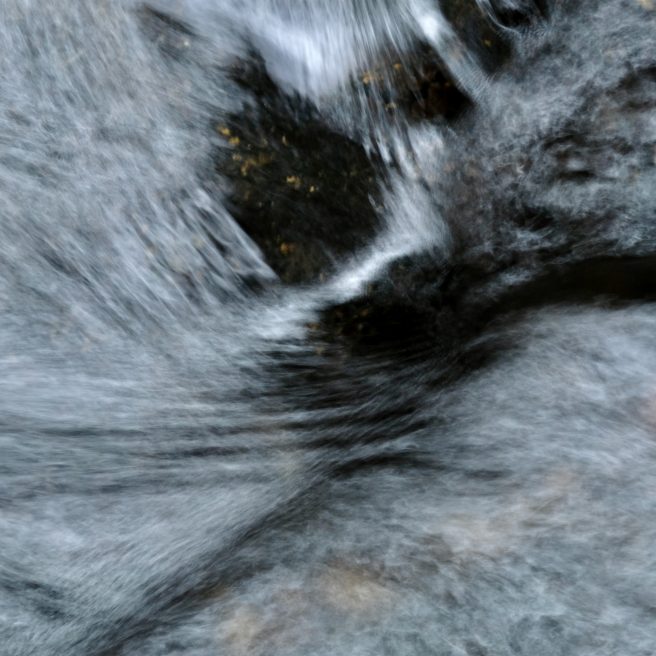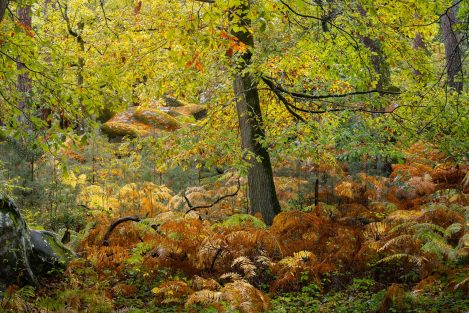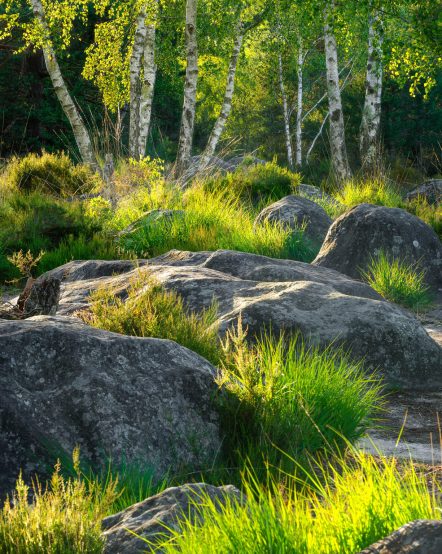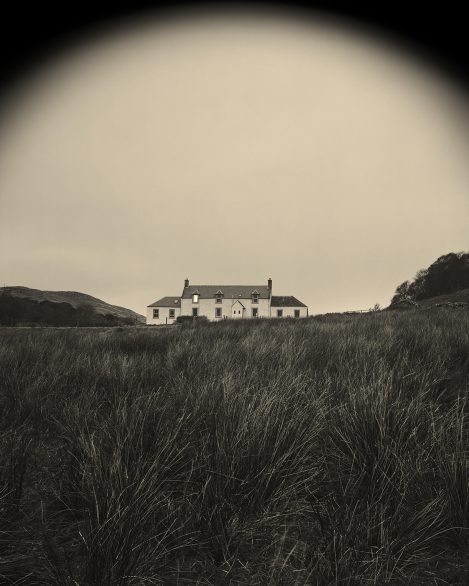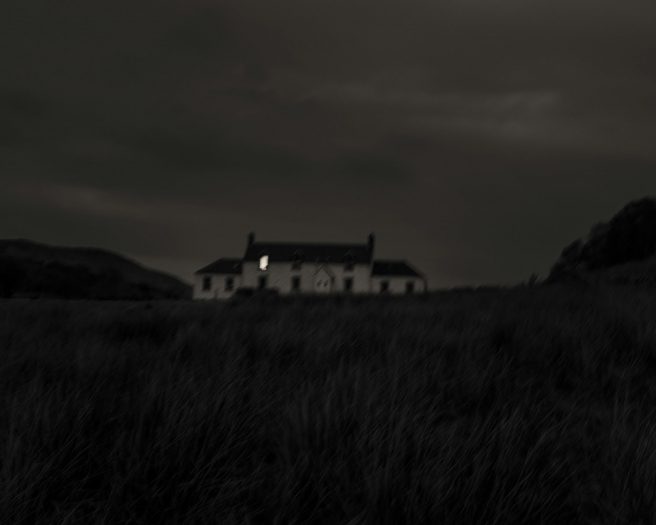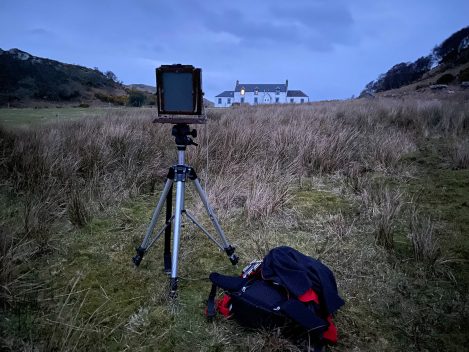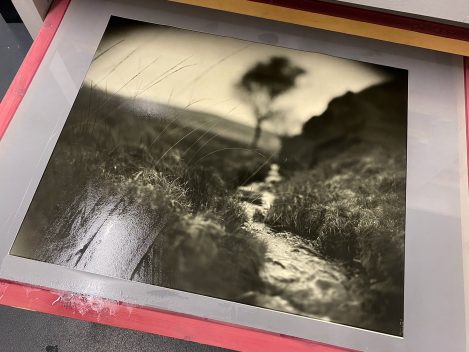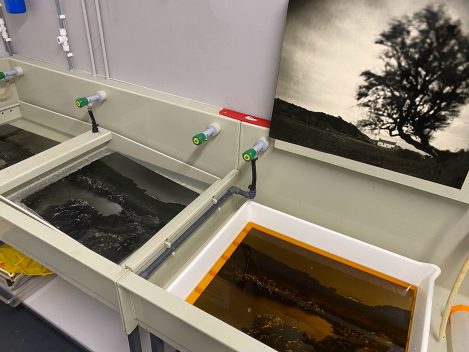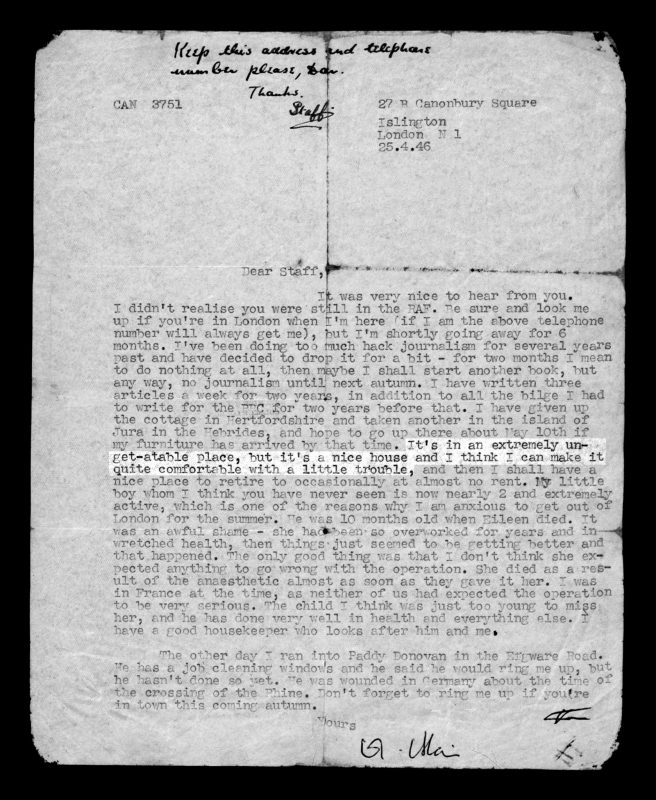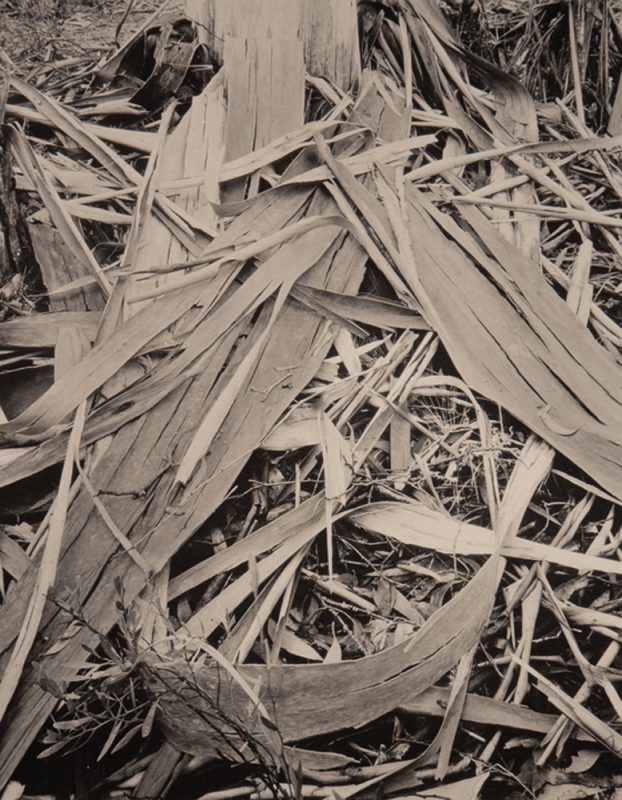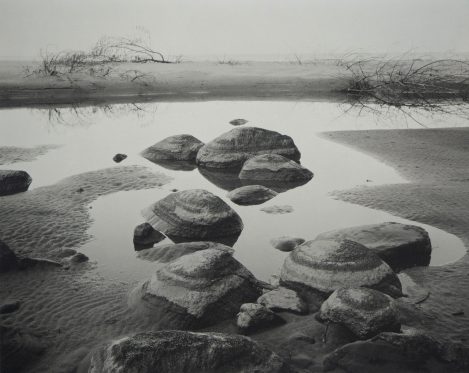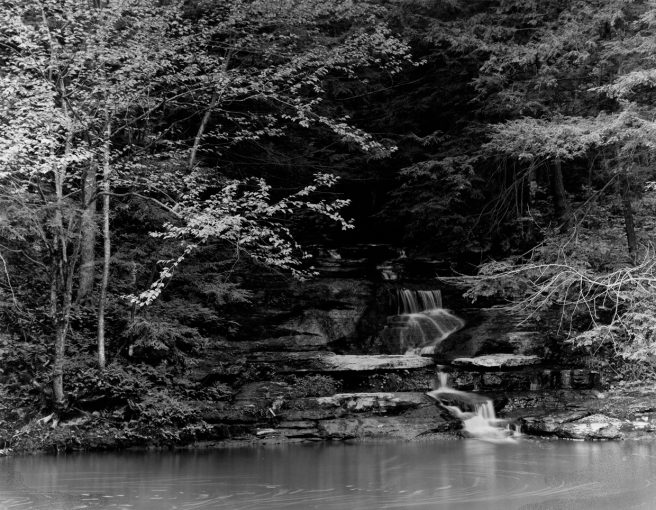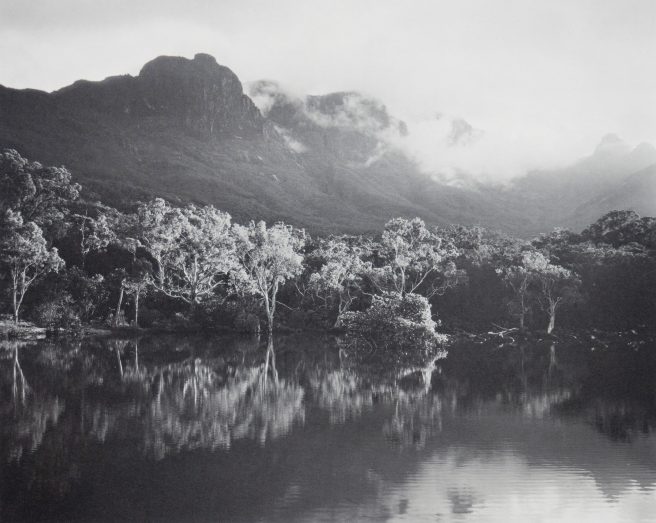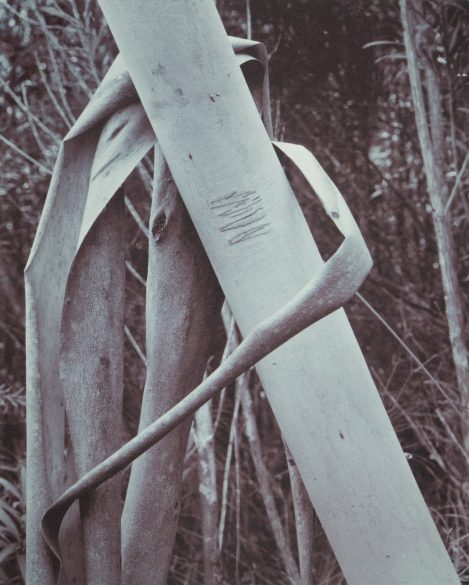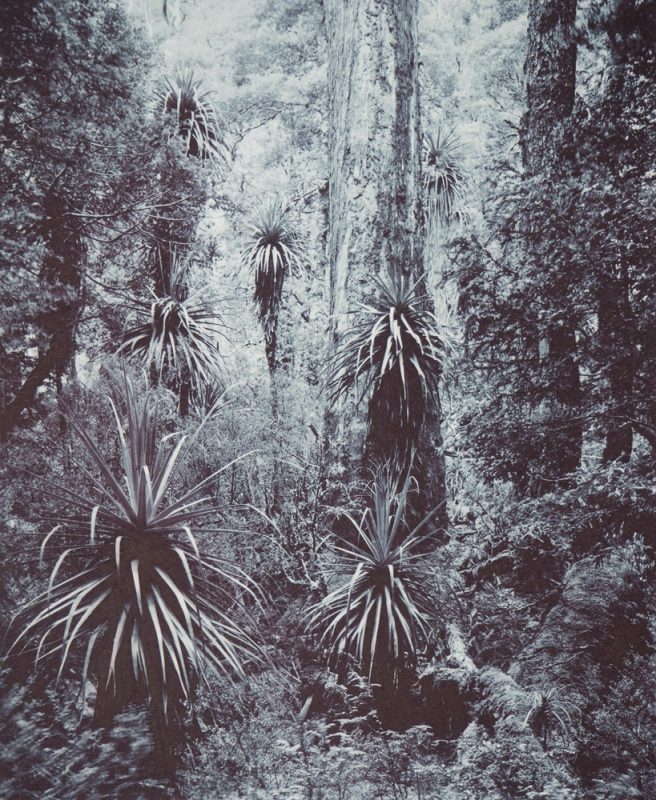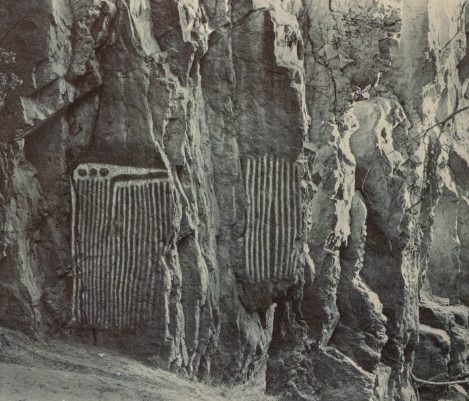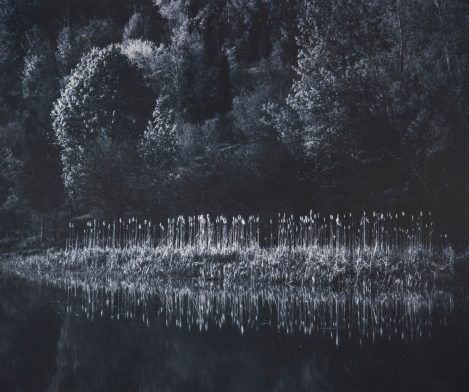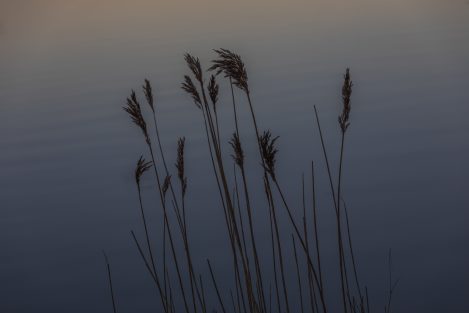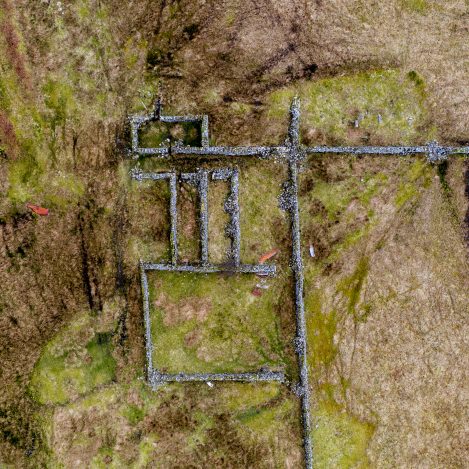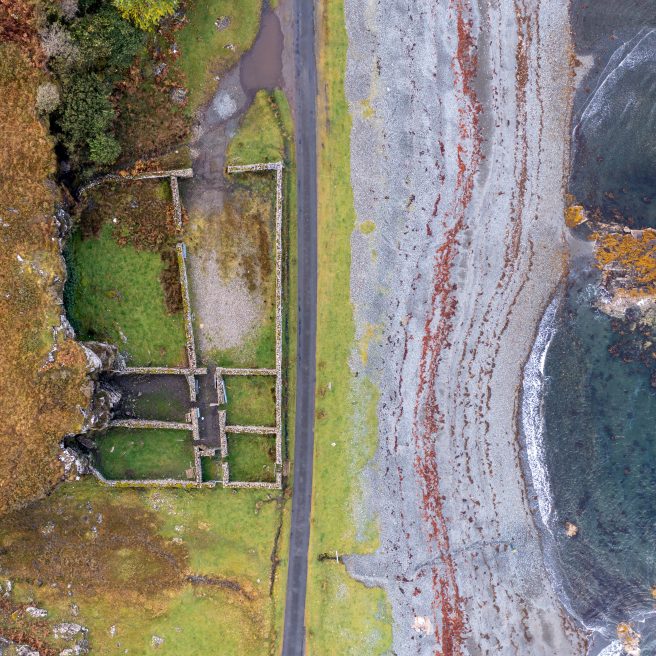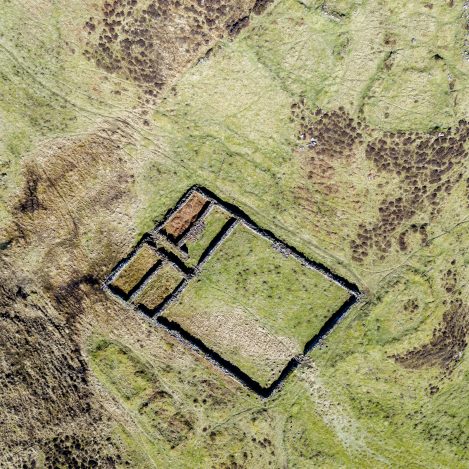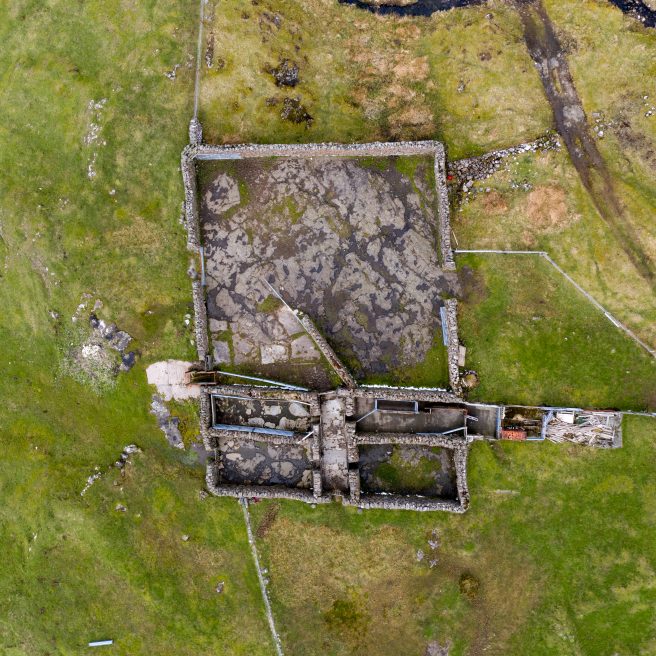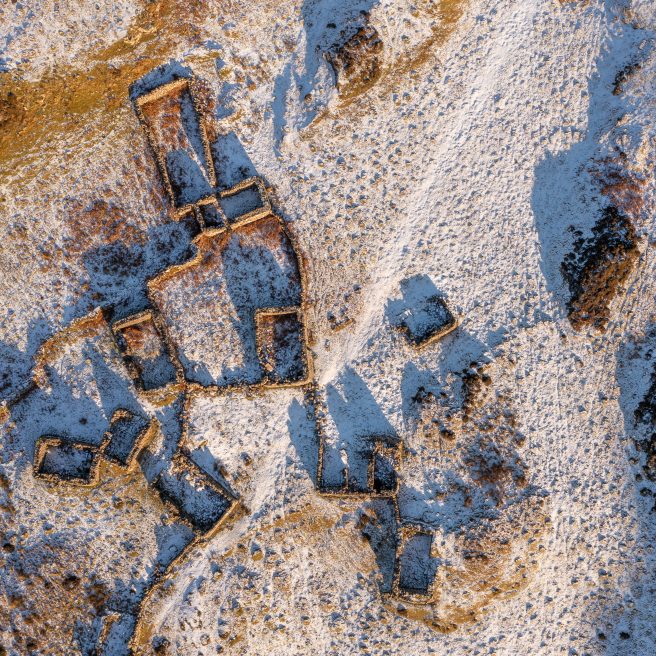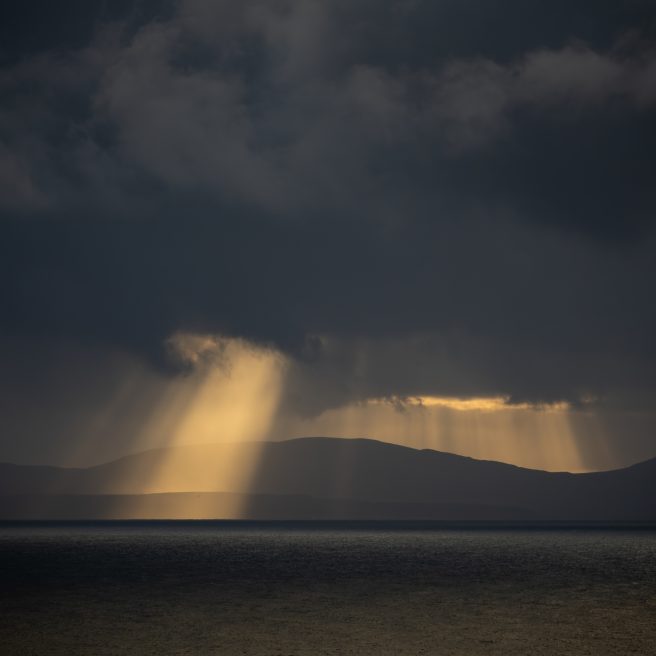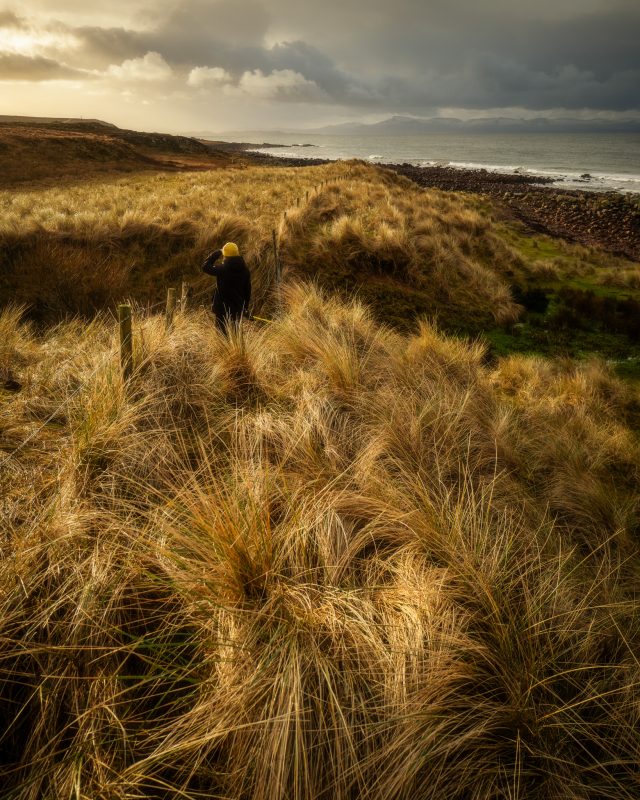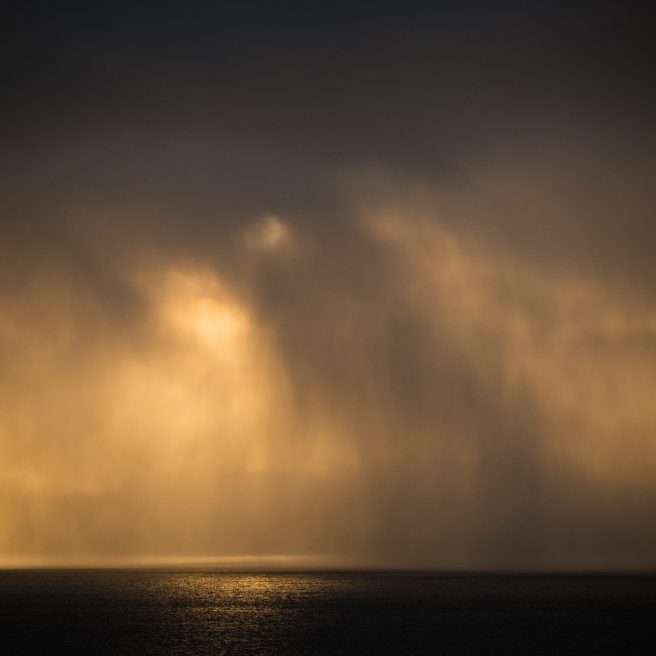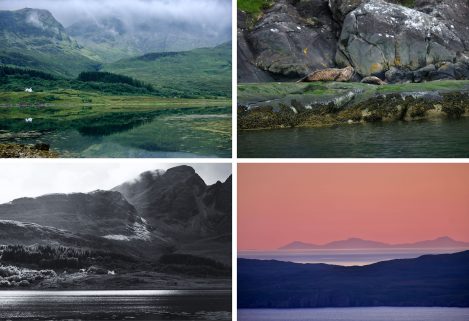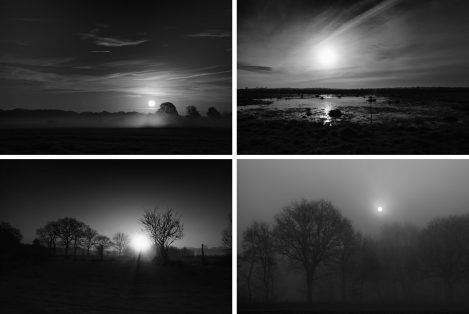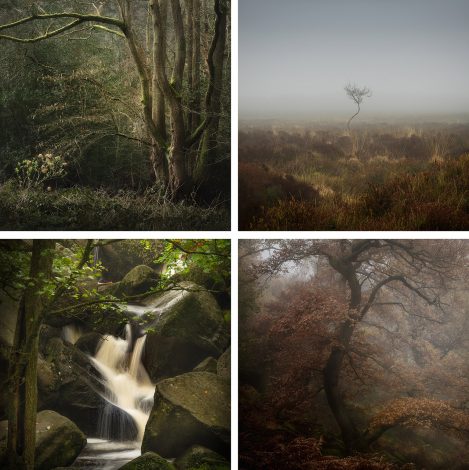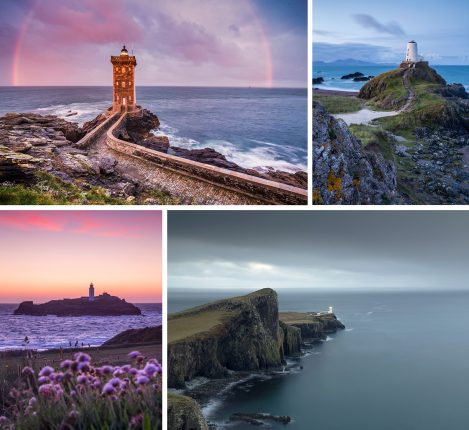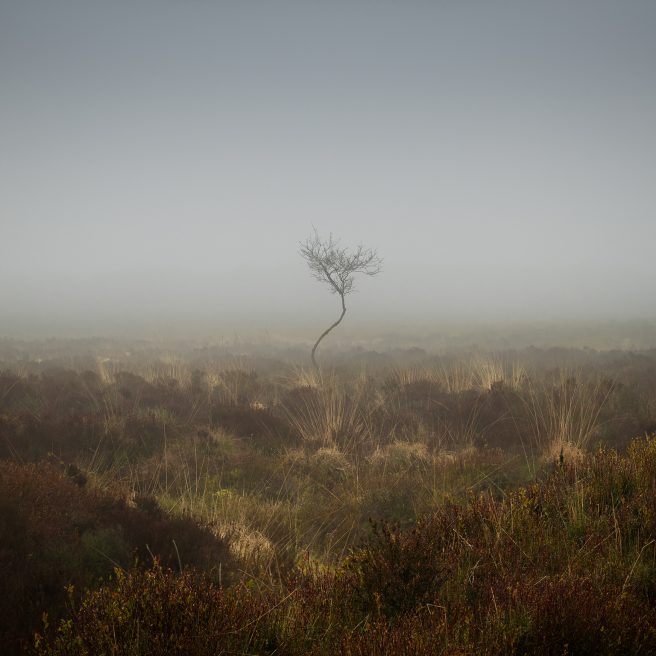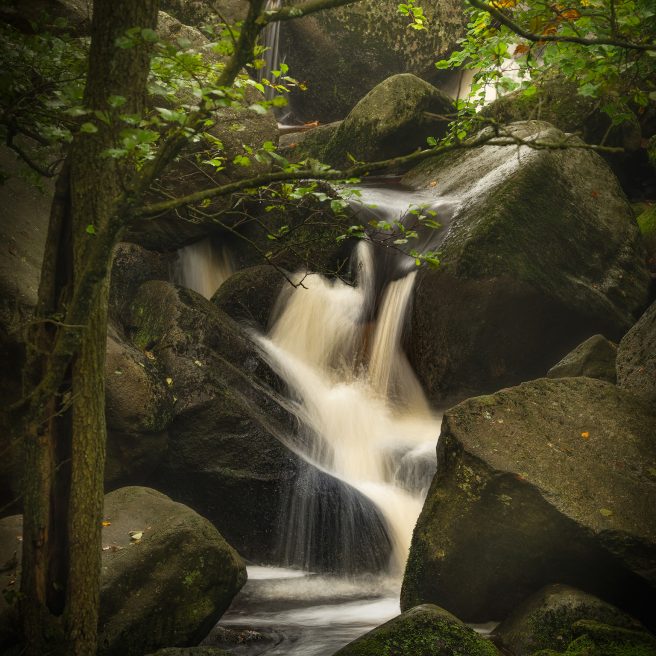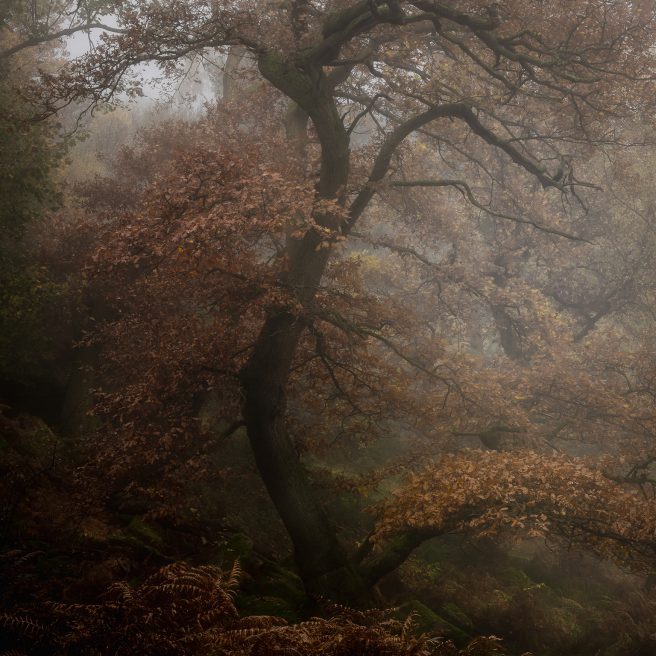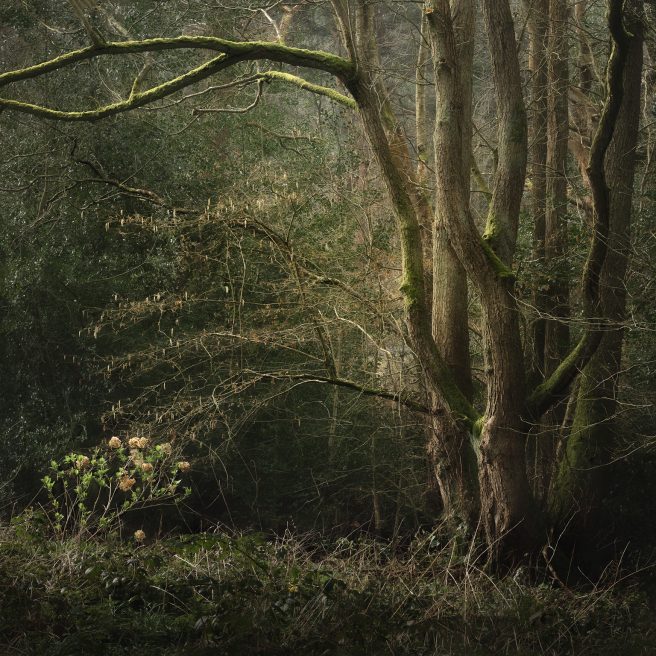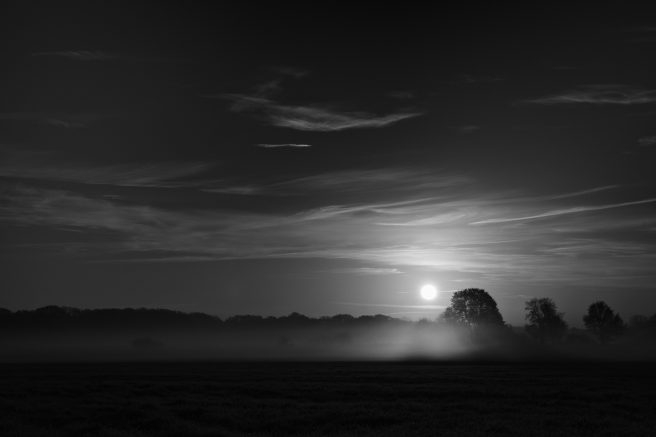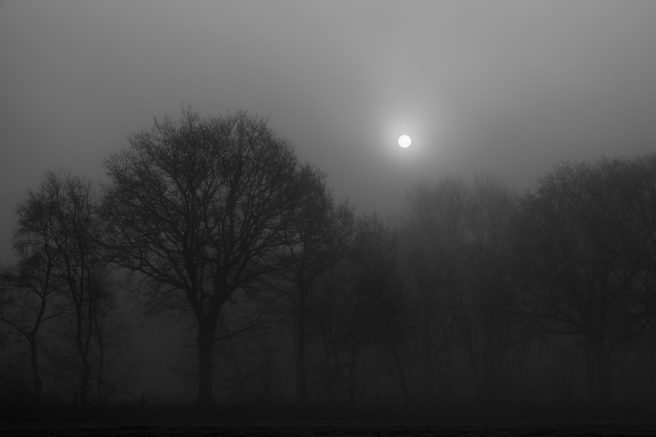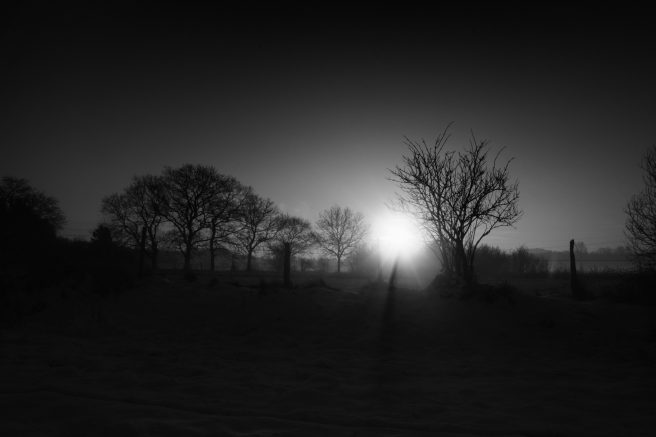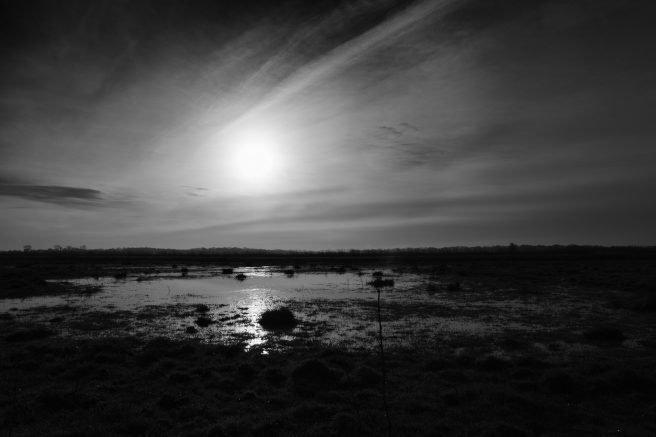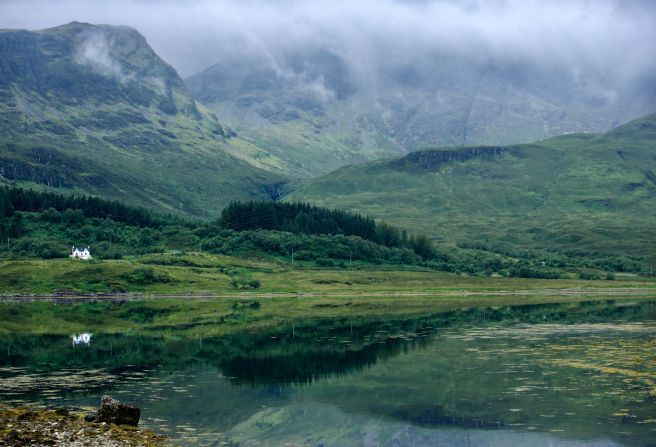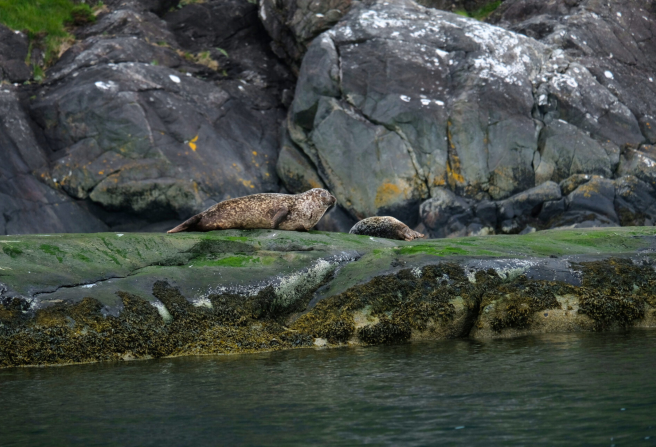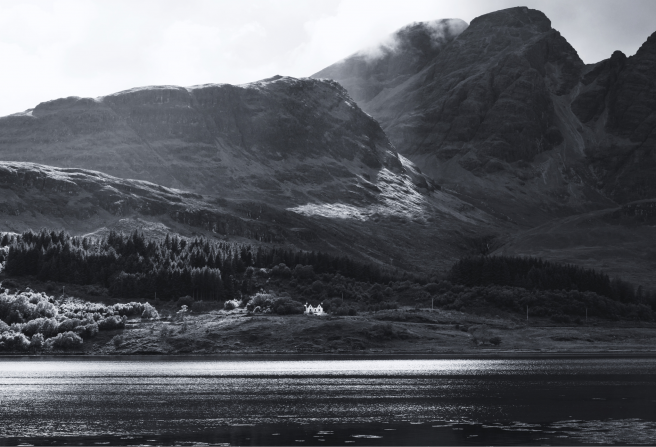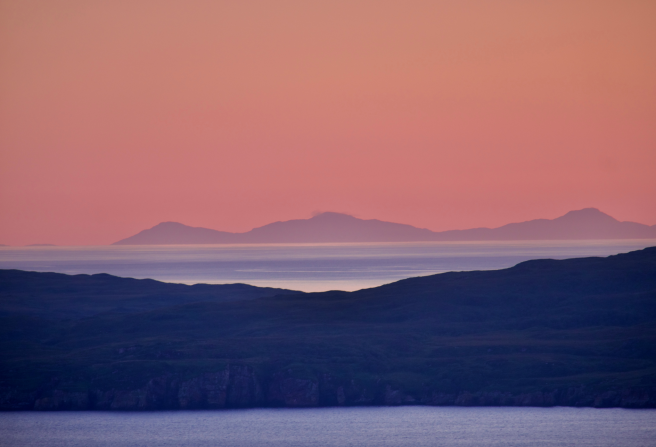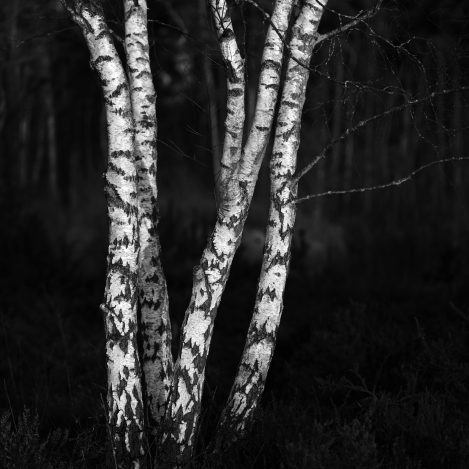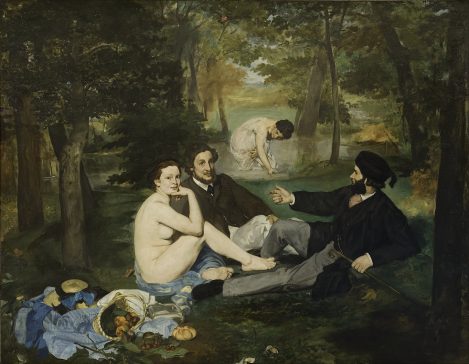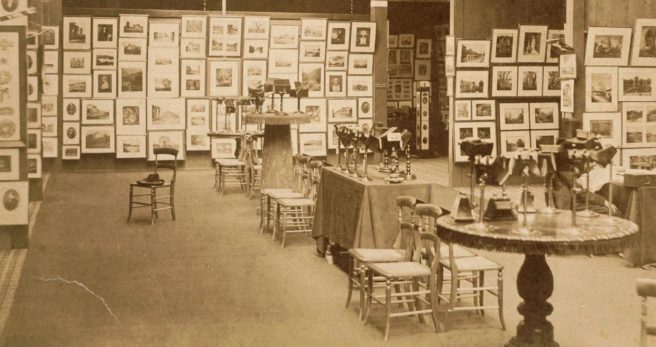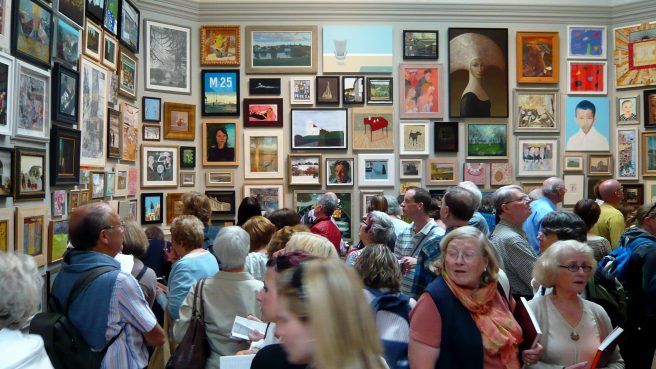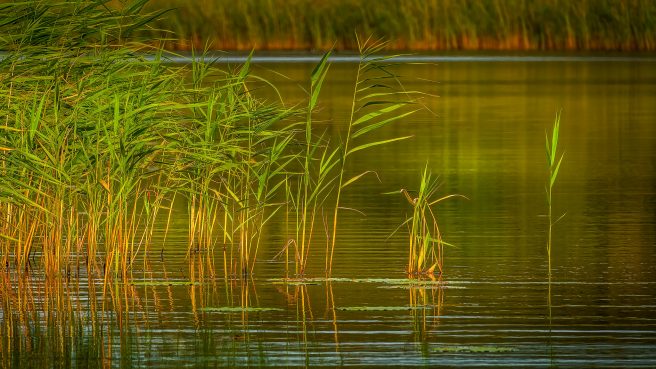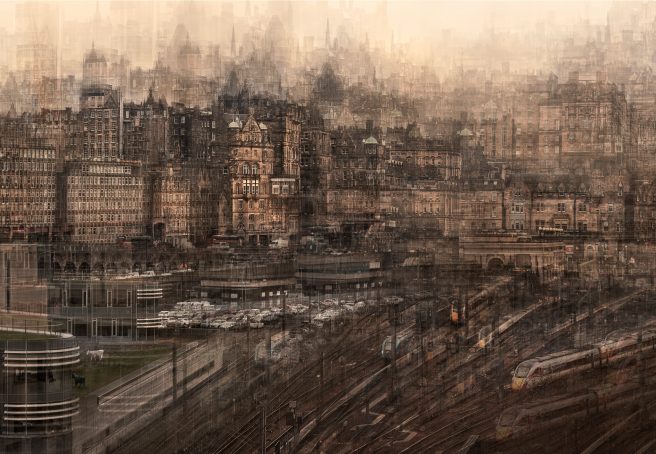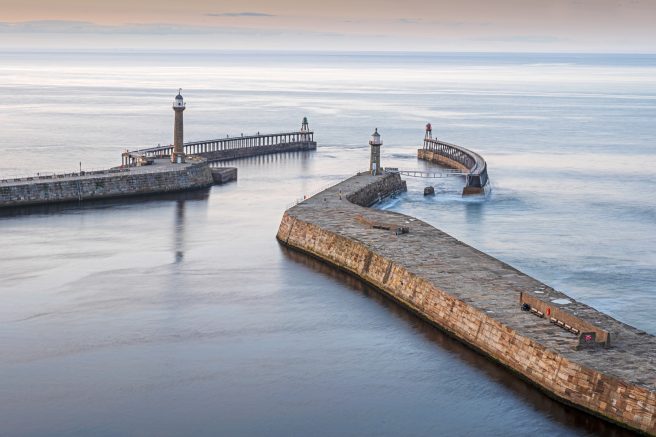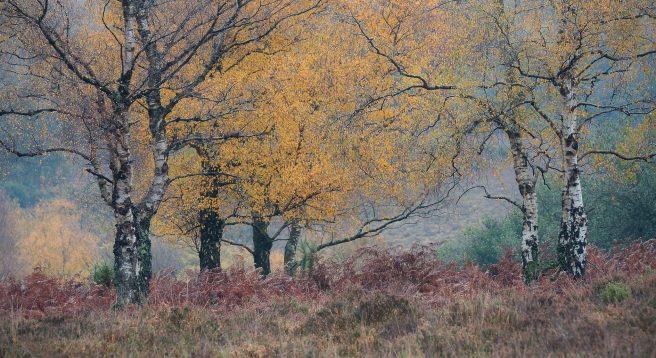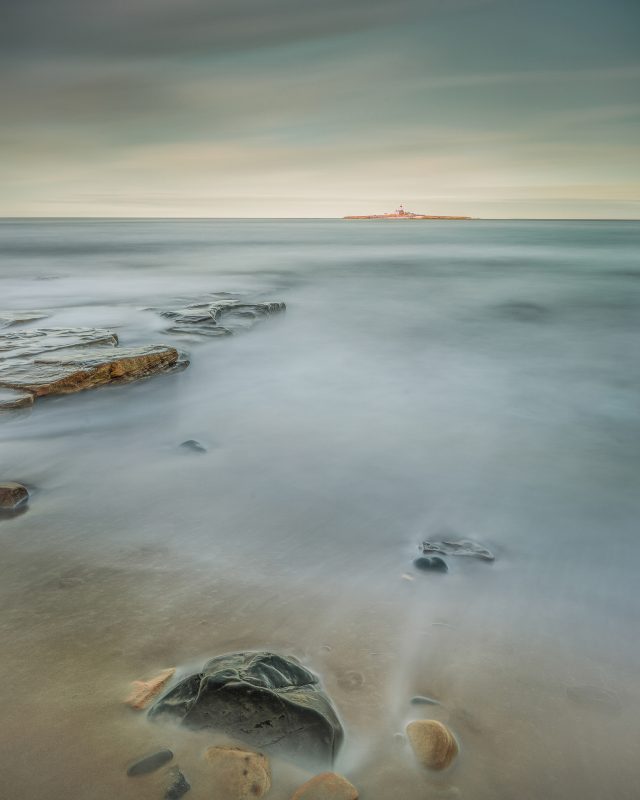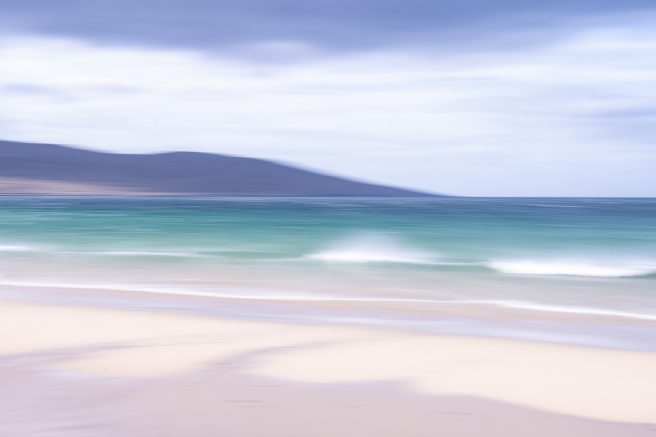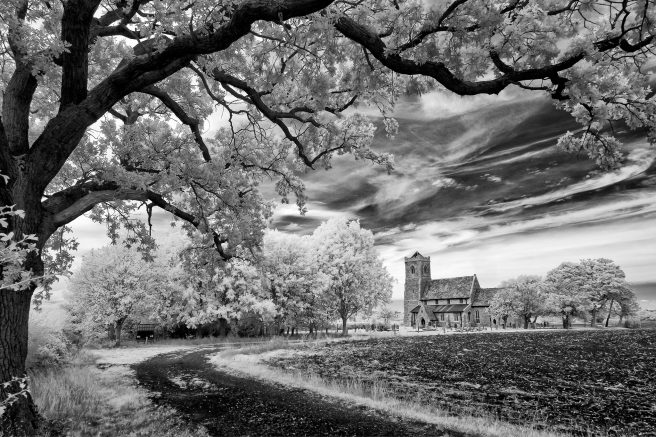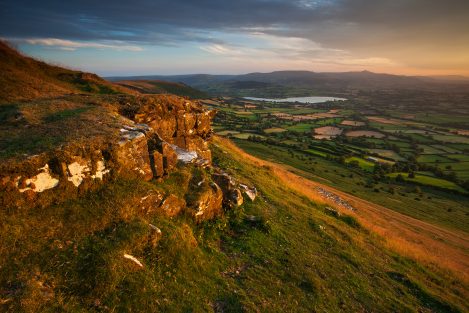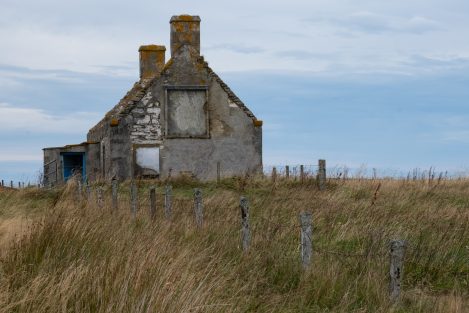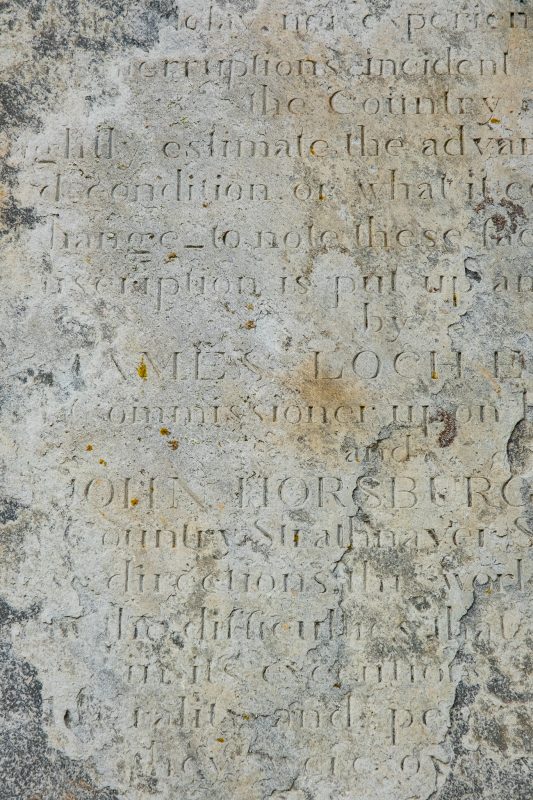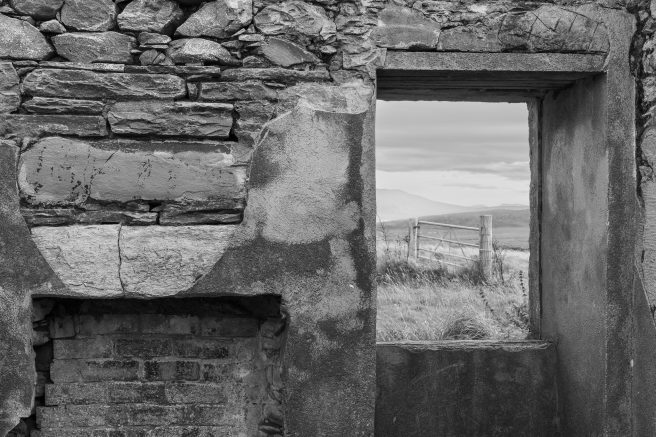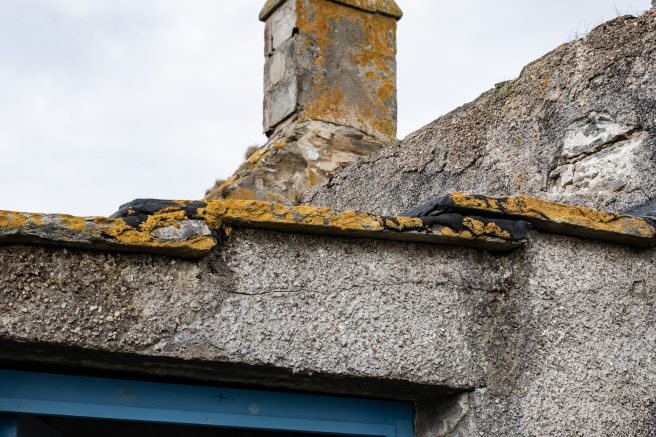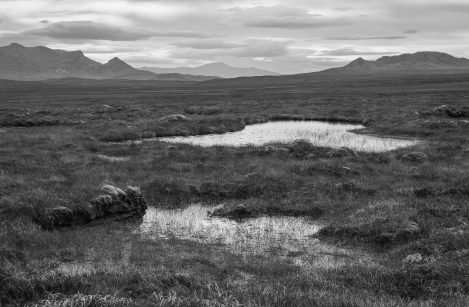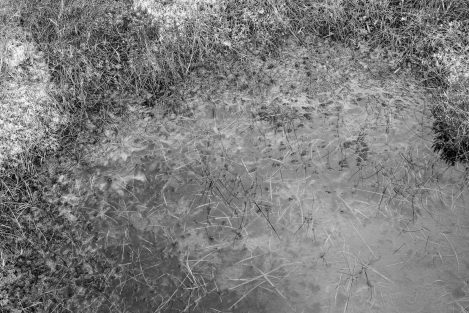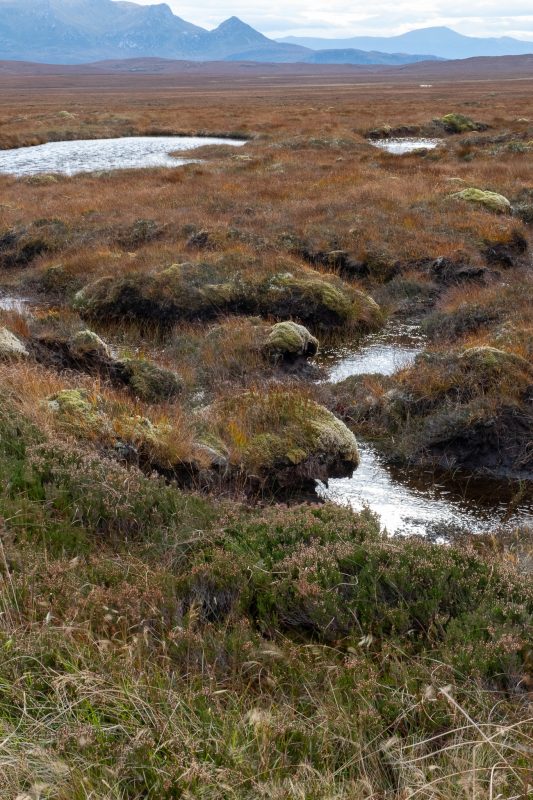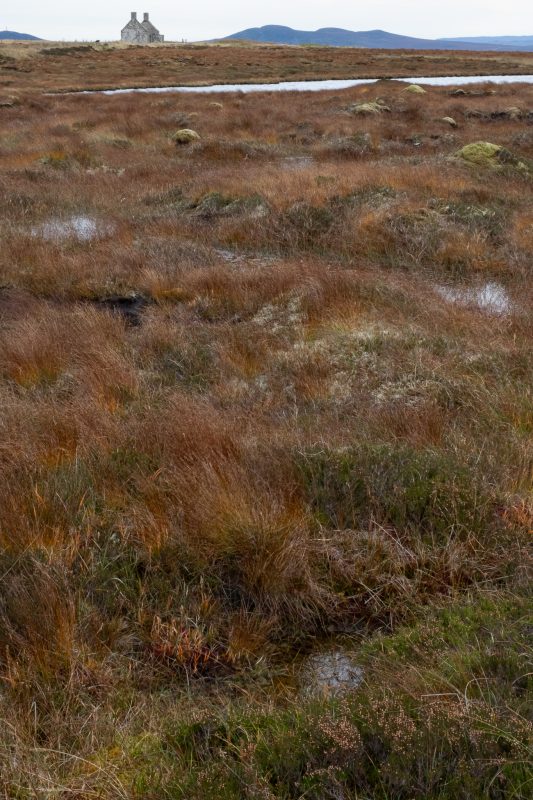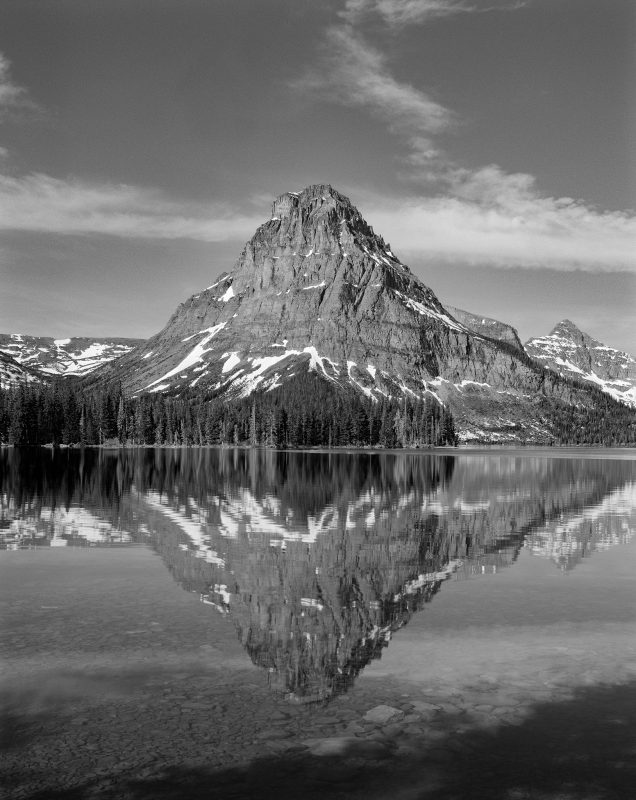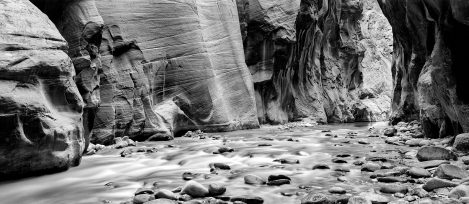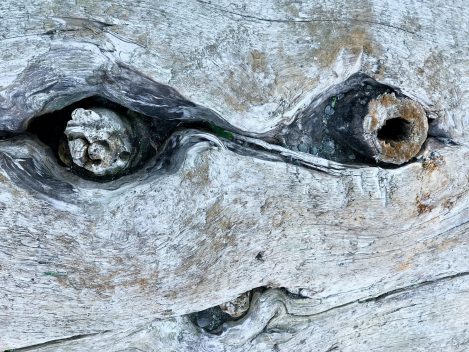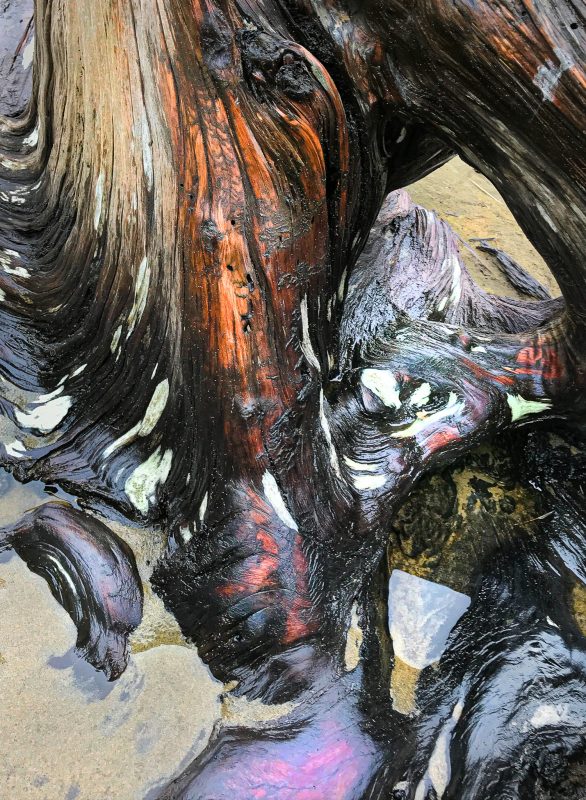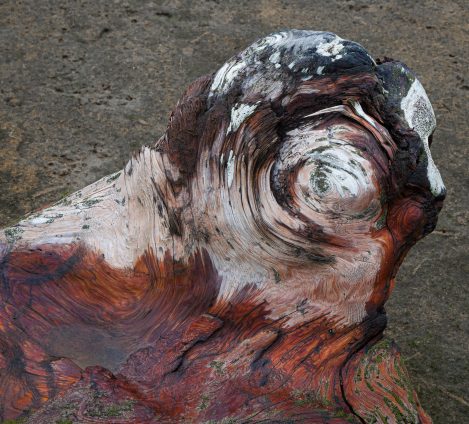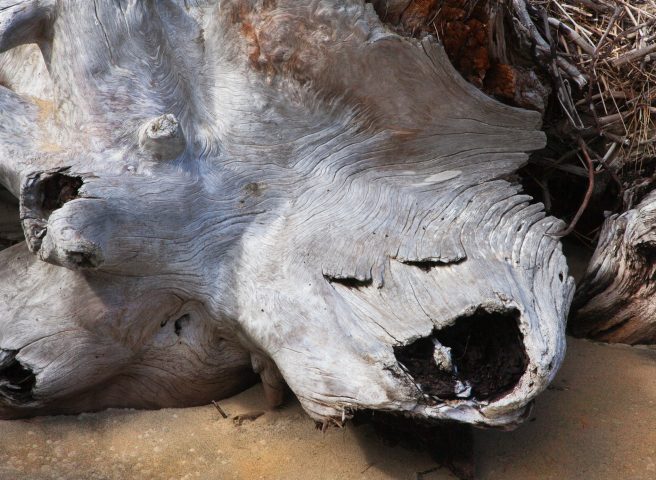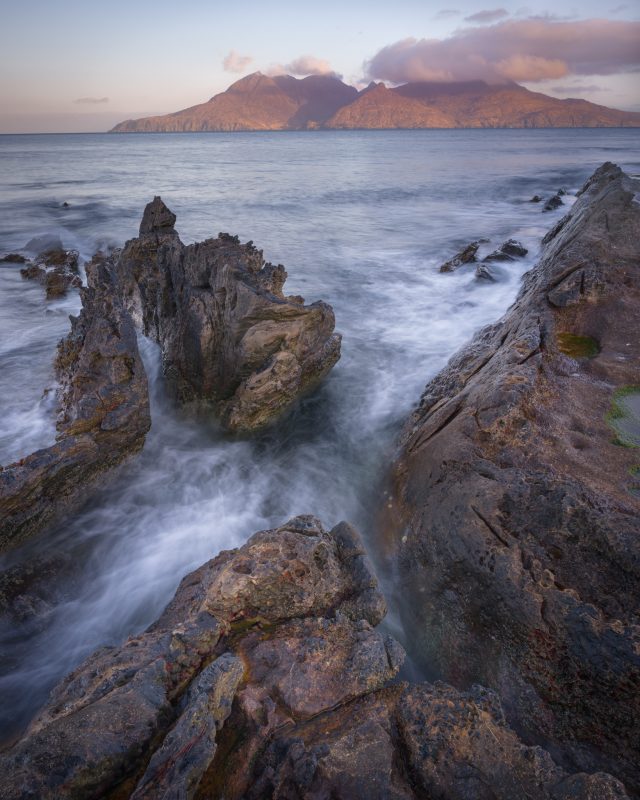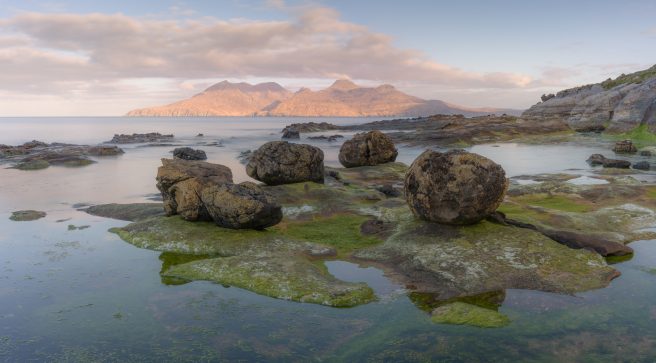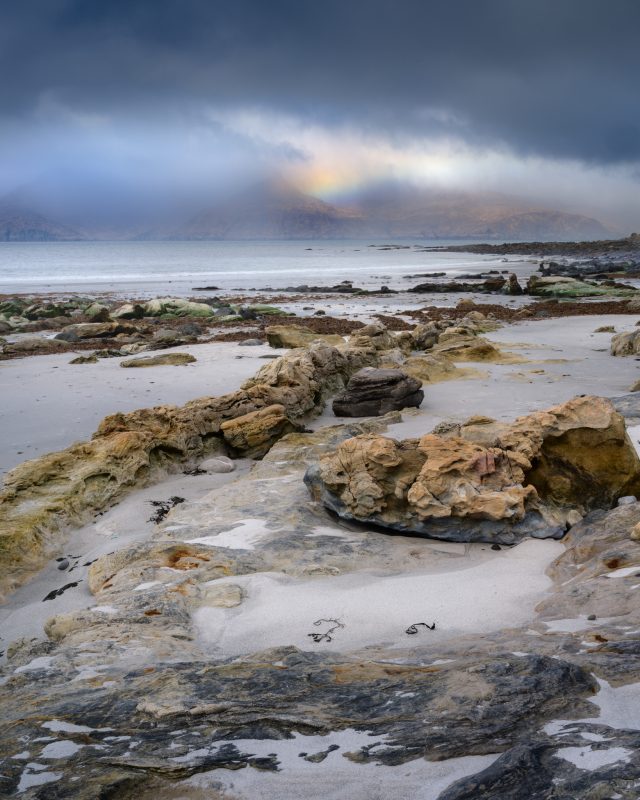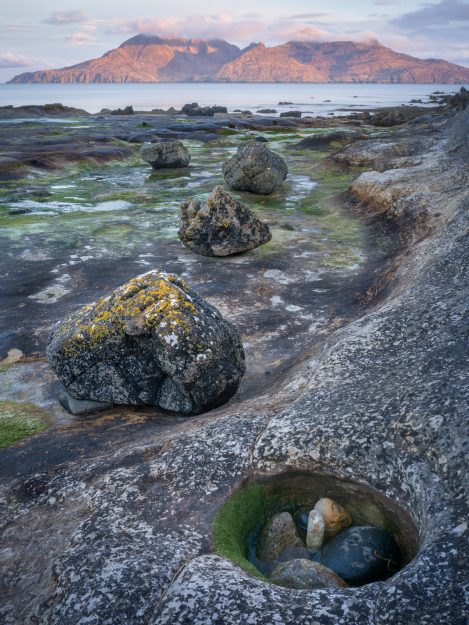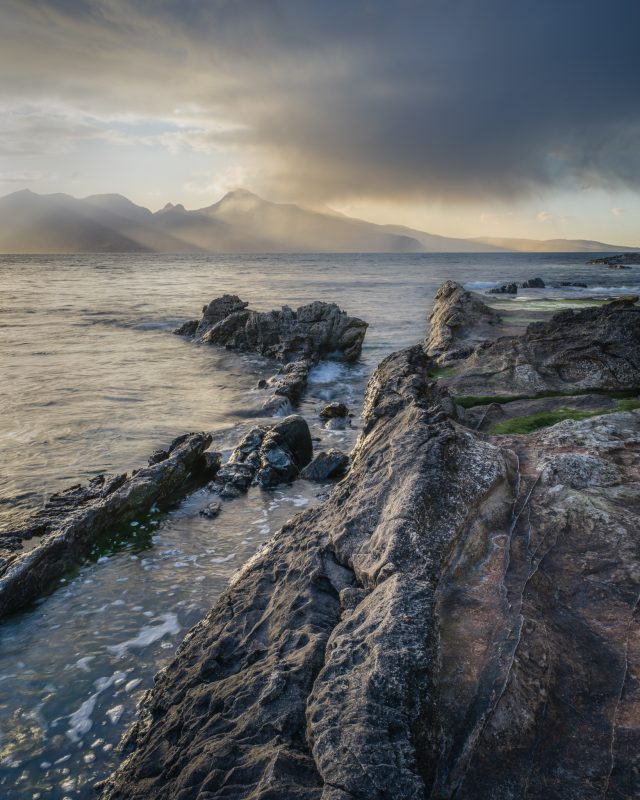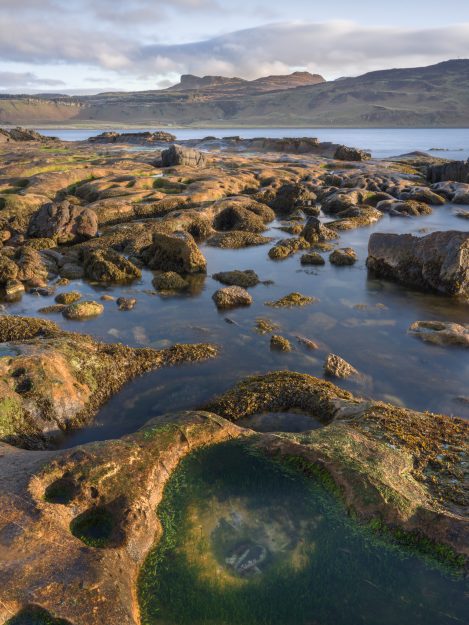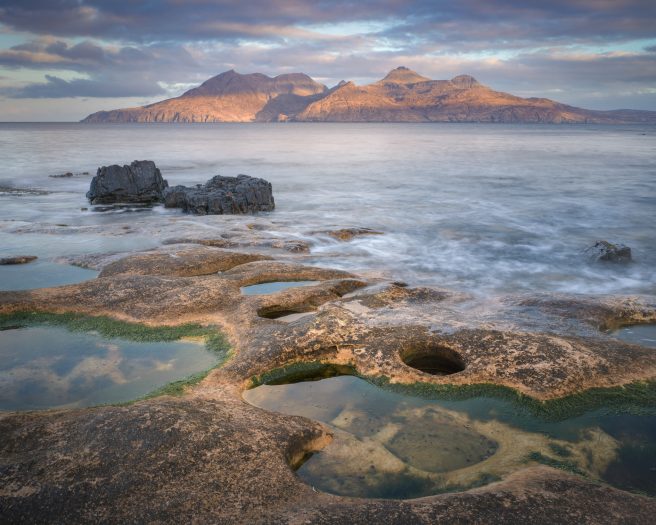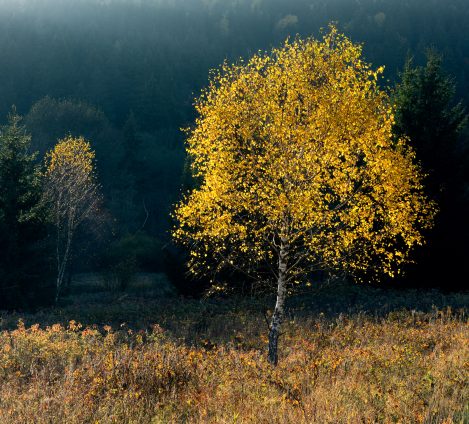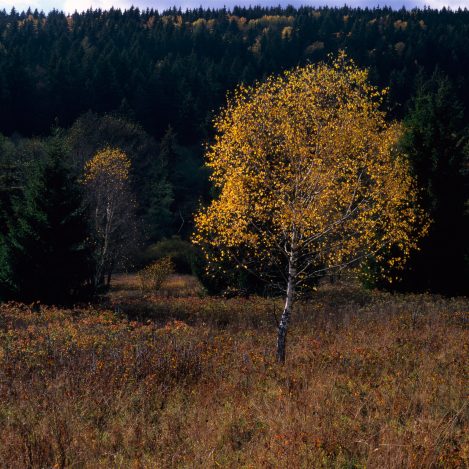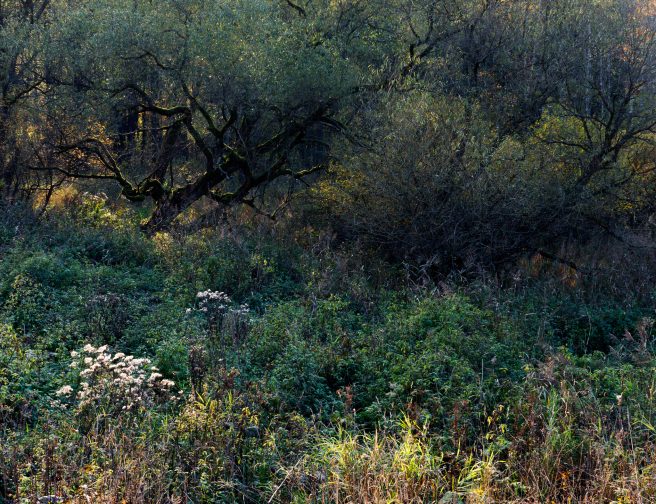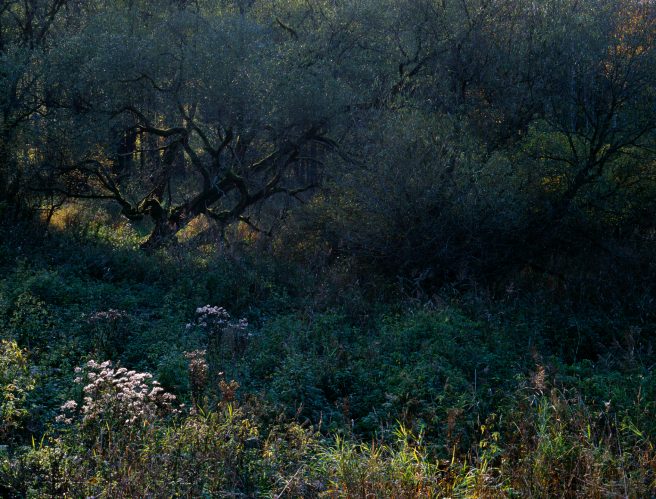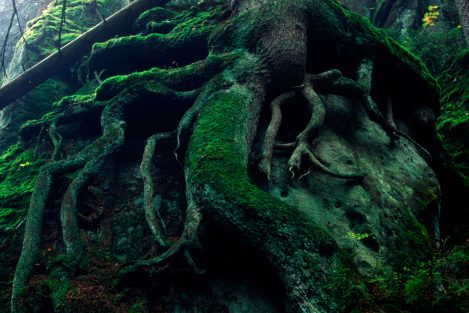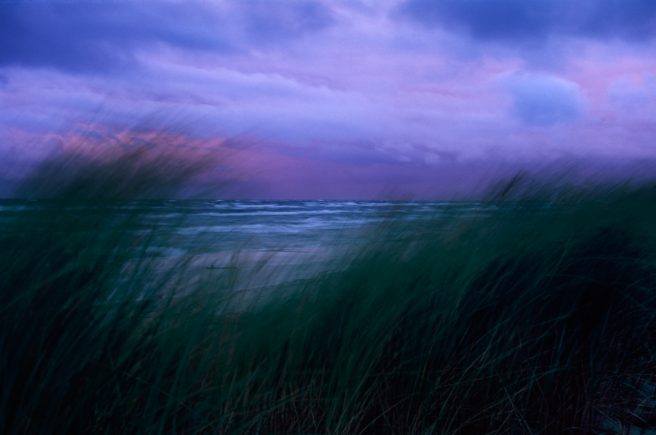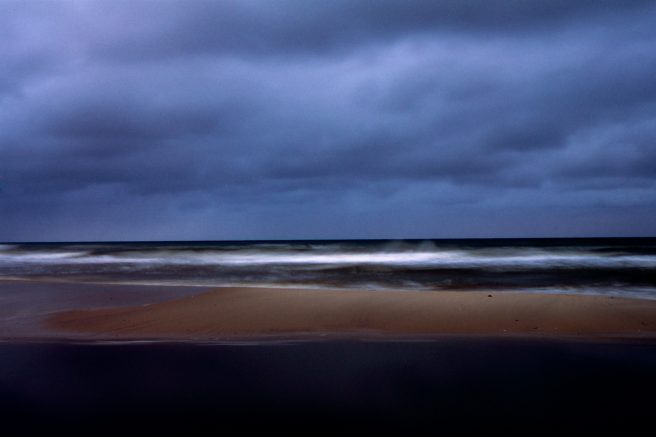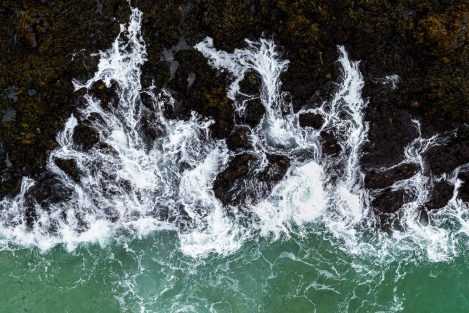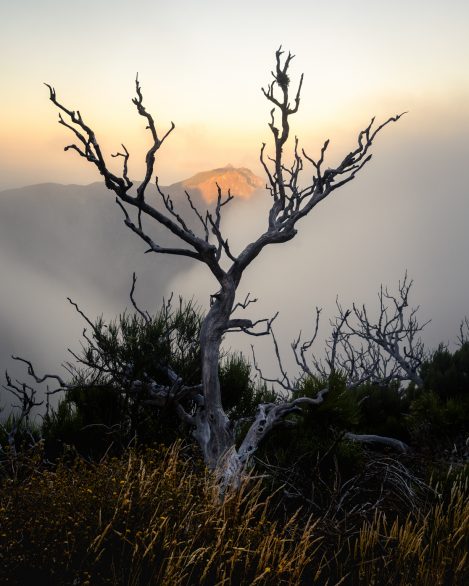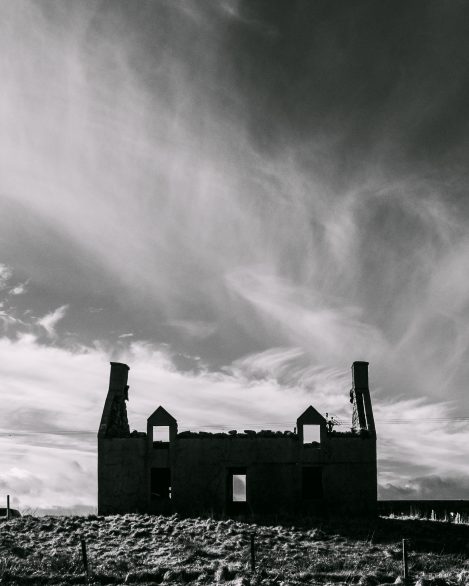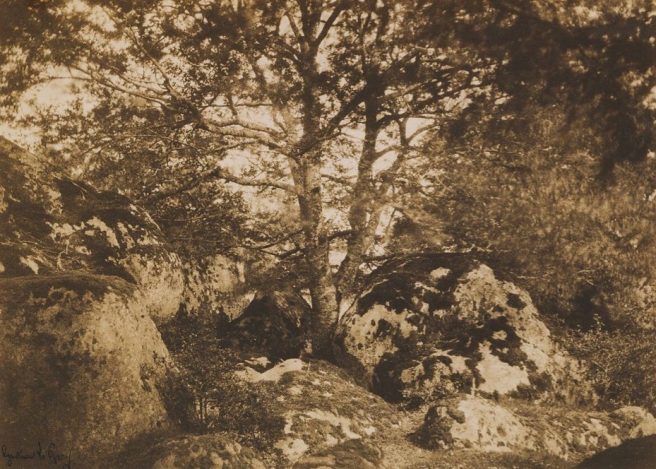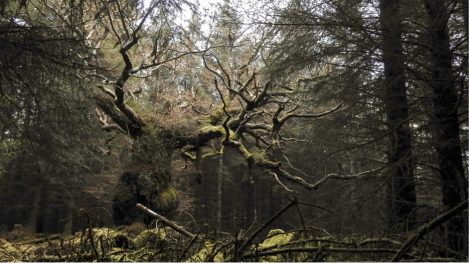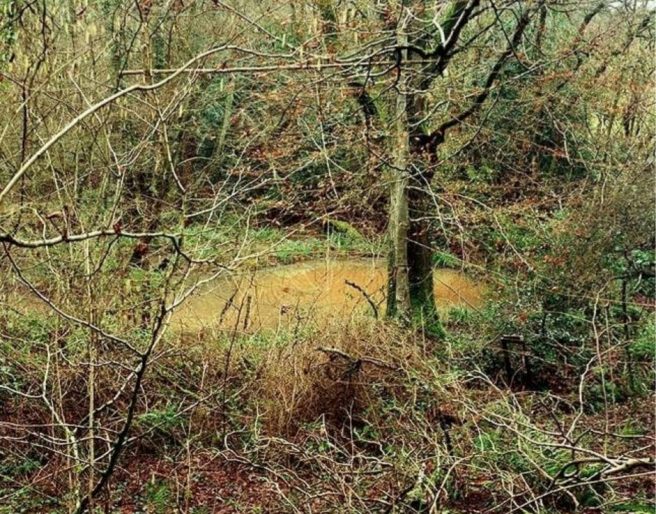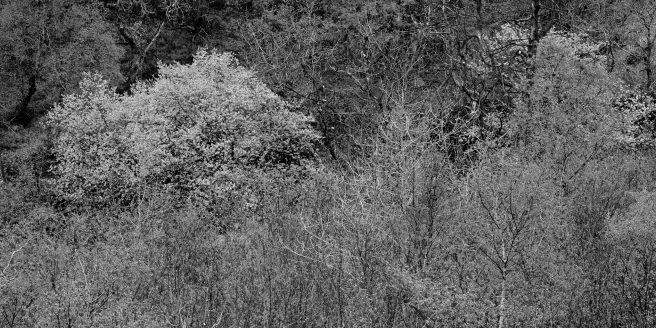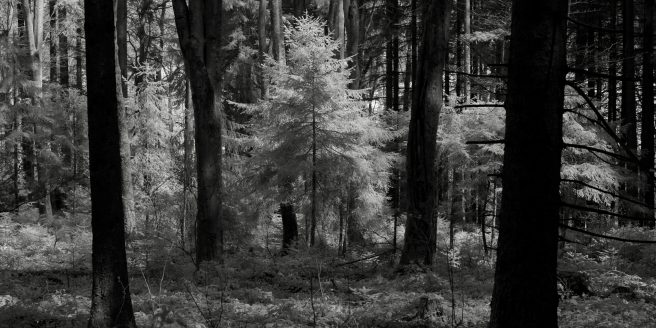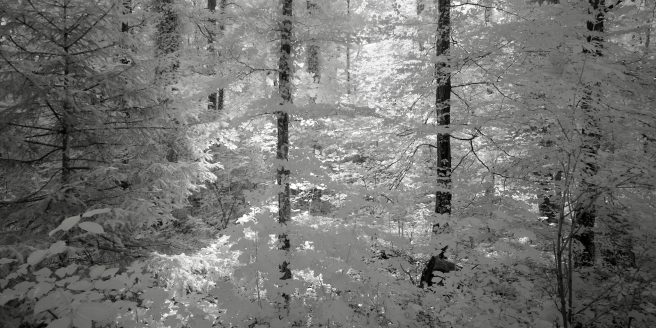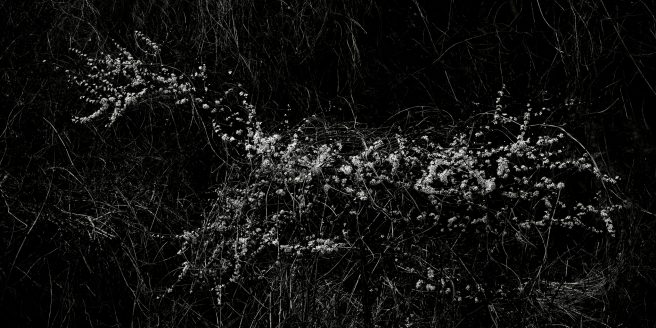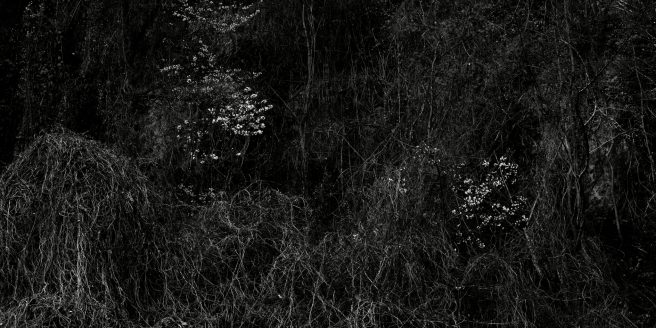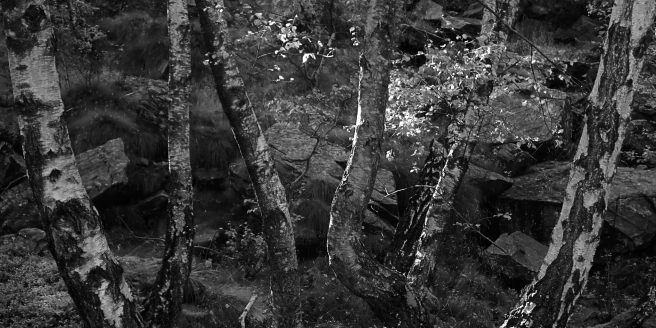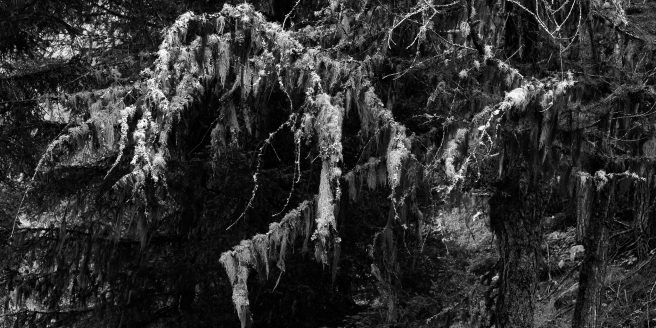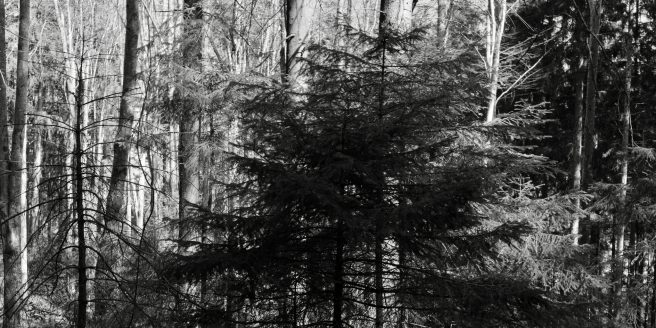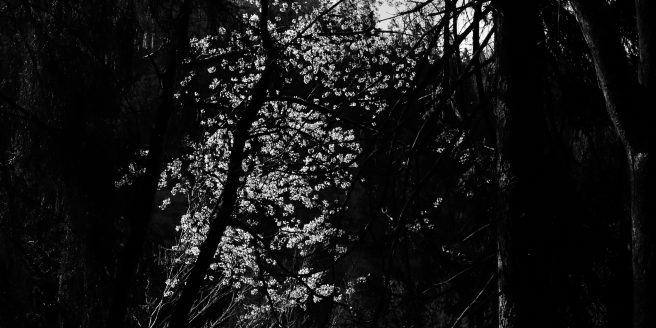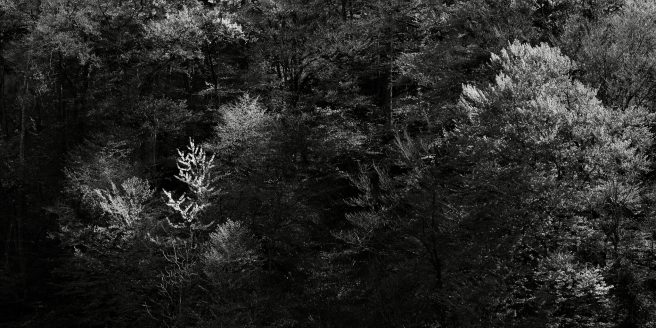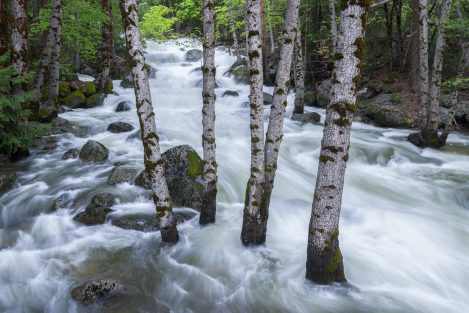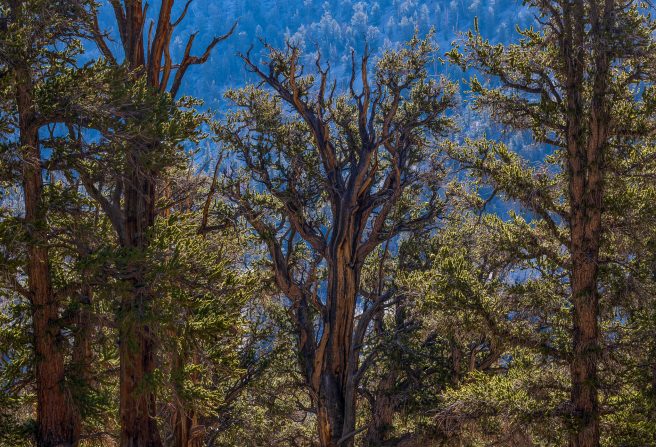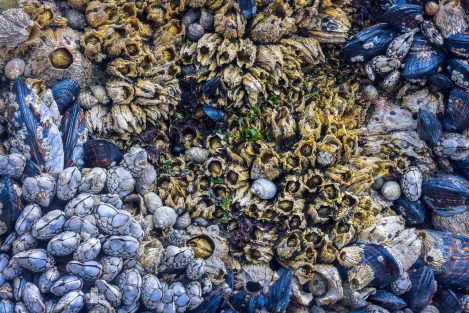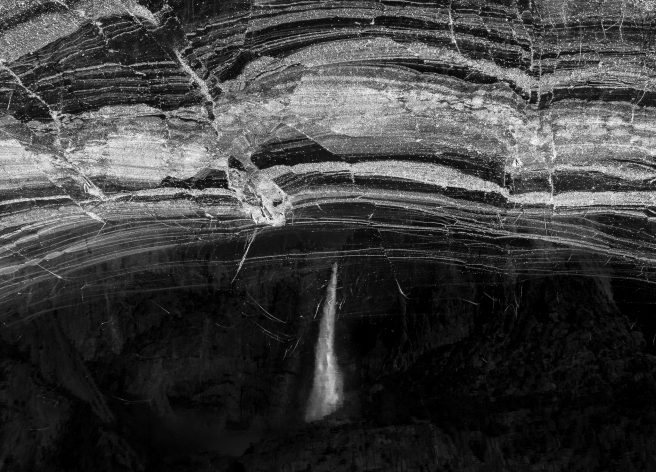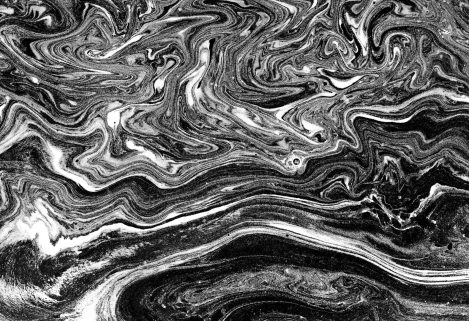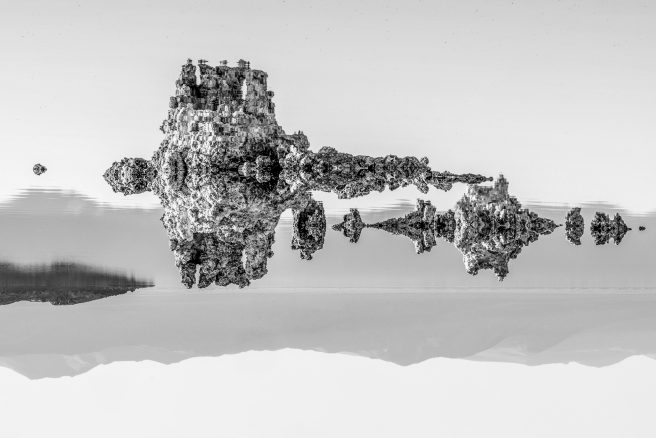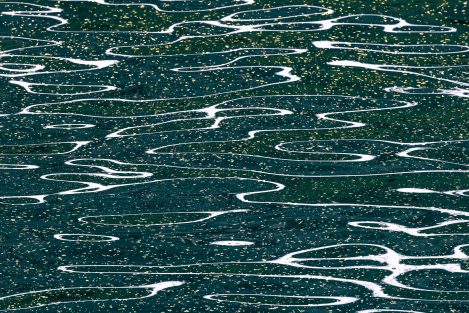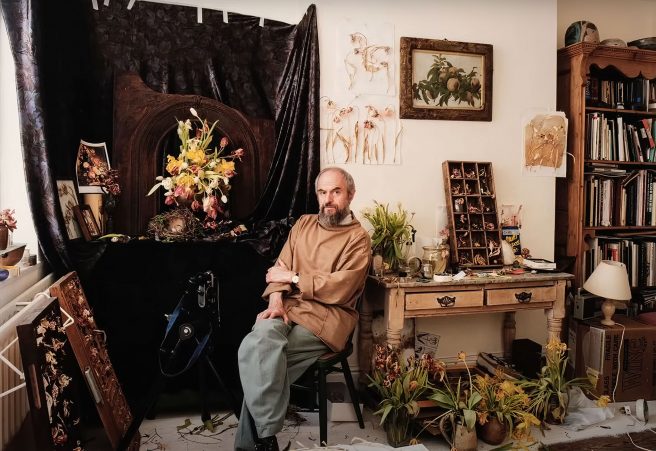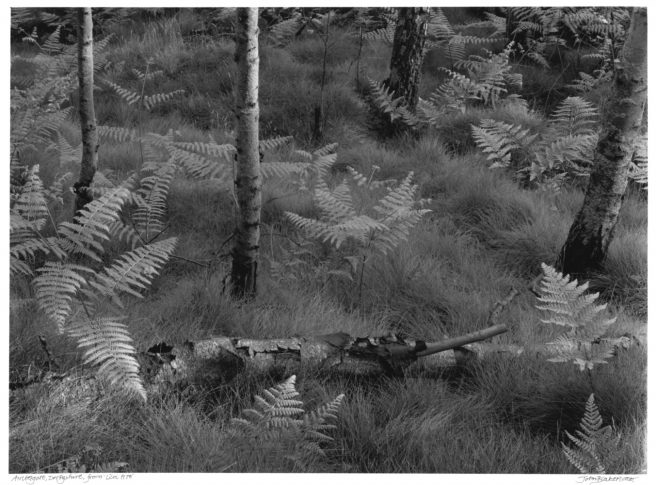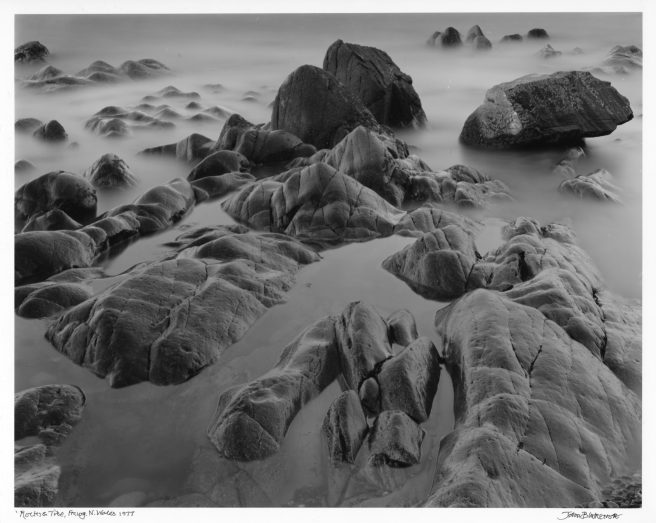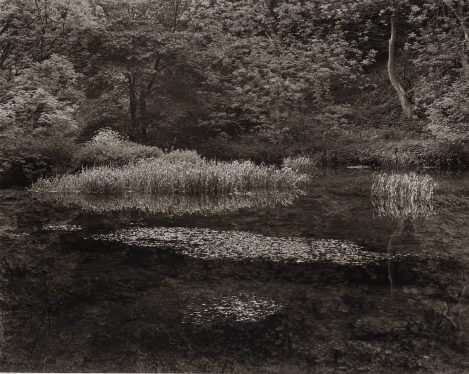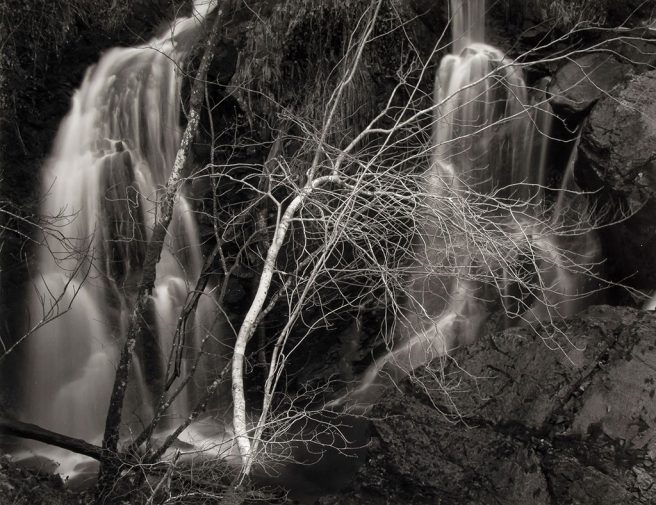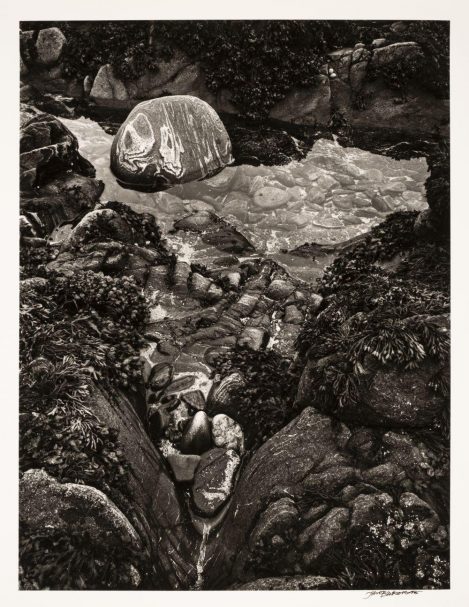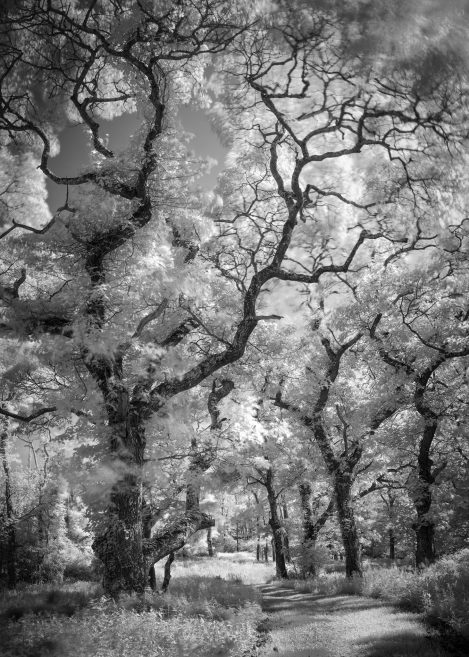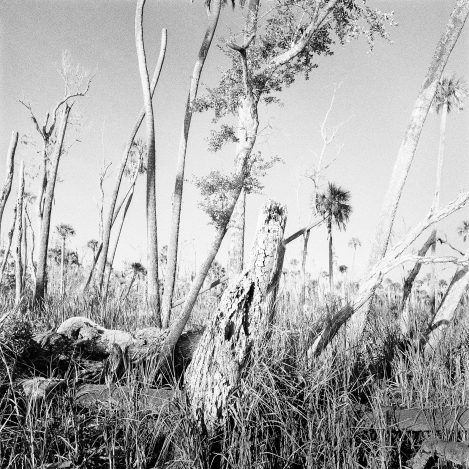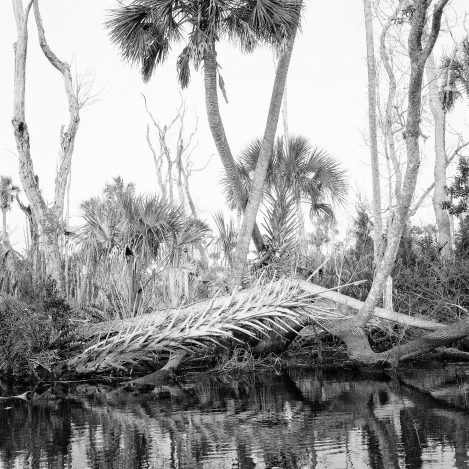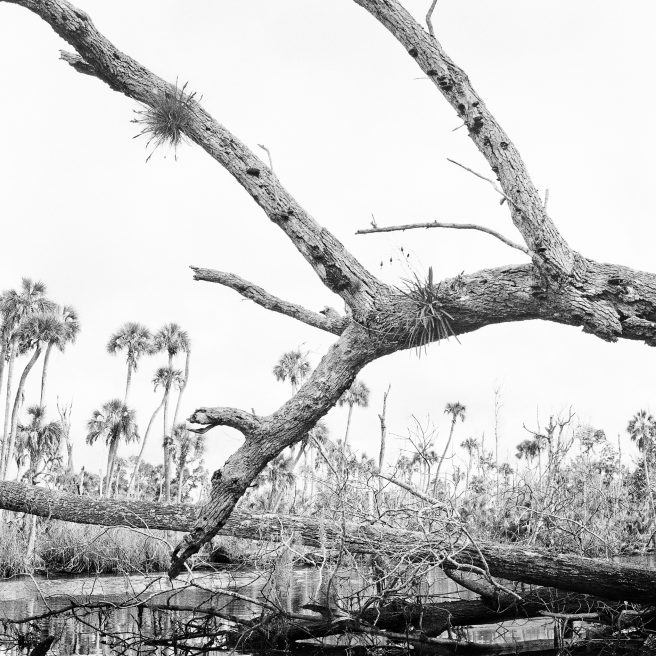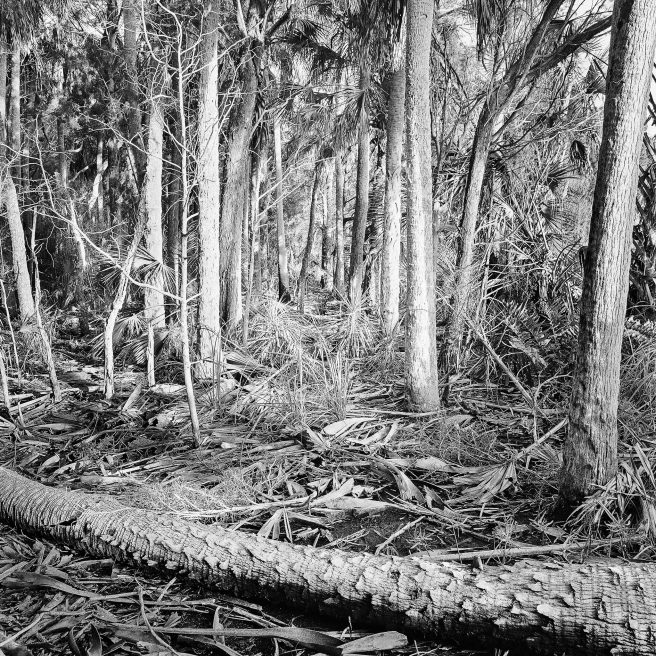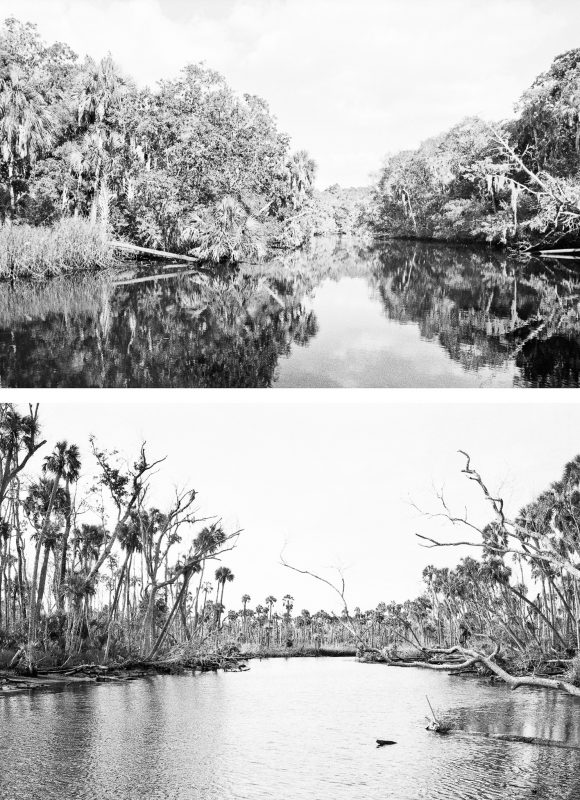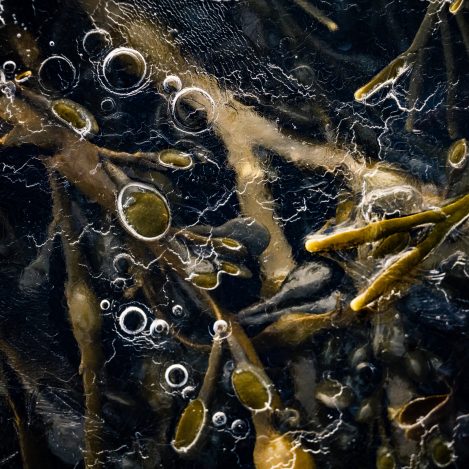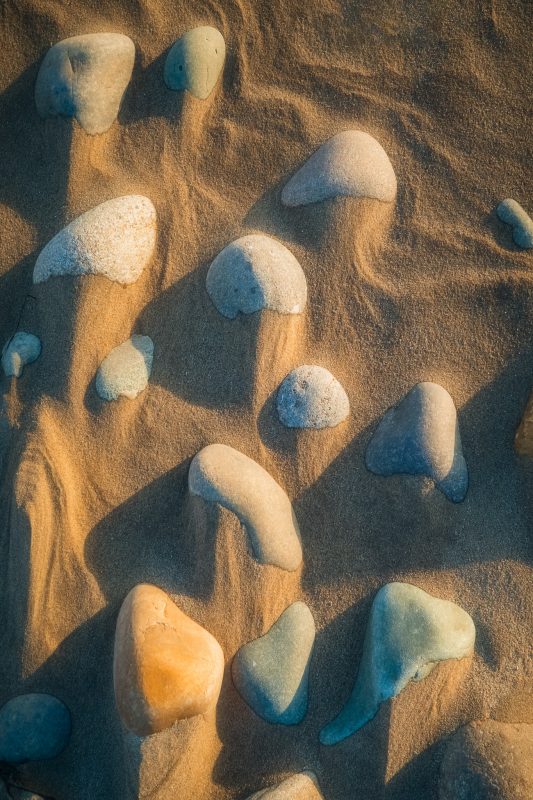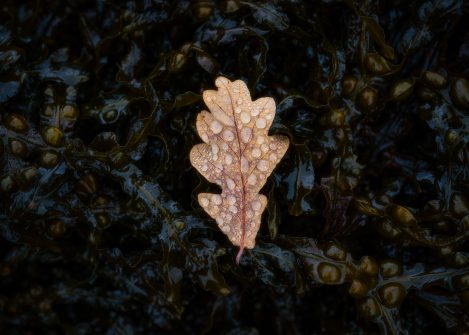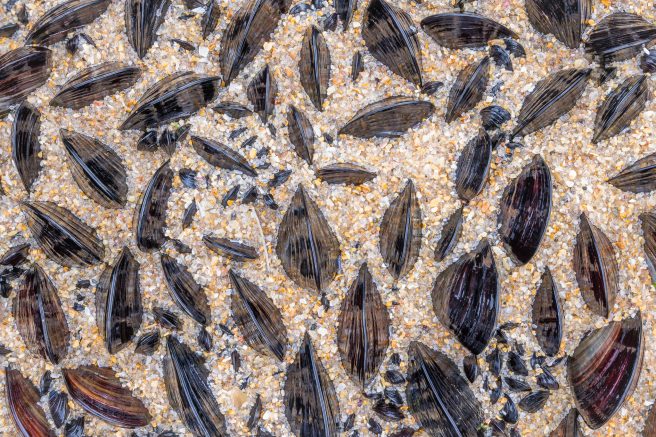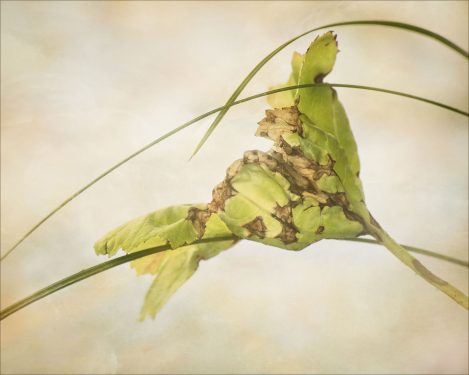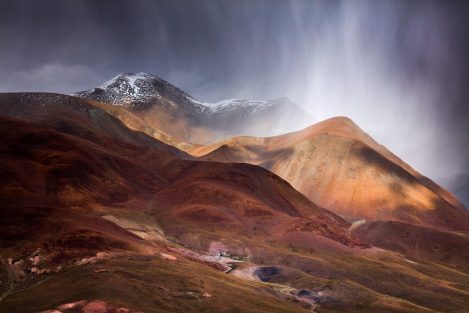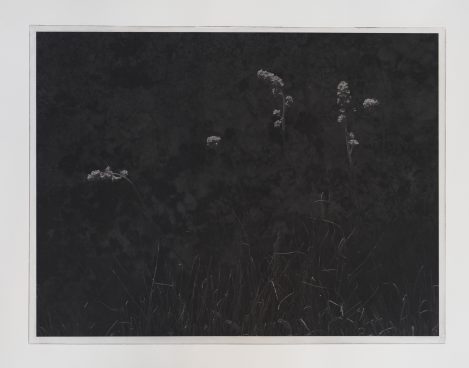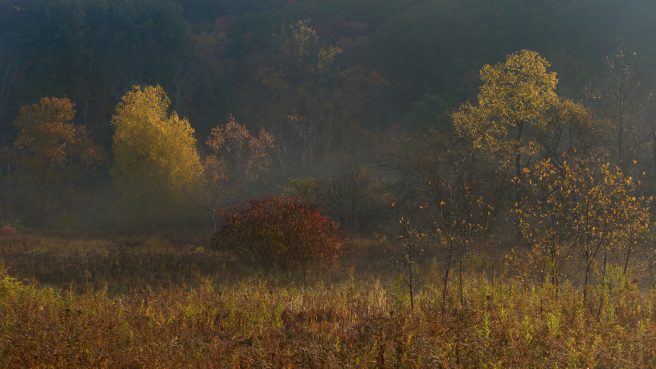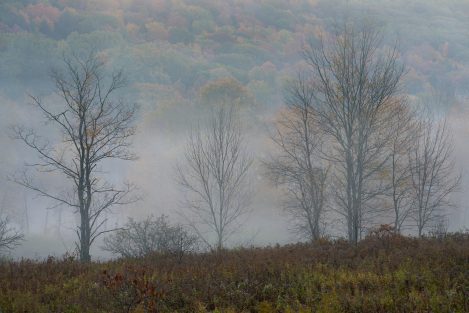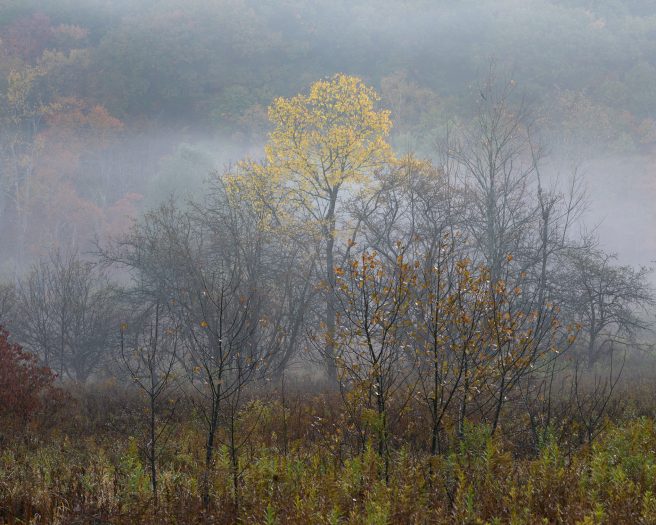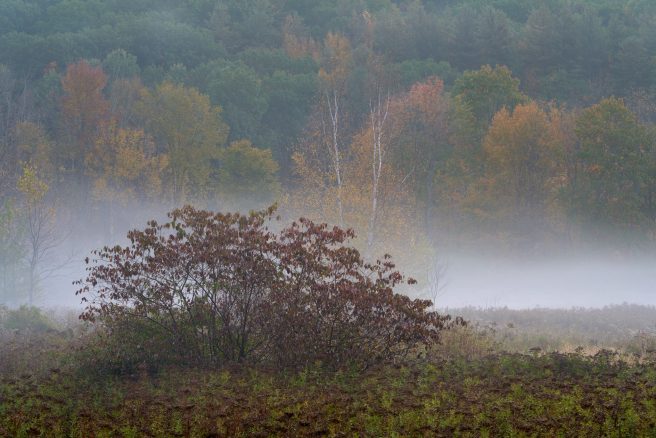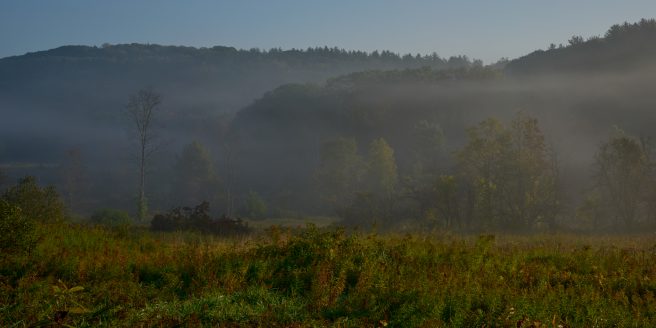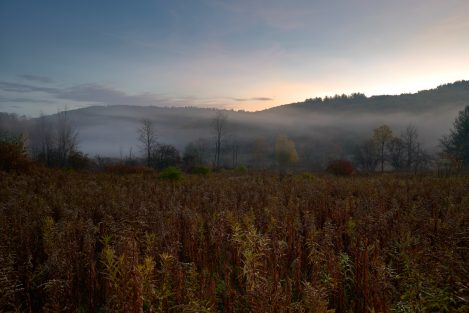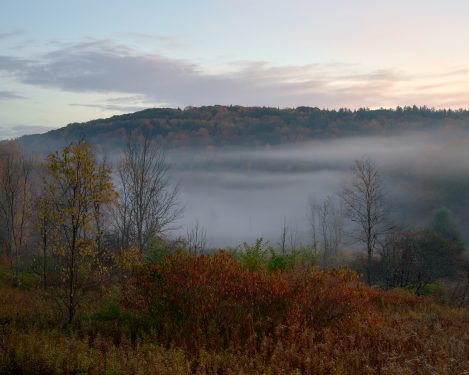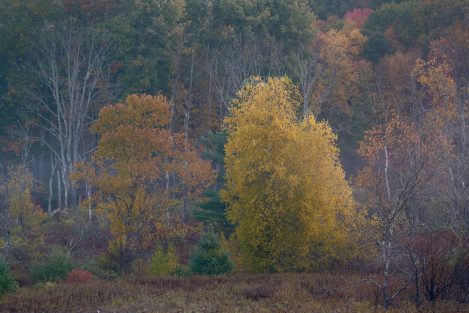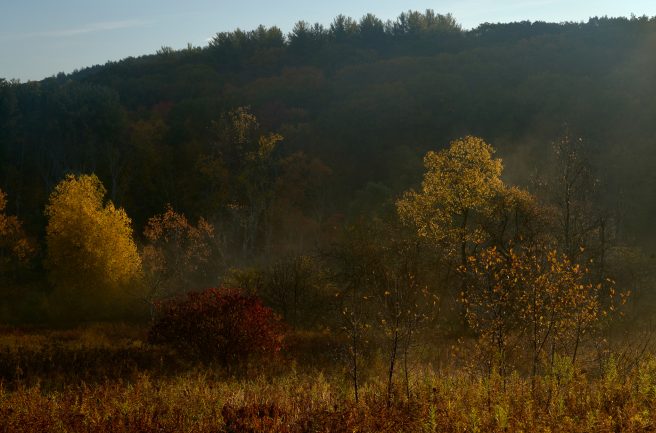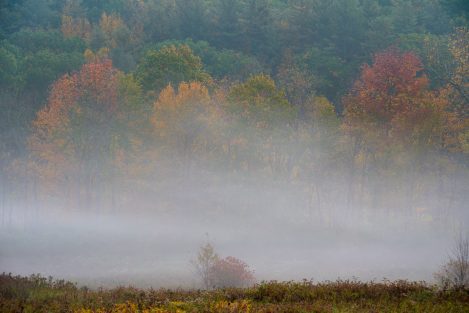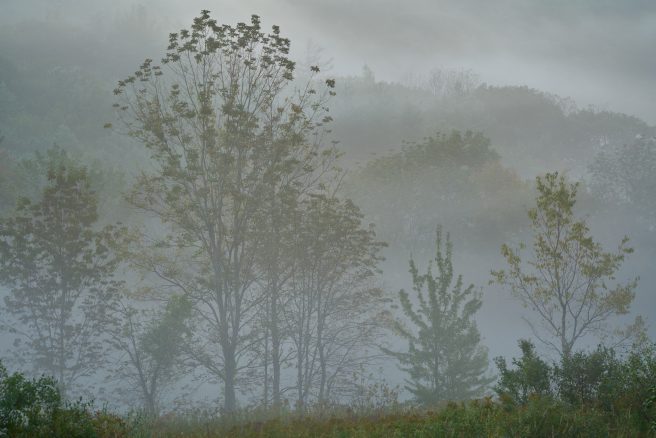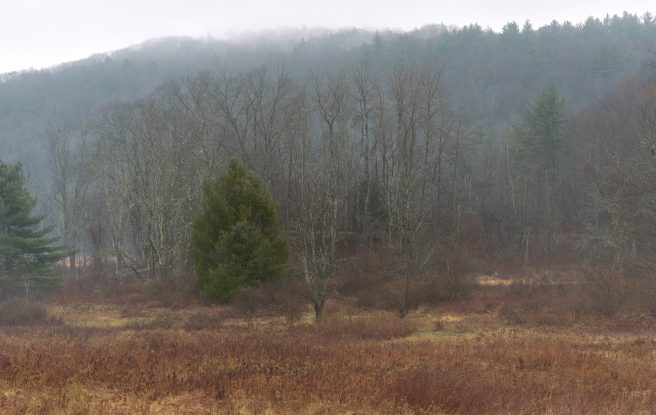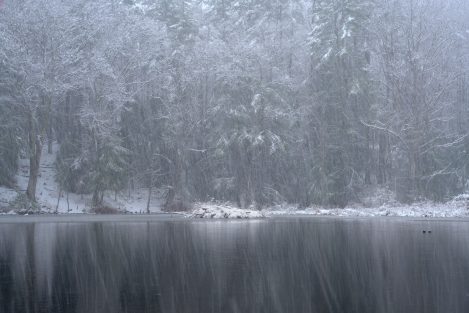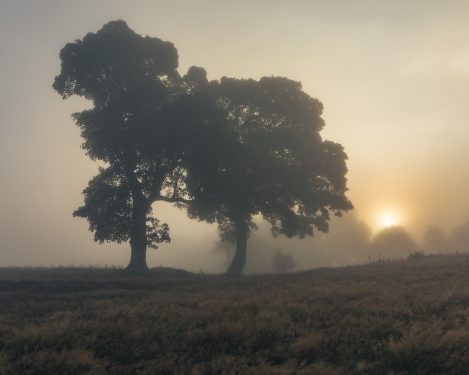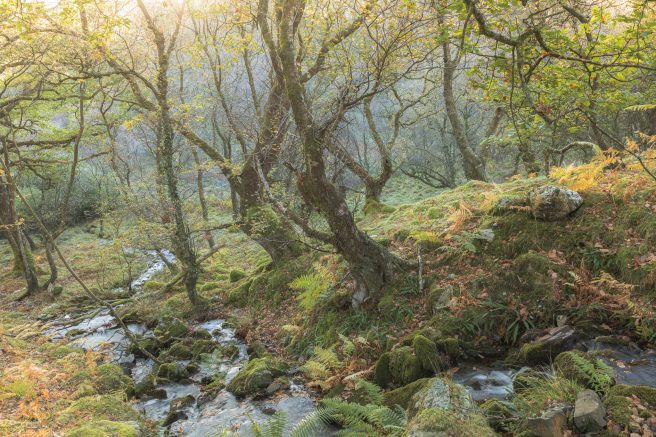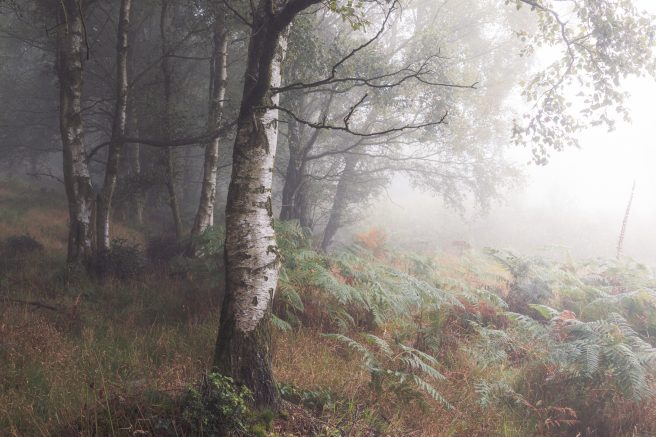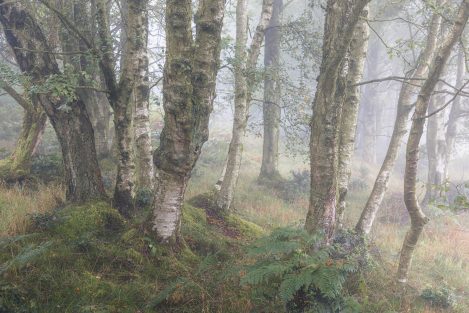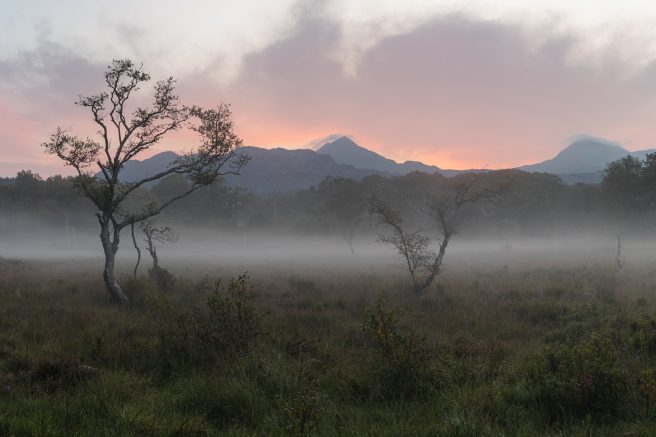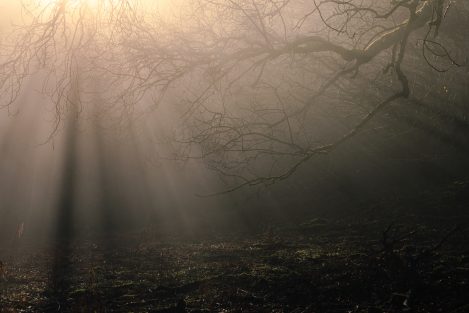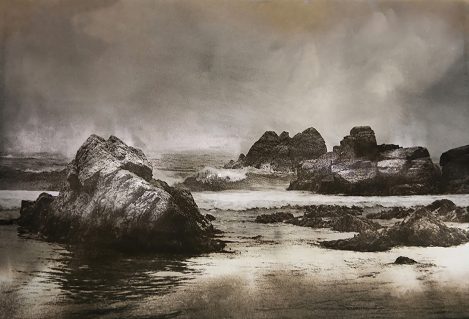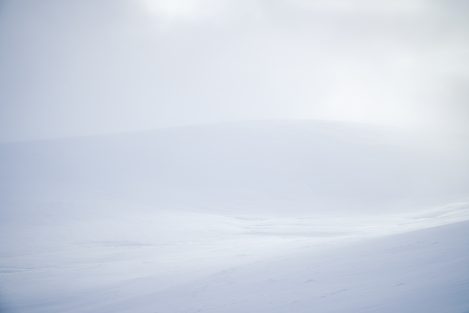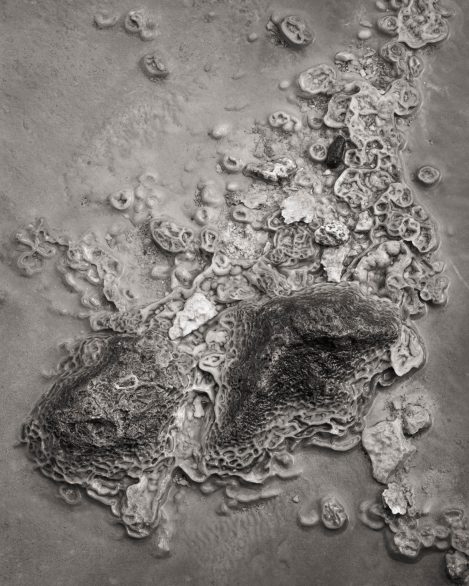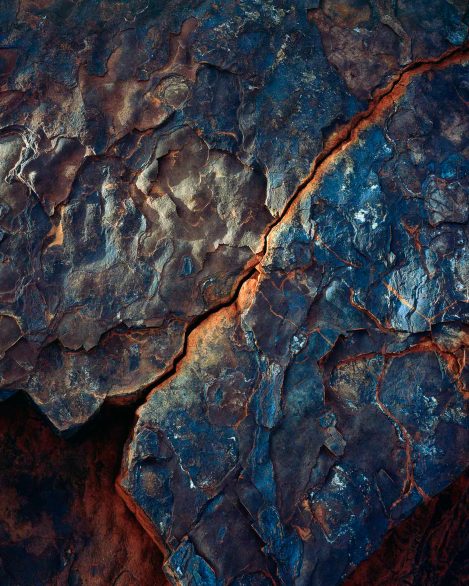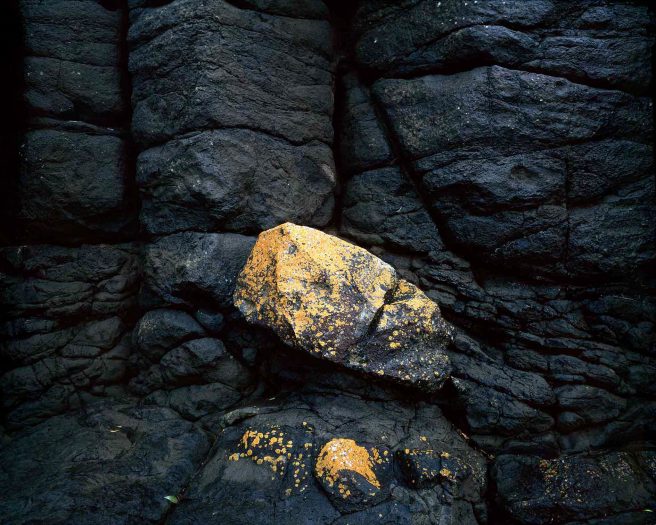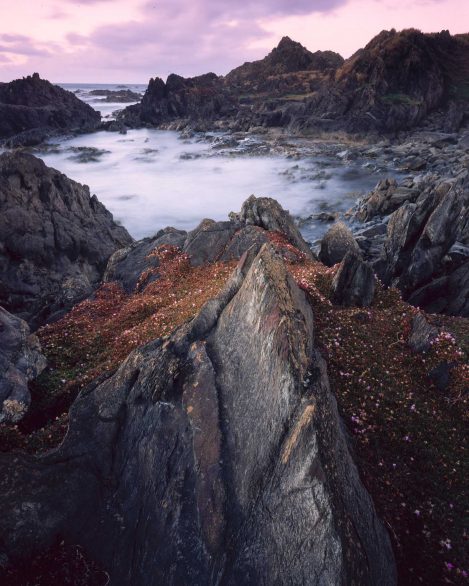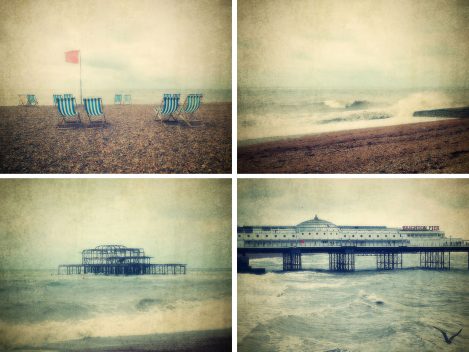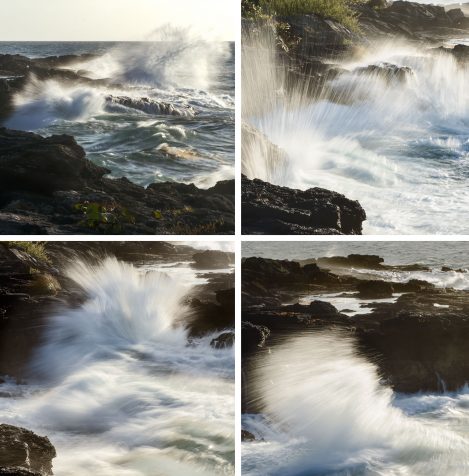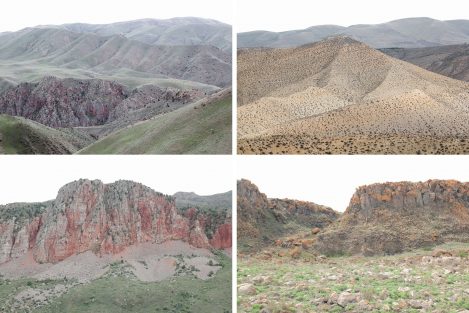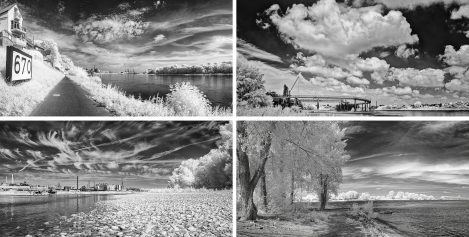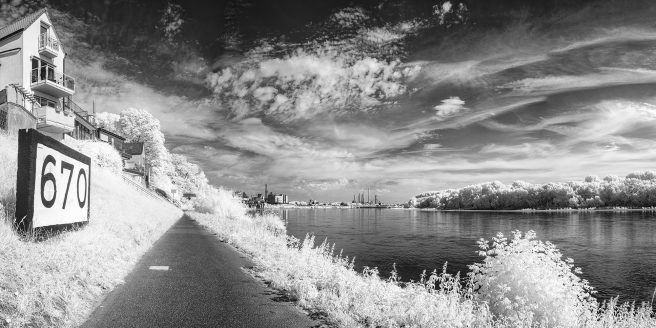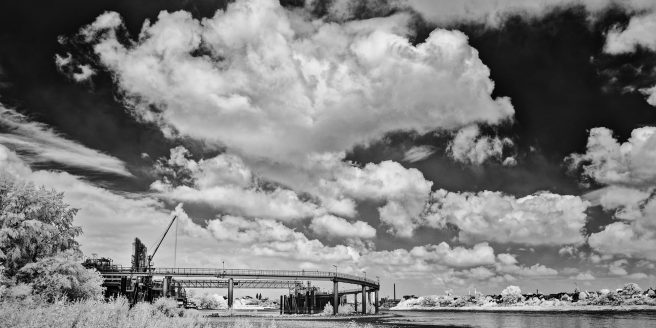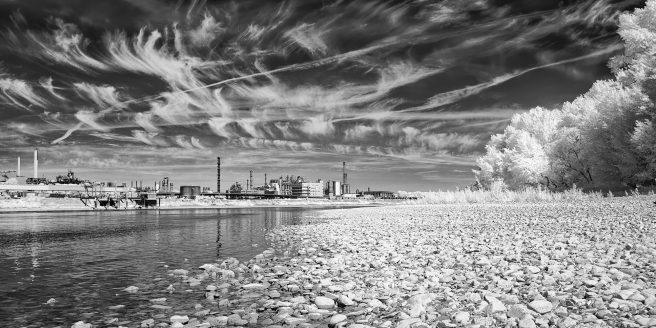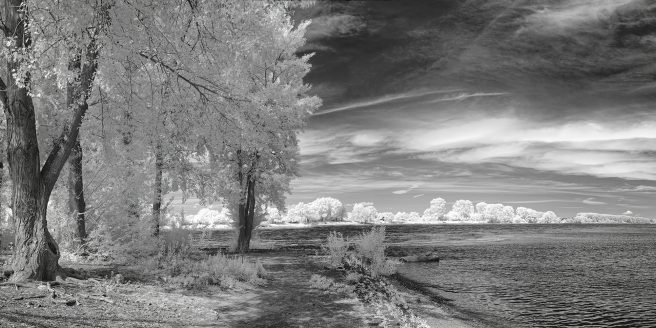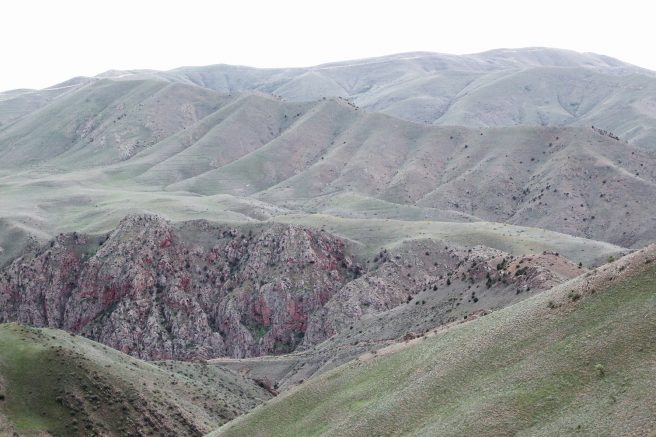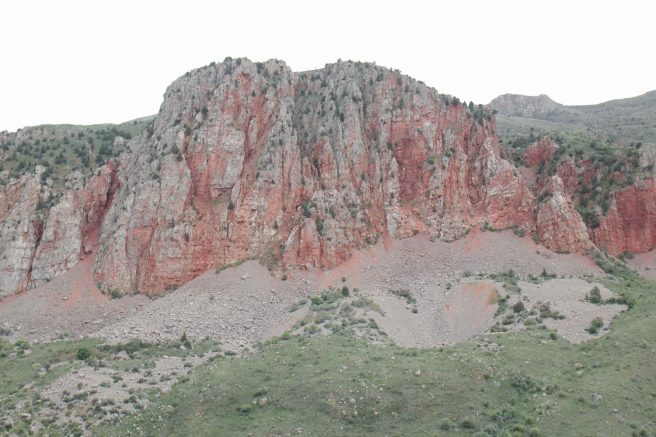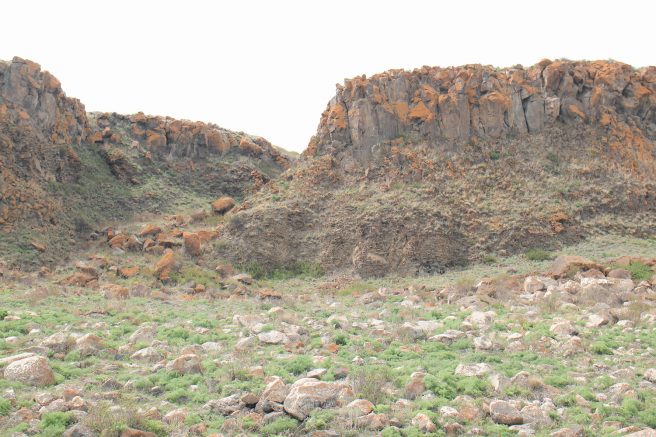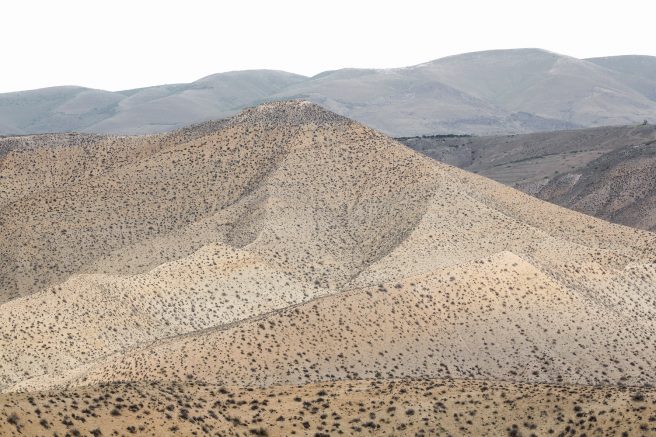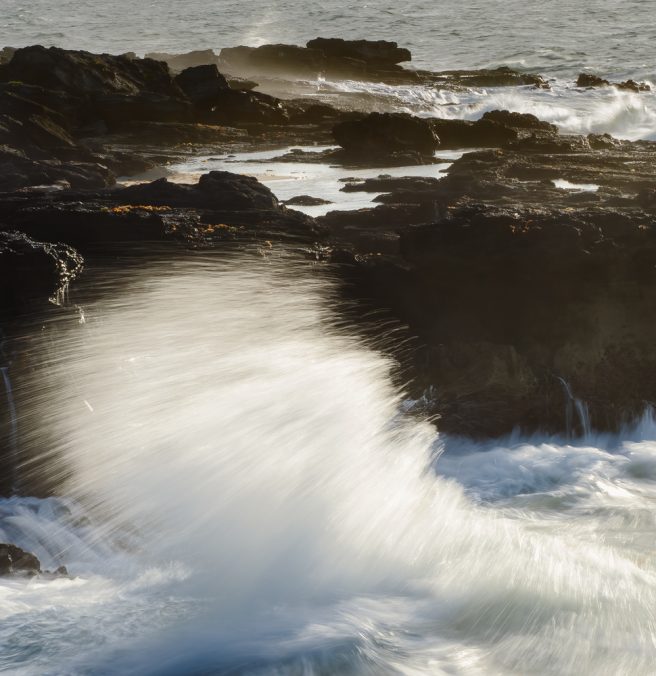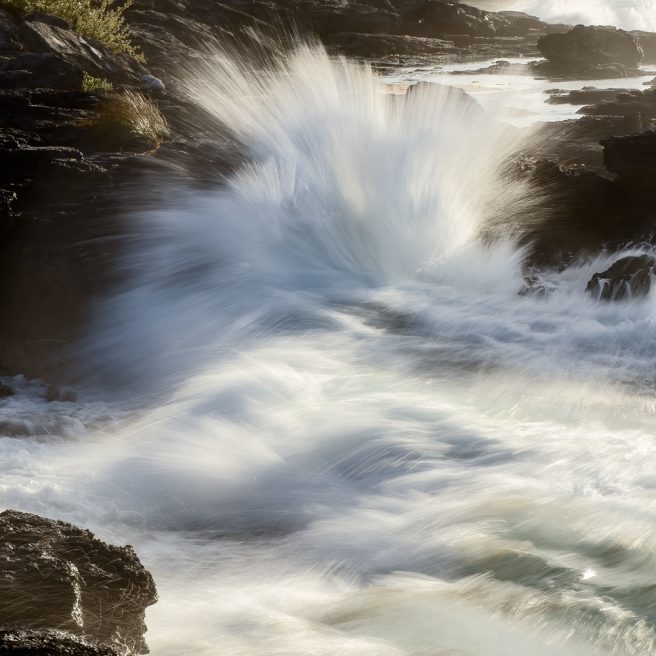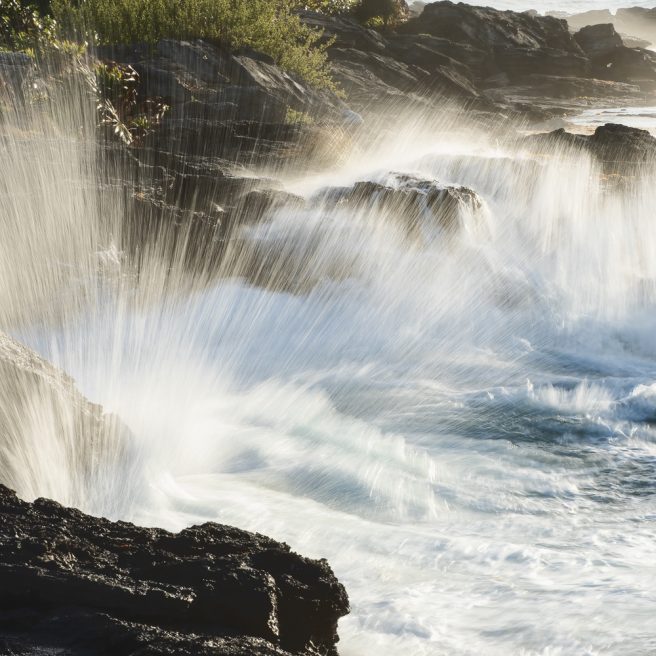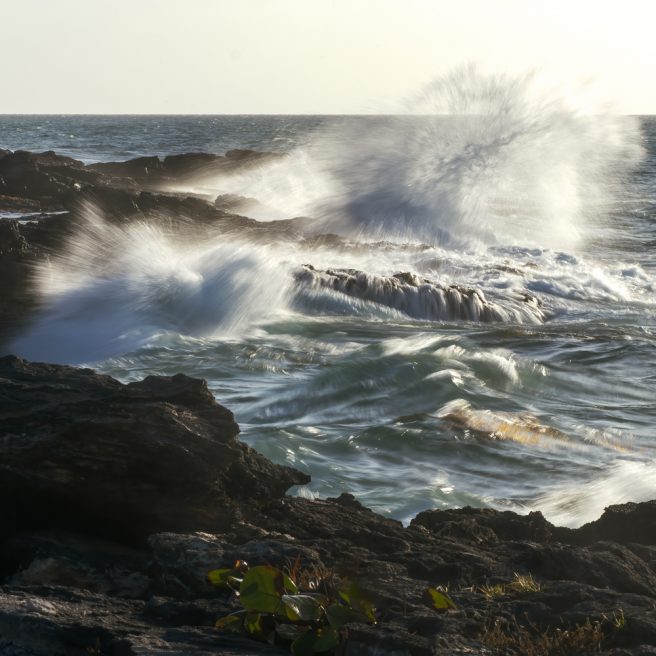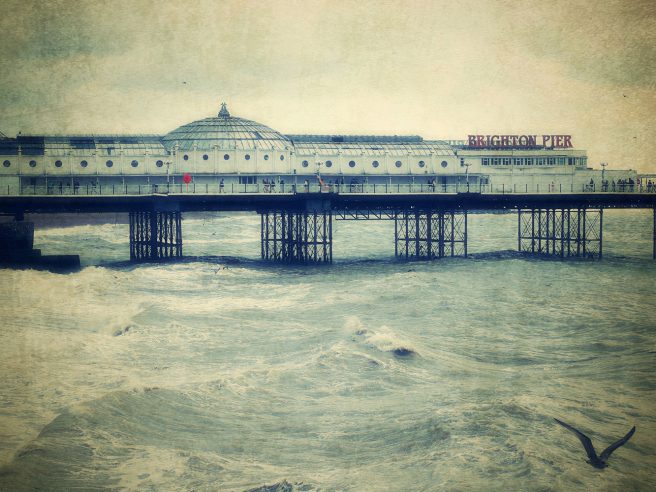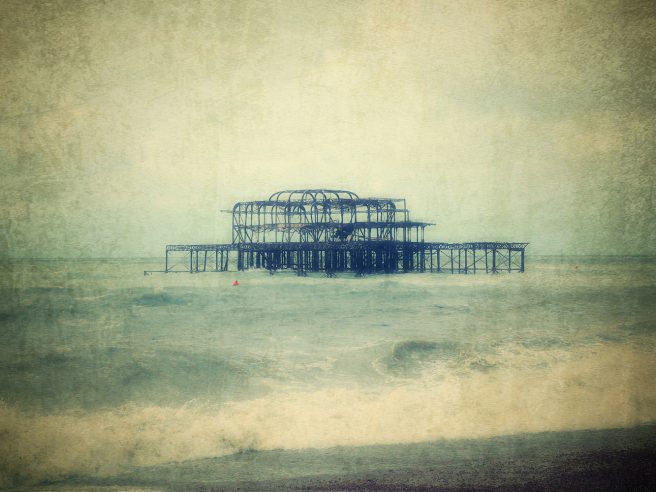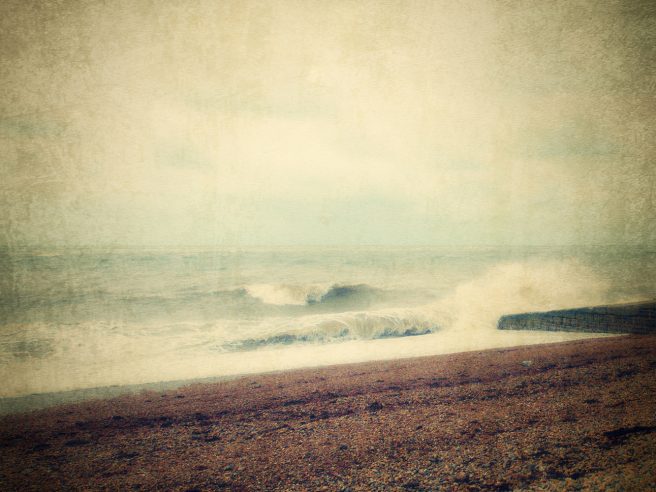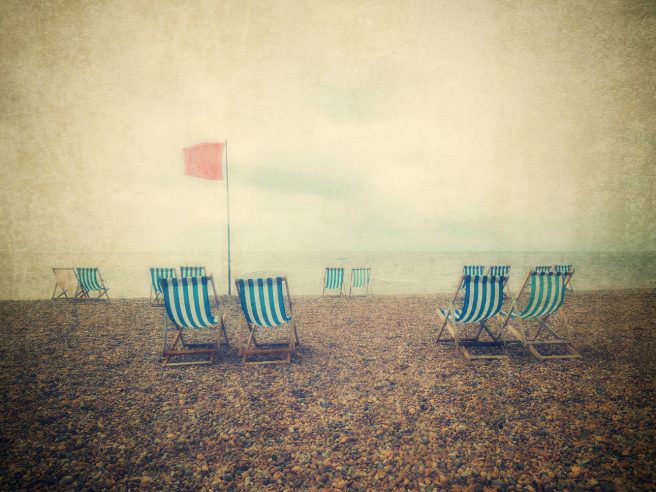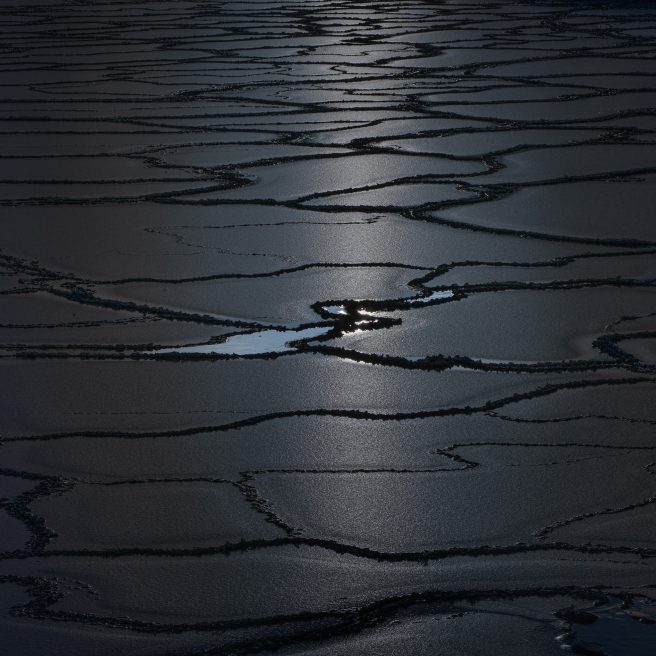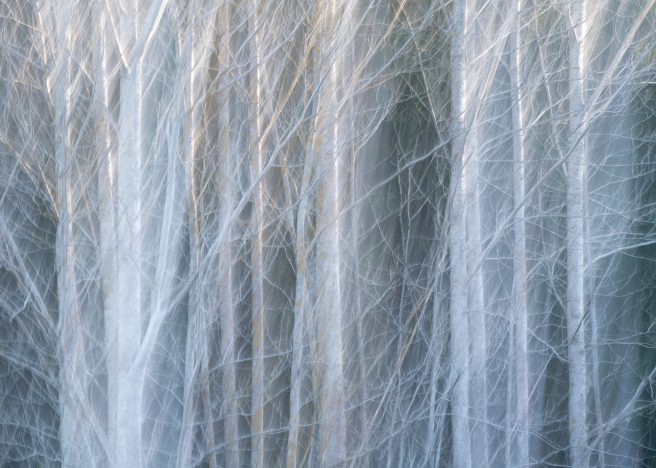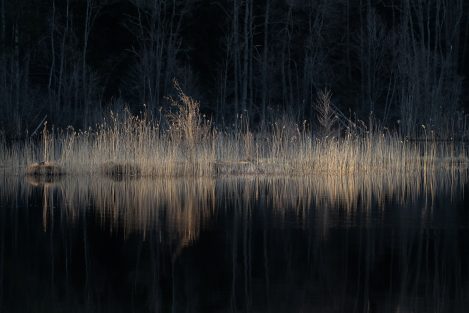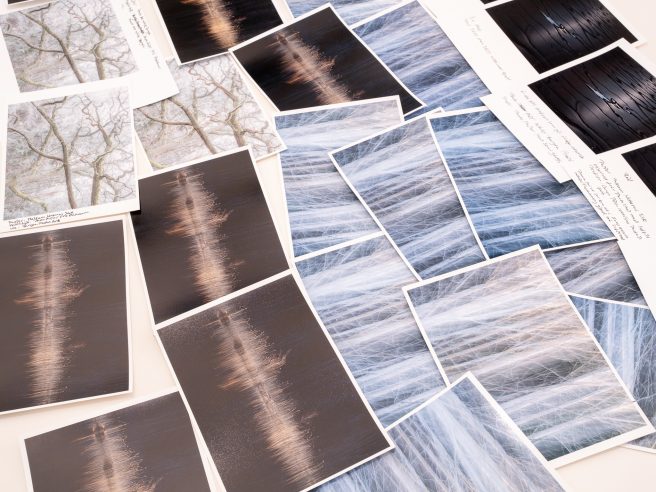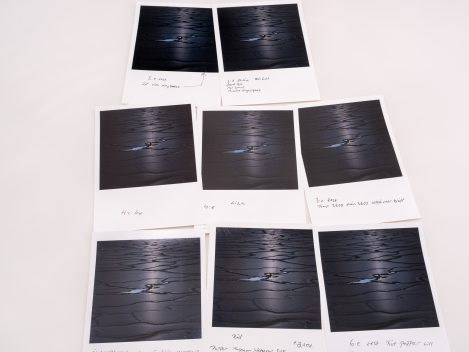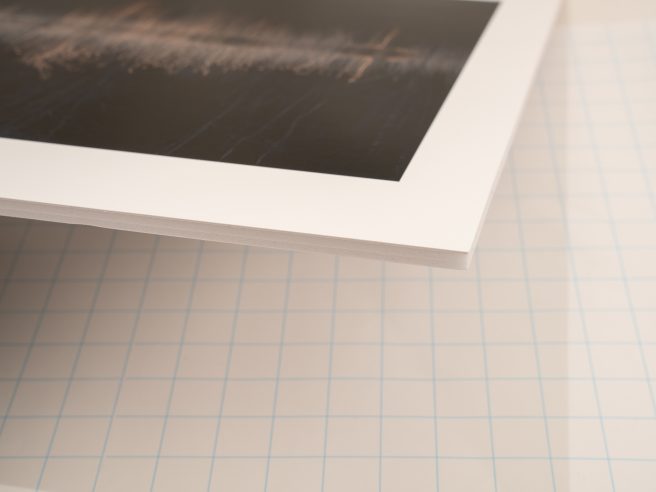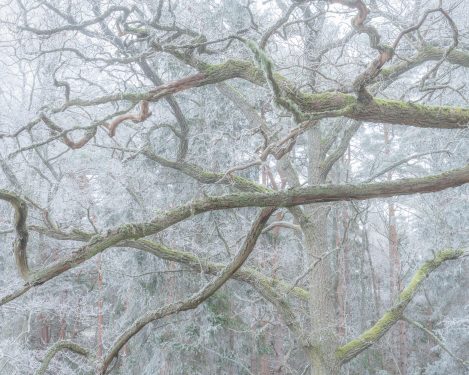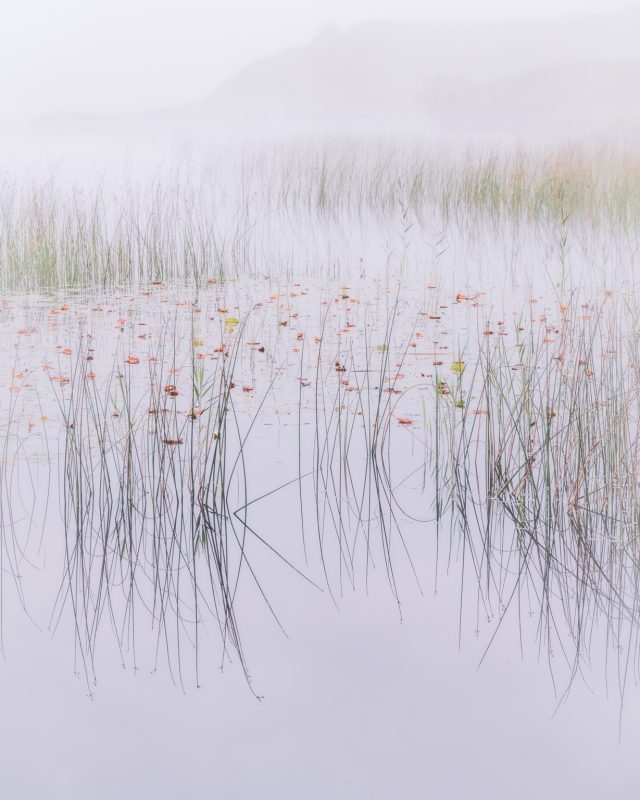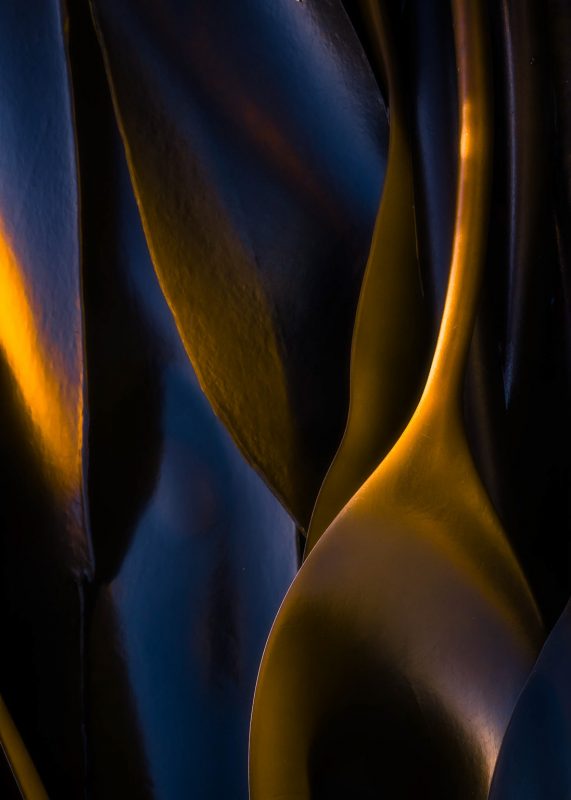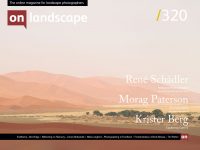The premise of our podcast is loosely based on Radio Four's “Any Questions.” Joe Cornish and I (Tim Parkin) invite a special guest to each show and solicit questions from our subscribers.
Copilot
I’ve just plonked my comfortable bottom down on my comfortable sofa. And selected some Nat King Cole from my playlist. All in preparation for writing a few words for your perusal. But on opening Microsoft word its informed me that if I press “+L” Copilot will write my blurb with me. Or maybe it will write it for me. I’ve no idea. I don’t know who, or what, Copilot is. I’m guessing that Copilot is a more organised individual than I. With a much bigger brain. But if I start using Copilot (or Otto as I think I’ll start calling him/her/it), how long will he be happy being a copilot.
How long before I’m a passenger, stuck back in economy, complaining about the lack of legroom, while Otto flies me on a route entirely of his choosing? I don’t want any help to rite these few words. Other perhaps than a few spelling suggestions. I’m not really sure I want any other grammatical suggestions. I’ll start and finish a sentence however I want. .
My cameras are mostly of a decent age. They’re still quite simple. But how long before they come with their own version of Copilot? iPhones are well on the way with artificial intelligence. Not that I mind too much. I turn off most things and just point and shoot. A bit of straightforward snapseedery and I’m happy. It's me choosing what I’m taking a photograph of, and me that’s deciding how I want to present it. It’s the same as when I’m using the big camera. A simple, straightforward image, processed in Lightroom. Looking at the picture as I process it. Deciding how dark I want the darks to be and then deciding how I’m going to tone it. Hopefully, in such a way that it matches the image in my head. I don’t really want to rely on any other form of intelligence other than my own. I don’t even want to see suggestions as to how the finished article would look like. Tim and I spoke to Damian Shields the other day.
We were talking about how long it took to make an image. And I was in completely in agreement with the wee man. I talk about some of my pictures being snapshots. But they aren’t. The image I made last night of the Isle of Lewis from my bedroom window took me over 62 years to make. Because everything in my life that led me up to that moment influenced me. Otto wasn’t looking over my shoulder, making little suggestions..
Now, I’m not saying that artificial intelligence is a bad thing in itself. It’s a bit like a no age statement whisky in a way, blended with all sorts of ingredients. Whereas, I’d describe myself as more of a very well aged single malt. Peaty, smoky, maybe a bit of sweetness from being encased in an Oloroso cask for 25 years. Bottled at cask strength. Richly individual. My cupboard is full of such whiskies. Maybe not the same age as me. But they are all individual. All to be savoured at different moments. Matching a whisky to a mood. A bit like the photography and the photographs that I enjoy. From David Ward to Sandra Bartocha to Rachael Talibart to Joe Cornish to Valda Bailey. Individuals all. Amongst an ocean of individuals. All bobbing up and down with no artificial buoyancy aids. Plotting their own course.
And yes. I know. I spelt write wrongly about 350 words ago. But it made me giggle, so I left it in. And I’ve no idea what I had been planning to write about. But in a way, Copilot made the decision for me.
Tara Workman
For Tara Workman a desire to acquire (another) new camera unexpectedly opened the door to creativity. What began as a hobby became serious, obsessive even; I think we all know that feeling. From varied monthly challenges, she gravitated towards the nature around her in the Pacific Northwest.
Photography offers Tara a space where she doesn’t have to follow the rules, in contrast to her profession as a family physician. She can experiment, simplify, and over time is learning to avoid the things that can stop photography being an uplifting, positive, experience. To keep it as a passion, a gift.
Would you like to start by telling readers a little about yourself – where you grew up, what your early interests were, and what you went on to do?
I grew up in Barbados and moved to the US in 2007. I was a late bloomer when it comes to photography. I’m a full-time family physician (GP), and my earlier hobbies were mostly related to sports and physical activities, e.g. golf/tennis/hiking. I never considered myself a creative person, but I always loved taking photos. Family and friends on holiday; snapping random photos on trips simply to create a collection of memories. If you told me back then that I would someday be interviewed about my photography, I would never have believed it.
How did photography come into your life? What were your early images of, or about?
Back in the day, I had this unproductive habit of buying new cameras. I say unproductive because I knew nothing about cameras or photography. I shot primarily with the automatic settings, but could somehow still rationalize why I needed a new one. When I mentioned to my husband that I found a new camera that I thought would be perfect for me to ‘grow into’, he said that if I wanted said camera, I should actually learn to use it. Admittedly, I couldn’t argue with this logic, and I immediately enrolled in a “Basics of Photography” class.
Once I learned how to use the camera, it unlocked a new obsession. Initially, I photographed EVERYTHING. I took the camera everywhere and set myself monthly challenges to focus on certain topics e.g. slow shutter, the color blue, bokeh and people. It was a great way to learn, and to learn to pay closer attention to the world around me. I live in the Pacific Northwest and over time I, like many in this area, gravitated towards nature as my main focus. All other hobbies took a back seat from then on, and the rest is history. In some ways, I suspect my husband regrets not letting me simply buy the new camera with no strings attached.
Who (photographers, artists or individuals) or what has most inspired you, or driven you forward in your own development as a photographer?
My more recent style has been influenced the most by folks like TJ Thorne, Huibo Hou, Sarah Marino, Bruce Percy, and Alex Noriega, to name a few. They all have their own creative styles, but I think they’ve all influenced certain aspects of my own work.
Special mention to David Thompson, who has been an incredible mentor (He’d probably deny this, but it’s true). He’s been a grounding force in many ways but also helped me refine the knowledge I already had, and it really helped take my work to a new level.
There are also so many others that I enjoy outside of the nature genre, and it has encouraged me to branch out more in recent years and begin exploring other subjects as well.
- Beth Buelow, Jerad Armijo - a hodgepodge of creative exploration
- Stephanie Johnson - ICM
- Tania Malkin and Carolyn Cheng - Aerial
- Allan Schaller - Street photography
- Angie McMonigal - Architecture
I’ve revisited the ‘why’ behind my photography often in recent years. I naturally tend to be a rule follower, but photography has been the one aspect of my life where I want to break all the rules. Tripods/previsualization/rule of thirds: it all makes me want to run in the opposite direction. I’m most inspired by those photographers who carve out their own way of photographing the world, and if you ask them all about technique, they’ll likely give you a wide range of answers. My personal goal is to embrace my unique take on the world, so that when I look back at my images, they feel like a true reflection of chapters in my life rather than photography trends. I also want to feel less encumbered by the constraints of making the most technically perfect image. For me, it more so boils down to whether the images make the viewer actually feel something. All easier said than done but it’s all a process, right?
Would you like to choose 2 or 3 favourite photographs from your own portfolio and tell us a little about why they are special to you, or your experience of making them?
This first image will always be special because it was one of the first times I branched out of the usual landscape shapes and created something truly unexpected. It was taken on a trip to New Zealand, and we stopped on the side of the road in the middle of the day to check out a cluster of trees by a lake. I decided to play around with the ICM technique. I remember feeling like I’d just wasted time and space on the memory card taking photos I’d never use.
At home when reviewing the images, this one was by far my favorite of the trip. What I love most is that I was in one of the most popular places for landscape photography and I came away with an image that I could never have envisioned, created from a sense of play and without expectation. This is the feeling we all have when we first start a new hobby but often lose as we progress. This particular image bookmarks a turning point in my photography journey, and those serendipitous moments have now become the corner stone of my process.
With a full-time medical career it can be difficult to get out with the camera as often as I’d like. This forces me to make the most of opportunities as they come. Over the years I’ve had the most fun taking photos at our local dog park. My husband valiantly assumes the responsibility of tiring out the pups which allows me 30-60 mins of fun with the camera. I enjoy the randomness of the reflections which can change depending on time of day, weather and most importantly, how many dogs are splashing around in the water. And what keeps me coming back is that I always seem to find something new. Some of my favorite images were made here, and this one is from a recent collection of images where the colors and shapes take on a life of their own. I experimented with finding 3 images that seemingly fit together to create the panorama.
There are places you visit that resonate so deeply and will always feel like home. This is how I feel about the sand dunes of Death Valley National Park. I am drawn to its vastness and the unlimited compositional opportunities. I’m not one to look for the ‘perfect’ composition and then wait for the perfect light. I’d probably compare my method to a street photographer in the desert. It consists of wandering, observing, and taking advantage of the opportunities as the elements line up. I also enjoy removing elements like the sky or plants, abstracting away the context of size, time, and orientation in many instances.
Sand dunes are my ideal playground, giving unlimited creative opportunities and I may come away with up to 20 images to review from one day on the dunes. This current image is from my most recent visit. Taken in the throes of a sandstorm, I especially love the contrast of how peaceful this image feels knowing how chaotic it was as the sand whipped around in the wind while capturing the moment. In difficult conditions such as these, it feels like a well-earned reward to come away with a portfolio image.
How do you feel that your photography has evolved in recent years?
It’s been about 10 years now since I took that photography class and it has indeed been an interesting journey. Reflecting on it, I feel like things have come full circle in a lot of ways. In the beginning I took photos of things that caught my eye and had no real concept of the rules of composition, light etc. As I ’studied’ the craft I found myself emulating as one often does when learning, and I was influenced mainly by the communities on social media.
My “a-ha moment” came from realizing that the photographers I enjoyed the most were making unique images I hadn’t seen done before. I also discovered that the images that meant the most to me came from a sense of play without preconceived ideas. As time has gone on, I’ve found that I’m most productive when I’m open to what opportunities are available to me and the secret sauce truly is having fun. My most recent work has been a rediscovery of play and following my curiosity instead of the trends. It feels like I’m once again starting to reconnect with the eager photographer I was when I started.
With regard to style, I have a tendency to isolate areas of interest within a scene incorporating a minimalist feel. Most notably, there’s been an ever-growing love of creating abstract imagery. I find they lead to interesting and often unexpected viewer experiences. The feedback I get can highlight new perspectives of the image which I find quite rewarding.
A final key development, as mentioned previously, is that I’ve put more focus on fostering photographic opportunities and shedding things that could hinder the creative experience.
I know you enjoy travelling, but is there anywhere local that you keep being drawn back to?
As discussed previously, I have spent a lot of time at the dog park over the years, but another local area that I return to frequently is the Oregon coast. I find wandering the beach in the early mornings so good for the soul. It has been a staycation spot for us over the years, but I truly connected to this area photographically during the height of the pandemic when travel was limited. I made some of my most meaningful images there since it was a place I could roam freely without fear or anxiety. With a camera in hand the noise of the world around often disappears, and this was incredibly healing at that time.
Can you give readers a brief insight into your set up? This might be photographic equipment through to processing, but it’s good to hear which parts of the workflow especially interest you and where you feel you can make the most difference to the end result.
My goal these days is to photograph with as few limitations as possible and to spend more time in the field than on the computer processing. I have been actively reducing the gear I walk with; the tripod is usually the first on the chopping block.
I have 2 setups depending on the circumstances.
For dedicated photography trips, I carry the Sony A7rV with the Sony G Master 100-400mm and the G 24-105mm. In low light conditions, I will begrudgingly use the tripod.
For every day, spur of the moment, use or on family vacations, I now have the Sony RX100 VII. I am more frequently substituting my main camera for this tiny point and shoot, and I’ve been having a blast. It allows for quick clicks in most situations, not to mention my back is a lot happier. There are definitely trade-offs dealing with increased noise in low light, and far fewer bells and whistles, but overall, I’d say having the freedom it provides has been worth it.
I tend to treat photography as a solo venture, but I have a few close friends that I travel with. Once we find an area of interest, there’s an unspoken understanding that we’ll split up to wander around and meet up again later to debrief.
The wandering is my favorite part of the process. It’s the time where my mind has one singular focus; being open to whatever nature has in store on that day.
In the past after a trip, I would load the images as soon as possible and would process a few that day. These days it may take several weeks and a few outings before I even take the card out of the camera. I used to stress about the backlog of images, but a wise friend once told me, it forces you to be more selective in the images you do choose to process, therefore showcasing your best work. I’m choosing to believe he’s right.
Is it important to you that other people see your work in print? If so, how do you choose to print and present your pictures?
I rarely print my work. I know this may be taboo in many circles, but I’ve come to realize that it’s the making of the images that means the most to me. I enjoy the sharing and I’m incredibly pleased when my images resonate with others (especially those whose work I admire).
We all start off thinking that our photography is about place, subject, season… only at some point to realise that we are intrinsically part of it in what we respond to, and what we choose to show. What have you discovered about yourself through photography, or gained from it?
Photography is my happy place. For me it is the peace in the messy turmoil of life. When I have the camera in hand it’s like all the stressors disappear and I don’t think there are many other things in my life that have that effect. When I look at my images, I can only deduce that they are a reflection of elements in life that make me happiest. Simplicity, Color, whimsy, mystery, wonder. Location is secondary.
Images can be found on drives, vacation and not just dedicated photo outings as long as you’re open and curious. It has been such a gift to appreciate the world around me in a way I never had before. The best way I can describe it is, it’s as if my eyes were open but since photography I can finally see.
Hobbies have a way of sucking us in, and even something as apparently simple as sharing images online can begin to throw up hurdles. It stops being a relaxing activity; diverts our focus and time, edges into something more akin to work; and we can simply trip up over our own expectations of progress even before others come into the equation. Have you managed to find a path that works for you?
This is definitely something I had to actively work on. I went through a period of caring too much about what others thought, and it definitely hindered my creativity. I also put some unnecessary pressure on myself to ‘do something’ with my photography. I had this silly notion that the next step was obviously to make it into a business of some sort - workshops, prints etc. The more I contemplated the next steps the less I felt inclined to photograph, which defeated the purpose entirely.
I do feel it was important for me to explore all of these options to solidify what I ultimately want to get out of this journey. I have the luxury of pursuing a passion and keeping it separate from my career. I’ve realized (at least for now) it’s important for me to maintain those boundaries in order to continue to enjoy the process.
Where do you now look for inspiration, or draw motivation from?
I love to look at the images of other photographers. I still scroll social media regularly even if I’m not actively posting. It’s always a treat to come across a new image that stops me in my tracks. I’m especially motivated by photographers who’ve been at this for years and continue to push boundaries. It reminds me that there’s always a new image to be made, and your best images may still be yet to come as long as you keep clicking.
Do you have any particular projects or ambitions, techniques or themes that you would like to explore further?
In recent months, I’ve found myself creating several small series’ of images, 3-5 in a set. No particular focus subject-wise or goal beforehand, but I’m enjoying the process of curating small cohesive bodies of work as I go along. Feels like a new unlock with how I present the images.
I have also been branching out from nature photography a bit. Taking the point and shoot around gives new opportunities to experiment with other subjects. The beauty of photography is that we can draw inspiration from so many dimensions. I plan to explore as many as I can.
If you had to take a break from all things photographic for a week, what would you end up doing? What other hobbies or interests do you have? Is it still a long list, or have you managed to moderate yourself moving onto the ‘next thing’?
In the past year I’ve gone back to playing golf and tennis, with photography interspersed where reasonably possible. I tend to go overboard with interests and hobbies, but I think I’ve finally found a better life balance. For now at least… until the next thing.
And finally, is there someone whose photography you enjoy – perhaps someone that we may not have come across - and whose work you think we should feature in a future issue? They can be amateur or professional. Please include a link to their website or social media, as appropriate.
Any of the photographers listed previously would be worth diving into to but 2 additions that I think could use more attention would be Anna Morgan and Krista Mccuish. Both wonderful!
Thanks Tara. It will be god to see where your camera takes you next.
You can see more Tara’s photography at https://www.taraworkmanphoto.com/, and she may pop up every now and then on Instagram.
Good calls for Anna and Krista. We have interviewed them both, and you can read these features here:
https://www.onlandscape.co.uk/2024/05/anna-morgan/
https://www.onlandscape.co.uk/2018/11/krista-mccuish-featured-photographer/
Past Masters: Nicolas Poussin
Introduction
We celebrate the artworks and the artist, but we rarely celebrate his choices. Personal choices can lead us to devote time and tranquillity to art making, or not.
Choosing often seems like gambling on our future. It requires vision, character and determination, the same quality needed for art making.
The passing of time is the greatest motivator a person has to stay focused on making choices, without delaying them or wasting time, and to act upon them to best devote time doing what is most meaningful.
Slow photography on Öland
Carl Linnaeus, Swedish biologist and physician known for being the "father of modern taxonomy", noted on his Öland expedition in 1741: “Öland is different - as soon as we have touched the beach, we noticed that this was totally different from the other Swedish provinces. The wide, flat and open landscape stretches to the distant horizon, which is marked by the Baltic Sea.”
Öland, which is my second home (the first one being Italy), is a narrow and long island joined to the city of Kalmar on the mainland by Europe's once longest bridge. The name Öland translates as “Island Land”, Ö being the Swedish word for island.
Around 26,000 people live there permanently. However, during summer months, the population multiplies drastically, with Swedish and foreign tourists descending on this summer destination.
Most of Öland's landmarks go back in history hundreds and thousands of years. The island contains several Viking burial grounds, and there are several primitive stone‐walled forts, the most noteworthy of which is Graborg in the middle of the island.
The northernmost tip of the island is characterised by the so called “Trollskogen”, the Enchanted Forest, a stand of pine woods, crossed by series of paths leading to white beaches, wild flowers and picnic clearings, but so far I haven’t seen any trolls…
The central part of Öland is home to the “Mittlandsskogen”, Europe's largest contiguous deciduous forest area below the mountain range and here is also Sweden's largest hazel forest.
However, my preferred photographic environment is located in the agricultural landscape of southern Öland, which is a living mixture of fields, characteristic linear villages, pastures and coastal areas. The area has a history of several thousand years. In fact, the ancestors of today´s farmers have made southern Öland to the UNESCO World Heritage Site it is today.
Probably the most typical agrarian monuments are the characteristic stone walls. The many kilometers of stone walls connect the history of several centuries. For more than 2000 years, the islanders have built stone walls into fences. It was not until after the middle of the 20th century that knowledge of the art of laying walls began to decline. With the walls disappearing, both a piece of Öland's history and part of the plant and animal life are at risk of vanishing.
Part of this southern landscape is the limestone steppe called “Stora Alvaret” (Great Alvar), a treeless plateau that is unique in Scandinavia. The plateau produces plant life uncharacteristic of Scandinavia. In spring, many different species of orchids bloom there, including “Ölandssolvända”, which has not been found anywhere else in the world.
The coastlands and coastal meadows still have today a unique continuity of use. For thousands of years, they have been used for or as haymaking, as is clearly reflected in both flora and fauna. The coastlands include several highly distinctive plant communities and are an important habitat for a great number of rare and vulnerable bird species. Often round shaped boulders and rocks shaped by past glacial times can be found in this open landscapes offering interesting photographic opportunities.
Finally, reaching Ottenby at the most southern tip of the island, the visitor may be surprised by a savannah type of landscape, with open grasslands and very sparse trees which sometimes remind the shape of the typical African Umbrella tree. In particular, this area is home to a large number of birds, and likewise, birdwatchers wandering around the various bird sanctuaries and the museum dedicated to birds and their migration.
For far more than a hundred years, researchers, artists, authors, bird watchers and other nature lovers have been attracted to Öland by the light, the unique nature and the richness of the birds. In a similar way, it is here where I have discovered my true photographic style. Inspired by this somehow minimalistic atmosphere, I try to capture the essential elements in the landscape and to communicate this great sense of peace and quietness through my images. Öland is a place for slow photography, almost meditative photography; it’s about space and time. It is here that I live my photography.
An old hymn still sung in the villages of the island records, “This is the fair land of summer, the island of wind and sun. . . .”
My Favourites
Snowstorm
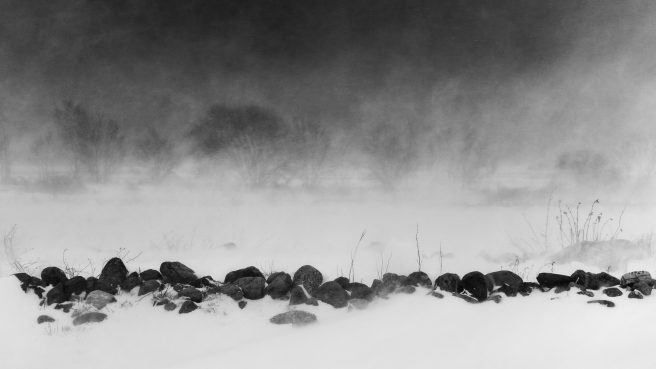
Ölandsfåk is the characteristic snowstorm on the island of Öland in Sweden. The wind blows so strong that it seems to snow horizontally. Huge drifts of hard-packed snow form in wind shielded areas while the ground can be almost bare out in fields. There are many old stories about people who got lost and froze to death in this weather. I took this picture from a safe distance from my house. This is one of my favourite winterscape pictures I took on the island. I like the contrast between the typical stone wall in the foreground and the painting like background of the trees in the snowstorm. It has a dramatic atmosphere, but at the same time, it transmits a sense of peace and quietness.
Savanna
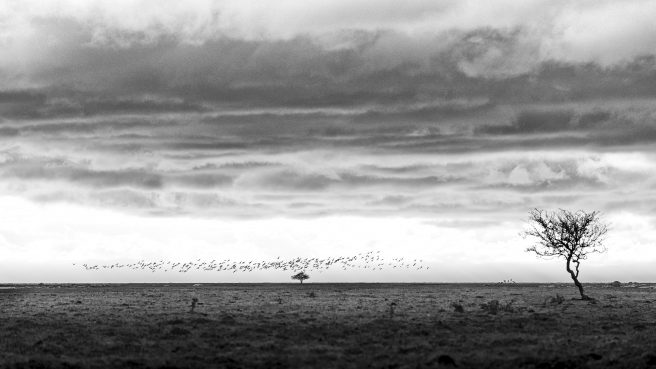
Öland’s savannah is the title of this image. Indeed, the southern tip of the island reminds one of the typical landscapes of Africa, with its open grasslands and sparse trees. This picture summarises three elements of the island which formed my photographic style; the big and often dramatic skies, minimalistic landscapes and birds (even if I’m not a particular bird photographer). It is somehow a meditative image.
Stoneway
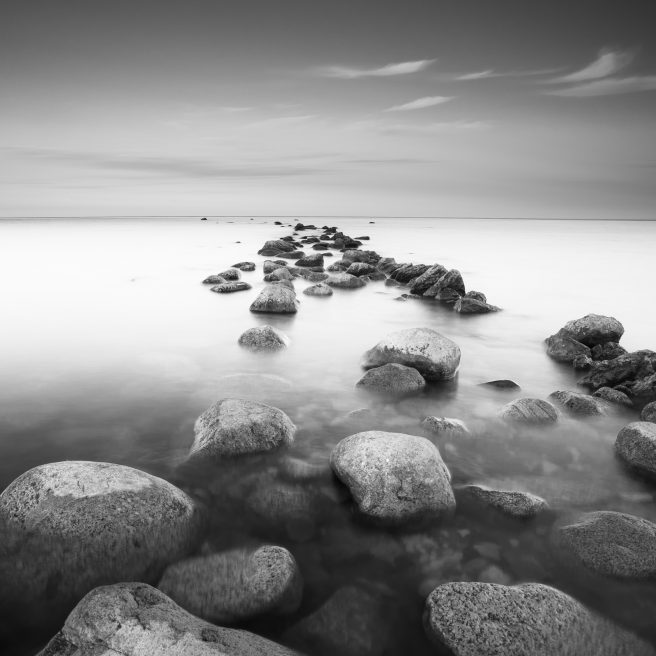
The island of Öland is about slow photography. I really like to slow down and almost absorb the landscape before taking a picture. This image is an expression of this feeling. I entitled it “Stoneway to Heaven” due to the almost endless line of rocks which seem to touch the horizon. Also, often my image titles make reference to songs or compositions since music is another important part of my life, I both love listening to music and playing it myself.
Issue 331
End frame: L’Éclipse by Eugène Atget
There is something immediately appealing about Eugène Atget’s 1912 albumen silver print L’Éclipse—a sense of spontaneity, playfulness, and ease with which the Parisian photographer pulls us right into the center of the crowd that gathered on Place de la Bastille to observe a solar eclipse. I feel almost compelled to turn my head to the left to follow the gaze and hand gestures of the spectators and, like them, expectantly stare into the sky.
Atget titled his photograph L’Éclipse, but he focused his large format wooden camera on the crowd of about twenty-five Parisians that gathered on a small platform on top of the stairs of the Place de la Bastille. We can only infer what the figures are looking at from the photograph’s title or perhaps from the viewing apparatuses that several people are holding to their eyes. Others simply shield their vision with their hands, thus guiding our attention nicely to the object of their fascination. This spontaneous composition is further enhanced by the arrangement of the figures who positioned themselves in a slight curve around a column and in front of an iron fence that provides a natural frame.
In the background, several buildings establish the exact geographic location of the gathering: Phares de la Bastille. The scene is completed by a few lamps and a row of trees lining an empty street. The absence of leaves informs us that the eclipse takes place either at the very end or the very beginning of winter—a detail supported by several figures sporting long overcoats.
Judging from their clothes and in several instances work uniforms, the moon gazers are middle and working class and, except for a middle-aged woman in the row closest to the camera, mostly men and children. There is something democratic about this gathering, a nod to modernity as the photograph depicts people of different social statuses, ages and genders, a group that might not otherwise gather in one place, all intently staring into the sky. Well, all but one. A young man with a cheeky grin has climbed a bit higher on the column to get himself a viewing advantage over the crowd. However, he finds Atget, who is likely standing relatively close to his subject, more worthy of his attention than the eclipse, and looks intently in his direction for what must be a minute exposure at the least.
Albanian Canyons
One of the attractive aspects of my project about European canyons is that it has introduced me to nature in Eastern European countries. Honestly, I had never been to Eastern Europe before, let alone photographed there. But Slovenia, Montenegro, Serbia, and Albania all have interesting and significant canyons, so they were high on my list of places to visit for this project.
The most exciting and most exotic destination for me was Albania. Although this country has been gaining increasing attention in recent years—primarily because of its beautiful beaches and low prices—it remains quite an unspoiled land, with few landscape photographers appearing to have an interest in it. The tradition of blood vengeance and the country’s interesting recent history, particularly its rule by the communist dictator Hoxha from 1944 to 1985, added to my curiosity. I had planned a trip with my good friend Michel Lucas, who, although not particularly interested in canyons, was curious about Albanian landscapes and the potential new photographic opportunities there.
The trip was scheduled in the middle of summer. This had to do with the water levels in the canyons. In May and June, there is usually a lot of water, and rafting and kayaking are common in the large canyons. However, for photography, this is less suitable because you usually cannot descend into or walk through the canyons at that time. Consequently, photographic opportunities are generally more limited, relying on viewpoints at the canyon’s edge and possibly drones. So, we planned our trip for the latter half of July, when water levels are lower and you can walk through many parts of the canyons.
A major drawback of this period is that Albania can be very hot—sometimes even outright scorching. Temperatures between 35 and 40°C are quite standard inland, and during our stay, the hottest day saw temperatures over 43°C. Having a car and hotel with (well-functioning) air conditioning was essential, and fortunately, we had both. At night, it cooled down somewhat to around 20°C.
Besides the high temperatures, the intense midday sunlight posed a challenge for photography. This meant we had two very good reasons to get up early and start each day very early. Actually, three—because during the first hours of daylight, the canyons are usually still wonderfully quiet, and we had them all to ourselves. Since it gets light around 5:00 AM at this time of year, we often left the hotel around 4:15 or 4:30 AM, arriving before sunrise. Waking up that early was sometimes tough, but the relative coolness, tranquility, and the better light were enough rewards to keep us going every day. After a few intense hours, you naturally get tired of photographing and it’s time for breakfast, image editing and selection, a long siesta, and then a late afternoon dinner. In the evening, we usually had another 2 or 3 hours reserved for photography, although it was considerably warmer than early in the morning.
Guy Dickinson
When we last featured Guy Dickinson, his tracing silence project was already well underway, seeking the "quintessential manifestation of place." Since 2018, Guy's distinctive work has continued to mature and expand, embracing monochrome, and pushing to continually evolve series which mix photography, digital layering and collage. We talk about the extension of his practice into bookmaking, writing, and exhibiting, as well as what now inspires Guy.
I was shocked to realise that seven years have passed since we featured you, Guy. Has anything given you particular enjoyment or satisfaction, photographically, in the intervening period?
I’ve definitely reached that age where the passing of time seems to accelerate exponentially, but on the plus side, that has injected a sense of urgency and drive into the project and helps focus my attention. I’m happy to say I still find the project rewarding and creatively stimulating.
I’ve exhibited a bit more since our last interview and also published a book with Another Place Press, which felt like a bit of a milestone. It was great fun working with Iain Sarjeant; I was absolutely thrilled when he asked. Passage was a collection of work I made in 2017 in response to a walk across Iceland, from the mountains in Landmannalaugar to the coast at Skogar. Most of the images were made on the final day, on the stretch from Porsmork that runs between the Eyjafjallajokull and Myrdalsjokull glaciers, then follows the Skogar river down to the coast.
My self-published work is all done in isolation, so it was a new experience for me working with someone else on a book. It was great to hand over all the hard work and logistics to an expert. The way Iain responded to the images with his pairings and spreads led me to look at the work in a very different way, identifying cross threads and connections that hadn’t occurred to me before. I tend to work in a bit of a bubble, so it was valuable to be reminded of the benefits of collaboration and the stagnation that can result from maintaining too much control. You can be too close to your own work to always make the best calls on how it might be presented.
What the Colorado Trail Taught Me About Photographic Presence
In the summer of 2023, I set out to hike the 500-mile Colorado Trail from Denver to Durango. I brought with me a single camera and a 28-200mm Tamron lens, unsure of exactly what I would photograph, but deeply certain that I needed the walk. What unfolded over the next five weeks became one of the most creatively and personally transformative experiences of my life. I didn’t plan the images. I didn’t chase epic conditions. I didn’t even know if the photos I was making would be any good. And that was precisely the point.
As a full-time photographer, it’s easy to fall into the trap of always shooting with a purpose: for a portfolio, for a client, for a competition, for the algorithm. But walking the Colorado Trail reminded me of something I had lost sight of: the power of presence. Of slowing down. Of making photographs not for anyone else, but as a way of being in relationship with the landscape. It was a return to curiosity, patience, and authenticity - the very values that first pulled me into photography in the mountains of Colorado decades ago.
The Photographer’s Note
The following is the first of several trip journals from the Photographer’s Note in the upcoming book: Gwazhal Cordillera: Life and Art in the Brooks Range. Scheduled for release later in 2025, this book explores the little-known landscape of Alaska’s Brooks Range.
With a 4x5 camera in hand, searching for the concepts of mood and lighting, Claude has spent 20 years making trips to the Gwazhal. In the book he is joined by essayists: Roman Dial, Caroline Van Hemert, Bill Hess, and Nancy Lord.
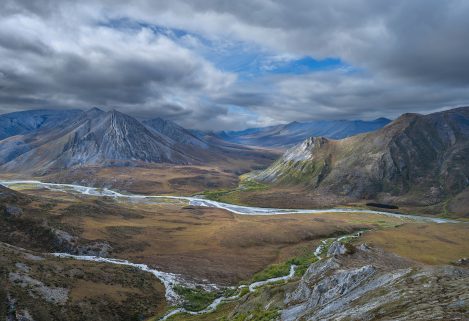
I walked up the street to Sharky and Cosmo’s house. The street was buried under four feet of snow. I followed the footpath my wife, Nancy, and I had packed down from our parking spot on Highway 4. During the winter season, we lived in a snowbound subdivision just down the road from Bear Valley—our Sierra Nevada winter home. Sharky was back from a summer of bush-piloting in the Brooks Range. He’d spent the season in the tiny and remote village of Kaktovik, flying for former bush pilot and Waldo Arms Hotel proprietor Walt Audi.
My impression of the Brooks Range started with a photo from the October 1953 Sierra Club Bulletin. In the photo, a lone caribou is swimming across what I would recognize as Peters Lake on the north slope of the Brooks. The photographer was Lowell Sumner. I was invited on a trip in 1983, but I had detoured on an expedition to the West Ridge of Mount Everest, and the High Sierra still had me under its spell. Twenty years passed. I needed to reconnect with a couple of old friends I hadn’t seen in a while. Tom had completed a Ph.D., and Danny was busy running a contracting business. Nancy and I were raising a daughter, and I was running a construction outfit in the resort town of Mammoth Lakes, California—not to mention entering the middle part of life.
Sipping a glass of wine, Sharky said we should call Audi and set up my overdue trip. Alaska time was an hour behind Pacific time, so why not give him a call? Audi picked up and in his high-pitched voice said, “Yeah sure, mid-August. We’ll see you then.” And that was it - reservation made. The limited communication added a sense of uncertainty to the trip.
The plan was to run the Hulahula River, which seemed more than reasonable. Tom was a former Grand Canyon dory guide. The plan also included an ascent of Mount Michelson from the river. So a few mountaineering items were added to the packing list: a rope and ice axes, runners and carabiners. We’d pick up rafting gear from Audi.
We flew to Fairbanks on a Friday night. The bar next to the hotel had a parking lot packed with dented pickup trucks and muscle cars. I could feel the Carhartt Nation vibe.
At 6 am, I made it to the hotel lobby for the start of the continental breakfast. Fox News was on the television, and a hotel employee was filling the coffee urn. A mix of what looked to be salespeople, military personnel, and construction workers filtered in and found their way to the packaged muffins.
Tom and Danny showed up, and we talked about how much food to buy and what extras we needed. Danny wanted to get a pair of water shoes and some fishing lures.
The supermarket was only a hundred yards away from the hotel. The parking lot at the neighboring bar still had a couple cars in it. We made a few trips back and forth between the hotel and the supermarket, and soon had the room sprawled out with trip stuff. With the food packed and our gear organized, it was time to head to the sports shop for Danny’s water shoes and lures.
We taxied to downtown Fairbanks, a funky cluster of older ramshackle buildings. In the sport shop, our salesperson told us he hunted grizzlies with a bow and arrow outfit. The next day’s flight over the Gwazhal/Brooks Range was a mind-boggling visual feast. No amount of map reading or any written description can match what one sees from the air. Flying north over the Yukon Flats, the wings of the aircraft reflected light over countless ponds, lakes, and waterways.
We crossed over the silty brown Yukon River. The land tilted into foothills and drainages inclined toward the Brooks. The mountains appeared as a convoluted mix of colors. Gray, brown, green, and white folds and striations curved through the peaks. Canyons and streams twisted and diverged.
And then the plain of the North Slope tundra extending out toward the Beaufort Sea appeared like the top of a globe curving downward in every direction. I kept trying to come up with boundaries for the landscape. Mountains end; tundra begins. Tundra ends; sea starts. The endless horizon line stretched out and made me grasp for a visual definition.
The landing announcement pulled me out of my reverie. The plane circled the cluster of buildings and the Cold War–era DEW (Distant Early Warning) station that Kaktovik comprises. It appeared to be as lonely an outpost as is Baker, Nevada. A group of ATVs met the plane, some to unload boxes of diapers or groceries, others to pick up family, and there also sat our ride: a beat-to-hell pickup truck with Walt Audi in the driver’s seat. Walt was somewhere on the sunset side of life’s hill. His white hair was in a ponytail under some sort of seaman’s hat.
Our introduction was brief. The three of us piled our duffels into the rusting truck bed, and we rattled the short distance to the Waldo Arms. The hotel was a series of trailers joined together by thickly insulated plywood. We squeezed into our rooms and wondered if Walt was going to introduce us to the plan. We got a brief tour of the kitchen, the menu, the dining room, Walt’s office (radio, satellite phone, piles of paper), and the TV room, with a wide-screen set and sagging couches. It felt like a renovated mining camp.
The tour ended, then we were back in the truck headed to the post office to help load packages. Somewhere during the excursion, Walt told us that the pilot would not be back for a while. This was fine with me. I was curious about Kaktovik and the photographic quality of light that might obtain so close to the Beaufort Sea. Danny seemed mildly irritated with the lack of a definitive plan. Tom remained silent.
Walt had a raft for us to use and some fuel for the stove. The fuel was stored in rusting gallon cans. The raft looked like it had been rolled up for quite a few years. As we started unrolling the boat Danny started laughing. Dried mud and withered tundra were stuck to most of it. The forward tube had prominent holes from polar bear bites. Our only option was to try to fix the thing. Tom had brought a repair kit, and Walt said there was another with the raft. There was no doubt the kit would look like an ammo can from World War II. It did. In the end, with the mud and grass chipped away, paddles and life jackets located, and the raft in a semi-inflated state, we finally took a walk around Kaktovik.
We did not christen the raft. I’d been in plenty of places that diverged from the manicured suburbia I grew up in. Kaktovik had evidence of projects started, stopped, completed, and in progress. Mostly old, plus some new buildings. Construction detritus everywhere. Human life detritus everywhere. The edge of the continent … the edge of human existence.
The anthropology of human migration to and settlement in North America tells us that during the Ice Age, Asia and North America were connected by a land bridge known as Beringia. Stone tools, animal bones, and remnants of human dwellings, along with volcanic ash, fossil pollen and seed, dental anomalies, language characteristics, and oral histories passed down through time—together these provide us the early stages of a historical record. Back home in the Eastern Sierra, the rock shelter rings, human decoys, obsidian chips, and petroglyphs of the Great Basin are a sketch of life as it was lived thousands of years ago. Along with the dendrochronology of ancient bristlecone pines, we now know that what we’re seeing and experiencing is not representative of the past—or the future.
Our pilot showed up late in the day. We planned to head out the next morning.
Tomorrow arrived, and I packed up, anticipating an early takeoff. This was not to be. Audi bustled in the kitchen, and the pilot was somewhere unknown. Restless, I twisted and fidgeted, couldn’t eat, and finally decided to auger into the couch and watch a morning talk show. Just as my mind had become somewhat occupied with a news program and commercials, Audi and our pilot informed us it was time to go. Tom and Danny would fly first. The round trip to the landing strip on the Hulahula would take a couple of hours. The weather was sunshine and little wind. I sat on my pack at the runway and heard the occasional engine growl of an ATV. I decided to walk out to the Beaufort Sea shoreline. There was no chance of missing my flight.
I walked to the water’s edge and saw a dark speck headed down the coast. A small boat. As it got closer, slapping through the chop, I saw that something was being towed behind it. A group of ATVs showed up as the skiff arrived with a walrus tied to the back. I was told this was a prominent hunter from the village. He stepped off the boat and crushed a cigarette. A couple all-terrain vehicles pulled the walrus onto shore.
The ivory and beard on the walrus’s face were prominent. The dun-colored skin, gray cobble, green sea, and clouds were monochromatic, and a little bleak. The sea ice, open water, tundra, and distant peaks felt like physical boundaries. Travel or survival through one of them does not ensure travel or survival through the other. Different worlds.
The sea slapped small waves against the shore, and footsteps crunched gravel and sand. I felt unsure of how my presence was being received, so I kept quiet. Not wanting to misstep, I walked away when I felt I’d escaped notice. The sea was a layer of white noise.
Back at the runway, I eventually heard the Cessna’s approach: It was now my turn to fly into a new landscape. Airborne over the Arctic plain, there seemed to be a limitless mix of tundra and ponds. It reminded me of a sprawling, primordial California Central Valley—the place I learned about bird migration, habitat, population loss and growth, the effects of lead and DDT. The patterns of the natural world had felt reassuring as I grew up. My reassurance turned to a niggling fear that the patterns of life were not as solid as I might like. I don’t remember exactly when, but I began to think about how a sustainable planet might look. What would life be like? Was sustainability even possible?
For thousands of years the Indigenous people of the Gwazhal cordillera hunted killed, butchered, and stored waterfowl, fish, whale, and caribou. Built communal homes to survive the harsh environment. Traveled by foot, dogsled, and boat. Battled for territory and people. Had leaders, healers, and shamans. Thousands of years of a complex history traveled in a new direction when Russian and Yankee traders and hunters found their way to the riches of the Arctic. The myth of a Northwest Passage stranded and starved English mariners there. They were seen and watched by the native inhabitants.
We landed at Grasser’s landing strip in the sunburning light at 11 p.m. Danny was walking around in shorts, and I proposed a toast. The raft did not look so good, but Tom shrugged and said that its condition would add to the adventure. Good enough for me. I crashed into a deep sleep, glad we had finally made it to the start of our journey.
The next day, we walked upriver to where the headwaters of the Hulahula divide.
Grasser’s had a Quonset-hut-like tent set up for the hunters that rotate through the operation. I walked over to the current group, sitting in lawn chairs and camouflage, who had hung a small grizzly skin out to dry.
The next morning, we inflated the squishy raft and packed our gear. We shoved off into a swift current that was easy to manage. No gravel bars to avoid, certainly no steering through difficult rapids. We stopped early to camp. The stream alongside us was lively, tumbling down a steep grade into the main river channel. A gentle tundra slope, alive with color, fanned upward into the peaks. The light was soft and made gentle moves and shifts.
I became absorbed, mind and body, into the landscape. There had been other times—climbing an ascending ridge in a rhythm of movement and breath, walking a forest path through dappled light, sun warming a night-cooled meadow—that made me feel as fully aware as I was then.
I made my first two photographs of the trip using my mainstay equipment: Linhof 4x5 view camera, Gitzo Studex tripod, Arca Swiss ballhead, and Fuji Astia film. Making the photographs got me past the inner tension of wanting to see and create a composition. Like sitting at the bottom of a mountain is for the mountaineer: It’s a relief to start the process of climbing. Having mind, body, equipment, and situation come together and work together is as good as it gets.
Lost in thought, I wandered back to camp, where Danny raced into my serenity. Apparently, there were three sheep hunters stranded on the opposite shore. The river was up, and they couldn’t make it back to our side, the side they were camped on. Okay. Tom and I followed Danny down to the raft. I could see the hunters on the far shore, and Danny was preparing to launch the craft. Tom and I decided to get in as well. We grabbed paddles and pushed off from the shore. Danny shoved hard and then belly-flopped into the water. I couldn’t tell if he was going to try and haul himself into the raft or simply grab the bowline in his teeth and tow us across the current. He took the former option, grabbed a paddle, and pulled hard for the opposite shore.
Danny’s enthusiasm did not surprise me. I had known him for a long time, and he never did anything in a small way. A Force of Nature. I had watched him carry someone at a run with a sprained ankle, collect firewood by the cord, and duct-tape ill-fitting crampons onto tennis shoes. The young version of him cutting fire line as a U.S. Forest Service hotshot would have been fun to watch.
The hunters were grateful for the ferry across the Hula. Our trip continued to the confluence of the Hulahula and Koloktuk Creek.
I walked along the creek for hours. The multi-colored carpet of the tundra worked on me like a kaleidoscope. Patterns and colors where a stop to consider a photo was inevitably abandoned, as the next step or a turn brought on new variations of crisscrossing lines, shapes, and textures. The day of our excursion to Mount Michelson, we crossed over a gentle ridge and got a view of the Esetuk Glacier below us. It made a broad, gradual, elegant sweep into the cirque below Michelson and Tugak peaks. Large crevasses cut across the ice-exposed expanse. We made our way onto the concrete-hard ice and walked toward the head of the valley. The 8,852-foot summit of Michelson sat on the north side of the glacier and was just out of view. It was easy to walk around the crevasse openings. The air was warm in the late afternoon. A loose scramble took us to an easy walk along the summit ridge.
At the summit, a 360-degree view extended to the Beaufort Sea and across waves of peaks. By the time we turned toward our return route, we realized that we wouldn’t make it back to camp before the Arctic twilight. Stopping along the way to wait for morning light wouldn’t be a problem. It did get dark enough to make walking a challenge, but a large flat rock tablet along the way made for a perfect nap spot.
Just as I was sinking into my first dream, Danny shook me awake. “Check out the strange clouds.” he said in a questioning tone. My first thought was, Oh shit, a storm is moving in.
Wispy, ephemeral clouds had appeared and seemed to be headed in our direction. As they twisted and turned, we realized they weren’t clouds at all but the northern lights! Their color shifted in intensity from dark to light green as if putting on a live performance. The lights passed overhead and finally lost their intensity. It’s here and then it’s gone. At around 3 a.m., it was light again, so we covered the last leg back to camp. I made a batch of pancakes and then read, listening to the rise and fall of the sound of the Hulahula. Water therapy.
Further down the river at the outlet of Esetuk Creek, a dismal fog-and-rain morning occasioned another stroll through the colorful tundra. The fog broke open, and diffuse light then played across the river and adjacent hills. The tundra color was deeper in the overcast. I made two photos over the course of the morning.
Back in camp, we brewed up coffee and wondered if the slow-leaking raft would survive to the end of the trip. A few shafts of sunlight materialized, so we decided to pack up and head downriver, where a couple of Class III rapids waited. After the short and exhilarating rapids, we headed into the exposure of the Arctic plain. The air off the Beaufort Sea bit harsh with cold. We pulled up onshore to camp on a gravel bar with sparse willow trees that did little to break the cold breeze. The fire we got going helped, but the warmth would be short-lived, and an early dive into the tent was called for.
As we headed further into the Arctic plain, even with the sun out we were chilled. Sitting in the boat at water level didn’t help, so it was best to keep moving. We passed what I assumed was a two-story hunting house. The plywood sides poked skyward and looked out of place with the landscape.
The outpost later became the landmark of a grizzly bear encounter: Sometime after our trip, a grizzly pulled a couple out of their tent, mauled them, and killed them—their rifle was no use. Soon after, the same bear chased a group in a raft down the river. The group escaped only when the current outran the bear.
We pulled off the river at a marked tundra airstrip. We were scheduled to be picked up the following day. I leaned against the cutbank of the river and planted my boots in the water to feel it rushing by. I had a bit of Arctic Dreams to read. Perfect timing. The end of a great book and trip.
Sylt
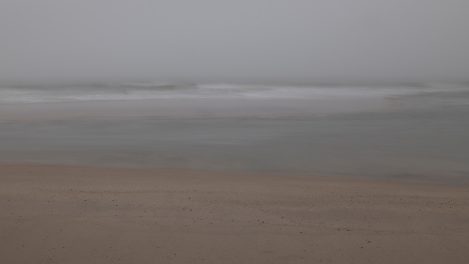
It’s now been more than ten years since my wife and I visited the German island of Sylt for the first time in October 2014. We were immediately taken by this unique landscape. Its exposure to the untamed forces of nature impressed us deeply.
Sylt belongs to the North Frisian Islands and is the northernmost island of Germany. It is well known for the 25-miles sandy beach along the west coast. Due to the exposed situation in the North Sea, there is an ongoing loss of land during storm tides. To the east of Sylt, there is the Wadden Sea, which ranges over to the mainland, which mostly falls dry during low tide. Since 1927, the island has been connected to the mainland by the Hindenburgdamm causeway. It was constructed for rail services only, the trains also transporting vehicles, buses and heavy trucks.
The northern and southern parts of Sylt are built up of sand deposits, while the central part consists of a geestland core, which becomes apparent in the form of the Red Cliff of Wenningstedt in the west. Facing the Wadden Sea in the east, the geestland turns into fertile marshland.
The Wadden Sea has a high biological diversity and is an important area for both breeding and migrating birds. Historically, the coastal regions were often subjected to large floods, resulting in thousands of deaths. Some of these also significantly changed the coastline. Numerous dikes and several causeways have been built. This makes it among the most human-altered habitats on the planet.
Moraines from the older ice ages formed Sylt like the mainland geestland. The sandy core was exposed to a strong current along the island's steep basement when the sea level rose 8000 years ago. The west coast was shifted gradually 6 miles eastward, while the island extended to the north and south. Beyond this, dunes drifted to the east by sand shifts and threatened settlements and arable land. Sand drifts were stopped partially by the planting of marram grass.
Sylt has repeatedly been endangered by severe storms to the point of breaking in two. The part of the island near the village of Rantum, which is only 500 yards wide, is especially threatened. Dating back to the early 19th century, groynes of wooden poles were constructed as a measure of protection against erosion. The constructions did not have the desired effect. The only effective means so far has been flushing sand on the shore, which began in the 1970s.
Being aware of the history and possible fate of the island, my wife and I stood in awe facing the forces of nature when we felt the sand of the western beach underneath our feet for the first time. We have never seen Sylt during the tourist season in summer. Instead, our first impression was a quiet period in autumn. This gave us the opportunity to explore the island hiking for hours on our own along the dunes, the Wadden Sea and especially the exposed west coast.
The second time we visited the island was at the turn of the following year. No fireworks took place at midnight, as they are forbidden due to the thatched roofs. Instead, people walked silently to the beach, accompanied by the ringing of church bells. The sea and waves were invisible in the darkness. We stood at the water’s edge, almost devoutly listening to the roar of the surf, feeling the wind and smelling the salty air.
After that, we returned during winter months twice again, and once also in spring, developing a growing closeness to this small part of the world.
In 2025, we arrived at the end of February. What we had not yet experienced before was a week of persistent fog. Visibility was sometimes only as far as 50 or 100 yards. The sea, sky and land seemed to merge. Making photographs under these particular conditions, it appeared appropriate to me to make also use of long time exposures in order to emphasize this phenomenon of visual merging. Most of he time it was not even possible to estimate the dimensions of the island due to the fog.
Sylt with its diverse facets – the rough sea at the west, the unstable dunes and the ever changing world of intertidal ecosystem in the east – seemed to be summarized in these images for me. Even the Red Cliff appeared only sketchy in such moments, although we were facing it at a distance of only 50 yards.
The mental and physical feel of vastness when walking along the water’s edge of Sylt is engraved in our minds. Maybe some of the images are able to convey this state of mind.
Issue 330
End frame: No Lilac Time by Kjetil Karlsen
It might be easy to assume that, as a landscape photographer, I draw most of my inspiration from others within the same genre. But that couldn't be further from the truth. I find myself far more inspired by work that lies outside the traditional boundaries of landscape photography—by photographers who create in ways I don’t personally master. It could be street photographers capturing the intensity and chaos of urban life, or artists working with abstract expressions that move me in ways I can’t quite explain—work I deeply admire, but know I don’t have the skills or mindset to replicate.
Kjetil Karlsen is one of those photographers I return to time and time again. His work is instantly recognizable and unmistakably his own. It’s not traditional landscape photography, nor is it easy to categorize at all. There’s something elusive about it. And yet, I connect with it on a very personal level—perhaps because he comes from the same remote region in the far north as I do. A place where childhood was steeped in stories of the supernatural—tales of strange creatures that fired up our imaginations and filled us with both fear and fascination. Karlsen’s work stirs the same emotions in me now. His photographs spark the imagination, and I love when an image can do that.
Some of his images feel like they could be pulled straight from a horror film. Figures—more creature than human—often appear blurred, lurking on the edge of visibility, usually within Arctic landscapes that feel deeply familiar to me: the mountains, the fjords, the coastline, and especially the dark, enigmatic forests. If I had to label his work, I would call it hauntingly mysterious.
Max A Rush
Max first got in touch in 2014, when we featured his Brockwell Park project in an exhibition at Carnegie Library Gallery. Since then, we’ve published four more articles on his photography and the camera he built by hand.
This year, after Max won International Garden Photographer of the Year, it felt like a good time to check in again—to see how his work has progressed and hear about his latest project: building another 5x4 camera.
Tell us about why you love landscape photography? A little background on what your first passions were, what you studied and what job you ended up doing.
I don’t think I knew anything at all about landscape photography when I was younger. What I really spent my time doing when I was a child was building and inventing things, drawing and painting and studying the natural world. When I was 5 or 6 I discovered Sellotape and started trying to make machines out of cardboard and paper, and then worked my way up through wood, plastic and metal. I built pottery kilns in my garden and a miniature foundry which I used for casting in aluminium, brass and bronze, so I became quite committed to making things properly. My granddad, who was a precision engineer and inventor of mechanical printing machines taught me a lot about engineering. I used my growing set of new techniques and materials to make the things I found interesting, and quite a lot of these were related to light: projectors, microscopes and telescopes. My grandparents sometimes took me to the theatre and I was always interested in the different kinds of lights, which I tried to re-create at home. When I was a bit older this led to creative conflicts as I was just as interested in acting and being in the spotlight as I was making the spotlight itself, although I’ve managed to keep doing both on and off. The last spotlights I made were quite substantial and I still use them for portraits.
At the same time I loved natural history and learned a lot about insects and plants. I bred moths at home, which my mum was interested in, and my earliest attempts at taking pictures were mainly to record insects I’d seen at home or on holiday.
We’d often go to France in the summer and the time I spent in the countryside and the mountains made a big impression on me. Even then, despite being in some spectacular places, I don’t remember the scenery as much as the insects or the lizards I’d try to get close to, although I did become very interested in the weather, which like a lot of things just seemed more intense and dramatic there than it was in England. I loved watching thunderstorms and was so curious about lightning that I built high voltage generators back at home to do experiments. It might seem difficult to reconcile these things but from making huge sparks in a dark room and roaming around under the big beautiful skies of France there was a kind of romantic admiration for nature that I felt alongside curiosity, and I don’t see any problem with looking at the world simultaneously as an artist and a scientist. Maybe the simple explanation for why I’m a landscape photographer is just that art and illustration were second nature to me and I had a particular interest in skies and plants.
4×4 Landscape Portfolios
Welcome to our 4x4 feature, which is a set of four mini landscape photography portfolios which has been submitted for publishing. Each portfolio consists of four images related in some way. Whether that's location, a project, a theme or a story. See our previous submissions here.
Submit Your 4x4 Portfolio
Interested in submitting your work? We are always keen to get submissions, so please do get in touch!
Do you have a project or article idea that you'd like to get published? Then drop us a line. We are always looking for articles.
Estelle Slegers Helsen
Leaving the Land
Dominique Philippe Bonnet
Eternal Stones
David Buchanan
Snowform
Ashok Viswanathan
The Western Ghats
The Western Ghats
I love travel and with it comes landscapes. A long time photograher since my school days over 50 years ago. I enjoy visiting the Western Ghats, a range of hills running on the west side of southern India. It's mainly forests and tea estate country and with scattered small towns hosting visitors.
At an elevation of 4000 - 6000 ft the weather can change from sunshine to fog and at times heavy rain. Morning and evening mist hangs over the hills and its a joy to create images that have mood and mystrey. For this i use both my digital and Analogue cameras the Rolleiflex and Hasseblad 500 cm.
Snowforms
Snow changes landscape to create intriguing forms which have a transitory existence before being obliterated by the next storm or by thaw. This ongoing project started with the capture of my first Snowform in Norway's Rondane National Park in March 2008, although my search had started at least a year before. Since then, I have found them in: other locations in Norway (Huldreheimen, Skeicampen, Setesdalsheiane, Lyngen Alps); Glen Feshie and Strath Nethy in the Cairngorms; Vanoise, Valmorel and Queyras in France; Yllas in Finland; Seefeld in Austria; Leysin in Switzerland; and the Pentland Hills above my home in Edinburgh.
Despite minimal post-processing, the work is pleasingly abstract and ambiguous. Influences include the paintings of Alison Watt, and the sculptures of Barbara Hepworth and Henry Moore. Recently, I made a small book of images from this work
Eternal Stones
Megaliths, these monumental structures erected thousands of years ago, remain timeless enigmas, witnesses to a humanity that continues to challenge our understanding. Whether aligned as standing stones, grouped in circles, or raised as dolmens, these imposing rocks captivate us with their eternal presence and mystery. Who erected them? Why? The answers are lost in the mists of time, leaving room for imagination and a sense of wonder unique to humanity when faced with the unknown.
This photographic project was born from this fascination, from a desire to capture the symbolic power and raw beauty of these mineral colossi. Black and white emerged as the ideal medium: it transcends the rugged textures and rough edges of the stones, intensifies the interplay of light and shadow dancing across their surfaces, and dramatizes the relationship between these timeless monuments and the ever-changing skies above. The soft light of a misty morning or the dramatic contrasts of an approaching storm provide a natural stage that elevates these human constructions, anchoring them in a profound dialogue with the elements.
To photograph megaliths is to capture the silent conversation between time and matter. Each stone inhabits the landscape while resisting it, as if carrying an ancestral memory, a forgotten message. These images aim to evoke that tension between the ephemeral and the eternal, between the fragility of human existence and the enduring presence of these giants that have outlasted us for millennia.
This project is an invitation to slow down, to observe, to let the mind wander before these immovable witnesses of the past. They are not merely blocks of stone; they are symbols, portals to another time, and perhaps echoes of an ancient spirituality we have long lost. Through this contemplative and graphic exploration, I sought to celebrate the raw poetry of these monuments, their visual power, and their ability to remind us that, in the vast expanse of time, we are but passing visitors.
Leaving the Land
The sea is a vast expanse, seemingly empty. This emptiness calms your body and mind. However, the sea is often unpredictable, shifting from exceptionally violent to remarkably tranquil or any temperament in between. It provides a sense of peace as you walk along the shore and breathe in the fresh air. As you gaze into the distance, the sea frees your mind of thoughts.
In Leaving the Land, photographer Estelle Slegers Helsen takes you on a journey along the coast and captures what your eyes see as they move from land out to sea. Her photographs evoke the liminal place where land and sea meet. The square format constrains the wide-angle view and triggers your imagination.
Through long-exposure photography, she creates a soothing depiction of the sea, embodying stillness, serenity and simplicity. The images evoke dreamy scenes filled with abstract geometric patterns that our eyes can’t see and our brains can’t imagine. Moving objects and people become translucent or disappear. Waves and water transform into an ethereal seascape, creating a misty, magical world that contrasts with static elements like piers, lighthouses, groynes, breakwaters, rocks and offshore wind turbines. The visible becomes invisible while your eyes focus on what you can’t see.
After The Tide
Below the weirs at Gloucester, the movement of the tide on the River Severn reveals its powerful influence on the exposed riverbanks. With each ebb and flow, the landscape undergoes a subtle transformation as strong currents tirelessly shift mud, sand, and stones. This relentless movement crafts a dynamic topography, where the water meticulously sculpts the earth, carving out new shapes and contours. Debris briefly settles upon the banks, taking a moment to rest before the river, once again, sweeps it away on its continuous journey to new destinations.
I am a relative newcomer to landscape photography, having spent much of my career focusing on people and portraiture. My transition to landscapes has awakened a fascination for detail that I hadn’t previously recognised. In this series, I find myself drawn to the small, overlooked elements—square patches of riverbank no larger than a metre across, positioned directly beneath my tripod. These fragments distil the essence of the landscape into intimate compositions, revealing an elemental ecology that might otherwise go unnoticed. Finding the right patch requires a slow, deliberate walk, eyes scanning the ground ahead while ensuring I don’t leave a footprint in the wrong place and spoil the shot. This process has almost become an obsession for me–a treasure hunt for the next object, interesting pattern or shade of colour.
After The Tide began in 2020, initially as an offshoot of another project exploring the River Severn. It was the river’s tidal nature that captivated me—its twice-daily reversal of flow, carrying vast quantities of debris, both natural and human-made. The first time I witnessed an incoming tide, I was struck by the sight of huge trees drifting past at speed, like tall ships racing toward Gloucester—only to surge back out toward the sea hours later.
The river's many sandbanks serve as temporary resting places for some of these wayfaring objects, gently deposited and left until the next tide comes along. At Garden Cliff—a rapidly eroding wall of fossil-rich deposits on one of the river’s bends—this process is particularly visible. I’m captivated by how the Severn’s geology has formed into multi-coloured sandstone deposits; this fragile rock easily disintegrates, reshapes, and is washed away by the strong currents. The textures and shapes become integral to my compositions, with cracks in soft rock forming geometric patterns and asymmetric structures. Waves shape the sand into intricately flowing lines, and the occasional man-made object is a stark reminder of pollution and the fragility of the river’s ecology.
At 354 km, the River Severn is Britain's longest river, winding its serpentine route from the hills of Plymlimon in Wales to the Bristol Channel, gathering countless tributaries along the way. The estuary, stretching from Gloucester to the Second Severn Crossing, spans some 70 km, and it is here that the tide meets the outflow, creating the famous Severn Bore. This tidal wave—sometimes several metres in height—surges inland at speed, a challenge eagerly met by surfers who attempt to ride its advancing crest.
As anyone photographing in a dynamic environment will know, understanding the rhythms of nature is essential. This came to bear when I did not understand how the tide times affected the river. On my first walk along one of the exposed sandbanks, I had checked the tide tables and felt confident in my timing. Camera on tripod, bag heavy on my back, I was absorbed in composing a shot when I heard an ominous sound behind me—the unmistakable rush of water. I turned to see a wave, nearly a foot high, racing toward me. A clumsy, scrambling retreat up the riverbank saved me from being caught. It was only later, after some head-scratching, that I realised my mistake. At that location, the bore arrives a full hour before high tide. Now, I carry a bore calculator—and I’m far less inclined to venture onto the sands without careful planning.
Garden Cliff, in contrast, offers a more stable vantage point, where I can explore at low tide without the same immediate threat of rising water. These quieter moments—when the riverbed is most exposed—allow for a different kind of observation, one where I can take my time, fully immersed in the process. I’ve learned that creativity flourishes when I’m at ease with my surroundings, rather than battling against them.
This connection—the intense experience of being present in the landscape—has reshaped my approach to photography. It has made me realise that the final image is not the ultimate goal, but rather a record of the journey. The photograph becomes evidence, a trace of an experience that cannot be fully captured. This shift in perspective has changed how I see my own work. Perhaps it is a radical thought for a photographer as it changes the significance of our work and how we see it.
Any Questions, with special guest Damian Shields
The premise of our podcast is loosely based on Radio Four's “Any Questions.” Joe Cornish and I (Tim Parkin) invite a special guest to each show and solicit questions from our subscribers.
Blåtone
One evening in October, the three of us sit together with a package on the table between us. Photographers Wenche Dahle and Lars Andreas Dybvik, along with book designer Bodil M. Olsen. The book Blåtone has arrived, fresh from the printing press. A complex book design, none of us has seen before, gives room for many errors and misunderstandings. We open it and see three books, each with its own colored cover. As we start flipping through the pages, we find no errors. Everything has fallen into place. The pages of different sizes, the cover reappearing a few pages in, and the thin, almost transparent paper in the latter part of the book. Everything is as it should be. We toast with prosecco, relieved. Outside, the evening has taken on its unmistakable blue tones.
We rewind nearly three years. At that time, we were holding a masterclass together and came up with the idea of creating a diptych as a gift for the participants. One image from each of us, combined into one. Printed, signed, and numbered. This is how the very first artwork in what would become the Blåtone project was created—a stylized reindeer combined with a drone photo of ice on still water.
Diptych as an art form traces back to antiquity. Art a thousand years ago was something different from today and served another function. The church’s need to communicate biblical stories to a largely illiterate population meant that images were the solution. By combining multiple images, they managed to tell a story. Two images—a diptych, or three—a triptych. One of the world's most famous works is The Garden of Earthly Delights by Hieronymus Bosch, completed at the very beginning of the 1500s—a triptych depicting the Garden of Eden, Earth, and Hell.
Today, it is not uncommon for photographers to create such compositions. However, when we decided to explore this, we chose to push the norms a bit. We quickly agreed that we did not want a 50/50 division of the surface. We let our instincts decide, and some of the compositions show only a narrow strip of one of the images. We aimed solely to focus on the visual weight one image exerted on the other. Could we create friction, a dissonance, a Blåtone? Could we create pairings that together provided an experience beyond what our individual images conveyed?
It is perhaps appropriate to elaborate on the term Blåtone. The word is Norwegian and can be translated as blue-tone or blue-note. The immediate understanding for many is the color blue. For us, it is the musical meaning that is guiding. Blue notes in music are perceived as dissonant ("off" or "out of tune"). The term is associated with blues, jazz, and folk music. Blue notes are created by raising or lowering a tone, producing friction in the harmony. And that is exactly what happens in the diptychs.
Both of us are genuinely concerned about biodiversity and share a strong worry about how humans impact nature, both globally and locally. A dissonance has emerged between humans and nature. Has humanity moved that fateful half-step away from the rest of nature, out of harmony? These aspects are important to us both and have played a natural role in shaping the diptychs.
We started with 50 images each, which were printed and spread out so we could see them all at once. We worked this way for several days and eventually narrowed it down to 20 diptychs. Only at this point did we decide to make an exhibition of the material. Up until now, the entire project had been a playful experiment to see if we could create something we found interesting enough to share with others. This was an important aspect for us—not having to perform or meet a set deadline. Keeping it as a passion-project driven by the desire to collaborate was crucial. Experience shows that in creative work, distance from what one creates is healthy. If one can detach and reset the immediate perception, one sees the work with fresh eyes and can be one's own critic. We worked consciously on this.
The exhibition premiered in the summer of 2023 at SAGA Center for Photography. The images were printed as two separate photographs and mounted together in frames. This made each framed piece unique. We could have combined them digitally and made life easier, but we wanted to retain elements of craftsmanship in everything we created.
One of the feedback points we received from the exhibition was whether we should also create a book. This was not part of our plan at all. Producing what would essentially be an exhibition catalog seemed uninspiring. However, during the fall of 2023, a new idea took shape. The diptychs were created by concealing parts of one image behind the other. Only a few of them consist of two complete images side by side. What if we could design a book where one could "fold up" the diptychs and reveal what had disappeared in the process of combining the images? A highly ambitious task that would require extensive work and professional design assistance. Just explaining precisely what we envisioned proved challenging. So, we made a physical mock-up by cutting and stapling pages together to test the idea. Just as importantly, it provided us with something to show others to communicate our vision. Another crucial aspect of the potential book project was the financial side. Bringing this to life required professional help, which is expensive.
We reasoned as follows:
Photographers around us spend huge budgets on constantly upgrading their equipment and traveling. Why shouldn’t we spend our money on a book if it gives us the same deep sense of purpose? And so we did.
It was important for us to find a designer unfamiliar with the project. We wanted resistance and a fresh perspective, not a yes-person who respected us and assumed we knew best. Fortunately, we found exactly the right person locally, which made working on the book not only more practical but also more social. We learned a lot about systematic work and about being creative without letting creativity take over. Through a thorough analysis, we defined some key concepts—anchors—related to the book.
As mentioned, explaining in words how we envisioned the book was difficult, and even designer Bodil remained uncertain for quite some time. To attempt an explanation: The book has a width of 24.5 cm. Some pages are shorter—20 cm, for example. This means that when you see the 20 cm page, you also see 4.5 cm of the page behind it, as it extends further due to the book’s full width. When you turn the page, you get to see the entire page that was previously partially hidden. In this way, we have created an interactive or experiential book. You get a spread where you see a diptych, and then you can lift away one image in the diptych to reveal the hidden part beneath.
What thrilled us even more was that Bodil introduced several intriguing design elements closely tied to our key anchor—dissonance. The book uses four types of paper, creating a dissonance between glossy and matte textures. The text has a slight displacement in the middle, reinforcing our diptychs both visually and symbolically. The book’s cover reappears inside after a few pages. We love these subtle details that make the book feel like a small treasure chest—full of surprises to discover as you flip through the pages.
We have given several artist talks in connection with the exhibition. A common question is whether we have disagreed or argued. The answer is no—we set ground rules early on, which made the collaboration smooth.
We do not count square centimeters. Who has the most or least image space is irrelevant. The final visual expression is more important than the individuals.
We are not in a hurry. We both have our lives to live and families that should not be neglected.
The one most suited for the task can do it. Suitable does not mean "the best" but the one who has both the time and the competence. We wish each other success without measuring each other's contributions.
Now, we look forward to showcasing both the exhibition and the book in galleries and festivals. Nature does not need us, but we need nature.
Everything is interconnected, balancing on a knife’s edge. Nature always finds the best relationship between dissonance and harmony - the perfect Blåtone.
A Year at Duncansby, 2022
Nearing the end of 2021, I found myself in a mindset that I’m sure many of you can relate to, though enjoying going out with the camera, I felt a lack of motivation and direction.
Looking forward, I questioned what the solution was. I’ve never been a planner, so even that question put me in uncharted territory. I’ve never thought about doing a project, but that quickly sprang to mind, but what? For years, I’d thought about gathering enough photos for a book on the Caithness Coast, perhaps I could complete some areas I was lacking, but that felt too vague and what I was already doing. I needed something fresh, more specific, a smaller area perhaps, but where?
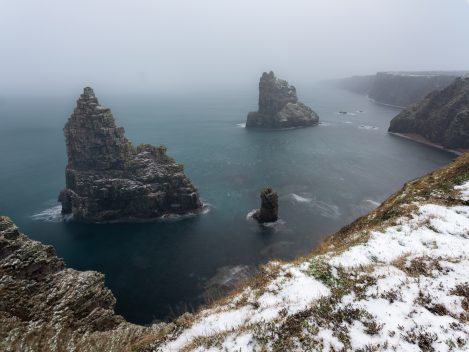
The main two stacks and the smaller Tom Thumb, a mere 40 ft tall as a snow shower passes. Over the year I took this over 30 weeks and sometimes just sat and soaked in the view, a spot I’ll never tire of.
I quickly remembered my thoughts when, after lockdown, we were going to be allowed to venture 5 miles from home. At the time, I questioned where I would go, 3 miles to the beach or 5 miles to Keiss castle, which I’d done a 4x4 on here a few years earlier, but thinking of doing it over a year, was there enough scope there? As tempting as that was, the place I was longing to get to at that time was Duncansby and the sea stacks.
The sea stacks and the rugged cliffs are an exception to my local coast not being obvious photos, as the most North Eastern point on the UK mainland and on the feared Pentland Firth it was known to mariners as “Hell’s mouth” it also looks out to the now uninhabited island of Stroma, my father’s birth place. It was my go to happy place and only 20 miles away, decision number one made.
Should I shoot one view and repeat it each week? Very tempting, but knowing that was likely to have 40 near identical grey flat skies and rain, I thought it needed more variation. There are 3 or 4 obvious popular views, but again, I felt it needed more. The stacks are on the east coast, stretching a mile south of the lighthouse, so tied to early morning light, but the mile west of the lighthouse, the flatter north coast gave more options for light directions, a beach, the view to Stroma and over to Orkney. Decision two made, but rather than shoot the 3-4 popular views, try to find something different.
The final decision was how often, I felt that was a necessary part of the structure I needed, a 365 wasn’t realistic, monthly lacked the dedication and effort I was looking for, so that left one a week. I thought that would put on enough direction and focus, but to add a little more “accountability”, I’d set up a website www.Duncansby.me and post the photo of the week as I went along. Later in the year, I thought that if I put everything in a book, I could include more than just the 52 weekly photos.
It seemed perfectly simple, but from week one it didn’t quite go to plan. There was a lot of sea movement, and I picked out the lesser stack and Tom Thumb as a different view, which is the first image in the book. I was happy with that, but just before packing up for the day, I caught the anticrepuscular rays looking north. It was too good not to use so week one I began with one of the most popular views I was trying to avoid!
Six weeks flew by, and I was really enjoying the challenge, but then I faced my first and only real dilemma. It had been in my mind to go over to Orkney, and I booked a last minute long weekend on Hoy, it wouldn’t hurt to miss a week, I initially thought, but that quickly changed to missing a week would be the end of the challenge I’d set myself. As I’d have no daylight before travelling, what could I do?
Maybe some astro, but the forecast was cloudy for the next few days. I’d previously shot the road twisting up the hill to the lighthouse in daylight, could I do it at night and catch the car’s light trails? The following night, bitterly cold with 30 mph+ winds blowing in sleet showers, guess where I was? Yes, setting up the tripod and putting the camera on a timer, then driving up and down the road to the lighthouse!
Another issue that cropped up early was trying not to repeat similar views too close together, sometimes that resulted in not using what I’d consider to be the best photo. Week 13, and I used an image of the Geo of Sclaites, partly for variety, but it’s an inspiring spot to see the 30M high sides of the narrow geo. On getting home and posting it on the website, I thought I’d check the map and see when the sun would rise in the centre, wouldn’t you know it, only two weeks away!
Two weeks later, I went out to get another view for just after sunrise and thought I’d quickly get the shot looking out the geo, then move to the other shot. It was perfect, even getting a sun pillar! Slightly disappointed I couldn’t use it I thought it wasn’t all a loss, I could get the same alignment in 5 months, the time passed and I went out four days over two weekends only to be defeated by low cloud.
I had started thinking there might be enough content to make a book again. I could add in some explanations, use a second or third photo from the week, maybe tell a few stories of things that happened. That thought took a bigger boost in week 20 when I rediscovered a Line of poetry carved in a boulder at Sannick beach. I hadn’t realised what it was when I found it a few years earlier.
This time I researched it and it was by the Chilean Nobel Literature Laureates, Pablo Neruda and wow did it take me down a rabbit hole. Over the next few weeks I went on to discover another 28 unknown carvings, it took me on a journey from my little two mile stretch of coast on the furthest NE point of Scotland around the Globe to Chile via University Spanish literature experts in the UK, Europe and the Americas, speaking to sculptors, ending up on the Radio 4 program The Poetry Detective.
Later in the year I started to look into producing a book, reading articles, watching vlogs and the common themes seemed to rely on pairing images, creating a cohesive flow and consistent style. My project was the polar opposite, it’s main reason was to find different shots so I put it to the back of my mind again.
On completing the year I was happy with the results and again doing it as a book cropped up, the following week a good friend who I highly respect both his opinion and photography was staying in the area. I took a few prints of the alternate shots when I visited and was going to ask his thoughts if a book was possible. It was a good catch up getting all the gossip from the outside world, talking photography, as he had said through the year he enjoyed the project which he still felt on it’s conclusion, I was just about to ask if he thought there was a book in it and he said “Have you thought about putting it together as a book?” in my mind I screamed YES!!! And punched the air but before I could say anything he said “just one for yourself!” speak about deflated!
That was January 2023, I had brief thoughts repeatedly after that but between the standard book guides and what I took as a knock down from my friend I always talked myself out of it. Then in April this year 2024, I decided there was only one way to find out, just go for it, I could always stop if bringing it together wasn’t working. I chose one of the printers that will do from one to as many as you want thinking it would be a nice simple template, how wrong I was! It took a lot more effort and learning to bring together than I expected and the result is an A4 landscape, 116 page hard covered book, on 170 GSM silk paper, with 114 images. It is available direct from me at ajrs@live.com for £35 + £5 p&p Despite some big upsets I feel I’ve learned a lot and the next one will be easier. I am happy with the final result and would encourage others to try but I say “next” firmly tongue in cheek then again there is that original Caithness book idea!
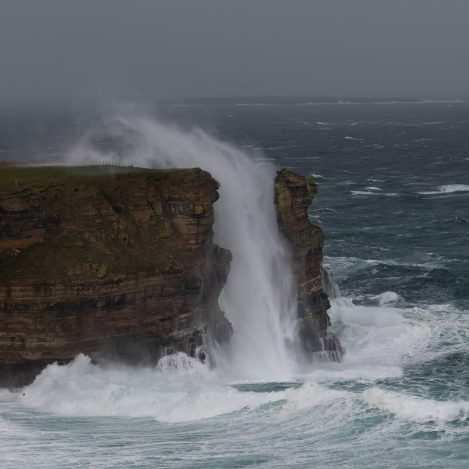
The wind had been out of the SE for 3 days and as I was braced to a fence strainer, I measured gusts over 100mph, occasionally blowing the spray off monster waves up over the head some 180 feet high!
- The view south of the two main stacks and Thurle Door matching their jagged appearance
- The main two stacks and the smaller Tom Thumb, a mere 40 Ft tall as a snow shower passes
- Looking over the Pentland firth to Stroma, illuminated by late evening rays
- Some backwash sweeping round a stone on the beach as another wave crashes in.
- The view North with the anticrepuscular rays that started the Website.
- A tangle of kelp on an overcast day at low tide.
- Unplanned Geo of Sclaites and two weeks later.
- “The moon lives beneath her skin” Pablo Neruda and the adventure begins
- The big stack looking South as the cliffs catch some early morning light
- The wind had been out of the SE for 3 days and as I was braced to a fence strainer, I measured gusts over 100mph, occasionally blowing the spray off monster waves up over the head some 180 feet high!
Issue 329
End frame: Wild Dusk Watchers by Dan Harnett
Nature's Hidden Sentinels
It's a profound pleasure to contribute to On Landscape's End-Frame series, sharing an image that has captivated my imagination and artistic sensibilities. When considering which photographer's work to highlight, the choice emerged naturally and without hesitation: artist Dan Harnett.
I admire Dan's creative work and his artistic approach for years.
The artwork I've selected—Wild Dusk Watchers—represents a stunning convergence of his photography and chromatography that transcends conventional nature images. For me Dan’s unique approach, blending chemical process with artistic vision, reveals the invisible narratives embedded within natural materials.
When I ask Dan where he gets his inspiration, he told me: “I am inspired by a deep connection with the sea, my work blends photography and chromatography, spanning abstract compositions and still life studies. My photography captures human relationships with the sea and land, while my chromatography practice reveals the invisible—patterns, pigments, and chemical traces inspired by seashells, seaweed, driftwood, tidal treasures, leaves, twigs and minerals. These vibrant patterns reflect the layered narratives of maritime voyages, bridging science and art.”
Wild Dusk Watchers utilizes raw materials from a chestnut tree—leaves and nuts gathered from the forest floor at a country house museum in North Yorkshire. What strikes me immediately is how these ordinary natural elements have been transformed into something extraordinary and evocative, and finally into a piece of art.
William Nourse – Portrait of a Photographer
In the fjords of Chile, somewhere between Ushuaia and Puntas Arenas, I watched William Nourse lean over the edge of our sailboat, not to capture the looming cliffs or moody skies like the rest of us, but to photograph chunks of ice slicing across the Starboard of our boat: small, graphic details most of us ignored without a second glance.
Later, when I saw the image, it felt more like a Rothko painting than a landscape photograph. Simple, precise, and quietly charged. It was then I realized that William isn’t chasing drama; he’s chasing form. And beneath that form lives a question: what does it mean to witness beauty in a world we’re watching slip away?
Daragh Muldowney
When you print an image, you never know what might happen. In Daragh’s case, exhibiting and selling photographs led him to commit himself fully to selling prints. Although he stumbled into photography through a love of outdoor activities, the two feed and reinvigorate each other. He has a particular passion for working in projects, often contemplating cold places and in so doing, their fragility.
Would you like to start by telling readers a little about yourself such as where you grew up and what you were interested in? Did you have a particular set of studies, or vocation, that you initially wanted to pursue? I sense that you were maybe more of an outdoor person.
I grew up in Dublin and the outdoors was a big part of my life… lots of hiking in the Dublin/Wicklow mountains with family and scouts. Also, lots of sailing in the Irish Sea.
I was obsessed with rugby in school and was becoming half decent until I tore my ACL (anterior cruciate ligament), which ended my rugby career. The repair of the ACL back in those days was not what it is these days.
As regards knowing what I wanted to do… I hadn’t a clue… I ended up doing economics at college here in Dublin, something that I wasn’t interested in. I loved the social aspect of college, but the course was a bit of a drag. After a summer trip to the USA, I became interested in surfing and that became a new obsession over the years.
I loved the outdoors, and that same trip to the USA, we bought a van and drove from East to West coast, staying and hiking in many, many National Parks as we travelled across. This really opened my eyes further to Nature’s wonder.
You fell into photography through another passion. At what point did you decide that this could be the career?
Yes… I did a PADI open water dive course in Florida, and it honestly blew my mind. I felt like I was flying on another planet. The dispersion of light reflecting under the surface was a spiritual experience for me. When I returned to the surface, I was given a questionnaire to fill out reviewing my experience, and there was a checklist as to other areas of diving I might be interested in. Underwater photography was one of them. Something clicked for me then, and I decided to buy an SLR and learn the mechanics of photography… with a view to returning underwater at some point. I bought a Canon AE1 with multiple prime lenses and began to snap away, making plenty of mistakes.
I shot all sorts at the beginning… lots of travel photography as I travelled extensively through Central and South America, Australia, New Zealand, South East Asia, India and Nepal.
After trying many genres of photography, which I was enjoying immensely, I got an extra lift when I started shooting abstract patterns, forms, and colours within Nature. The energy I felt while shooting, connecting me to Nature while staring into beauty, was life changing. And reviewing the colour transparencies when processed extended this magical experience. So I began shooting more and more in this style. I got myself a macro lens which enabled me to view the natural world with a new eye. Details, patterns, shapes, colours, in Nature all fascinated me. I loved the abstract images that could be made, giving the viewer an image that they would be unsure of what they were looking at, but all the while enjoying the natural forms and drinking up the colours.
Should landscape photography always please us?
To start with a direct answer, I would say there is nothing wrong with landscape pictures that please us. Every issue of On Landscape features stunning pictures of pristine and wild landscapes.
I can look at them with great pleasure and admire the makers’ skills. And to be honest, these are often skills that I lack. I don’t have the patience to wait for the right light, etc. But would I really want those skills? I discovered that I am often more fascinated by pictures that I don’t immediately recognize or understand—no ‘celebration of recognition’. Or I wonder why the photographer made this picture, and I am caught by the question, ‘What is it?’
This started with my first experiences while being outdoors with the ambitious intention to make ‘good, impressive pictures’ (I stopped photographing for some years when digital techniques appeared). Outdoors meant with a backpack, several days self-sufficient through the Scottish Highlands. This way of travelling is always a mixture of excitement, loneliness, musing and desire. Without a doubt I can travel stimulated by wanderlust,‘fernweh’and with the undermining burden of homesickness. Elusive and contradictory.
Maybe because I live in a flat country, all mountains make a big impression, something I cannot comprehend. And, maybe also because of the way I travel, this landscape is sometimes beautiful and sometimes threatening. Slightly disconcerting, no protection. The space and silence are overwhelming, I can feel welcome, and I can feel completely lost.
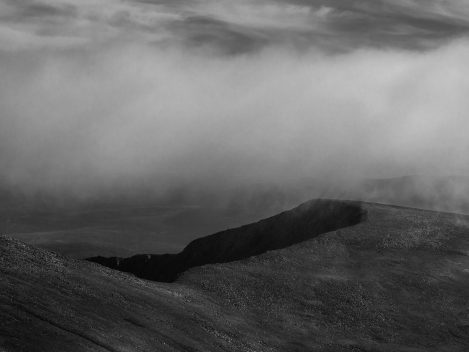
Cairngorms, the making of this picture was determined by conflicting emotions, the overwhelming impression of the land, the feeling of being lost but with the paradoxical sensation of how beautiful this experience is, in this powerful land, the rising and disappearing fog.
Somehow, I wanted to see these mixed emotions in the pictures. However, initially, every time I looked through the viewfinder, I could never capture this feeling, as if it disappeared at the moment I wanted to make a picture. Looking back, it was always disappointing. I had no idea what was going on. It seemed that I had to rediscover photography again.
Doubts. Lots of doubts. Later, I understood that I needed those doubts to discover my way of making pictures. For a long time, I always made pictures of things. Buildings mostly. What I was now looking for, but wasn’t fully aware of yet, was something that is nothing. Resulting in the question of what a landscape actually is. What a landscape photo is.
Making plans, setting goals. Knowing where to go to and knowing exactly why. However, an interesting thing that can happen is an unexpected change in topic. Some years ago, driven by the text and reflections of Petrarch, I visited Mont Ventoux. Walking through woods and steep stony planes, reaching for the top. Making photos up there had to be wonderful. But what I didn’t know was that my personal journey had yet to begin. At the start of the descent, I was tired and thirsty. Halfway through and in the beginning of twilight I passed some caves. This was a bit scary, uncanny at this time of day. But as caves are, they also provide shelter. The darkness, the shape of the rocks and small traces of people became an uncomfortable but irresistibly more attractive subject to photograph. A little uneasy with the suspicion that a monster could appear at any moment. But what seemed more likely was an unexpected reflection of myself.
As we know, it’s not always the destination where you are heading for, but the road that leads you there. You think you know what to show from the earth, but what is the earth asking you to show?
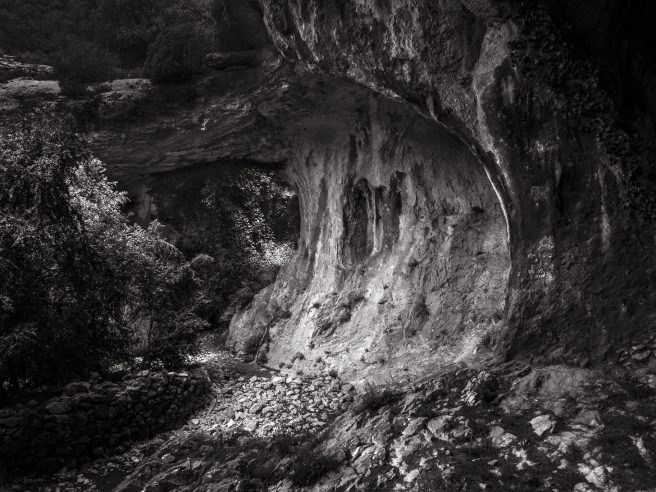
Unexpected caves during the descent of Mont Ventoux and a monster that appears at the end (with rustling sounds of wild boars).
What also brought me to the big question is to what extent we, as landscape photographers, are responsible for showing what is happening in nature today. Climate change and global warming, whether caused by humans or not, can no longer be denied. The immense use of raw materials we extract from the earth will never return to their original state and place. The consequences will be devastating in a relatively short time, which is absolutely worrying. How do we deal with that?
So, one thing is showing great nature photos. Impressive beautiful pictures, hoping this leads to awareness and change in behaviour. That we realize how great and vulnerable the world can be and that the world is the measure of everything. This is one approach. Confronting ourselves immediately and explicitly with the brutal consequences of what we do, is another.
Somehow, perhaps caused by an introverted character, I am looking for a kind of consideration. I don’t have the intention to literally show what is going on. I prefer pictures that are open for interpretation. Taking a step back, making room for introspection. It is not about the ‘how’ and ‘why’ in the world, but the fact that we are here and that we can be aware of that. I can find that extremely fascinating.
In this I discovered the profound significance of history and events in relation to landscape. Landscape and history became an important guide that led met to the subject of some of my photography. This started with a series of bunker pictures I made in the dunes and flatlands of my country. Unsatisfied by the more or less documentary style of the first pictures (‘thing – pictures’), I started looking for what really captivated me about these buildings. Violence is an abomination to me and I see a bunker as a rude intervention in the landscape. I sometimes work in grey light conditions and many times I had the experience of how ‘unheimisch’, eerie these buildings are in the landscape. But somehow it is in these circumstances that the bunkers show their true nature. Wandering through the country I discovered that what fascinated me was the contrast between the visible beauty of this country and the hidden history of atrocities. So the bunkers became a metaphor of who we are and how we treat the land. And so there appeared my landscape photography: a visual story of beautiful landscape, history, events and memory.
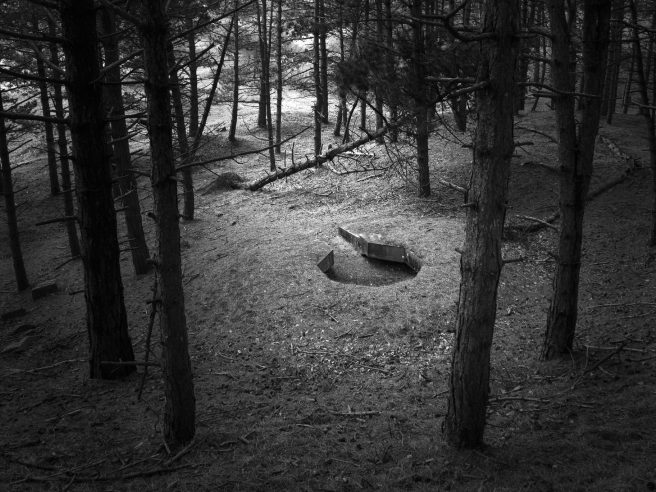
Land and Traces. A project about land and history. How do beauty and atrocities in the landscape relate to each other?
Somehow, taking a step back, I find it necessary to become aware of our existence and our relation to the world. And that, in my opinion, by now we have a disturbed relation with nature, a different way of life and behaviour as a result of the Neolithic Revolution. And I doubt if we are capable of changing this. I am not suggesting here that we should go back hunting and gathering again –although some politicians already seem to exhibit this behaviour- but we are faced with the task, the challenge of coming up with something new, of reinventing ourselves.
While writing this article, I’m doing some research for the next project, which will be a continuation of the land and bunker project. For this, I want to visit the borders of Italy, Austria and Slovenia. Great mountain areas with a lot of history and remains of buildings from the First World War. It is unimaginable that they built and fought on mountains above 7,000 feet.
The increasing use of all kinds of digital screens has created even more distance from the world (nature and people) around us. And perhaps, due to a slight but increasing resistance, the desire arose to start working with film again. Can’t explain exactly what it was, a wish to see photography more as a craft next to digital work. Also, I have never seen a digital black and white print that had the feel of a gelatin silver print. So what to do?
The very beginning of this all was making my own 6 x 12 camera. Well, 18 months later, I had to make the enlarger myself too, it seems I have now completely returned to film. Impossible to stop myself. It’s still experimenting and discovering, because this working method forces me to look again, to rediscover the subject matter.
The camera, the film, the landscape, making composition under a black cloth, making prints in the dark room. There are no digital screens under that black cloth, only the ground glass. And time passes more slowly.
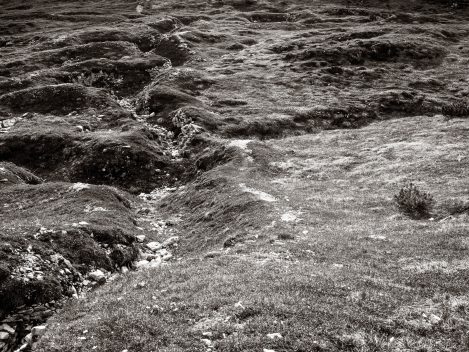
Landscape and memory, the border area of the First World War. Also here a landscape of great beauty and dark history.
It’s all slow but it feels intense, real. As a preparation, another trip to the Scottish Highlands is planned, before I travel to the historic grounds of Italy and Slovenia. And I have to prepare myself for a backpack with a big camera. But I can hardly wait to discover the country and what the earth will show me to photograph. And I have no idea if these photos will please us.
- Land and Traces. A project about land and history. How do beauty and atrocities in the landscape relate to each other?
- Tears of the Rhine. A series about the old courses of the river Rhine.
- Unexpected caves during the descent of Mont Ventoux and a monster that appears at the end (with rustling sounds of wild boars).
- Unexpected caves during the descent of Mont Ventoux and a monster that appears at the end (with rustling sounds of wild boars).
- Cairngorms, the making of this picture was determined by conflicting emotions, the overwhelming impression of the land, the feeling of being lost but with the paradoxical sensation of how beautiful this experience is, in this powerful land, the rising and disappearing fog.
Les Bisses du Valais
God the Father, on a visit to the Valais in the company of St. Peter, offered the Valaisans who complained about the retreat of the glaciers and the aridity of their climate, to take care of the problem of water if they wished. St. Peter saw that the locals were hesitating, and encouraged them to accept the offer, telling them that God himself was a Valaisan. Was it this remark that got them thinking? In any case, they declined and from then on the Valaisans had to make up for their lack of water themselves. ~Rose-Claire Schüle, 1995, Les bisses dans les récits traditionnels (my translation)1
One of the fascinating things about the study of hydrology for me, as a hydrologist, is the long history of modification of natural sources of water by man. There are records of irrigation systems developed in China going back some 5000 years; there is the water supply system required for the Gardens of Babylon that appear in the Bible; there are the ancient underground canal systems in the middle east bringing water from the mountains to cities such as Tehran (called quanats in Iran, but also known in Iraq, Afghanistan and India); and the extensive aqueduct systems of the Roman Empire2. The “bisses” of the Valais in Switzerland are not of the same order: they are small man-made water courses that were used to channel water from the heads of valleys around the slope for supplying water to villages and alpage pastures. Some are still in use today. They are quite variable in size, slope and construction but all represent an enormous effort by both the men and women of the communes involved to both create and maintain them over long periods of time3.
Indeed, one of the wonderful things about the mountains of Switzerland is the way in which humans have, over centuries, made use of a challenging - if beautiful - landscape. Swiss bergers or armaillis still take herds of sheep, goats and cows up into the alpage pastures in summer, even where the animals may still have to climb several hundred metres to alpages without road access. They still produce cheese from the milk even in places where it is still only possible to bring the cheese to market on the backs of mules (some of the very best Gruyère and Etivaz4 cheeses come from such alpages in the Cantons of Fribourg and Vaud). They still use some amazingly steep slopes for the production of hay for winter feed for the animals, sometimes so steep that that the hay is still collected by hand raking. It is certainly true that some alpine pastures and hayfields have fallen into disuse and are gradually being reclaimed by trees, even at high altitudes. Despite all the new construction that is widespread throughout Switzerland it has one of the highest percentage reforestation rates in Europe.
But summers in Switzerland can be dry, and to maximise hay production and the number of cuts for winter feed that can be made, water is needed. This led to one of the most remarkable ways in which humans have modified the alpine landscape by the construction of the “bisses”, particularly in the Canton of Valais (or Wallis in Swiss German5). These channels bring water from a reliable summer supply (often glacier melt or a limestone spring source) to where it was needed, especially for the irrigation of hayfields, vegetable plots and vines. Without irrigation water, it has been estimated that the area has a water deficit of about 300 mm (or litres per square metre) over the summer.
Bisses are already documented in some of the first manuscripts surviving from the region in the 13th Century. The Valais historian Pierre Dubuis has put forward the hypothesis that up until the middle of the 14th century agriculture in the Valais was mainly producing cereals, which did not require irrigation. By 1350 the plague had decimated the local population, causing them to gradually abandon this type of cultivation. The agricultural land available was turned into pastures and hayfields which favoured the development of breeding livestock. The numbers of livestock increased dramatically and consequently the hayfields required extensive irrigation to produce the winter feed. One of those early channels, the Bisse de Riederi, which runs from Blaten to Ried-Morel near Naters, can be traced back to 1385 and was used until the 1940s.
The statistics describing the bisses of the Valais are impressive. The first comprehensive inventory was made by an engineer, Léopold Blotnitzki, in 1871 who found a total of 1536 km of constructed channels. A later survey by Fritz Rauchenstein in 1907 found 80 additional channels that had been constructed since 1870, and a total of 207 bisses with a length of 1400 km. A modern valley by valley inventory lists a total of 413 bisses7, with several of the tributary valleys having more than 20 listed. The longest listed is the Grand Bisse de Saxon at 29km which takes water from the Printse to serve the Communes of Nendaz, Isèrables, Riddes and Saxon and was constructed between 1863 and 1876. There are many others that are more than 10 km long.
This gives some idea of the scale of the Bisse network in the Valais. What it does not convey is the nature of the construction. In some places, this was relatively simple, a shallow channel, with shallow slope, more or less following the contours around the valley to where the water was needed, upslope of the fields. Given the steep nature of the terrain, however, this was not always possible – there were sheer rock cliffs and steep sided gulleys to traverse, while some sections would need to be protected from rock and snow avalanches. In many places, the channel was constructed of wood and attached to a cliff face. In others, it was necessary to dig tunnels through the rock. Later construction and modernisations also introduced some metal channels.
Thus, because of the sheer effort needed in building and maintaining the bisses they represent a communal activity, which required significant degrees of organisation and regulation to make sure they worked and that the water was distributed fairly. Documents of contracts and rules of operation (and conflicts) date back to the 15th Century. Several communes constructed bisses in the 1400s, a time when the numbers of cattle requiring winter feed was increasing. Later, of bisses where the date of construction is known, only 18 were built between 1500 and 1800. This is in part due to a change to a colder and wetter climate when the glaciers were generally advancing (the period of the “Little Ice Age”).
In the 19th Century, particularly after 1850, there was again an expansion partly due to rewarming and partly due to an expansion of meat and cheese products with the arrival of the railway in the Valais, opening up new markets. In the early 20th Century there was again an expansion and a policy of modernisation, including some subsidies from the Government, with projects to replace some of the more spectacular cliff transversing wooden channels with tunnels. The spectacular Bisse du Torrent Neuf, with a tunnel through the cliffs of Prabé near to Savièse, dates from this time.”
However, the special nature of the bisses was recognised in 2023 in the listing by UNESCO as a World Cultural Heritage Site. This was preceded by some investment to create safe access for tourists to some of the more spectacular sites, such as the Bisse du Torrent Neuf and Bisse du Rho, including the construction of walkways and suspension bridges to allow the routes of those bisses to be followed more easily. Not all the bisses still carry water, or only along parts of their length, but many can be walked as there was always access alongside or over the channel to allow for maintenance and control of the distribution channels.
Some are more exposed than others, while those hanging from cliffs that have not been maintained can be downright dangerous (though for spectacular exposure try the Circuit of the 3 Bisses near Vercorin7 or the Bisse des Sarrasins south of Sierre8). Some of the old photographs showing men – and women – working on maintenance on the highly exposed sections are really rather scary.Some have been replaced with pipes to minimise the maintenance necessary. Some have simply not been maintained and run dry. There is a fascinating Bisse Museum in the village of Botyre not far from the Bisse d’Ayant and a web site with a map of the bisse networks and suggestions for walks along them9.
I have now walked many kilometres along different bisses (though not the most exposed….). They are always interesting in that they differ a lot in their characteristics (even along the length of a single bisse).
This is partly because of the fact that the flow is often relatively shallow so there can be reflected light from different coloured rocks (or, in places, wood or metal) on the bed, partly because of caustics due to refraction within the waves at the surface and reflections from the bed , and partly because they often run through trees so that there can be interesting patterns of light and shade on the surface. There can also be steeper waterfall-like sections where it was necessary to lose elevation along the route (such as in the Bisse du Petit Ruisseau near Champex-Lac below). As always, the challenge is to find a good composition with the light at hand.
The images that follow are a small selection of those taken in different bisses in recent years using a variety of techniques.
Bisse du Petit Ruisseau, Champex-Lac, Valais, Switzerland, 2024
Bisse d’Ayant, Anzère, Valais, Switzerland 2022
Bisse Vieux, Nendaz, Valais, Switzerland, 2020
References
- Rose-Claire Schüle, 1995, Les bisses dans les récits traditionnels, in: Annales valaisannes : bulletin trimestriel de la Société d'histoire du Valais romand, 1995, p. 341-350
- One of the interesting things about the Roman Aqueducts is that they are reported to have been designed without taking account of the velocity of the water in estimating their capacity, based on the contemporary writings of Vitruvius. While that is quite possible based on a history of engineering experience if the slope of the aqueduct is maintained at a standard value and if the lining does not vary too much in roughness, it does seem somewhat unlikely however given the all too obvious variations in velocity in natural rivers.
- More information about many of the bisses and suggestions for walking routes can be found (in English) at https://www.les-bisses-du-valais.ch/en/ (also available as a phone app). There are also books available such as Balades le long des bisses du valais by Gilbert Rouvinez, 180° Editions, 2020 (in French). There is an Association des Bisses du Valais with a site at https://bisses-encyclo.ch/association/ (in French).
- Etivaz cheese has an interesting history. In the 1930s, a group of 76 farming families producing Gruyère cheese in the vicinity of the village of Etivaz decided that government regulations were allowing cheesemakers to compromise the qualities that made good Gruyère so special. They withdrew from the Swiss government's Gruyère program, and started to call their own cheese, L'Etivaz. They founded a cooperative in 1932, and the first cheese cellars were built in 1934. A recent attempt to protect the name of Gruyère cheese to the valleys in Switzerland where it is produced failed in the United States where the term was held to be “generic” so that US produced cheese can also be called Gruyère.
- Valais consists of nearly all of the valley of the Rhone upstream of Lake Geneva (Lac Leman). The lower part of the valley is French speaking, the upper part, above Sierre, German speaking). The name bisses is mostly used in the central part of the valley; in the lower part the name “raie” is more common, and “suonen” or “wasserleite” in the upper Valais. Bisse appears to derive from patois variants on the word “bief”, a leet in English, and has been used since at least 1569. Similar irrigation systems are found in parts of France and Italy. In the Val d’Aoste they are known as “rus”.
- Gerber and Papilloud, op.cit.
- see https://www.vercorin.ch/en/P116454/things-to-see-and-do/circuit-of-the-3-bisses
- See https://www.vercorin.ch/en/V3881/things-to-see-and-do/in-summer-and-in-autumn/bisse-des-sarrasins
- See https://www.les-bisses-du-valais.ch/fr/
- See https://www.onlandscape.co.uk/2019/01/physics-of-caustic-light-in-water/
The moment I said it
Introduction
I wrote this story for you, the reader.
Despite the struggle for recognition, this should not discourage your desire to create. For the joy you experience through artistic creation is what truly matters, regardless of the judgment of others.
History has an ironic way of repeating itself.
Gatekeepers have a careless way of repeating the same mistakes.
Artists have a fatalistic way of sharing the same struggle.
15th October 2024, 10:30 AM, bright sunlight shines on my face as I walk on Pont du Carrousel to cross the Seine River. No one expected such a hot day in Paris at this time of the year.
I’m almost sweating when I pick up my pace to be on time for my meeting. I made it to the staff entrance of the Orsay museum 10 minutes ahead of time. I pause, take off my jacket and put it in my bag, next to a copy of my book. In a minute, I will present it to the director of the museum bookstore. After five years of work on my photography book and months of waiting for this meeting to happen, here I am.
I enter the museum from the staff’s entrance, pass security and explain who I am supposed to meet. Of course, no one knew about my meeting there, and the bookstore’s director was nowhere to be found. Experience has taught me that it would have been naive not to expect this inattention to my meeting, even from the person who granted and scheduled it for me, so I was not affected by the subsequent waiting time. Twenty-five minutes passed before anyone managed to find the director of the bookstore, reminded her of our meeting, and only then was I accompanied to her.
Issue 328
End frame: Road from Abiquiú (1964-68) by Georgia O’Keeffe
I have images I love wholly aesthetically, in which I would like to be lost, and at which I could sit and look for hours; then, as a writer, I have images I love because of their complexity or context and the different angles they offer for exploration or the stories they tell about their creation. This – Road from Abiquiú (1964-68) by Georgia O’Keeffe – is one of the latter.
O’Keeffe is part of the story of modernist photography whether she likes it or not. She was married to Alfred Stieglitz, who took more than 300 photographic portraits of her (some of an explicitly erotic nature), and she was friends with the likes of Paul Strand and Edward Steichen. She was clear about her artistic goal from the outset, however, stating: ‘I want to be a painter, just a painter.’ Nevertheless, she also said: ‘Art must be a unity of expression so complete that the medium becomes unimportant – only noted or remembered as an afterthought.’ Accordingly, the photographs that O’Keeffe took in her later life (from the mid-1950s onwards) overlap significantly with her paintings in terms of (often abstracted, if not abstract) form and composition, light and shadow.
Any Questions, with special guest David Southern
The premise of our podcast is loosely based on Radio Four's “Any Questions.” Joe Cornish and I (Tim Parkin) invite a special guest to each show and solicit questions from our subscribers.
An Extremely Un-get-atable Place
A new book by British photographer Craig Easton is a lyrical reimagining of the time George Orwell lived on the Isle of Jura, where he wrote Nineteen Eighty-Four. A kickstarter campaign runs until 6th June, offering reduced price signed books and exclusive prints.
Celebrated for his award winning portraits and social documentary, Easton turns his large format camera to the landscape of the Hebrides, but maintains a political undercurrent to his new work.
We asked Craig to write about the background to the project, his connection to the Isle of Jura and George Orwell and a bit about his working process shooting 8x10 film and making hand-made silver gelatin prints toned in tea...
A Hebridean dream
Thinking always of my island in The Hebrides, which I suppose I shall never possess nor even see.
So wrote George Orwell in his diary on 20th June 1940. But he did see it… albeit after the unimaginable and cataclysmic events that had happened in the intervening years - on the global level, of course, but also on the most personal level for Orwell himself when he lost his wife, Eileen, to a devastating and untimely early death.
The Isle of Jura had been a dream for both of them… writing to him in March, 1945 after corresponding with the owners, she described Barnhill as "Quite grand - 5 bedrooms, bathroom, W.C., H&C and all, large sitting room, kitchen, various pantries, dairies etc. and a whole village of “buildings” - in fact just what we want to live in twelve months of the year."
Eileen never got to see it, though, and it was a year later that Orwell took up the lease.
A principle reason for the move was to escape the pressures of his journalism commitments in London and to give himself the time and space to focus on what he considered his real work: “My house is in the Hebrides, and I hope to be fairly quiet so that I can start a new novel” he wrote to Yvonne Davet on 8th April, 1946.
And that’s the bit I intuitively understand; the need to escape, the need for time and space to allow yourself to think and be creative.
And so, in a time of political turmoil and confusion, I drew comfort from Orwell’s words and made my way to Jura to read, to walk and to refocus my energies. My two most recent books, Bank Top and Thatcher's Children, were both political in their different ways and I needed time to think, to find joy in the small things in life: the landscape, the weather (yes, even the Scottish weather in February!), the aesthetics of wind-blown trees or chipped teapots. For days and days, I walked and looked and photographed, then spent the night by the fireside imagining Orwell’s life there in the 1940s, reading and sipping some fine Jura whisky that the owners had kindly left out for me.
Orwell, the islands and me
But what was it about Orwell and Barnhill that made me want to make this work?
I know the islands well of course (this is book one of a trilogy). I’ve read a lot of Orwell and have been to Jura umpteen times over many years. And I knew of Barnhill but had never been to the far north end of the island - it's quite a schlep from the end of the public road.
“The only real snag here is transport – everything has to be brought over 8 miles of inconceivable road...”, Orwell wrote to Richard Rees on 5th July 1946.
There are the obvious sociological and political parallels between Orwell's warnings from the 1940s and the concerns that resonate today of course – you can hardly open a paper without reading the word ‘Orwellian’ - and I can’t deny that that was part of why his writing was on my mind, but beyond the dystopia of Animal Farm and Nineteen Eighty-Four I was also interested in what drew him to Jura.
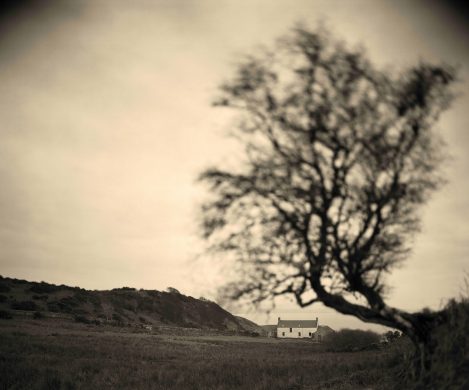
Finding hope
As well as his novels, I knew of his nature writing and his need for balance – the political and the poetic. I too need that – I often joke that I do love songs as well as protest songs… and so, like my earlier work Fisherwomen, this is perhaps a love song, a homage to Orwell and an acknowledgement of what he once wrote in his essay Some Thoughts on the Common Toad:
Is it wicked to take a pleasure in Spring and other seasonal changes? To put it more precisely, is it politically reprehensible, while we are all groaning, or at any rate ought to be groaning, under the shackles of the capitalist system, to point out that life is frequently more worth living because of a blackbird’s song, a yellow elm tree in October, or some other natural phenomenon which does not cost?”
“I think that by retaining one’s childhood love of such things as trees, fishes, butterflies and – to return to my first instance – toads, one makes a peaceful and decent future a little more probable, and that by preaching the doctrine that nothing is to be admired except steel and concrete, one merely makes it a little surer that human beings will have no outlet for their surplus energy except in hatred and leader worship.”
With that in mind, then, I took off up to Jura with my old 1952 Deardorff, a box full of 10x8 film and an even bigger box of books. I had been invited to stay at Barnhill – almost untouched since Orwell’s time – and found the place both challenging and restorative, an opportunity to regroup and refocus.
And for me, the work I made there is about hope, a chance to find joy in the small things, to celebrate what’s good in the world. I wanted to challenge the widely held misconception that Orwell went to Jura as a lonely, dying man full of angst to write a tirade against a fearful future, but rather focus on his optimism and hope and his belief in a better world. Despite the horrors of the war, despite losing his wife, and the challenges of severe tuberculosis, he was determined to build a new life for himself and his young son Richard, who, now aged 80, has written the foreword for the book. It was with that sense of optimism that he moved to Jura, to think, to grow vegetables and to find time to write what was essentially a warning to all of us of the horrors that come if we allow authoritarianism to take over.
And in that vein, I too, took solace in the landscape and the quiet of the old house – so still and so quietly evocative of the time that Orwell had sat up in the top room, typing out his great novel.
Printing and toning with tea
Back in the darkroom, the connection and the pure joy of photography continued; after much experimenting, I settled on toning the silver prints with tea – a nod to Orwell’s famous love of the drink and his delightful essay of 1946, ‘A nice cup of tea’.
The book’s title comes from a letter to Stafford Cottman on 23rd April 1946
“I have taken a cottage in the Isle of Jura in the Hebrides… it’s an extremely un-get-atable place, but it’s a nice house and I think I can make it quite comfortable with a little trouble.”
Book Details & Kickstarter
An Extremely Un-get-atable Place will be published by GOST Books as a large format monograph – approx. 14”x11” printed in beautiful tri-tone by EBS in Verona
I am running a Kickstarter campaign to part fund the printing and production costs. If you feel able to support me, I would be very grateful.
Thank you.
Please visit the Kickstarter campaign or www.craigeaston.com
The Alternative ‘Movement’
Younger readers of On Landscape and most photography magazines or websites might be forgiven for thinking that contemporary photography equates solely with digital cameras, computer image processing and inkjet printing. However, silver-based film and traditional darkroom printing are making a healthy comeback in art colleges and among amateurs. Whether silver-gelatin is really ‘alternative’ photography is a moot point.
It’s certainly an alternative to an inkjet printer. My personal definition of ‘alternative’ excludes silver-gelatin film photography but embraces instead a vast collection of lesser-known methods. Contemporary photographic print-makers have a bewildering range of print media with which to show their work, whether in landscape or any subject matter. This is not the place to list them all, but see https://www.alternativephotography.com. Other valuable overviews are Christopher James’ The Book of Alternative Photographic Processes, Third Edition (2016, Gengage Learning) or Lyle Rexter’s Photography’s Avant-Garde (2002, (Harry Abrams Inc., New York). The former book is a great one-stop shop if one wishes to learn the methods.
Among the better-known ‘alternative’ methods are albumen, argentotype, calotype, gum bichromate, kallitype, salted paper and Van Dyke processes. The list of processes is so long that only a few are going to be celebrated here, focusing only on the iron-based processes or siderotypes. Among all these ‘types’, siderotypes are easily defined: these are processes that depend on the light sensitivity of an iron-compound (from Greek sidēros "iron"). Note that all these processes are contact processes: the printed image will be the same size as the negative. Any large-format photographer using film can easily generate these, but it is more common now for practitioners to make, from small-format film or digital images, the required large ‘digital negatives’ (a misnomer, since obviously the negative is not digital, but rather the process used to get there is).
Cyanotype
Let us look at just three families of siderotype: cyanotypes, platinotypes and chrysotypes. Cyanotypes are by far the most commonly practised. Cyanotype papers are widely available and cheap. Amazon will sell you a pack of dozens of ready-prepared papers for less than £10, requiring only a negative or flat object, such as a leaf, as your subject, and UV light, such as the sun. These papers are already coated with a sensitising solution (which is NOT an emulsion, despite numerous references to such in the popular literature and online).
The first book to be printed and illustrated entirely by photography was Anna Atkins’ Photographs of British Algae: Cyanotype Impressions, an exceedingly rare and privately published book of 1843. The images can be seen in Sun Gardens – Cyanotypes by Anna Atkins (2018) by Larry Schaaf (The New York Public Library). Cyanotype is certainly useful as an inexpensive, easy introduction to hand-coated papers and alternative printing. Those who find the strident blue colour (due to the pigment Prussian Blue in all pure cyanotypes) unsuitable for their subject matter (such as landscape) can tone the print in a host of unlikely ‘chemicals’ such as tea. A greatly improved version, the New Cyanotype, was introduced by Dr Mike Ware and is finding wide acceptance.
Plantinotype (Platinum-Palladium)
From the ridiculously simple and inexpensive to the sublime: let’s look at Platinotype or, more correctly in most applications, platinum-palladium printing. Note that Pt and Pd are the only chemically correct abbreviations for these elements. Unlike cyanotype, one cannot buy ready-to-use papers, that is, papers that have already been coated with the light-sensitive chemistry. However, such papers were once available, testament to the popularity of the process: William Willis’ patent of the Platinotype in 1878 accompanied the sale of pre-sensitised paper and processing solutions. Platinum became the method of choice for luminaries such as Frederick Evans, Alfred Stieglitz, Paul Strand and others. But by the early twentieth century, platinum had been elevated to the role of an essential catalyst for manufacturing nitric acid, itself used in the manufacture of explosives for the Great War. In 1917, palladium (a metal closely related to platinum) was introduced and quickly adopted.
The commercial values of platinum, palladium and gold fluctuate widely, but palladium was once the cheapest, only to become the most expensive later; now, gold again is the most valuable. These fluctuations are reflected in the prices photographers must pay for their supplies. All commercial production of pre-sensitised platinum-palladium printing papers had ceased by the 1930s, and the 1930s to 1980s was a period of dormancy in printing with these metals. Now there has been an extraordinary and exciting re-emergence of handmade photographs, ‘hand-in-hand’ with other tactile pleasures (think vinyl records and cars with a manual gearbox!).
Printing in platinum and palladium is perhaps the summit of ‘alternative processes’. Revered for permanence and subtle beauty and composed of platinum and/or palladium metal embedded in the uppermost fibres of the print’s paper, these photographs are characterised by luminosity, longevity and an extraordinary tonal range. The appeal of this process is timeless and is endearingly described by Malde & Ware in Platinotype (Malde & Ware, 2021, Focal Press): “precious metals precipitated so finely that higlights slide to the edge of the paper’s base white.
The traditional method of making platinum-palladium prints (the ‘development method’) is still very widely used and requires two stages: the platinotype sensitiser (a solution of platinum and/or palladium salts) is mixed with ferric oxalate and used to coat (by brush or glass coating rod) a sheet of fine, generally 100% cotton, paper. (Here is not the place to describe how this is done, but it is not difficult to master). After drying, the paper is pressed into contact in a printing frame with the large negative and exposed to ultraviolet light. The iron is reduced to the ferrous form (by accepting an electron). At this point, no further chemical reaction can occur in the dry state. The paper is then transferred to an aqueous developer, which provides conditions for dissolving the ferrous oxalate, whereupon it reduces the platinum and/or palladium salts to the precious metal element(s), Pt and Pd, which are deposited within the cellulose fibres of the paper. This development is dramatic: an image appears almost simultaneously, and many videos online like to show this (for example, https://www.nga.gov/audio-video/video/conservation.html).
My own platinum-palladium photographs are made using the newer Malde-Ware process that provides a 'print-out' image. Dr Mike Ware has made available a comprehensive background to his formulations for the platinum-palladium process as well as Chrysotype (see below), New Cyanotype (see above) and argyrotype ( a silver process related to the historic Van Dyke process. See https://www.mikeware.co.uk/mikeware/downloads.html. The rigorous physicochemical basis of these printout methods and the ability to judge the progress of the printing during UV exposure ensure economy of materials and optimal print control without using suspect additives. This is of enormous practical benefit. For example, since once the image in a platinum-palladium print is fully visible on development in the traditional method, it's too late to adjust the exposure time! This method is also exhaustively and admirably covered in Platinotype (Malde & Ware, 2021, Focal Press) and included here (https://www.nga.gov/audio-video/video/conservation.html). The chemistry uses different compounds, but the key point is that the paper is allowed to acquire a controlled degree of humidity, which will allow the reactants to form the image during exposure. After exposure, three successive baths remove the unreacted chemicals.
Chrysotype
The gold process was discounted long ago as a viable printing method and forgotten for eighty years until Mike Ware, armed with his professional background in chemistry, revisited the process and introduced a wonderful printing-out process in pure gold (chemical symbol Au). He named it the ‘new chrysotype’ (from the Greek chrysos) in honour of Herschel’s invention of 1842. Surprisingly, relatively few have embraced it, but those that have value its remarkable ability to endow the print with subtle split tones and hues in blues and pinks, or neutral hues approaching those achieved in the platinum-palladium processes.
Obviously, the chemistry is different. The gold salt (tetrachloroaurate(III) is bound to a stabilising sulfur ligand (3,3'-thiodipropanoic acid); the sensitising solution also contains, as for platinotype, a UV-sensitive iron compound, ammonium iron(III) oxalate. Again, the iron compound is reduced by UV exposure (ferric to ferrous), the latter then reducing the gold to elemental gold, Au(I), which is deposited in the print to form the image. After exposure, the paper with a clearly visible image is immersed in a series of baths, the first of which can radically determine the colour(s) in the final print. For full details, see https://www.mikeware.co.uk/downloads/Chrysonomicon_II_Practice.pdf.
One of its striking characteristics is that the final colours in the print are not “golden yellow” but dependent on a large number of variables, including the humidity of the coated paper prior to UV exposure, subsequent post-exposure hydration, the developing agent and the properties of the paper. Paper choice can have a major influence on the colour of a chrysotype: gelatin-sized papers favour the formation of reddish images. The gold in the image comprises dispersed nanoparticles. When light falls on these particles, rather than being reflected, it is scattered and absorbed at particular wavelengths, depending on the size of the particles, which is in turn dependent on the processing of the print. Hence, the eye perceives different colours.
Repeating a colour achieved in one print can be challenging, satisfying or infuriating, depending on your outlook. Chrysotypes are rarely seen but deserve to be. Like platinum-palladium prints, chrysotypes are archival and permanent, gold being the least chemically reactive of all metals. Its use in jewellery or bullion is testament to this.
Any technical difficulties and requirements are not insurmountable. A strong UV source is more easily accessible now because of the ready availability of LEDs that emit in the UV range, and contact printing frames and fine art papers are common enough. The main stumbling block for photographers who cannot access the chemicals off-the-shelf from scientific vendors (that is, almost everybody in the UK, because of burdensome Health and Safety regulations, but not in the USA), is the chemistry. However, premixed sensitisers, especially for platinum-palladium, are available from a small number of sellers. My own protocol is to make up all the required solutions from ‘raw’, dry powders. I use an intense UV light source comprising a dense bank of LEDs emitting the optimal wavelength (365 nm) from Cone Editions, Vermont, USA and contact-printing frames from Lotus View Cameras, Austria.
Exposure times are a minute or more. My current papers are Arches Platine, Legion Revere Platinum, Ruscombe Mill’s Buxton, Talbot and Herschel papers and occasionally fine Japanese papers. For all these processes (cyanotype, platinotype, and chrysotype), I mask with Rubylith (or tape) the edges of the negative so that unexposed sensitiser does not leave an untidy margin around the final image. I find the traditional, rectangular frame unpretentious, which does not detract from the image content. I don’t think it’s necessary to ‘show the brush marks’ or extent of the coating in order to prove that it’s a handmade print. Connoisseurs will already know that. There is also a critical technical reason: the masked margin that has been coated with sensitiser, but is unexposed, provides the best visual test of the complete clearing of excess chemicals from the print during the wet processing. If those areas are unmasked, exposed, and darkened, one can never tell if the print has been properly cleared.
Conclusions
These alternative printing methods have much to offer the landscape photographer, as illustrated in the images on https://www.alternativephotography.com. Examples of my own work in platinum-palladium and chrysotypes are shown here. A final remark: these methods rarely produce prints that are perceived as ‘sharp’ as silver-gelatin or computer-generated prints: the surface is absolutely matte, and the texture of some art paper bases can obscure the finest detail. But they are beautiful! Look at original platinum prints, not reproductions; like me, perhaps you’ll be blown away.
Chrysotype
Platinotype
Bradley Carr
Over the past six months, Brad has contributed two thought-provoking articles to On Landscape (Learning to See Again and Cleansing the Soul) What stands out in both is his distinctive perspective on landscape photography. In one piece, he reflects: “The camera is a bridge that connects two worlds. Not only does it capture what it sees in the external world that is so familiar to us all, but it reflects, at the same time, the inner world of the artist.” This idea—that the photographer’s voice is essential in developing a personal style—resonates deeply. Intrigued by his approach and his connection to nature, I reached out to Brad to learn more about his creative process and philosophy.
Tell us about why you love landscape photography? A little background on what your first passions were, what you studied and what job you ended up doing.
Landscape photography, for me, is, perhaps, the ultimate creative practice. It engages the mind, body and spirit as we must think about composition, reflect upon what out photographs mean, move our bodies to reach our desired location and engage with the spirit of Nature whilst we are outdoors. It is, therefore, a healing experience in so many ways. There are the somatic benefits of moving energy around our bodies as we hike across the landscape, as well as benefits to our mental well-being and spirit as we are given a platform to express our deepest selves by creating the photographs themselves, telling stories of ourselves and our collective existence to alleviate ourselves of psychological baggage and transmute our pain into creative power.
Fangan
Fank: Fang (Scottish Gaelic): sheepfold; sheep pen; stell; stall; turf stell; bucht; stell enclosure.
Fangan is an ongoing work recording the stone-built fanks of Mull, Iona, and the surrounding islands.
A fank is a structure in which to pen and handle sheep. The size of a fank usually reflects the number of sheep in a hirsel*.
Glen Cannel
It is early March, and having unloaded our quad bike from the trailer, we start following Jamie up the glen. It is bitterly cold, and the clouds threaten snow. The track follows along the side of Loch Bà, (Loch of the Cattle) and then, leaving the loch behind, winds its way along the bottom of the glen to the ruined farmhouse at Gortenbuie, last lived in in 1947. We stop to admire the view and just listen; the shrill call of a Curlew cuts through the silence.
From there, we head across the glen to the other side of the river. This is an ever changing river bed, its route forged over millennia by extreme volumes of water coming down from the surrounding mountains.
This fank has the largest gathering pen of any on the island, and can hold a lot of sheep. There is a cottage (now ruined) along one of the fank walls. Jamie’s family last used the fank in the 1980s. Now they walk the sheep from here down to the farm, five miles away.
Glen Cannel has a dark history like so many island glens. In the 1820’s the landowner instructed his factor to evict every family from their homes. There is no trace left of their houses.
The fank was built on the site of the Glen Cannel burial ground, and gravestones were used in the building of the fank walls.
Descendants of some of these families still live on the island. They hold the story of what happened to their families, an oral history handed down through the generations.
In the 1830’s Mull had a population of around 10,000. By the 1880’s it was less than 4,000. What happened in between was a harrowing period of great suffering and adversity. The islands experienced ten years of potato famine, the collapse of the kelp industry, and the Clearances. During this time, thousands of men, women, and children were removed, often forcibly, from their homes and transported across the world or relocated locally against their will.
The Project
During lockdown, I was asked by the curator at An Tobar, a community art space in Tobermory, if I would show some of my drone photographs to accompany a textiles exhibition. Around the same time, I began photographing my neighbour’s fank; he was retiring, ending a several-generations family connection with the farm. It felt like a significant chapter in island farming was coming to a close.
Having photographed one fank, I began to look for more. I have lived on the island for 30 years, and being married to a farmer, I already knew where a few of them were.
However, I had no idea how many were still in use. I used the OS map to locate fanks all over the island, looking for the words Sheepfold or Sheepwash. Local knowledge was extremely helpful - one family farming a large area in the south of the island pinned twelve fanks on a Google Map for me, I have recorded 6 or so of those so far. Some are sited close to the road, with easy access. Others are several miles or hours walk from the nearest vehicle access.
When I started recording the fanks, I hadn’t made the connection between them and the Clearances. It wasn’t until I flew the drone over an unnamed fank on Lagganulva Farm a few months later that I fully understood this. I could see the shadowy impressions in the ground around the fank, of what had been houses. The stone from their walls had become the fine drystone walls of the fank.
Ensay
For many years, my husband ‘neighboured’ here. A team of family members and neighbours would help to gather the hills and work in the fank; health-checking the animals, dosing, dipping, sorting lambs for sale – different tasks according to the time of year. He remembers long days working within the chest-high stone fank walls in hot sun, cold wind, and rain; hours of hard physical work, but also hours of companionship and beautifully told island stories, drawing pictures of those who had gone before and the way things used to be.
Days punctuated by generous lunches in the farmhouse kitchen, and teas in the fank with chocolate cake. And afterwards drams to mark the work done, and more food, more stories.
Glac Gugairidh is a ruined settlement near where I live, and our neighbour told me how once the people had left the village, the walls of their ruined homes were incorporated to create a fank.
I have now recorded over fifty fanks on Mull, and three on Iona, with more still to do.
Fangan - the exhibition
Fangan has been exhibited in An Tobar (Isle of Mull), Edinburgh, West Kilbride, and Inverness.
I took Fangan to the local Mull agricultural shows in the hope that I would reach more folk than might visit An Tobar. I talked to farmers and crofters whose ancestors were removed from Glen Cannel. I talked to farmers who remember working in fanks, now disused, all over the island.
It has been good to show the work to a variety of audiences and for the photographs to have been received with interest. I realise that whilst the fanks make beautiful images, without explanatory words, the significance of their existence is not informed by the photographs themselves.
These are stories that should not be forgotten, so my next step is to create a book to present the fanks themselves and the stories connected with them.
Fangan is on display in Xoko, Bridge Street, Inverness, until the end of May, closed Mondays.
*Hirsel – the land grazed by a particular flock of sheep.
- Glen Cannel
- Dhiseig
- Unnamed fank at Lagganulva
- Ensay
- Glac Gugairidh
- Pennyghael
- Gualachaolish
- Monk’s cell, Iona
- Derrynaculen
- Burg, Shearing
Simple Things
The sky is a clear, featureless blue. Not a cloud anywhere to interrupt the monotone monotony. And yet, despite the obvious lack of obstructions, the sun is shining wanly on the land and sea that surrounds me. The spring colours aren’t vibrant. They’re washed out, desaturated almost. I’m wandering out of the house slowly with my old dog. At a pace we can both manage.
I don’t have a camera slung over my shoulder. My camera used to be a permanent fixture. Part of my body, my soul. Not so much a piece of highly engineered metal and glass but flesh and blood. As much a part of me as my heart or my lungs. Why haven’t I taken the camera out with me this morning? I don’t know. Tiredness perhaps. Not that I’m burning the candle at both ends. These days are long since past. I’m weary from travelling backwards and forwards across the country on one family errand or another.
But as I wander slowly with the dog, we’ve meandered down to the little beach that runs along in front of our house. I’ve let the slow moving dog off his lead now that we’re on the soft sand. There’s no one in sight. He has his little slice of heaven all to himself. And all of a sudden he’s no longer slow moving. He’s running like a rocking horse, the same sort of motion, head up, then bottom up. Bouncing. Mouth open in a big, slathery grin. And I can’t help but smile at him.
And as I smile, I notice the patterns in the sand. Left by the outgoing tide earlier this morning. The patterns are beautiful. That soft light I mentioned earlier is showing them off perfectly.
I lift my head and look up from the sand. Staring out to sea. Clisham, the tallest mountain on Harris, is clearly visible above the distinct outlines of the Shiant Isles. There’s a silveriness on the horizon. A dividing line between the distinctly different blues of sea and sky. I’m not sure what that line is. A slight hint of mist perhaps, or maybe it's just a calmer stretch of sea. I don’t know. And I’m not really interested in knowing.
All I know is that my shoulders have dropped slightly and my breathing has slowed. My brain's working easily again. It's thinking about how I can capture these quiet little moments of beauty. That marriage of heart and head, thinking about how I would capture what it is that I see in my mind's eye. A reminder to myself that it was always the landscape itself that inspired me to pick up a camera in the first place.
Photography has never been a cerebral exercise for me. I’ve no great technical expertise. My processing is rudimentary at best. My photography is more to do with bringing a little peace to my soul. Putting a smile back on my face. I was at a wonderful photography festival in Germany last year, where I was one of a number of speakers at the event.
And in a way, I felt slightly guilty when it was my turn to stand up in front of everyone. All I did was talk about myself and show some pretty pictures of my local landscapes. Some big views and some little ones. But. Perhaps before we think about saving the world, we need to think about saving ourselves first.
,
Issue 327
End frame: Near Sommarøy by David Ward
‘Near Sommarøy’ may not be David’s most beautiful photograph, nor his simplest and it is certainly not very mysterious but for me it represents, in one image, a turning point in my own photography and the influence that David’s writing and photography has had. It was an image made behind my back and therein lies the lesson.
Over 20 years ago, in the days before online photo competitions, I was lucky enough to win Practical Photography’s ‘Photographer of the Year’ competition. All the stars aligned, and my limited landscape output enabled me to win a couple of the monthly rounds, qualifying me for a final ‘shootout’ against another photographer in the Lake District, where again a landscape specialism gave me an unfair advantage.
Now, with an award to prove it, my family thought that I must be quite a good photographer after all, though I suspected I still had a lot to learn. With that in mind, I decided to spend some of my prize money on a photography tour with one of the pre-eminent landscape photographers of the generation. Unfortunately, all of Joe Cornish’s tours were fully booked so I settled on a trip with the non-award-winning David Ward instead. To be fair, I was already an admirer of his work through his writings for Outdoor Photography and his book ‘Landscape Within’ so knew I would be in safe hands, even if he did have a bit of a penchant for ‘detail’ shots.
The trip was to Northern Norway and the Lofoten Islands, a little-known archipelago south-west of Tromso (oh, how times change!). I was drawn to it by a single, splendid, panoramic image in the brochure of towering cliffs and a tranquil fjord. It looked like a place for some serious vistas...
Ram Ganti – Portrait of a Photographer
There are two kinds of people who look at a circuit board. The first group sees a headache of wires and solder points; the second sees logic, elegance, and the potential for something to work beautifully. Ram Ganti belongs firmly in the latter camp. Before he ever picked up a camera, Ram was designing and building complex circuitry, soldering components directly onto printed circuit boards with the care of someone who understood that beauty could be found not just in how something looked, but in how it functioned.
When you look at Ram’s photographs, which are graceful and composed with almost mathematical clarity, you begin to understand that his background in engineering did more than shape his technical instincts; it trained his eye. Every curve in a dune, every line in the sand, every pocket of negative space feels like part of a larger, invisible circuit. His photographs do not just show you what he saw; they reveal how he thinks.
4×4 Landscape Portfolios
Welcome to our 4x4 feature, which is a set of four mini landscape photography portfolios which has been submitted for publishing. Each portfolio consists of four images related in some way. Whether that's location, a project, a theme or a story. See our previous submissions here.
Submit Your 4x4 Portfolio
Interested in submitting your work? We are always keen to get submissions, so please do get in touch!
Do you have a project or article idea that you'd like to get published? Then drop us a line. We are always looking for articles.
Gaby Zak
Exploring the Isle of Skye
Konrad Hellfeuer
Mystical Sun: A Journey in Black and White
Massimo Leotardi
A different view of the Peak District
Sebastien Coell
Four Lighthouses, Four Countries
Four Lighthouse, Four Countries
Growing up around the rugged beauty of Devon and Cornwall’s coastline, I developed an appreciation for landscapes that blend the raw, natural elements with human-made landmarks. My childhood was spent exploring the craggy cliffs, windswept moors, and the serene coves of Devon's and Cornwall’s coastal stretches. Camping holidays along the West countries sandy beaches and towering cliffs solidified my love for this region and set me on a path toward capturing it through a lens in later years.
Lighthouses certainly tick many boxes in regards to coastal landmarks, these iconic structures link not just our history of sea exploration, but also connect the landscape to it, and as such they make great fore to midground interest when it comes to seascape photography.
When I started traveling for photography, I always new lighthouses would form part of my goto locations, and here you can see four of my favourite lighthouses from four different countries.
I am a Devon-based landscape photographer with a love of travel and capturing the beauty of Southwest England for which im luckly to call home, my work includes landscapes and seascapes of Devon, Cornwall, and European locations like the Dolomites or Scandinavia.
A different view of the Peak District
My aim in photography is to catch original and atmospheric compositions. I have been an artist all my life, and for me, the camera is my brush and my pencil. I portray what I see the way I see it. My photography represents a crossover between a photograph and a painting. My composition is based not just on the subject itself, but mainly on the negative spaces that form the image, following the Japanese aesthetic concept of "ma" ('the space in-between').
Ninety per cent of my images get taken during rainy days when the atmosphere is most conducive to my style. I find the sound of the woodlands in these conditions an essential element to convey the attention to a specific view.
My post-process is based on a painterly style, using mainly subtle local adjustments with emphasis on the light and shade, color contrast, and a special tri-dimensional process that I manually apply in Photoshop to take the image and its details back as I saw them in the first place.
I avoid shooting popular famous places and prefer to challenge myself to find compositions that other photographers just ignore. Living in the North West England, the Peak District is one of my favorite destinations. As this is a very prolific area for many photographers, it is difficult to compose an original shot, but at the same time this is what makes it interesting for me. One of the most frequented places in the Peak District is Padley Gorge and the surrounded area (image 2 and 3).
Mystical Sun: A Journey in Black and White
In this stunning collection, **Mystical Sun: A Journey in Black and White**, we delve into the timeless allure of landscapes transformed by the mystical presence of the sun. Each photograph, rendered in black and white, captures the ethereal beauty and enigmatic shadows cast by the sun’s powerful rays. Through this monochromatic lens, we invite readers on a visual odyssey where light and darkness dance together, creating a symphony of contrasts that evokes mystery and wonder.
With each image, the sun emerges not just as a source of light, but as a celestial artist, painting the world with haunting silhouettes and surreal forms. From dawn's first whisper to dusk’s final embrace, these photographs explore landscapes that have been touched by the sun's mysterious hand, revealing a world where reality and dreamscape intertwine.
This collection celebrates the profound beauty found in nature's simplest yet most enigmatic moments. It encourages viewers to see beyond the ordinary, to experience landscapes not just as they are, but as they could be in our most mystical imaginations. By stripping away the colors, we unveil the raw, untamed essence of light and shadow, inviting a deeper connection with the soul of the scene.
Exploring the Isle of Skye
A series of images from a trip to the Isle of Skye. There were so many places to visit across the island, heading over in July 24 meant having more hours of daylight and the opportunity to explore as much as possible during the week I was there. Taking in the scenic landscapes and the natural beauty that the place has to offer, with its wide range of majestic backdrops and hidden gems.
Watching the constant change in the weather meant I made sure to have my camera ready to capture the changing light, which highlighted a variety of details and textures in the mountains, providing dramatic scenes across the landscape.
Images 1 and 3 were both taken at the same Loch, with the small white house in the vast landscape, showing both the scale of the island and the quick changes in the weather. Skye is a breathtaking island where you definitely don't struggle to find an opportunity to take a shot, it's a very inspiring place.
Damian Ward
For this issue, Damian Ward talks about how his photography has evolved over the past seven years. Stepping away for a while allowed a creative reawakening and inspired a shift away from increasingly popular woodland scenes to more personal, monochrome images capturing smaller scenes and embracing imperfection. We touch on the joys of working locally and how revisiting familiar places continually offers a new perspective, as well as the books that Damian has recently made.
Looking back, I was surprised find that it’s been seven years since we featured you in On Landscape. Time flies, as they say. What has given you most enjoyment, or satisfaction, in the intervening period?
During and around COVID, I took a little break from photography. I was starting to feel that my work was not evolving and was becoming predictable. At this time, there was also a growing trend amongst photographers to photograph woodland like myself. I just felt that I was not producing anything special that could not be seen by one of the many other photographers who were doing the same. Taking some time out gave me the opportunity to recompose and figure out what direction I wanted to take.
Last time we spoke, we talked about a project of mine called Entangled. The images in this project were more intimate and all shot in black and white. The black and white element must have planted a seed that grew into the new direction I chose to take with my photography.
Starting again, I felt refreshed and eager to begin my new path.
Have your tastes in photography changed at all, or what you find inspiration in? Either in terms of your own work, or what you enjoy looking at.
I like to think my photographic style has broadened and developed. I tend to enjoy making images of small scenes rather than wider vistas. I also think I tend to do a lot more close-up work now too. Woodland scenes now feature less in my work, even though I do still enjoy photographing them, albeit in a different style.
The landscape and natural world continue to inspire me, but I am also comfortable making images in urban environments and places where you might not expect to find inspiration. There is beauty all around; you just have to look for it. I think I now try to embrace imperfection a bit more. To me, imperfections add character and realism. I think my taste in music has influenced me here, as the music I like is full of imperfections.
Art, Photography and Competitions
I have often written about the problems with photography competitions: the fact that they reduce a creative and personal art to a simple “this > that” equation; that they only rank those that ‘play’; and that it is impossible to compare a photograph of a flower and a volcano. All of this is before we look at how individual competitions are run, which can introduce a litany of potential problems.
It’s the idea of ‘competition’ that is anathema to most photographers. Of what benefit is there from pushing our most loved creations into a beauty parade? And yet the idea that, as photographers, we can avoid competition is also naive. So many of the things we want to do with our photographs rely on being put in a position of winning or losing. The potential exhibition where the curator chooses between artists; the inclusion or exclusion from a magazine or journal; The sharing/liking of one image over another on social media; the competition for an art purchaser’s discretionary spend. The list goes on and on. In fact, I would suggest that the only way to avoid competition is to remove yourself from any interaction involving your images at all.
But competition in art is not a recent development. In ancient Greece, around the 4th century BCE, professional art associations and guilds helped organise competitions. The “Technitai of Dionysus’’ ensured that prize money was distributed fairly and competitions were run on time. From Roman through Byzantine periods, artists competed for commissions by the ruling classes for the decoration of their churches and cathedrals. In the 14th century, a competition was declared for a commission to build the doors to the Florentine Baptistry. With thirty-four jurors and only eight entrants, it was probably intimidating for the artists involved but the commission would make them relative millionaires over the decades it took to build them.
One of the most recognisable art ‘competitions’ is probably the Paris Salon. Introduced in the 1600s, the Salon became the premiere event for artists throughout France. When a jury was introduced in the 1800s, the exhibition became an actual competition with the potential prize of becoming an established artist. As you can imagine, this became incredibly popular, and the minutiae of how the juries assessed work were deliberated over ad infinitum. Many of the choices were controversial, but the main problem with the Salon was that it was incredibly conservative. You were expected to work in a certain style and with specific materials, etc.
When more than two-thirds of the entrants for the 1863 Salon were rejected, including work by Courbet, Pissaro and Manet, many of those turned down decided to form their own exhibition and called it the “Salon des Refusés” or exhibition of the rejects; I cannot imagine the horror of being turned down for that show!
You’d think photography competitions are a more recent invention, but after a bit of research I found out that in the seven years before the Salon de Refusés was instigated, multiple photography competitions had already taken place. For example, in 1856 the Photographic Society of Scotland awarded medals in their open competition.
How about the equivalent of the Olympic games for art? Well you don’t need to imagine it. If you had been around in the early 20th century you could have represented your country in the Fine Art category and instead of including “Prize-winning photographer” on your website, you could have had “Olympic Gold Medal Winning Photographer.” What an accolade!
Over the next few decades, photography competitions became a topic of many discussions in the journals of the day with some winning portfolios travelling across the oceans to be displayed in front of learned societies worldwide. In 1893, the journal of The American Amateur Photographer discussed a display of competition slides from the 1891 London Photography Competition with some little moaning about the winner’s lack of originality in subject choice. Nothing really changes.
So what about more recent art competitions? There are quite a few juried exhibitions around now, such as the DeVos Foundation’s ArtPrize, Priz Pictet, The Turner Prize, the MacArthur Fellowship, the Guggenheim “Hugo Boss”, The Royal Academy Summer Exhibition, The Deutsche Börse Prize, etc. These have helped the careers of artists such as Cindy Sherman, Edward Burtynsky, Anish Kapoor, Richard Long and more.
It is easy to look at winners and identify how the competition is helpful for them - after all, the process boosts both their pockets and their profile - but how useful is it to everyone else? Most high-profile art competitions are connected with equally major exhibitions. Although many exhibitions are in small boutique galleries and are inaccessible to most people, others have major exhibitions at venues like the National Gallery and the Guggenheim. Other exhibitions rely on a book publication to share the work of a large number of entrants. These books then become a tool for collectors and curators around the world to research new artists. A book also has the advantage of remaining long after an exhibition has been dismantled.
For those who don’t find themselves in an exhibition or book, it’s more difficult to identify the advantages of entering a competition. In some cases, a competition will extend its remit to include portfolio reviews, talks and opportunities for networking for any who enter.
Of course, there are bad competitions out there that are only interested in collecting submission fees. I recently heard of someone asking a well-known photographer about a competition they were supposed to be judging and discovering that they knew nothing about it!
There are obviously many poor reasons for entering competitions. If the only positive outcome expected from entering is a potential win, then I would suggest having a rethink. The process of entering a competition should be an opportunity to assess your work and find out how you think about it in relation to how others consider it. It is also an important moment to think about the relative objective and subjective sides to looking at work. Many of us have photographs that we love but that we know would not have much broader appeal; this should not devalue that work. However, most people want to share their work with a wider audience of their peers and the general public and the process of curating your own photographs in preparation for submission is a great time to reflect on your portfolio.
If a competition provides feedback, it is also useful to see how others look at your own work. For instance, which images resonated with the judges the most. We don’t have to agree with the results - after all, moaning about judges is a time-honoured activity for the seasoned artist!
For all of their quirks, I feel that well-run art competitions provide a useful service to artists. The results can show the wider public a cross-section of the many talented amateur and professional artists throughout the world. I feel privileged to have been part of many photography competitions and in the process, I’ve seen amazing and beautiful images in hundreds of different styles. The fact is that competitions will always play a part in nearly every creative pursuit and, as such, making sure they're as ethical and supportive as possible is a valid goal.
And on that note, the competition I set up with Matt Payne, Alex Nail and Rajesh Jyothiswaran five years ago is open for submissions as we speak (and until the end of May). If you're interested in entering, you can use the discount code "onlandscape15" at this link. You can also buy one of our books with a 20% discount by using the code "onlandscape20" at NLPA Hardback Books.
The Royal Photographic Society Landscape Group
The RPS Landscape Group is set to launch its second Members’ Outdoor Exhibition, starting in May 2025 at the historic Southwark Cathedral in London. The exhibition will travel to over eight locations before concluding in Scotland in spring 2026, coinciding with the 10th anniversary of the Landscape Group, which now boasts nearly 1,200 members.
The 30-metre outdoor display, accessible 24/7, will feature 80 striking images ranging from sweeping landscapes and seascapes to intimate urban abstracts.
An online gallery of the exhibition is also available at https://rps.org/Landscape-EXPO25/.
Exhibition Schedule
- 17 May - 8 June 2025: Southwark Cathedral, London
- 21 June - 13 July 2025: Central Library, Bristol
- 2 - 18 August 2025: Bridge Field, Rushcliffe, Nottingham (near Trent Bridge)
- 6 - 21 September 2025: Yorkshire Museum/Dame Judi Dench Walk, York
- 4 - 26 October 2025: Chester Cathedral, Chester
- 8 - 23 November 2025: Crow Park, Keswick
2026: Additional locations and dates to be announced
Selected Images from the Exhibition
Below are ten selected images from the exhibition, accompanied by insights from the photographers.
This image was taken while I was on a boat trip on Rollesby Broad in Norfolk. This broad is less busy than most and has a good variety of birds. These reeds are seen all over the Norfolk Broads and grow out into the narrow channel between Rollesby and Ormesby Little Broad. The morning sunlight was nicely highlighting a row of reeds that stepped down in height and ended with a single straight reed apart from the rest.
Düsseldorf Schauspielhaus is one of Germany's leading theatres. It was designed by architect Bernhard Pfau following an international competition in 1959, with its striking appearance due, in part, to its aluminium panel cladding. The image was taken during the evening and the building was illuminated by artificial light. Apart from removing minor distractions, my edit was done almost exclusively through masking and tonal changes.
This is a composite image of Edinburgh, creatively edited in Photoshop. I have tried to convey what I feel is the ‘essence’ of Edinburgh. Old town meets new town, the history, architecture, and transport network, the past echoed and melded and ever present within the new. The transient nature of the beautiful capital city of Scotland.
Spring is ski touring season, my favourite time of year! The Tierberglihütte (2,795 m) is a 3/4 hour hike from the road to the Sustenpass. Some parts are quite steep, depending on snow cover. The setting is spectacular, surrounded by glaciers, a lovely view west toward the valley and east toward the Sustenhorn (3,502 m), our aim for the next day. I’ve printed it on very thick Hahnemühle paper and really like the aquarelle effect.
This shot was taken on trip exploring the very varied coastline of North Yorkshire. In addition to its beaches and cliffs I found the urban landscape of Whitby with its working port attractive. The high viewpoint revealed the simplicity of the harbour entrance whilst the evening light added warmth to the scene. Smoothing the water, the slight colouring in the sky and an indistinct horizon suggests a quiet end to the day.
I enjoy making images in the woods and commons of the New Forest. Especially in the autumn when the golden leaves of the wonderful silver birch trees put on a spectacular display of colour. This image was made one morning in early December when the colours were still amazingly at their peak, within the frame of the balancing tree trunks. The muted layers at the base and the exclusion of any distracting sky were also important.
Living near the Northumberland coast gives me the opportunity to plan a visit when the tides and light conditions coincide to capture this photograph of Coquet Island that I had envisaged. With the setting sun and dunes behind me, I set-up my tripod and camera on a rocky outcrop. The scene was set with low light hitting the island and leading rocks to the left. A long exposure helped to give the serene feeling I wanted to create.
Taken on Scarista Beach, Isle of Harris, this Intentional Camera Movement shot conveys the softness of the sand and the tranquillity of the sea with waves gently braking on the shoreline. The shot with slightly enhanced colours conveys the feeling of the beauty and calmness of Harris.
This image was taken in Bolehill Quarry during a photography trip to the Peak District with members of my RPS Landscape critique group. I spent ages in the quarry photographing views of the trees and rocks. I had both my colour and infrared cameras but I found the infrared images more appealing. I chose this image as it seemed to give a painterly feeling to the trees which I emphasised in my processing.
St Andrew’s in the Cambridgeshire Fens is a redundant church, sitting in splendid isolation, a peaceful place except when a train passes by. The sweeping curve of the track led my eye straight to the church and the tree in the foreground perfectly framed it. The sky was ideal for infrared photography as the high level hazy clouds softened the light just enough for the image I had in mind. I hope it conveys the tranquillity.
Convergent vs. Divergent Thinking in Photography
Over the past five years, my photography journey has been a bit of a whirlwind. I’ve switched from digital to film, downsized (or upsized?) from full-frame sensors to large-format cameras, and completely overhauled the way I think about creating images. The biggest change? My mindset. For years, I had a pretty scattered approach. I’d photograph anything that caught my interest in the aim of getting my work into agencies, more for my own satisfaction at times, even before earning a living, which, looking back, is ridiculous; the only real purpose it served was keeping my shutter finger in shape.
To be fair, there was a perk: it made me a better lecturer for those who were looking at moving into the industry for a future career. I could give students some insider knowledge about the business side of photography, as I sold some of my work through agencies. But I have to admit, the motivation behind my constant shooting wasn’t exactly noble—it was more about getting a pat on the back when an image made the cut.
One memorable moment was when I got into a bit of a tiff with another lecturer. A student had asked for feedback on their work, and I gave an honest opinion based on my experience with agencies. The student appreciated it, but my colleague? Not so much. They thought I was being too harsh. However, if you’ve been in the industry, you know sugarcoating doesn’t help anyone. Anyway, those days are behind me now. These days, I’ve traded the hustle for a slower, more meaningful approach.
Moine House & A’ Mhòine
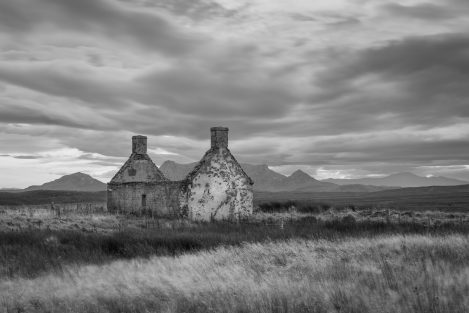
At first glance, it could be any ruined cottage standing abandoned in a moorland landscape, but this is no ordinary derelict cottage, nor is this any ordinary moorland.
A’ Mhòine (The Moss) is a large area of blanket peat bog covering most of the Tongue peninsula on the north coast of the Scottish mainland. Today, it is part of the ‘Flow Country’, which extends over wide areas of Sutherland and Caithness. It is managed by a number of organisations working to maintain and restore these rare peatlands for the benefit of people and wildlife and to return them to the important role of storing carbon absorbed from the atmosphere. Their efforts have been rewarded by the recent recognition of the Flow Country as a UNESCO World Heritage Site.
Meanwhile, Moine House seems a rather grand name for what was, even when it was first built in 1830, a humble abode consisting of two ground-floor rooms and an attic. A large plaque on the east gable bears an inscription, now almost illegible, which tells the story of the house and the 14 miles of road that was built at the same time across A’ Mhòine, from Loch Eribol and Loch Hope in the west to the Kyle of Tongue in the east. The inscription begins with an explanation:
This house erected for the refuge of the traveller was to commemorate the construction of the Road across the deep and dangerous morass of the Moin, impracticable to all but the hardy and active native; to him even it was a day of toil and of labour. This road was made in the year 1830 at the sole expense of the Marquess of Stafford .
The Marquess is better known today as the Duke of Sutherland and as one of the most blameworthy of the landlords in the area, along with Lord Reay, for their overzealous “clearing” of crofters from their homes in villages such as Rosal and Achanlochy in Strathnaver. The inscription goes on to praise the evident improvement, warranting the plaque to be …
...put up and dedicated by James Loch Esq. M.P., Auditor and Commissioner ... and John Horseburgh Esq., factor for … Reay County, Strathnaver, Strath Halladale and Assynt, under whose direction this work was executed and who alone know the difficulties that occurred in its execution and the liberality and perseverance by which they were overcome.~Peter Lawson Surveyor
While these names are still discernible, no mention is made of the crofters by whose labour the road was actually built. Previously displaced from their homes in Strathnaver, etc., and struggling to make a living on the coast to which they had been required to move, they were at least paid for their labour constructing or improving the roads in the area. The problem of constructing a road over a bog was overcome by using bundles of heather laid under the surface to prevent it sinking. In the 1939 edition of the guidebook ‘Scotland for Everyman’ by H.A. Piehler, he calls the road “The Tongue road” and describes it as being in “fair condition” as it “… crosses a dreary peat-moss called the Mhoine, rising to 741 feet, with splendid views, and then descending the shore of the Kyle of Tongue”. This old single-track road was only replaced in 1993 by the new A838, which runs just north of the house.
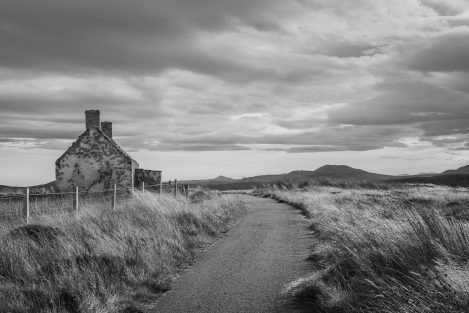
Moine House fared less well over time. Intended as a halfway house for weary travellers crossing the bog, it was also a family home and in 1881 it housed three generations, totalling four adults and five grandchildren. The last occupant seems to have been one of the grandchildren who was three years old in 1881. There was no mention of MoineHousee in the 1939 guidebook, but in 1981, when it became a C-listed building, it was described as being in a poor state, although still having a roof. The roof was removed for safety reasons in the 1990’s and photographs in 2020 show the interior walls used for artistic graffiti (later removed). Today, it still awaits possible restoration, adorned only with the last licks of blue-painted woodwork and yellow lichens.
For us, this was an ideal photographic location on our trip to north Sutherland in October 2024. We had several projects in mind, including the ecology of the Flow Country peatlands and the stories of the Highland Clearances.
Paul has a long-standing interest in the consequences for both people and the landscape of the Highland clearances, and we had already visited and been very moved by the stories and remains at Achanlochy and Rosal. The road across A' Mhoine was built about 10 years after the end of the clearances, but it illustrated a further manifestation of the difficulty of crofters needing to find a living after removal to poor agricultural land on the coast. On the peat bog itself, he found the movement of the vegetation on windswept Moine and around the house grabbed his attention, and the depths of the peaty pools gripped his imagination.
Sandy with her passion for ‘primitive’ plants such as mosses, lichens, liverworts and their environments, was very much in her element on A’ Moine, searching for different types of lichens and sphagnum mosses and appreciating how their life cycles create the dynamic and very substance of peat bogs, along with other bog or water-loving plants. She used vertical framing to convey the expanse of deep colours of the peat bog laid before the distant mountains while maintaining some plant detail in the foreground.
While we share interests in the natural world, landscape photography and social history, and often take photographs of similar subjects, our approaches differ to some degree.
Sandy likes to wander with a camera in hand, using one camera with a short telephoto lens. She looks for interesting compositions in the landscape, but particularly for smaller details. Often, she finds that a thread emerges (an idea, a feeling, the lines of a poem, a memory, even a story) that might connect the experience and link with the images. She takes mainly colour photographs and likes to make a series of images for a blog or small handmade books.
Paul works in monochrome with digital and medium format film cameras, nearly always using a tripod, which slows down the process and allows him to use slow shutter speeds or multiple exposures to capture the mood and movement of a scene in a mindful way in single or sequences of images. In our image-making, we are both interested not only in the feel of a place or subject and the emotions it gives rise to, but also in the notion of time passing, the paradox of past and future represented in the present.
Issue 326
End frame: The Ladies of Granston by Chris Tancock
Chris Tancock is a photographer living and working in Pembrokeshire, quite close to where I live. Whilst Chris photographs in the landscape, and often his images include wildlife, “traditional” landscape and wildlife photography are genres that he doesn’t particularly warm to. Chris prefers to describe himself as a “rural documentary” or “habitat” photographer. Moreover, he regards himself as a story teller, however, he fails to see how a single image can tell a story. Chris often uses the analogy of writing: a written story is composed of many sentences and paragraphs that build to create a narrative. A single sentence might be beautiful but it cannot, on its own, tell a story. Likewise, a single photograph might be beautiful, but on its own doesn’t have significant meaning. Chris’ views on photography are fascinating, and for those who want to find out more, I would encourage you to to listen to a long and wide ranging interview from several years ago, where he expands on them at considerable, but very interesting, length:
A Year of Any Questions
Any Questions has been running for just over a year and we thought it would be nice just to have a casual chat between the hosts: myself, Joe Cornish and Mark Littlejohn. What we ended up with was a relaxed, whiskey-fueled chat covering personal stories about whisky and photography, the challenges of women's representation in landscape photography, the influence of Scottish geology on photographers, the idea of future podcast guests, and a brainstorm about new ways to explore photographic influences and creativity.
Visions of Paradise – American Wilderness
Visions of Paradise: American Wilderness" presents a collection of black-and-white photographs by Jon Ortner, offering a thoughtful exploration of America’s wild landscapes. An experienced hiker and long-time observer of the natural world, Ortner captures the scale, textures, and quiet power of these places through the timeless medium of film. This large-format book gathers his work into a focused tribute to the American wilderness, reflecting both its visual majesty and enduring significance.
How did your childhood on Long Island shape your interest in the landscape?
I was given my first butterfly net when I was only 5 years old. I started exploring the North Shore of Long Island, which at that was a paradise of ancient forests, and abandoned estates. I would wander around the overgrown, walled Italian gardens, crumbling fountains, old wishing wells, and abandoned greenhouses. I spent my time collecting butterflies and examining salamanders, turtles and frogs. I was an avid naturalist and tried to learn the scientific names of everything I saw, at a very early age. By the time I was 12, I was going into New York City, to the American Museum of Natural History, and became a member of the Jr. Entomological Society, which met in the cavernous offices of Alice Gray, a talented scientific illustrator, who worked creating natural history exhibitions for the museum. It was there that I met many other young naturalists, collectors, and budding scientists. All of us experts in climbing fences, and exploring the abandoned wild places around us.
My first paying job was as a Page, in the beautiful library of my hometown. I fell in love with books and research, and became an avid collector of rare photography books, especially those on exploration, and the love of nature. So, for much of my life, I have revered authors who have explained the scientific significance, and irreplaceable value of wild places. These included Edwin Way Teal, Edward Abbey, Terry Tempest Williams, Gretel Ehrlich, and Edward Ruess, I have read, and been inspired by their writings that describe and explain the love of wilderness that I have felt my entire life.
You attended the University of Kansas, where you studied Photography, Eastern Philosophy, Systematics, and Ecology. How did these experiences shape your photography?
Throughout my youth I had been reading, and dreaming about the jungles and lost cities of Asia. As I matured, I thought that I would become either an entomologist, or a zoologist. When I arrived at University, I got my first Nikon Camera, and started photographing both nature, and landscapes. I was soon privileged to meet and study with a brilliant professor named Alphonse Verdue. He was a philosopher, author, Buddhist scholar, and one of the foremost experts on Sanskrit, the classic language of India, in the world. His courses introduced me to the deeply spiritual philosophies of Hinduism and Buddhist, and how these great meditative religions evolved from the sacred Himalaya, highest mountain in the world.
Right after my freshman year, after reading the book Siddhartha, by Hermann Hesse, I decided to see for myself the wonders of spiritual India and Nepal, and it was those early experiences, while trekking on pilgrimage to Amarnath Cave in the high Himalaya of Kashmir, along with thousands of Siva Ascetics, that sparked my lifelong passion for photography of Asia, and the Himalaya, and the extraordinary religious culture that has evolved there.
Tell me about the photographers or artists that inspire you most. What books stimulated your interest in photography, and have your tastes developed over time?
Some of the first photographers (and their books) that inspired me were: Burma, Ceylon, Indo-China by (the black in white photographer) Martin Hurlimann, Angkor, Art & Civilization, by Bernard Groslier, & Jacques Arthaud, and the work of Vittorio Sella.
With black and white photography nature displays its majesty and poetic beauty by way of contrast, shape and form. I have always loved beauty.
In 1978, you relocated to Manhattan to establish a commercial photography studio alongside your wife and business partner, Martha McGuire. What initially drew you to commercial photography, and could you share more about your experience running the studio?
When I first moved into New York City with my wife Martha, I knew that it would be difficult to finance our continued expeditions to places such as India, Nepal, Bhutan, Myanmar, Laos and Cambodia. I immediately started photographing the city and its skyscrapers, and that connected me to the world of New York City real estate, especially to developers who were building the newest and most beautiful skyscrapers in America. I started photographing for developers such as Brookfield, SL Green, Hearst, and Tishman Speyer.
The marketing for their new buildings had robust budgets, which allowed us to make good money fairly quickly. This enabled us to spend 3-4 months every year trekking in the Himalaya of Nepal, Ladakh, and Bhutan, or exploring the ancient, lost cities of Asia such as Angkor, Bagan, Sri Ksetra, Mrauk-U, Prambanan, and Borobudur, in the wilds of Cambodia, Myanmar, Laos, Thailand, Bali and Java.
Your photography in Asia has merged an interest in the landscape and philosophy. What inspired that interest and can you tell us more about the books you’ve created around it?
I have always had boundless curiosity and an insatiable thirst for knowledge about people and places. That, combined with a deep-seated reverence for nature’s exquisiteness, manifested itself in my photography. In 1979, with a creative intellect on fire and the urgent purpose felt by dedicated artists, Martha and I embarked on a photographic and spiritual journey to record and celebrate the world’s most remote and astonishingly beautiful sites.
The exceptionally produced, large-format photography books emerging from these singular experiences, have for years, and for reprint after reprint, ignited the imaginations of thousands of readers. They include Where Every Breath Is a Prayer: A Photographic Pilgrimage into the Spiritual Heart of Asia, Angkor: Celestial Temples of the Khmer Empire, and Buddha, each one were multi-year projects, that strived for thematic, compositional, and photographic artistry, and were complimented by my deeply personal and scholarly writings on Hindu and Buddhist art, spiritual pilgrimage, and the role of sacred places in our lives.
Tell us about the background of the book and the project. Where did it all begin?
In 2005, I turned my passion, creativity, and panoramic cameras on the unique, breathtaking scenery of the Colorado Plateau in a five-year odyssey of discovery deep into the deserts and canyons of the American West, which included trekking to isolated and nearly inaccessible slot cxanyons, and to secluded and sacred sites on Dine and Hopi Tribal Lands. This tenacious pursuit for photographic perfection culminated in the award-winning, Canyon Wilderness of the Southwest, a widely distributed book published in three edition sizes, and which esteemed documentary filmmaker Ken Burns has lauded as “…an indescribably sublime book, a testament to the power of our saved and sacred places to transform our lives, rearrange our molecules and make of us all, as John Muir would say, ‘kindred spirits.”
On the heels of that fulfilling project I started working on Visions of Paradise: American Wilderness, which is the culmination of more than 15 years of black-and-white, large-format photography, paying tribute to America’s remaining unspoiled wild places.
The opening quote in the book is: “If a person is very fortunate, in a perfect place under conditions that may never occur again … perhaps on a mountaintop with the late sun breaking through the clouds in diffused radiance … eternity may cease its flow, the world pause, for one incomprehensible moment … an instant in time to be treasured forever.”—Ward J. Roylance, The Enchanted Wilderness
Can you tell us more about why you chose this quote and its importance to you?
When we first started photographing in the American West, we had the good fortune to visit Capitol Reef National Park, in Utah. Martha and I explored extensively and experienced the truly inspirational landscapes of the Cathedral Valleys. Although we had traveled widely throughout Asia and the Himalaya, and had trekked through the wonders of the highest mountains and deepest gorges on the planet, we were astounded, and deeply moved by the otherworldly landscapes we photographed in The Cathedral Valley. We returned several times over the years, hardly ever seeing any other people for most of the days we spent there. For me, it became one of my favorite places in the world. Then I came upon a book titled, The Enchanted Wilderness, by Ward J. Roylance, who lived in Torrey, Utah, and explored the vast wilderness of Capitol Reef for many years. He wrote elegantly about the dramatic monoliths, and the changing light and weather conditions, that made Capitol Reef a sublime, high desert paradise. We then realized that there were other people, who felt the same as we did, and who literally worshipped the sacred landscapes of Capitol Reef, and the astounding and dramatic beauty that could be seen and experienced there.
Traveling Trees
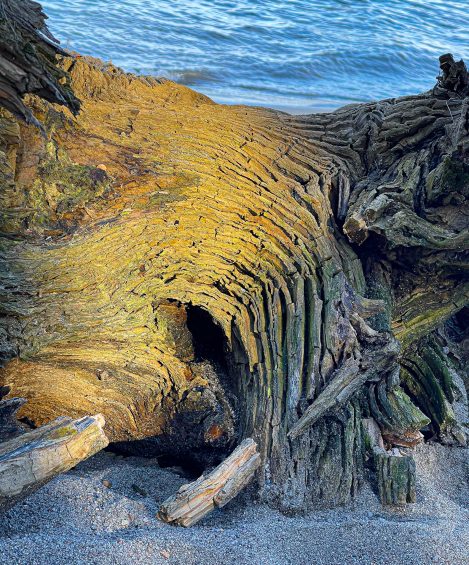
It all began one misty morning nearly ten years ago, as I meandered on the still-wet sand of Nehalem Bay on the Oregon coast. It was low tide, and as the shroud of fog began to thin, it revealed a long array of brooding, sculptural forms deposited at the farthest edge of the water line.
And I did meet them, instantly enthralled with their fantastical forms, and thus beginning a relationship with Pacific Northwest driftwood that continues to this day. It has become an intimate relationship—an obsession if I am honest—and I have revisited many of the largest and seemingly immovable hulks numerous times, getting to know well their individual, swirling designs and textures. Most driftwood comes and goes with the tide changes, but some of these heaviest pieces stay put, lodged into the sand. That is, at least until one of the more dramatic winter storms—of the magnitude that first deposited them on the shore years ago—comes to reclaim them.
Driftwood can be a photographic delight. The dynamic, organic forms of Nature’s sculptures offer endless compositional opportunities; many of them are suggestive of animal or human-like shapes, whether real or of the imagination. The mind’s tendency toward pareidolia can have a field day with these ‘creatures’ of the sea—as one stares at these forms, many of them stare right back!
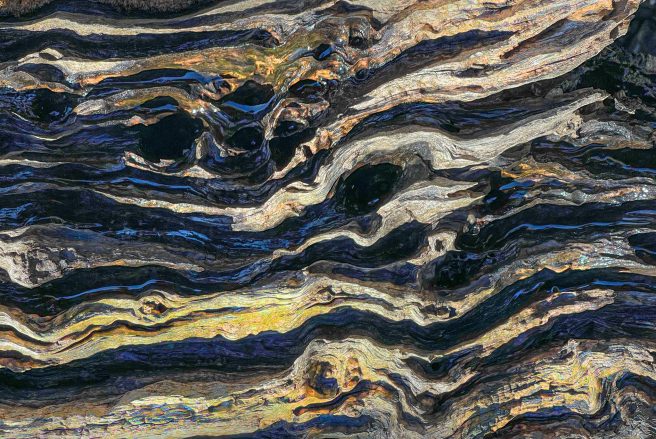
Further, they can offer a multitude of canvases for creating abstractions. Their patterns and textures have been massaged by water, wind and sand, often leaving unique patinas and subtle color changes on their surfaces. I have many times photographed them during a rainfall or just after a rain, when the moisture has dramatically heightened the intensity of the once-latent colors in the wood.
Like all of Nature’s organic materials, they are continually changing, and in that sense, though they have been literally uprooted from their earlier lives, they are still alive and evolving tree forms. Upon a second or third visit, they will inevitably have been transformed further by the elements, perhaps with a slightly changed shape, or a somewhat different texture, perhaps with a scattering of barnacles or a colorful growth of bacteria or algae.
In addition to their visual properties, I have been impressed by another important dimension of the ‘lives’ of these driftwood artefacts—the indisputable reality that they have traveled unknown distances from unknown places to wind up on these Pacific Northwest shorelines. One morning I was moved to compose a haiku about the phenomenon:
misty beach morning—
musing the long voyages
of traveling trees
Yes, they are indeed traveling trees. Where did this huge root cluster originate? What about this thirty-foot long log? Did it come from across the sea or down one of the Pacific Northwest’s many remarkable rivers? And what about this behemoth buried deep in the sand? How long was it afloat before its long-term docking on this beach? What kind of tree was it? When will it move on? Will it ever be replaced by another of its girth and weight?
These are the kinds of questions raised by contemplating driftwood. One thing for sure—you don’t want to be on one of these beaches during a major winter storm when giant waves are tossing these enormous hunks of wood up on the beach like so many matchsticks.
My curiosity about the origins and itineraries of these traveling trees led me to research several scientific articles on the driftwood phenomenon. Some of what I found was not unexpected; however, some of what I learned was indeed very surprising.
Driftwood can come from quite a few different sources, say the scientists. When rivers swell during the spring runoff, it is not uncommon for the high water gradually to undercut the roots of trees growing along the riverbank. Even a mighty Redwood’s tenuous grip on the earth can be jeopardized further each spring, weakened inch by inch or foot by foot until one year when the rushing water and riverbank erosion finally win out and that giant tree crashes into the river.
Depending on the river’s width and depth and the power of its currents, that tree may or may not be swept away on a journey toward the sea. It may first contribute to the formation of a logjam in the river. Such jams can powerfully affect the life of a river and its inhabitants, changing its course, depth, and ecosystem in that area. If that happens, a fallen tree may reside in a logjam for many years or even decades until flood conditions eventually loosen it and send its components downstream.
Smaller trees or logs that have been swept into a river from a logging operation site may be more likely to immediately ride the waves to the ocean. Sometimes the distances trees can travel are as much as several hundred miles.
The journey from a mountain hillside to an Oregon beach may not be a straight shot at all. It may take years, and by the time I happen to encounter a huge relic on the sand at Nehalem Bay, for example, it surely will have undergone many changes. It may have lost all its bark and been smoothed down to resemble a marble sculpture. It may have been broken into many pieces. And it may even have spent a long time buried beneath the sand. Scientists have discovered that driftwood from rivers may reach the ocean and drift in the sea’s currents there for some time, eventually getting washed up on the shore. Because of significant shifts in beach topography, driftwood can, over time, be completely covered with sand and spend years beneath the surface. While buried, the wood can, in essence, be ground smooth by the action of water and sand, as if in a rock polishing device. Eventually, when the beach formations shift again, such driftwood may be tossed once more to pile up at the waterline.
Driftwood may even travel all the way across the Pacific from as far away as Japan, a much greater distance than any river journey. However, much of the driftwood beginning its journey in the East never makes it to the Western United States coast. Scientists say that when driftwood is carried out into the ocean, it can maintain its buoyancy for no longer than a year and a half.
There is much to contemplate when observing a driftwood covered beach along the Pacific coast. A tree that stood its ground for perhaps hundreds of years may then have had an ‘after-life’ of hundreds more, as it traveled by river to the sea and eventually to a wood-strewn beach, where it became subject matter for an enthusiastic photographer such as me. There are so many aspects to appreciate in a driftwood log in addition to its aesthetic properties—an entire, mysterious backstory as a traveling tree.
The Travelling Landscape Photographers Camera
The balance between portability, quality and function has always been difficult when working away from motorised transport. Typically, I have reached for the 35mm based mirrorless system when portability was the most important aspect; but the introduction of the latest Hasselblad CFV 100C / 907X and the newer ‘V’ and ‘P’ lenses enables a way to go small without compromise. This short article comes from a week long trip to the island of Eigg in Scotland where walking is the only mode of transport for visitors, and the CFV 100C / 907X combination came into its own.
Over the years, most of my landscape work has been done with 5x4 cameras and sheet film. The migration to digital became affordably compelling with the introduction of the Sony A7R, and since then, I have pottered about with most of the genres as the manufacturers leapfrogged with new technology. There was (and still is) something fascinating about the larger formats and the ability to use technical cameras for considered landscape work. I retain a technical camera system with a range of lenses for use only with a digital back (DB). This was my expectation and primary intended use for the CFV 100C. Not the most portable though… which brings me back to Eigg.
The CFV 100C has a unique solution when hitched to the included 907X camera body. The combination of this, the CFV 100C and the newer tiny (ish) ‘V’ and ‘P’ lenses makes for a very compact and incredibly portable system. For those with long memories, it is similar in size and form to the legendary Hasselblad SWC (super wide) camera. Added benefits come in the ability to downscale all the peripheral gear you need like the tripod, the head, the bag and if necessary, the filter system.
Comfort in the field has a huge impact on how I approach taking pictures and has a direct consequence on the quality of the images I produce. Having been to Eigg before, I knew that I would not need any long lenses, so travelled with the 28mm P, the 38mm V and the 65mm (which I never used), leaving the technical camera and 90mm lens at home
About Eigg
Eigg is interesting on so many levels with a unique island atmosphere. The geology is fascinating, with remarkable Jurassic strata and a violent volcanic past, which is laid bare in the landscape. The most obvious feature is the distinctive Sgurr, which is pitchstone from lava flows, and not a volcanic plug as most assume. There are obvious volcanic features all over the Island with dykes crisscrossing the beaches and cliffs and great terraces of basalt. All the while, you can see and feel the menace of the ancient volcanoes responsible for the incredible forces that tore this land apart and formed Skye and Rum, which is ever present to the west.
The CFV 100C & 907X
The combination of CFV100C and 907X makes a very basic box camera. It is easier to write a list of things it doesn’t do, rather than what it has as a feature set. But it has some important technical components.
The sensor is Back Side Illuminated (BSI), which means that it is quite close to gapless in design, so the issues of colour casts suffered by the previous generation have largely been removed. This applies mostly when using it as a digital back for a technical camera. But other wide angle lenses, where the rear element is very close to the sensor, could give a magenta cast in the corners with the previous model. Hasselblad’s latest 28mm is an example of a lens that exhibited purple corner shading issues with the earlier 50mp series camera. Previously, a Lens Cast Calibration filter was required with any Schneider or Rodenstock lenses of 50mm focal length or wider.
The diminutive 907X camera body gives auto-focusing, and has good face detection taking advantage of Phase Detect Auto Focus (PDAF) on the sensor. This does make the AF quick and reliable. But it can introduce a problem that Hasselblad are yet to effectively solve, whereby the PDAF array can provoke lines that appear with some wide-angle lenses. This is particularly true with the more symmetric optics like the Schneider 47/35mm lenses, and to a lesser extent with the slightly telecentric designed Rodenstock 40mm and wider lenses. The PDAF array is slightly raised from the sensor and the ‘shadow’ causes the lines. It is not unique to Hasselblad, and most manufacturers had this issue when first moving to the BSI sensor. They have addressed the problem through firmware. In practical use, I have not been bothered by it, as it requires extremes of post processing to be noticeable, and then only on large areas of plain tone or colour (like blue sky).
The 907X is shutterless, so either a lens has to have a shutter (nearly all Hasselblad lenses have one) that can be triggered by the camera or you may rely on the Electronic Shutter to take pictures. One of the difficulties of 100 megapixels is the amount of data that has to be moved off the chip at the time of exposure. Apart from the latest Global shutters, which read data in one go, current chips read off data line by line. If using the electronic shutter then the amount of time to read the whole chip can mean that the movement of any object may be distorted (rolling shutter). The Electronic Shutter in the CFV 100C has a fast enough readout that this is rarely an issue in landscape use, especially in 14 bit rather than 16bit mode where the readout is quite a bit slower. This is an essential feature allowing the use of shutterless lenses with the back, for example, when using a technical camera.
For storage, a 1TB SSD is built into the back with a secondary back up CFexpress type B slot, and this completes the important technical components.
On top of the tech is a very simple User Interface easily managed via a good-sized responsive touch screen which works well. The screen is good enough even in bright light, and hinges upwards so the screen acts as a waist level finder, as per the Hasselblad 500 series film cameras.
What doesn’t it have?
Well, this may sound negative, but in reality, the features it has are designed for the purpose intended, nothing more, nothing less. If you want/need things on this following list then it is the wrong camera for you.
IBIS: (lack of)
In many ways the biggest drawback. Hasselblad lenses do not have OIS either, so with 100mp of detail my keeper rate, handheld, dropped alarmingly with the CFV 100C + 907x combination. I am quite comfortable handholding with IBIS and wide/normal lenses at 1/10th of a second, expecting a reasonable hit rate on the Hasselblad X2D, or Fujifilm GFX 100S (previously owned). With the 907X I find a shutter speed that is 1/focal length, as per the old maxim, is a fair low limit for handholding.
AF-C/AF Tracking: (lack of)
You aren’t going to use this camera for moving subjects.
Joystick: (lack of)
This has become standard on the majority of higher end cameras (but the X2D doesn’t have one either). It can be added to the 907x with the optional grip, but then the stability on a tripod is compromised due to a very thin connection to the plate. The touchscreen is excellent and easy to use so for tripod use this not an issue except perhaps in climatic conditions where your fingers do not operate the ‘touch’.
Screen angle
This may feel quite minor, but what does somewhat affect useability in the field is the screen angle: The design of the back is close to the original film magazine of the 500 series cameras. It is beautiful but… the screen slopes, and hinges in one direction only. This is perfectly fine if you only shoot in landscape format, or use it on a 500 series or shoot square format. As soon as you shoot portrait then it becomes quite disorienting. I am not the only one to find it much harder to compose because the angle of the screen leaves you looking in a different direction to the one you expect. A fully articulating screen could solve this.
Tripod solutions
Before going into the field, the biggest problem to solve has been effective and secure coupling of a tripod plate. The 907X is very thin, and although it does have an indent to prevent rotation of the plate there are a very limited number that have the pin in the right place. Arca Swiss have a plate that is for “Classic Leica R” that is secure but ergonomically poor, not matching the camera profile. The best solution is the MC-LS Universal ‘L’ bracket from Really Right Stuff. Elegant and neat, it could have been made for the camera, and it also fits the X2D perfectly.
Lens Choices
Hasselblad is gradually migrating away from the older style XCD lenses with the newer ‘P’ (Pancake) , ‘V’ (Versatile) and ‘E’ (Exclusive) series. My experience with the new and old lenses is that there is not a bad lens in the bunch, and choice can be made based on the focal length you need. Zoom lenses are limited to older series 35-75mm and newer 20-35mm E series. Long lenses are limited to 120mm Macro and 135mm with matched 1.7x converter. I am comfortable using these lenses stopped down to f/22 as needed for Depth Of Field, despite conventional wisdom suggesting that images should be severely degraded by diffraction.
Personally, I own 25, 38, 55 and 90mm ‘V’ lenses, have owned the 28mm ‘P’, which I replaced with the 25mm; and have tested the 35-75mm XCD.
My most used lens is the 38mm. It is a compact high-quality package. There is a little bit of field curvature to watch out for when focusing, and a tendency to flare a little more than other lenses I have used.
A selection from the more compact 28P/38/45P/55/75P best complement the size and form of the 907x. The 25mm and 90mm V lenses produced some of the finest images I have made, but they are quite large, especially the 25mm vs the 28mm. The 25mm has proved its worth for Aurora work.
Adapted lenses from 6x4.5/6x6/6x7 film era cameras generally work well, but are not compact. Most are now quite aged, and finding a good copy of a well-regarded lens can be challenging.
Image Quality & Development
I am including these together because there is a lot of debate about how to get the best from the Hasselblad Natural Colour System (HNCS). Like Phase One and its relationship with Capture One it is designed to produce best results from the (in house) remarkably similar-looking Phocus software. You cannot use Capture One with Hasselblad files.
Personally, I have been a Lightroom user for years and am comfortable that I get good results from it. I have done my own comparisons and the power of the additional features in LR far outweigh the small quality or colour differences I thought I could see. The only footnote to that is that LR ‘Camera Standard’ profile is rated as the closest in colour presentation to Phocus. I also use extensively the Tony Kuyper Linear profiles for the Hasselblad cameras with good effect. For images I cannot get quite right in Lightroom I will go to Phocus for initial development before exporting to a .tiff for polishing and cataloguing in Lightroom.
Auto White Balance is uncannily accurate in my opinion, and I almost never have to modify it except to taste. The colours are natural, and greens well handled.
The files from the Hasselblad 100mp sensor and developed in Lightroom are the ‘best’ to my taste from any camera system I have used.
Summary
I have been using the digital backs in both 50 and 100 variants for an extended period. The 907X remains probably my favourite landscape tool if I am not chasing the light; the simplicity and balance works well for me. It needs to be used on a tripod. The small jewel like lenses are a joy to use, especially the ‘v’ variants with the clutch to manual focus.
After several trips where I tried to double duty the 907X as a handheld camera I felt the keeper rate was too low and I complemented it with an X2D. Same wonderful quality, but hand-holdable due to the excellent IBIS.
- Background – Journey to the CFV 100C
- Dyke swarm punched through Jurassic Sandstone on Laig Beach. 28mm P 1.4sec @ F16
- Bay of Laig. Stitch with 38mm. 8sec @ F16
- A dyke pie crust on Singing Sands 38mm 1/8th sec @ F16
- Bay of Laig – 38mm 4sec @ F22
- Storm over Rum. 38mm 0.3sec @ F16
- The Sgurr across Bay of Laig. 38mm 0.3sec @ F16
- Rum at Sunrise. 38mm 1.4sec @ F16
- Rum from Singing Sands at Dawn. 38mm 3sec @ F16
- Micro Plastic debris Singing Sands. 55mm 1/90th @ F11
- Micro Plastic debris Singing Sands. 55mm 1/90th @ F11
Moving Back to Analog
I started my nature photography in 2006. My first SLR was a Nikon F75, which I still have and use. I started with color negatives and pretty quickly changed for diapositives. However, it was a time when digital cameras became popular, and pretty soon I decided to buy one. It was Nikon D80. For a short period, I used both analogue and digital SLR, but with each photo taken, I preferred the DSLR more. I appreciated the clarity and sharpness it gave. My financial condition allowed me to operate on kit-lenses then and another good reason to rely on DSLR was its better kit lens.
Over time, I bought another DSLRs and lenses, including a full frame body. However, a few years ago (2020, I believe), I was browsing my old photos and I discovered that analog photos may have been a bit less sharpen etc., but had aesthetic (mainly colors) and mood that was much different from the digital ones. It was as easy to notice as there were photos from the period. I used both systems, so I was able to compare similar motives photographed in almost the same conditions. I also realized that the analog look made much better impression on me. Maybe I had to grow up to discover it, while in fact, there was nothing new to discover. I must have known it from the beginning. I was just focused on something else when I bought my first DSLR years earlier.
But in the third decade of XXI century I appreciated the depth, picturesque and smoothness of analog film. I was also curious if it is possible to achieve the same results on DSLR. I suspected that I had done something wrong in post processing. In fact, I did. I learned to do things better, but the result was still different from true analog film. I decided to ask an expert and contacted via e-mail with Jack Dykinga.
His answer was very clear—as I expected—that digital and analog techniques are different, and it is not possible to achieve the same results. He emphasized that he had thought digital cameras were better than analog, so he didn't share my delight.
I decided to come back to analog cameras. From then on, I use both systems again. As for analog cameras, I use Nikon F75 and Pentax 67. Soon after "rediscovering" analog world I noticed that the market for analog films got shorter and shorter, and many films were withdrawn from production. It meant that artists (photographers in particular) were not able to achieve the results their predecessors were. I thought that it was a new situation.
And the situation was non-intuitive while most people probably consider the present day as times of possibilities like no other in the world history. But this is the consequence of mass production and we should realize it.
As for my analog photography I have motives and seasons that I prefer to photograph this way. I also have plans to buy another analog SLR and manual lenses. I can write a few words about the particular photos and their aesthetics I like.
How did you find going back to film?
In two words: very well. I have never been the kind of photographer who takes a thousand images per session, so I did not feel bad about counting frames. I also did not have problems with not being able to watch the results right away. However, even today I sometimes forget which camera I use and I catch myself trying to watch a just taken photo on an analogue camera. It is always a time to smile but without discomfort. As I do not have knowledge of developing slides and I do not have the right place to do this, the thing which makes me feel unsafe is that there are very few reliable and professional photo labs handling the E6 process.
What differences in the work flow did you find?
The entire process of the films isn’t perfect in my case. I scan slides with an old Epson flatbed scanner. I haven’t chosen it. The simple thing is my friend has this scanner and I take advantage of his kindness (by the way, not only scanning, Pentax 67 I mentioned earlier is borrowed from him). I’ve never scanned with a high quality drum scanner. On the computer, I work mostly with Photoshop. I try to follow the rule to postprocess as less as possible to get good (expected) results both in analogue and digital photography. I must emphasize that in most cases I do less operations with scanned slides than with files from digital cameras, especially as for separating colours. This situation has two reasons. Firstly, it means that a lot of digital postprocess is done by the film (chemicals) itself. Secondly, I decide to take an analogue photo only when I evaluate that the particular conditions are optimal. As for digital photography, I’m more open to risk with bad conditions and more work on the computer.
What was it about the analog film you liked?
I am enchanted with its aesthetics or – looking for other words – colours and feel of depth. Many photographers who use analogue cameras say how important it is for them to have physical contact with film and all the analogue equipment, for example, the sound of the sliding mechanism. That’s true, it’s nice, but it’s not my priority. I’ve come back to the old days only because of how photographs are.
Has it made you look at your style and adapt?
Rather not I think but to be more objective it would be good someone else evaluates that as well. I haven’t changed from digital cameras to analogue ones. I use the old technology only in favourable conditions and when I want to photograph motives which I suspect would benefit from the aesthetics of photographic films.
How do you choose which camera to take with you?
It’s always a bit of a problem. It would be nice to have a following set with me: two DSLRs, one with a standard zoom, the other one with a telephoto zoom lens, 35 mm SLR with another standard zoom (unfortunately, my Tamron 24-70 doesn’t fully cooperate with Nikon F75 – the body can’t change the aperture so it’s always f/2.8 - rubbish) and Pentax 67 with two prime lenses.
For example, if it’s windy and I’m going to photograph veratrum and I have low ISO slides loaded, I don’t use the analogue cameras. I act similarly when I’m going to photograph wild animals that I know get active after sunset, because even ISO 800 is too low then, and I don’t use higher ISO on film (I’m not even sure about the availability of such films). Generally, there are subjects that I prefer to do on slides, for example, plants (but not macro). One of my most important series last year was to photograph veratrum leaves during the three – to four-month period when they’re open but before the plant has flowers. I like doing it on DSLRs and I love doing it on slides.
- Nikon F75, Fuji Velvia 50
- Nikon F75, Fuji Provia 100
- Nikon F75, Fuji Velvia 50
- Nikon F75, slide
- Nikon F75, Kodak Portra 800
- Nikon F75, Fuji Provia 100
- Nikon F75, Fuji Provia 100
- Nikon F75, slide
- Nikon F75, Fuji Velvia 50
- Nikon F75, Fuji Velvia 50
- Nikon D7200
- Nikon F75 Fuji Velvia 50 Pziemacki
- Nikon D7200
- Pentax 67, Fuji Velvia 50
- Nikon D7200
- Fuji Velvia 50
Issue 325
End frame: The Old Pond by Krister Berg
In Search of Visual Balance
At first glance, the image appears simple and minimalistic, appealing in its black-and-white presentation. Upon closer examination, shapes, details, and nuances gradually reveal themselves as the viewer delves deeper into the image. Grass and water lilies float motionless on a mirror-like water surface. A thicker branch structure from a fallen tree, along with more delicate branches in the background, appear as silhouettes against the dark water. However, this apparent simplicity relies on an intuitively composed structure of details. Creating order out of nature’s sometimes random details while maintaining a harmonious composition requires both experience and a sensitivity to form and balance.
When I was asked to write this article about a photograph that had made an impression on me, I chose an image from 2024 created by the Swedish landscape photographer Krister Berg. To understand how this image came to be, it’s helpful to briefly get to know the photographer behind it, so let me begin with a few words about him. For many years, Krister made his living as a professional photographer, working not only as a landscape photographer but also in fields ranging from food and industrial environments to portraits and interiors. Today, photography is a passion and a creative process free from deadlines and client assignments. His images, primarily in black and white, display a distinctive sharpness and refinement that can only be achieved through years of work and development. His mastery of details and contrasts gives his photographs a unique expression and depth that captivates the viewer’s gaze. Much of this comes to life in post-production, where he fine-tunes every element to achieve precisely the balance he seeks, often through the use of tones and contrasts. To perform this final step, a well-balanced and thoughtful visual structure is of course essential.
Beach Aerials
When I am asked what is the most inspiring type of landscape for me, I always say the coast without any hesitation. I also love the ruggedness of the mountains, and in my own country, the Netherlands, I can really appreciate the wetland areas of the Rivierengebied. And I also like photographing in forests more and more, now I do it more often.
If, like me, you have been involved in coastal photography for quite some time, it is occasionally nice to find new angles for this. For me, in recent years, this has partly been in the use of special wide-angle macro lenses when photographing creatures of the intertidal zone (see, for instance, my earlier story on limpets), and secondly, I make much more use of the drone to be able to photograph coastal landscapes from the air.
Torsten Pull – Portrait of a Photographer
In December, I co-led a workshop to Death Valley with my friend David Thompson (featured in this column back in 2023). As is tradition, we stopped at the well-known Zabriskie Point to get our workshop participants warmed up for a great week of photography. Despite the location’s popularity, it still holds the potential for unique images—if one is willing to work for them.
I had mentioned that our workshops tend to be quite busy, but if we happened to cross paths, we would be sure to say hello. That chance meeting led to a great conversation between David, Torsten, and myself about his photographic journey. Afterwards, David made a remark that stuck with me: "That guy can shoot!" His enthusiasm piqued my curiosity, prompting me to dive deeper into Torsten’s work—and I was thoroughly impressed.
A Collaborative Book about the island of Orasaigh, Uist
Orasaigh is a collaboration between poet Steve Ely and photographer Michael Faint, inspired by the tidal island of Orasaigh, just off the coast of South Uist at Boisdale. The project reflects their shared response to the island’s landscape and wider themes connected to the area.
Stephen’s poem, while rooted in the place itself, explores broader issues such as rising sea levels, environmental change, history, culture, and class. Michael’s photographs offer a strong visual impression of the island, standing alongside the poem as a distinct but connected perspective.
Together, the poem and images offer a thoughtful and layered view of Orasaigh, presenting the island as both a fragile and hopeful symbol in the face of current global challenges.
What’s your connection to Orasaigh on the Isle of South Uist?
SE: I’ve been holidaying once or twice a year in South Uist since 2008. I’ve come to love the place – landscapes, wildlife, people, language, culture - and in 2019, I unexpectedly found myself writing about it.
MF: I’ve lived and worked in South Uist since 2019. Most of my photographs over the last six years are of Uist. My website, ansolasoir.com, is a translation of The Golden Light to Gaelic.
Both: Tell us more about how you two connected and how the project came about.
SE: After I’d written the poem, it struck me that it was very visual and that it would work well with photographic accompaniment. I found Mike’s website online and was very impressed with his work, which seemed to address landscape in a way congenial with my own approach. At about the same time, the photographer Alex Boyd, who was aware of the poem, recommended Mike to me. Mike and I connected online, and the collaboration developed from there.
MF: Steve dropped me a mail, we had a chat, and he sent the poem over. Once I had read it, I thought that there was a lot to work with and was intrigued by the potential for a collaboration.
Boring Postcards 2
I’ll declare an interest upfront: I like trees. Trees do good stuff for our environment, they lock up carbon, improve air quality, prettify our towns and cities, and support a myriad of animal and insect life. They also provide building materials, heat our homes and provide the paper for our books and currency… Without wood we would have no Stradivarius violins and cellos, and a host of other instruments. Many of our first infant sleeps are in wooden cots, and our final long sleep is in a wooden box. That’s why I like wood. And trees. And after five years apprenticeship, became a carpenter.” ~John McPherson, 20131
If you go back through the more than 300 issues of On Landscape (and the various volumes of the Natural Landscape Photography Award and Landscape Photographer of the Year), there are really rather a lot of images of trees2. Some highlights include the Eden valley trees in mist by Mark Littlejohn3; the images of the Fontainebleau forest by Francesco Carovillano4; the forests of the Taunus Mountains by Xavier Arnau Bofarull5; articles on the Scots Pine, Birch and Rowan trees by Tim Parkin himself6; the winter trees of Zion by Wayne Bingham7; and many others. Trees are also a frequently recurring subject in the 4x4 series; evidently, they are a pretty popular subject for many landscape photographers.
Looking more widely, photographic images of trees have a long history. A 2018 Exhibition at the V&A Museum in London (Into the Woods: Trees in Photography) was held to mark the 800th anniversary of the Charter of the Forest sealed in 1217 by King Henry III that restored access to forest lands that had been previously used exclusively as Royal Hunting Grounds8. The book of the exhibition9 provides a useful survey of images of trees from the very earliest days of photography. As early as 1857 the V&A staff photographer, Charles Thurston Thompson (1816-1868), was sent by the Director of the Museum, Henry Cole, to record images of the trees on his estate at Albury Park in Surrey. In the 1860’s Edward Fox (1823-1899) had been taking pictures of trees from the same point in different seasons. A catalogue of 183 images of different species of trees taken by Henry Irving10 were purchased by the V&A between 1899-1905. Such images were sold and made available in the V&A Library as a resource for artists, providing a basis for realistic illustrations. In France, the celebrated photographer Gustav le Gray (1820-1884) took images of trees at Fontainebleau11 as well as his well-known seascapes. As photography struggled to be recognised as an art form, the pictorialists (such as Alfred Stieglitz, Edward Steichen, C. H. White, A.L. Coburn, and William A. Cadby) often made extensive use of dark masses of trees and woods in their work.
Some trees have inevitably become somewhat stereotyped as images: the cherry blossoms in Japan13; the tunnel of twisted beech trees at Stranocum in County Antrim14; the dead black trees backed by immense sand dunes at Deadvlei in Namibia; the minimalism of winter trees standing in snow15; the ancient bristlecone pine trees in the White Mountains of California with trees up to 5000 years old16.
And talking of stereotypes, there are also the widely reproduced autumn/fall colours of the Aspens, particularly in Colorado and California18. Well-known Aspen photographers include Ansel Adams and John Sexton (in monochrome ) and Christopher Burkett and Peter Lik (in colour20) and, more recently, the On Landscape contributors Matt Payne21 and Charlotte Gibb22. There is also a recent Kozu book by Adam Gibb entitled Aspen23. The theme is so popular that guides to the best Aspen sites in Colorado and other states can be found on the Internet24. Back in the UK, books can be found describing exceptional trees25 as well as species guides. There is also, it seems, an award for tree of the year26.
Much has been written on the composition of taking images of trees. This requires reducing the three dimensional complexity of a tree or groups of trees to something that creates interest in 2 dimensions. Notable articles include those by Tim Parkin and Dav Thomas27 (who also produced the book With Trees28).
This can be seen in the works of single photographers, such as Lee Friedlander in his (monochrome) images in the books Flowers and Trees from 1981 and Frederick Law Olmstead Landscapes in 200829. While known for his innovative framing and composition Friedlander seems to revel in the complexity of mundane “thickets”, and it is sometimes difficult to see what might have attracted his eye in some of the images. Another notable photographer to revel in the complexity of groups of trees and thickets is Jem Southam in his Painter’s Pool series30.
There are now so many images of trees as a sub-genre of landscape photography that it could be argued that they have become a little boring, even if excellently lit and excellently framed and with mist in the background. However, I am hoping that this might perhaps be another example of how images that to many people would be seen individually as boring postcards might become more interesting as a series (see my first Boring Postcards article for On Landscape in Issue 31631). The Friedlander and Southam images are drawn from such series, even if individual prints have also been collected.
Thus, following such celebrated examples, I will take the risk of presenting another (and assuredly last!) series of Boring Postcards, this time in monochrome and taken at the edges of Swiss forests where there are often complex thickets but also areas where the trees and understory are actively managed.
There are many copses, woodlands and forests revealing their edges as the walker passes. This then results in a plethora of choices for such a series, and the need to decide on what makes a happy composition (especially when that mist is lacking!). In thinking about this there does not seem to be a simple answer but searching out compositions has the advantage that it can inspire focus on your surroundings as you walk32. Some have an element that stands out; others do not. Some have foreground interest and depth, others a rather flat plane. Some are rather complex, others have only relatively simple elements. It seems that indeed anything goes (or at least you can decide for yourself if any of the compositions work for you or whether, as with any collection of Boring Postcards, you just quickly swipe to the end). As before, this is only a selection of the images, more may be found here33.
References
- In comments on the exhibition Among Trees of the photographs of Iain Sarjeant as reported in issue 47 of On Landscape at https://www.onlandscape.co.uk/2012/10/an-exhibition-iain-sarjeant-among-trees/
- Searching on “trees” in On Landscape” brings up at least 500 results including Tim Parkin’s Composition Photographing Trees - https://www.onlandscape.co.uk/2011/05/composition-photographing-trees/
- E.g. https://www.onlandscape.co.uk/2015/08/an-approach-to-composition/; http://marklittlejohnphotography.com, especially the Secret Life of Trees and winter in the Eden Valley galleries
- https://www.onlandscape.co.uk/2023/12/voices; https://www.francescocarovillano.com
- https://www.onlandscape.co.uk/2023/11/where-the-trees-live/
- https://www.onlandscape.co.uk/2016/02/the-scots-pine ; https://www.onlandscape.co.uk/2016/09/birch-tree-landscape-photography; https://www.onlandscape.co.uk/2016/11/rowan-trees-photography/
- https://www.onlandscape.co.uk/2020/08/winter-trees-zion-national-park
- See the Wikipedia article at https://en.wikipedia.org/wiki/Charter_of_the_Forest#:~:text=The%20Charter%20of%20the%20Forest,in%20force%20for%20centuries%20afterwards.
- Book by Martin Barnes with the same title, V&A Publishing, 2019.
- Not much seems to be known about Henry Irving. The V&A cites records from the Royal Photographic Society that suggest that he lived in Lancashire in 1899 and moved south in the early twentieth century. He was based in Horley, Surrey, until around 1913, when he is recorded as living in Letchworth, Herts. He exhibited at the RPS between 1899 and 1915. He took many images of trees in the counties around London.
- For more about the history of Fontainebleau, see the 2017 article in On Landscape by Herbert Ascherman at https://www.onlandscape.co.uk/2017/05/forest-de-fontainebleau/
- For example, some of the images of Shinzo Maeda in his book Trees and Grass were published by Taschen.
- Known as the Dark Hedges and apparently now made famous by appearing as the King’s Road in the Game of Thrones series
- Such as those of Michael Kenna in Japan and Korea and the first part of the book by Abbas Kiarostami, Images Still and Moving, published by Hatje Cantz Verlag in 2012 https://www.hatjecantz.com/products/17198-abbas-kiarostami
- See https://en.wikipedia.org/wiki/Ancient_Bristlecone_Pine_Forest
- See https://en.wikipedia.org/wiki/Pando_(tree)
- According to Wikipedia, see https://en.wikipedia.org/wiki/Fortingall_Yew
- Searching for “aspen in fall images” results in 37,700 images on Istock and 14534 on Getty Images.
- For example, https://www.moma.org/collection/works/53646; https://www.moma.org/collection/works/50417 and the John Sexton book Listen to the Trees published by Bullfinch Press in 1994, http://www.johnsexton.com/Listen_to_the_Trees.html
- For example, https://www.onlandscape.co.uk/2021/10/christopher-burkett-radiant-mountain-aspen/
- https://www.onlandscape.co.uk/2022/01/matt-payne/; https://www.mattpaynephotography.com/gallery/aspen-tree-photos/
- https://www.onlandscape.co.uk/2017/06/charlotte-gibb/; https://www.onlandscape.co.uk/2017/05/endframe-dancing-aspen-charlotte-gibb; http://www.charlottegibb.com
- https://www.kozubooks.com/books-new/aspen
- For example, https://www.mickeyshannon.com/articles/colorado-fall-colors-photography-locations;
https://www.randybottphotography.com/gallery/colorado-fall-color; and even in Forbes magazine: https://www.forbes.com/sites/brittanyanas/2024/08/19/top-places-to-see-autumn-colors-in-colorado - E.g. https://harpercollins.co.uk/products/the-great-british-tree-biography-50-legendary-trees-and-the-tales-behind-them-mark-hooper?variant=39880371634254 ; https://shop.nationaltrust.org.uk/50-great-trees-of-the-national-trust.html ;
- The Skipinnish Oak was chosen by public vote from a shortlist of 12 organised by the Woodland Trust.
https://www.woodlandtrust.org.uk/trees-woods-and-wildlife/british-trees/tree-of-the-year. It is interesting to wonder how the votes might have been influenced by the images shown for each of the shortlisted trees (though there are no links from the shortlist to images now). The Woodland Trust also maintains an inventory of ancient trees in the UK (209,000 so far) for which submissions are invited. The Skipinnish Oak will represent the UK in the European Tree of the Year contest in 2025. - See Tim Parkin’s Composition: Photographing Trees (https://www.onlandscape.co.uk/2011/05/composition-photographing-trees) ; and Dav Thomas Seeing the Wood for the Trees (https://www.onlandscape.co.uk/2013/05/seeing-the-wood-for-the-trees);
- Dav Thomas, With Trees, published by Triplekite Publishers in 2013. (https://www.onlandscape.co.uk/2013/07/with-trees)
- Frederick Law Olmstead (1822-1923) was an American landscape architect famous for co-designing many well-known urban parks with his partner Calvert Vaux, including their first project of Central Park in New York see https://en.wikipedia.org/wiki/Frederick_Law_Olmsted. Lee Friedlander was first commissioned to photograph the parks in 1988 but continued the project for more than 20 years.
- Jem Southam, The Painter’s Pool, Nazraeli Press, 2007, see also https://hymancollection.org/bodies-of-work/jem-southam-the-painters-pool/
- https://www.onlandscape.co.uk/2024/11/boring-postcards
- See my article on walking at https://www.onlandscape.co.uk/2024/06/the-road-not-taken
- This is a Blurb print-on-demand book that can also be found via the https://www.blurb.co.uk/b/12206848-les-bords-de-la-for-t website. All the images can be previewed for free.
The Photographer’s Extended Mind
The mind - with its sometimes harrowing complexity, contradictions, and chaos - is very much not a stable entity. This is not something we can change. When we look for it, or even when we don’t, we can feel that impermanence within and without, inside of us and in the environment we exist in. We wade through a thick, inescapable reality that is too thin to grasp but too thick to run through, only vaguely aware of the universe of changes occurring to and around us every moment.
Though it can be destabilizing to think of ourselves as untethered, malleable, and inconsistent when we are usually desperate for the opposite, the greatest powers within our minds are accessible only through the process of change. As the world changes, we change, in turn changing the world as we experience it, leading to even more internal change - and all of this happens without direction or control in the mushy core of our heads.
Neuroplasticity, the ability of the brain to restructure and change itself based on new stimuli and experiences, is a biological necessity to manage and channel the inherent chaos and unpredictability of the external world towards greater potential for surviving, reproducing, and, eventually, dying.
As nature photographers, it’s difficult to accept that everything that we experience - those elevated emotions of awe, inspiration, wonder, mystery, and joy that can appear while exploring beautiful natural places - are generated illusions of the brain without reference to a physical reality outside of us (what internalism argues); we tend to experience things as an externalist might: our minds and bodies creating reality and meaning through a participation with the environment.
Within externalism, there is a theoretical progression from passive to active participation. A passive externalist recognizes that the external environment affects the contents of consciousness, that we are influenced by the environment. The active externalist goes one step further and says that the external environment can actually be part of our minds. Andy Clark and David Chalmers coined this active externalism in a landmark paper called “The Extended Mind”, putting forward a hypothesis that the realm of the mind can extend from the brain and body to the external environment, that the mind can be thought of as being physically manifest in the outside world.
Calculators, maps, watches, even cameras, can be part of our minds because we use them as if they were part of it, reliably, intuitively, and constantly, engaging with them to create an ”extended system, a coupling of biological organism and external resource,” according to the now-famous paper. Our major cognitive system, the brain, expands outward and adds additional tools and processes to its repertoire, allowing us to reshape our minds and have new (or sometimes replicated) mental experiences via the environment that we interact with. A coupled system is created through a reliable and reproducible process that, over time, becomes so intuitive that it is effectively a cognitive process in and of itself. According to the experts, the requirements for this are: functional equivalence: the external resource must function in a similar way to internal cognitive processes and should be directly involved in the process; accessibility and availability: the external resource must be readily accessible and available to the mind when needed; reliability: the process must be repeatable and the output trusted as being accurate or representational; intentionality: there must be an intention to use the external resource as a part of the cognitive process.
As the authors explain, “If, as we confront some task, a part of the world functions as a process which, were it done in the head, we would have no hesitation in recognizing as part of the cognitive process, then that part of the world is (so we claim) part of the cognitive process.” In other words, if we replace or add a cognitive process (e.g.. doing multiplication) through the environment (a calculator) that we could perform ourselves (assuming one could, which for me might be a stretch), then the cognitive process of multiplication now lives partially outside of the brain (in this case, the calculator).
The photographer’s extended mind means that our photographic resources - the camera, lenses, tripod, etc - can transcend, through an investment in the combination of time, conscious effort, and practice, from a mechanical tool to, in the literal sense of the words, a part of our minds, stretching into the environment through our (camera) bodies. How does this happen, and when do we know if our minds have extended into our cameras? And most importantly, why does this matter at all?
Going back to the four requirements of proper extension (functional equivalence, accessibility/availability, reliability, and intentionality), we can see how this translates to the experience of making images. The camera is performing a function that the human eye is known for: directing and processing light; if you are like me, the camera at times is too available/accessible; and modern technology has made cameras exceedingly reliable too; which means that the main thing we need to focus on is our intentions in using our cameras. There is no wrong intention, generally speaking - the important thing is for there to be some intention at all. To intend to use a camera as a part of our mind is where a mechanical process has the potential to transform into a creative one, depending on what parts of your mind you are extending. Whether we are attempting to record the external (“capturing a moment”) or we are attempting to record the internal (“expressive photography”) does not determine the extent or success of the mind’s extension, but only demonstrates what is being extended from the brain to the camera. It is important to be aware of our cognitive objectives. Are we using the camera to replicate sight, or to be able to have a vague re-experiencing of this moment, or to translate meaning from the things that we see? For most of us, the answer may include all of the above. For the artist, the priority should be the latter - the observation and translation of internal meaning from external experiences.
Regardless of intent, the camera, like any other human tool, reaches its maximum potential for action when a user can wield it with the charm of intuition, when the four requirements merge.
Over time as one becomes more familiar with the intimate nuances of the not-you and the physical-intellectual-emotional connection inherent in any relationship, the internal struggle and fight to make sense of it all slowly erodes, and so do the doubts and confusions and expectations and frustrations that we sub/conciously harbor inside of us. The result is that the not-you ends up becoming a part of you, in a sense. It is part of your nature because it does not require you to deviate from what your body and mind know to do; directions are unnecessary. Of course this all sounds exceptionally straightforward, but as anyone who has invested in themselves to this degree knows: it’s not easy, and it’s a lifelong pursuit. And the harsh truth is that no matter how patient, persistent, and open-minded you are, how much you practice and invest, there is an asymptotic illusion called perfection that teases and motivates. “Practice makes perfect,” they say, wholly deceptively; what it does make is intuition, and that is good enough.
Just like how we don’t have to think about how to breathe, how to blink, how to swallow, how to laugh, how to digest, how to cry, or how to walk, we should not have to think about which buttons do what or what will happen if we press the shutter. This is how our biological system becomes coupled with our camera: we repeat certain motions - this dial controls shutter speed, this one aperture, that one ISO; and this button means I make a (usually) mediocre image - with predictable results. At a certain point, we know not only what the dials do and how to use them, but we don’t need to expend any resources to remember these facts. It all starts to become second-nature, and then first-nature. Our mind is in the process of entering the camera, but is also quietly busy, as it always is, changing itself.
The reason the dials are so familiar that we don’t have to consider them anymore goes back to our good friend, neuroplasticity - all of our experiences, whether familiar or completely foreign, pass like a rushing of water over the contours of our brains, creating and destroying rivulets and channels that determine much more than we dare to admit, directing thoughts and behavior and the mind-shatteringly diverse set of actions required to maintain a functional, living body. This is how we become who we are. Whether an experience elicits a misty drizzle or a downpour over the landscape of the mind is complex and, for now, mostly unknowable; but whether a channel is created by one intense experience or by the aid of practice is secondary to the consequence of the changes themselves. And suddenly, intuition is born and the channels and rivulets of a particular set of actions become so deep that information flows uninterrupted from our cells to our environment.
Beautiful and helpful though it is to know that we have the capacity for change built into us, the flip side of this reality is that some patterns, once they have been set by an endless mist or by a downpour, can be stubborn. For an artist, this is dangerous territory: the frightening and despised land of conformity, of habitual thinking, of stagnation. This is why practice, though it is critical to reach intuition, should be intentional to some degree, as it can be easy to practice patterns of behavior or thought that are less than useful or that are counterintuitive to one’s own goals. The point is, again, that we should be aware of what it is we want to expand into, our cognitive objectives, and that the process of intuition is natural but, thankfully, malleable. We can, it turns out, become what we want to be.
The question then becomes: what do we want to be?
Another startling revelation emerges after enough investment in the practice of photography: our minds are being shaped by the camera in return. We begin to see the world differently, like we are somehow part camera, our mind projecting images as though the eyes have adjustable shutter speeds and apertures of their own, influencing what we notice in the external world and what it means to us; a coupled system, a reciprocal influencing, an extension of ourselves. Eventually it starts to feel like we aren’t using a camera at all, like the camera is a physical extension of the hand, mind, and eyes. And through composing with the camera, which is now just a mechanical addition to the body, our minds can extend further still, seeping out like smoke towards the world: moving towards the trees, rocks, grass, water, leaves, mountains, and more, simultaneously expanding and destroying the self through the construction of meaning, revealing what can only be found inside each of us. We become closer to everything that isn’t us by stretching out as far as we can go, further, maybe, than we thought possible.
Through the creation of meaning - through our images - we can extend our mind a little further, to other minds. We offer, if accepted, a peek into our minds, narrowing the gap of understanding between fleshy universes, both minds extending toward each other. That is part of what makes art, and photography, so valuable: the ability to expand yourself just that little bit further, to be seen a little bit more clearly, in return seeing yourself more clearly too.
Again the question tantalizes and begs: what will we see when we become more clear?
Issue 324
End frame: The”Awakening Dragon” by Alister Benn
When Charlotte asked me to write an End frame for On Landscape, it didn't take me long to decide which photographer and image to choose. The "Awakening Dragon" by Alister Benn has always been one of my favourites. I first saw it in 2021, and as far as I remember, it didn't have that title back then.
Those of you who know Alister will be familiar with his concept of the five triggers that make us engage with a scene: luminosity, contrast, colour, atmosphere and geometry. He brought this awareness with him from multiple trips to the Gobi Desert, which strongly influenced his relationship with his photography and the way he wants to be in and interact with this world. All these elements are reflected in this image.
When I look at the Awakening Dragon, I might or might not know anything about where and when the photo was taken, what Alister had in mind, what mood he was in, or what was going on in his life. It doesn't matter to me as a viewer.
John Blakemore (1936-2025)
I met John Blakemore for the first time at one of the Photographer’s Place workshops in the Peak District. The event was a reincarnation of a series of seminal residential workshops that were run in the Peak District in the 1970s and 80s which were started by Paul Hill. They offered immersive, creative courses led by influential photographers such as Thomas Joshua Cooper and, of course, John Blakemore. Over the course of the two-day workshop, John came across as a delightful combination of philosophical and slyly jocular, at once self-deprecatory but cleverly challenging in his insights.
It was during the afternoon of the second day when I got to appreciate just what a talent he was as a photographer and printer. John had collected the best of his work into an extensive portfolio of prints to take to Birmingham Library, where it was to be held in perpetuity. He said he was sure they’d be fine if we had a chance to get our hands on it before it was taken to the and so, for the remainder of the afternoon, we got our hands on some of the most beautiful examples of printing I’ve ever seen and with an in person discussion on each piece of work as it was passed around the group.
I have to thank Paul Hill for organising this event, and I also have him to thank for allowing us to publish the obituary he wrote for John, which was also published in the British Journal of Photography. I asked a couple of friends who knew John well to contribute their own personal memories of John, which will be included at the end of the article.
Paul Hill
Time plays tricks with the memory, but I think it has been about 50 years since I first saw a photograph by John Blakemore. It was a nude in long grass that I thought was made by French photographer Jeanloup Sieff, much in vogue in the 1960s and 70s and known for wide-angle images of women. Looking back, it is obvious this image was part of the transitional period between John’s documentary work, made in his home city of Coventry, and the meditative landscapes and exquisite still lifes he became renowned for in the latter decades of the 20th century and early years of this century.
When we both started work on the joint Creative Photography diploma course – he at Derby Lonsdale College of HE and me at Trent Polytechnic, Nottingham (now Derby University and Nottingham Trent University) – he sported a hipster-type beard and favoured denim jackets. I mention this because people think of John as a guru and gentle sage with long hair and beard, who always wore a fisherman’s smock and open-toed sandals. Many followed this bohemian fashion, but no one carried it off better than John.
This persona came with an ever-increasing interest in Eastern philosophy and tantric practice (his brother taught yoga in the West Country). But John was not an aloof mystic or guru. He had a sharp, acerbic wit but was also very shy. I remember him telling me that when he started teaching in Derby, he wandered the corridors at the Kedleston Road campus summoning up the courage to face his first class of students.
This will surprise those photography students and workshop attendees at my Photographers’ Place in the Peak District, who clung to his every word as he talked eloquently about his work and sensitively critiqued their photographs for hours. His introspective approach reflected a movement in British photography that sought to use the medium in a more meditative way. Nature and the landscape were the leitmotifs. Spirit of Place was replacing a moment frozen in time. However, from time to time, the black dog descended, and you would not hear from John for a while.
I knew he would emerge when asked to give a talk about his work or run a workshop – which we did, often. John was not a self-promoter. But when someone opened the door and offered a platform, he came alive and entranced his audience with deep philosophical insights and immensely useful tips on how to improve photographically. He also possessed great curiosity and an impressive intellect. An example of this came when Derby offered him a sabbatical in the late 1980s and instead of using the period to work on a new project, he enrolled on the MA Film Studies course at the University of East Anglia.
His renowned large format work surfaced following time spent in Wales in 1968, unsuccessfully running a cafe with Penny (his second wife) after the breakdown of his first marriage. Influenced by the Transcendental Movement and the work of American photographer Minor White, John returned to Wales and the Mawddach Estuary, where he used the natural world to make emotionally deep black-and-white images that were wonderfully gestural and metaphoric, about ideas, not things.
During mentally challenging periods later, he often took nature indoors and made large format photographs that beautifully chronicled the life cycle of cut tulips in and out of vases and arranged thistles and pampas grass still lifes that reminded me of Roger Fenton’s fruit and flowers prints made 140 years earlier.
Like many photographers of that postwar era, John stumbled on photography before pursuing it professionally, seeing the seminal Family of Man exhibition in the pages of Picture Post while he was doing his National Service as an RAF nurse in Libya in 1956. He recalled in John Blakemore: Photographs 1955–2010 (Dewi Lewis, 2011): “I saw photographs not as speaking of sameness but of difference. Of disparities of wealth and poverty, of war and peace.” He immediately ordered a camera and revelled in the excitement of looking through its lens.
Many see John as an artist who uses a camera, but I always think of him as a photographer who made art. This is not a semantic conceit; it defines a particular empirical practice that is camera-based, where the maker thinks and sees photographically and focuses on making the final print the event, rather than a record of what is in front of the camera. John made his landscape or still life prints with great, almost fetishistic concentration on craft and immaculateness. He was a consummate fine printer, rewarded by transmitting the sensitivities of his seeing into a tangible form.
It was an intensely personal journey as the photographs are emotional and evocative – and an escape from domestic problems and relationship difficulties. From time to time, he came to stay in my caravan in the Peak District and went out alone every day with his trusty MPP 5×4 and tripod. “To be alone in the landscape was a release, a return to the pleasures and pursuits of my childhood which had been lost to me,” he said.
John had left school at 16, going against his parents’ wishes to work on farms in Shropshire, my native county. He would talk about working with horses under the shadow of the iconic Wrekin, a hill near what is now Telford. Up until that time, he had been a city boy. He was born in 1936 into a house without books, but became an avid reader obsessed with birdwatching, drawing and painting. He was influenced by his grandfather who had been a carter (someone who transported goods by cart). Perhaps that is why he always headed for the stables when he came to visit me.
On one of those visits, he came with a handsome young man in his twenties, one of his two sons from his marriage to first wife Sheila. He had not seen him since the youngster had been a child and part of the reconciliation was visiting his photographic world. John was not a mystic in my experience, though he was mysterious. But if you want to discover this complex, gifted and generous person, you need only look at his photographs.
Joe Cornish
I was still an art student when I first came across John Blakemore’s work in the late 1970s. I still have a monograph published by the Arts Council of John’s work at the time, all of it landscape. And although other photographers have guided my own path through the years, it is no exaggeration to say that John’s influence was first, and is still the greatest. You might compare my work to his and find little, apparently, in common (colour vs black & white, wider landscapes vs intimate etc), yet John’s work inspired in me the idea that landscape photography was an artistic calling, in which personal expression was possible.
As time went by my focus became more concerned with earning a living as a working photographer, but with workshops, teaching and public speaking in recent years, I now find the lessons I learned from John’s example resonate as clearly today as the first time I saw his imagery. Only last week I found myself experimenting with a technique directly informed by prints in John’s series, Metamorphoses. I count myself lucky to have met him several times, and came to understand a little of the complexity and humanity that informs his photography. His immense contribution as photographer, printer, educator, thinker and inspiration will stand the test of time.
Kyriakos Kalorkoti
Like many others I first met John through photography, he astonished me with the depth of his insight into the psychology behind my landscape images at the time. As our friendship developed we had many wide ranging rewarding discussions: he was often amusing, always considerate, clear and itellectually sharp. These qualities shine through his writing.
On one occasion I bought a rather nice loaf of bread on the way to visit; as soon as it was unwarpped out came his camera to capture its wonder, eating could wait! I spent many happy times with a view camera in his beloved garden, too busy to notice that he was photographing me at the same time. Later on he presented me with a beautiful hand made book of the photographs with text in his characteristic handwriting, a typical generous gesture which I treasure. Many of his wonderful prints adorn the walls of our house, another treasure.
We know the day of parting will come but always hope "not yet". When it does come, the richer the friendship the deeper is the grief but the greater is the consolation from the good fortune of having had such a friend. Thank you John, my dear friend.
More about John
We were lucky to engage John to speak at our event in the Lake District. I’ve published the recording on YouTube and highly recommend watching.
If you want to find out more about John, you could also watch the piece recorded for Birmingham Library.
You can see more of our interviews and articles about John Blakemore via our tag link https://www.onlandscape.co.uk/tag/john-blakemore/.
Any Questions, with special guest Rachael Talibart
The premise of our podcast is loosely based on Radio Four's “Any Questions.” Joe Cornish and I (Tim Parkin) invite a special guest to each show and solicit questions from our subscribers.
Brendan Devlin
Consciously or not, we invariably loop back on early interests and experiences in our photographic subject matter. In Brendan Devlin’s case, this is the woods and shoreline of his childhood, and in particular, the passage of time, the forgotten histories—the enduring and ephemeral elements. More than a theme, this is a process too. Brendan has spent 15 years observing and photographing the changes occurring around Connecticut’s Oxbow, close to his home and that of many others. Looking the location up on an aerial photograph, you may be surprised at just how close this apparent wildness is to domesticity.
The enjoyment for Brendan lies at either end of the process—making the photo outdoors, slowly, and in printing, for which history crops up again in the processes that he most enjoys using.
Would you like to start by telling readers a little about yourself – where you grew up, what your early interests were, and what you went on to do?
I was born in New Haven, Connecticut, and grew up in a town just up the coast called Branford. As a kid I had a keen interest in both art and science; I loved to draw as well as conduct my own crude scientific experiments. I spent a lot of time exploring the woods surrounding my house and the tidal pools at the shore. As I grew older, I developed an interest in playing and recording music. I studied Astronomy at a college in western Massachusetts. I stayed in the area after college and eventually got a job in the rare book and manuscript trade, where I have remained for most of my career.
How did you become interested in photography, and what kind of images did you initially set out to make? How much time are you now able to devote to your photography?
Throughout my childhood, I developed a penchant for documenting my surroundings, whether it was through drawing, taking photographs or making audio recordings.
When I was around 11, my father got a 35mm camera (Ricoh KR-10). I immediately commandeered it (sorry, Dad) and began making attempts to capture the night sky. This was the start of my lifelong journey with cameras. At first, I was extremely unsuccessful. I remember being happy just to have anything show up in the prints. During this period, while I took a lot of terrible photos, I began to learn about the essential rudiments of photography, like aperture and exposure, etc.
My Photographic Process
In his first article, Benjamin took a look at the environmental issues at The Chassahowitzka National Wildlife Refuge. In 2004, he began a project, Primitive Florida, photographing landscapes in Florida that I felt were vulnerable to development, rising seas and worsening storms. In his second article he writes about the book publishing process.
My mother was an artist. She often used a camera to make studies for her paintings and drawings. Most of her work was abstract which, I believe, helped me to see the essence of what was in front of my lens. I learned to see in terms of line, shape, form and tone. She gave me a Pentax 35 mm camera for my sixteenth birthday. We had many enlightening discussions in her studio about composition, the artist’s gaze and how to locate and render what was most important in a landscape. I believe that I learned more from her than I did in many of my photography classes.
I am not alone in believing that an artist’s best work involves a subject that he or she feels most passionately about. In my case, that would be the wetlands of Florida and the forests and mountains of North Carolina, where I now live.
Primarily, I photograph with a medium format SLR film camera that I bought and used nearly forty years ago. The oldest photographs in the Chassahowitzka project were made using old 35 mm cameras. Very early on, I photographed from a canoe with a 35 mm camera without a tripod and without getting out of the canoe to photograph. This, of course, did not always yield optimal results. I very quickly evolved and began getting out of the canoe and into the swamp with my Hasselblad and tripod. Alligators, poisonous snakes and very soft creek bottoms all contributed to my changing my approach again. I pivoted to using high speed film (ISO 3200) when photographing from the canoe. I would get out of the canoe with my gear only in places where I could see the creek bottom and could determine that it was firm enough for me, my camera bag and my tripod.
A great many of the photographs in the project could not have been made without high speed film, careful exposure and development. I mostly use 100 and 400 speed film which allows me flexibility and yields finer grain negatives. Utilizing several different types of film makes for days of film processing once I return home.
I really preferred photographing on drier ground where I could walk more freely in the sawgrass savannas and remaining hardwood forests without all the logistical concerns.
Early in the project, I decided to rephotograph scenes that I had photographed as much as 36 years earlier to help depict the progress and speed of the coastal inundation and environmental ruin. These diptychs were difficult to produce for several reasons. For one, my old cameras don’t have G.P.S. to guide me to the exact location of my archival photograph. Most often, I used the trees in the earlier photograph to help position myself for the follow up photograph. Unfortunately, the deforestation caused by rising sea levels had killed many of these locator trees. When I did find the locator trees, it was a gut punch to see my archival photograph next to the now ruined landscape that it depicts. These side by side photographs are very powerful and often provoke a gasp when I do presentations.
Creating a Book
Around eight years ago, I attended two different portfolio reviews with reputable New York City photography gallerists. I was advised straightforwardly that my climate change project should be a book. They both liked the work but said they couldn’t sell the prints because very few collectors want to acquire photographs of environmental ruin. I liked the idea of a book as the medium for this project but I had no idea how to go about publishing a book. After a few dead ends, a friend steered me to the University of Georgia Press in 2020. They were enthusiastic about my Chassahowitzka project.
This was my first book, and it was all new to me. I was assigned an editor and learned how to write a good book proposal. Once the proposal was accepted, I began further research on global warming, sea level rise and saltwater intrusion. Finding four contributing writers who would take instruction was not easy, but I succeeded. They included a marine biologist in Florida who had used my re-photographic diptychs in his studies.
The image selection and image sequence were all my decisions. This really was the most fun and engaging part of the process for me. I had photographs spanning forty-five years spread out everywhere. At the end of the day, I would make a quick video of the arrangement, turn off the lights and walk out. The following morning I would start from scratch again. I got to know all the images very well, who they played well with who and which needed to be alone. Late in this process, I asked the press for two four-page gatefold spreads to help illustrate the impact of the sea level rise. The gatefolds were approved without hesitation.
Once all the image choices were made, I had my negatives drum scanned and settled down to weeks and weeks of file preparation. Working on your image files at 100% in Photoshop on a big monitor is another very good way to learn about your images and how they feel, and how well they work with each other.
The publisher’s book designer was hands off until the end. At that point, we discussed possible book cover images, duotone colors and minor tweaks like image sizes, full-bleed photographs and printing across the gutter. She and I went through the printer’s proofs and discussed sharpening and then, several months later, I had boxes and boxes of my book.
An Unflinching Look: Elegy For Wetlands was published by the University of Georgia Press in 2023, and details of how to purchase the book can be found on his website.
- Stump & Dead Trees, 2015
- Blue Run Shore, 2014
- Dead Tree Hosting Orchid & Air Plant, 2015
- Ruined Forest
- Colonnade, 2012
- Cabin 1987, 2021
- Canoe and Cabin 1988, 2020
- Lower Crawford Creek 1988, 2014
- Creekside 2011, 2021
- Downriver 1986, 2020
- Jerry’s Prairie 2014, 2022
- Kitchen 2004, 2019
- Roof View 2006, 2022
- Upriver 2004, 2021
- Upstream 1987, 2021
- View Downstream 2004, 2022
A New Found Love of the Landscape
I remember back in 2019, talking to someone about the last few years that I’d spent working on the Ullswater Steamers. They asked me what I thought of it after spending so many years as a Detective. I replied that “After 30 years in the police, 26 years of which was as a detective and the last ten years of those tracking down paedophiles, I didn’t dislike people so much until I started working in tourism”, which might have been stretching the truth slightly, but only slightly.
Why is that? It's not that I’ve mellowed. Because I don’t think I have. Is it because landscape photographers tend to be cut from the same cloth? I have fond memories of the On Landscape “Meeting of Minds” conferences at Rheged. Swathes of like like-minded people who got on with each other. Smiling and laughing at the same things. We mostly had the same politics as well. If I’m allowed to mention politics here. So what quality is it that we share, apart from our good looks and lovely personalities. Empathy for the world around us would be my guess. I’ve always thought that if you feel no emotion for your subject, then no one looking at your images is going to feel any emotion.
The landscape that we love to photograph is a living thing. But in order to fully see its beauty we have to empathise with it. To care about it and all its little foibles. I started into landscape photography because of a new found love of the landscape. The photography was secondary. I just wanted to capture all that beauty that previously only existed in my head.
It matters not a jot if your photography is representational or more creative, whether you take big pictures or little pictures. It doesn’t matter how we capture that love. The equipment we use is superfluous. It's what’s inside us that counts.That care we feel for whatever it is that’s in front of the camera and how our individuality interprets it. Which in turn leads to the variety of images you see out on a daily basis via social media, websites, magazines etc.
But I’m not going to guess who will make the best photograph. I’ve been out with carpenters and merchant bankers. And they’ve all shared that same love, that shared empathy, for each other and for their surroundings. Exactly the sort of people to restore your faith in humanity after several years of going in the opposite direction.
Issue 323
End frame: Mussels in the Sand by Theo Bosboom
It's a great honor for me to have been asked by On Landscape to write an End-Frame article. I didn't have to think long about which photographer to choose. Theo Bosboom is one of the most well-known nature photographers. I've known him for many years.
Theo is constantly developing long-term projects. He travels long distances and conducts intensive research into unknown locations, which he visits repeatedly. For Theo, it's a given not to disclose his locations to protect the environment. It's certainly difficult for a Dutch nature photographer living in a densely populated country to find untouched nature. He doesn't leave the European continent when looking for subjects. In this way, he wants to protect both the climate and the flora and fauna. Despite the decline in nature, he continues to find topics that are important to him.
It's difficult to bring a picture by "Theo Bosboom" to the attention of a very knowledgeable audience. Nevertheless, I chose a relatively unknown work so that I could formulate my own thoughts without being influenced.
"Mussels in the Sand" fits perfectly with his observation of limpets, goosebumps, and barnacles. Focusing on mussels, which are very familiar to all of us, is certainly a challenge.
At first, I wondered why Theo gave his picture a relatively simple, almost banal-sounding title. Without ever having seen the picture, the name sounds rather sober, and I'm amazed that he pays attention to mussels that are "a dime a dozen." I've looked at this picture several times and now understand why I was so captivated by it, and what makes mussel formations so special.
The picture appears like a puzzle with many pieces, because the individual, vertically arranged mussels all have a fixed place in the composition. They sorted themselves out in a sense in their arrangement. In the center of the picture stands a large mussel, enclosed in an almost circular shape by countless similar mussels. The mussels outside this catchment area turn away from the center and seem to be seeking a new arrangement. The initially rigid formation, with defined spacing, appears to be in motion. The abstract image with a vertical view of the scene is thus a snapshot, a special situation that does not repeat itself. With the next wave, or at the latest after the next tide, the colorful stones are rearranged and sorted again due to the strong current.
Viewers familiar with Theo's puzzle-like paintings will recognize his view of the world. They always find order with different natural materials. Often these are leaves, stones, or, as in this example, clusters of mussels.
The strong contrast between the black and blue mussels and the light, partly transparent stones makes the eye jump between the shells. The dark color of the colonies contrasts with the orange sand bed.
Tidal currents dominate the habitat of mussels along the coasts of Portugal. To survive in these regions and avoid being washed out to sea, mussels possess a kind of "superglue." With this adhesive, the mussel can adhere to almost any surface.
With this image, the photographer managed to bring the mussel back into my focus and allow me to examine its life form more closely. Mussels, which are at home in many waters and are sometimes viewed as a burden, are taking on a new meaning. They are therefore no longer a nuisance, spreading species or a food source. Mussels are now shimmering and colorful objects of nature's art.
In this image, Theo doesn't focus on spectacular natural phenomena, but rather captures the special things that any viewer could normally see. He manages to amaze by focusing on the extraordinary nature of an ordinary shell. With this image, Theo opens up new perspectives on our increasingly neglected natural world and encourages us to pause and be curious.
Do you have a favourite image that you would like to write an end frame on? We are always keen to get submissions, so please get in touch to discuss your idea.
Bonnie Lampley – Portrait of a Photographer
Abstract photography has always held a unique place in visual art. Unlike traditional forms of photography, which aim to capture the world as it appears, abstract photography transcends representation, diving into the essence of texture, shape, light, and emotion. For me, it has always been one of the most expressive sub-genres of photography, offering an opportunity to interpret the world in deeply personal and creative ways. It invites viewers to pause and explore the unexpected, to look closer, and to embrace the mystery of what might not immediately reveal itself. In this spirit, the work of Bonnie Lampley shines brilliantly, offering a distinct and inspiring vision of nature’s abstract beauty.
Bonnie Lampley is a photographer based in Northern California, splitting her time between Shasta County and Mendocino County. Her background as a geologist has profoundly influenced her approach to photography. With a trained eye for noticing details in the natural world—how landforms shape vegetation and water patterns—she brings a layered understanding of nature into her art. Bonnie’s ability to bridge her scientific background with her artistic endeavors allows her to craft photographs that are as thoughtful as they are captivating.
Xavier Lequarré
Xavier's image of the two condor flying above Patagonia really stood out in our Natural Landscape Photograph Awards last year. I saw his website and was again impressed with the range of quality of photography on display and really wanted to find out more. Thanks to Xavier for letting me translate his words into English. If anything reads oddly, it will all be my fault (and googles!) - Tim
Would you like to start by telling readers a little about yourself – where you grew up, what your early interests were, and what you went on to do?
My name is Xavier Lequarré and I am originally from Belgium. At a very young age I developed a taste for travel and exploration. Given my constant enthusiasm, some people described me at the time as a big kid constantly looking for a new treasure.
I found everything fascinating and from a very young age my dearest wish was to share with those around me this beauty that I saw even in the most absurd things like a dilapidated building reflected in an oil stain or in the simplest things in life like a flower that opens.
I admit that today I look back on that time with a little nostalgia because although my love for photography has not changed, I often find myself a little jaded, even uninspired.
Later in this article, I will share with you how my spiritual practice, which is a combination of yoga, meditation, breathing, allows me to continue to see things with a certain freshness despite the years that have passed and the hundreds of thousands of photographs I have taken.
Direct to Plate Photogravure
After success with carbon ink printing by Cone Editions, I noticed they had a lot of photogravure classes and I was curious. How would photogravure compare to carbon ink? Does it look different? Would it get more attention? Is it more durable? So off I went to Vermont for a week to learn and make prints by etching steel plates, rubbing ink all over them, and then smashing them into paper. It sounded simple, but the devil was in the details.
Photogravure is a very old art form based on intaglio printmaking. The artist etches a metal plate and the removed metal holds ink which is then pressed hard against wet paper to transfer. Relief printmaking is the opposite. Ink is rolled on the top surface and lightly pressed on dry paper.
There are numerous ways to etch metal, such as hand tools or chemicals. Traditional photogravure uses a film and photosensitive copper plate along with a mesh to form small cells that hold the ink by exposing the plate to ultraviolet light.
Direct to Plate Photogravure uses an Inkjet printer to print an image on a photosensitive steel plate, which is also exposed to ultraviolet light.
The main advantage of Direct to Plate is radically improved resolution of Inkjet printing. The Cone Editions process uses Piezeography and Green Mountain Plates to achieve the highest fidelity prints.
On Engagement with ‘Form’ Part Two
[One may] discover how new and beautiful the familiar can be if we actually see it as though we had never seen it before. ~ Joseph Wood Krutch
The local is the only universal, upon that all art is built. ~ John Dewy
In Part One, I offered a roadmap of sorts that I suggest could lead anyone to artistic discovery in expressive image making and creative engagement generally. Here, I explore my journey along that map through my relationship built over years of engagement with a nearby wildlife refuge.
Engagement with Place and Place
Joe Cornish in his masterful Scotland’s Mountains, A Landscape Photographer’s View, described his engagement with Scotland’s “heart and soul . . . its mountainous landscape.” In his introductory essay, Cornish explains that, with respect to his image making, “My goal has been a feeling for place, for mood, depth, intimacy, grandeur, beauty.”
One foundational aspect of form in expressive landscape image making must be place. Place is typically integral to most of the outcomes we landscape photographers seek. Even for intimate landscape images, Place has its place. Ultimately, we strive to present to the viewer our interpretation of, engagement with and emotional responses to the places we go, whether or not we reveal or make recognisable those places in our images. We do this, in part, in order to arouse in the viewer an engagement with and an emotional response to an image—their own interpretation of our experience in that place.
We do this, at a basic level, to transform an image from a deliberate documentary representation of a place into a presentation of our intention to create something more, that is, to make art. Critical to best achieving the presentation of our interpretations to a viewer, image makers must, at a fundamental level, unreservedly engage with the places in which we work. In order to foster and grow our relationships with the places we go, that engagement must go beyond that afforded merely through the intermediaries of camera and lens. As Cedric Wright put it, “to try to cover the relationship of photography to our serious reactions to nature” remains “the most important considerations” when image making. As a result, our relationships with Place and the places we go warrant diligent and continual examination.
Place is a cornerstone of the form that circumscribes, fundamentally, all outdoor expressive image making. Though exceptions abound, as a documentary instrument, the camera must adhere to a certain, if not nearly comprehensive, fealty to the “reality” of what is encountered on the other side of the lens. Of course, that fealty is fundamentally informed by “how film sees the world” so to speak—a foundational aspect of form. However, because of that fealty, we are bound to a considerable degree within the “reality,” that is, the form, of the places we encounter when image making. From the scenery to weather and atmosphere, to the topography and accessibility, to seasonal changes of rebirth in spring, summer’s boom, the decay of autumn and winter’s icy deprivation, these aspects of place literally frame our efforts.
For those of us who, over time, visit and revisit the same places again and again, we do so in lockstep with the incessant march of entropy, where blemishes of time appear and leave scars that add or take away from the character of the face of the land. Even after we leave with our data, analog or digital, we are bound by the place from which it came as we move to the next phases of attaining the outcomes we desire as image makers. While processing an image one may be able to remove or even add features and qualities lacking in the field, we certainly are not afforded the latitude of J.M.W. Turner or Richard Wilson or Thomas Cole—or any other landscape painter—and must adhere to a relatively great degree to what was or was not present in the field. Exceptions abound to this statement and the degree of allegiance to the “reality” of any given place any image maker carries through to the final image, print or digital, is a wholly personal aspect of form.
Nevertheless, Place is more than the physical space—the landscape—from which we build images. Place encompasses all that is beyond the lens at any given time—including the image maker—and includes one’s relationship and engagement with those places, beyond that of mere image making. It involves not only those things listed above that you can see, but the history of the place, the uses put to it, if any, and any threat or benefit those uses pose to a place.
Creative engagement with a place encompasses one’s ability and desire to leave or bring with them into the frame, into the image, their expectations, thoughts, emotions, sentiments and history—photographic and otherwise—with that place. In expressive image making, the importance of the attributes of any given place to the process and the outcome achieved are, to a relatively great degree, up to the image maker and the circumstances they face when setting out to make images. All these and more encompass the essence of Place in expressive image making. This process, this engagement with Place is part and parcel of the form that must be examined, made familiar to the point of intimacy, and that we must strive to master in order to push our photography to the realm of magic beyond the “wildest edge of edges.” But how? The inimitable nature writer Barry Lopez, in his short essay A Literature of Place, provides a wealth of insight into fruitful engagement with Place and the places we go.
Lopez was “a lyrical writer who steeped himself in Arctic wildernesses, the habitats of wolves and exotic landscapes around the world for award-winning books that explored the kinship of nature and human culture.” Author of the acclaimed Arctic Dreams: Imagination and Desire in a Northern Landscape, Lopez, in A Literature of Place, submits that,
If you're intimate with a place, a place with whose history you're familiar, and you establish an ethical conversation with it, the implication that follows is this: the place knows you're there. It feels you. You will not be forgotten, cut off, abandoned. . . . How can a person obtain this? How can you occupy a place and also have it occupy you? How can you find such a reciprocity? The key, I think, is to become vulnerable to a place. If you open yourself up, you can build intimacy. Out of such intimacy may come a sense of belonging, a sense of not being isolated in the universe.
Significantly, with respect to my efforts concerning engagement with Place and the places where I make images, Lopez adds that,
A succinct way to describe the frame of mind one should bring to a landscape is to say it rests on the distinction between imposing and proposing one's views. With a sincere proposal you hope to achieve an intimate, reciprocal relationship that will feed you in some way. To impose your views from the start is to truncate such a possibility, to preclude understanding.
This is a frame of mind I try to bring into my relationships with and my work in all places I visit including Poland Brook Wildlife Management Area, where the images included here and with Part One were made. Poland Brook is an area I have visited scores of times since I first went there in the summer of 2020, only a fraction of which outings resulted in any effort at image making. For me, it has been the feelings and emotions evoked when in places with which I have forged such relationships that I have been drawn to most of my life. When in them, including Poland Brook, I pursue the vulnerability Lopez speaks of so as to build an intimacy and form a reciprocity that can only serve to enhance my experience and find “a sense of belonging, a sense of not being isolated in the universe.”
Beginnings
It is Lopez’ belief that “a human imagination is shaped by the architecture it encounters at an early age.” He notes that “The visual landscape, of course, or the depth, elevation, and hues of a [land]scape play a part here, as does the way sunlight everywhere etches lines to accentuate forms.” For Lopez, the visual landscape’s role is not singular in the development of one’s imagination from an early age. “The way we imagine is also affected by streams of scent flowing faint or sharp in the larger ocean of air; by what the North American composer John Luther Adams calls the sonic landscape; and, say, by an awareness of how temperature and humidity rise and fall in a place over a year.” If we credit Lopez, my imagination was molded by the fact that early in my life, before, at the age of 9, a family move entombed me in the confines of an urban landscape, I encountered the rural settings in which my family lived both in upstate New York and later in the northeast corner of Massachusetts wedged between the New Hampshire border and the Merrimack River.
From my earliest memories, we lived in a farmhouse on a nonoperational farm in the rolling countryside of Stillwater, New York. On three sides of the house were unmanaged fields overrun with thickets of bramble amid overgrown grasses, weeds and wildflowers. The fields were peppered with dilapidated outbuildings, a mouldering bulldozer and a very old car somehow embedded, upside down, in a small, dirt cliffside. Beyond, the farm was bounded to the west and north by acres of forest through which a fire road edged with blackberry bushes led to Plum Creek.
My earliest memories come from this place, the “architecture” that I encountered during the reverie in my wandering and play with my brothers in the expanse of the terrain surrounding our home, shaped the imagination that shapes my image making today. Hour upon hour we roamed, and we rambled, wholly unsupervised living in the only house for miles on a street with few passersby. Summer play, bounded only by our imaginations—and the road running by our house—was embroidered with the sonic landscape of birdsong. The rhythmic “cheery, cheery, cheery, cheery, cheer, cheer” vocals of the American Robin, ever accompanied by the chirpy, “see bee, see bee” backing of the Black-capped Chickadee and the melancholy croon of the Mourning Dove’s “hooOOA, hoo, hoo, hoo.” And from the balcony of the upper branches of the Sugar Maples sentineled before our home, the heckling of the Crow’s “caw, caw, caw, caw, caw!” rounded out the soundtrack to our juvenile melodrama.
Scents varied from season to season and place to place in the acreage we wandered, our sensory experiences defined by where we went, when we went and what we did in the land. Loam and an earthy, damp heaviness scented the air in spring from soil upturned for the corn’s impending procession, an aroma that returned more pungent with fall’s decay. The appearance of sweet grassy aromas in the spring and summer morphed into a sharpish, woody tang wafting in the air after the fall reaping of the little bluestem, Indiangrass and switchgrass in the meadow to the south of our house. Summer brought fragrances of golden rod, common milkweed and Queen Anne’s lace, whose subtle aromas demanded from me the same intimacy of a flitting Monarch butterfly in order to appreciate their elusive scents: licorice, a delicate vanilla and a fresh carroty smell, respectively.
After a summer rain, a concoction of moist freshness spiked with the electric tang of ozone permeated the air, greeting us as we bolted from the confines of the house. Winter’s knife-sharp cold scraped our nostrils with an astringent paucity of odor that amounted to an aroma as distinct as any, escaping our faces in an atmospheric vapor.
Undoubtedly my imagination was shaped by these surroundings, by the “architecture” I encountered outside my door. But it was one incident in particular that took place mere steps from that door that has left an indelible mark on me, becoming a runestone stood in my imagination to this day, inscribed with the otherworldly wonder, magic and majesty that one may encounter in even the most familiar and ordinary of places. It was Easter Sunday. I couldn’t have been more than 5 or 6 years old. We boys glumly readied for church, the delight of leaving church with a memento of a woven palm cross the week before a distant memory, the doldrums of a lengthy sermon in the offing. As we boys dribbed and drabbed out of the house and onto the porch, waiting for our adult subjugators, a cool springtime air, fragrant with the season, and laced with a foggy mist, blanketing the countryside, rendering much of it hidden.
As we stood on the porch, shuffling our feet and fidgeting with tight collars and clip on ties, we heard a distant, rhythmic rumble, soothing in its cadence as it neared, its source concealed in the haze. The rumble became ever louder hinting at menace and intrigue to my young mind. I walked down the porch steps, stood in the gravel driveway, and stared into the blank face of fog as the rumble neared. Like lightening incongruously following thunder, the approaching roar entered my body through the soles of my feet, surged upward, through my tremulous legs and set up shop in my stomach, fluttering the wings of butterflies uncocooned. Mere feet from where I stood, the mist was split by the regal muzzle of an unbridled horse, its wild main flailing over a brindled, bobbing neck. Like chiseled marble in motion, its muscled haunches clenched a tail that thrashed in front of an ensemble of cohorts—a conductor’s baton leading an orchestra of chaos. Frozen in place, rooted as a runestone by a grave, the string of horses, too numerous for my young mind to comprehend, split and flowed around me like rapids around a stone, all force and brawn in roaring, cacophonous movement, regimented yet frenzied, sublime and unconstrained by even the hint of domesticity, disappearing into the fog once again.
Even though I cannot doubt now that those horses, surely fewer than I believed then, were steeds of a local farmer escaped from a nearby stable, the legend of the wild horse stampede engulfing me on a foggy Easter morning remains as a reminder to expect the unexpected even in your own yard.
Gaining Intimacy
Lopez’ offers practical advice as to how to go about fashioning a meaningful experience in and forging a reciprocal relationship with any place. It is advice that I and, I am sure, many have followed to a degree innately while engaging with the places in which we make images. It is advice that should form the bedrock of any excursion into any “geography” whether local or far flung, near field or far field.
How does one actually enter a local geography? . . . To respond explicitly and practicably, my first suggestion would be to be silent. Put aside the bird book, the analytic state of mind, any compulsion to identify, and sit still. Concentrate instead on feeling a place, on deliberately using the sense of proprioception. Where in this volume of space are you situated? The space behind you is as important as what you see before you. What lies beneath you is as relevant as what stands on the far horizon. Actively use your ears to imagine the acoustical hemisphere you occupy. How does birdsong ramify here? Through what kind of air is it moving? Concentrate on smells in the belief you can smell water and stone. Use your hands to get the heft and texture of a place—the tensile strength in a willow branch, the moisture in a pinch of soil, the different nap of leaves. Open a vertical line to the place by joining the color and form of the sky to what you see out across the ground. Look away from what you want to scrutinize in order to gain a sense of its scale and proportion. Be wary of any obvious explanation for the existence of color, a movement. Cultivate a sense of complexity, the sense that another landscape exists beyond the one you can subject to analysis.
Lopez concludes that “The purpose of such attentiveness is to gain intimacy, to rid yourself of assumption.” His summation that “it should be like a conversation with someone you're attracted to, a person you don't want to send away by having made too much of yourself,” resonates whenever I am in Poland Brook and other such places. My time in the local geography proves to me that “such conversations take place simultaneously on several levels.” I too have found that such conversations “may easily be driven by more than simple curiosity,” and that the forces that drive me to such engagement are much deeper, sustaining and compelling than mere inquisitiveness. And while I share the “compelling desire, as in human conversation . . . to institute a sustaining or informing relationship” with any given place, I seek also to feed my imagination so as to make something from the intimacy gained. [widepullquote]For, like Lopez, the relationships I have forged with the places in which I make images have established in me an unshakable faith that “the power of the human imagination to extrapolate from an odd handful of things—faint movement in a copse of trees, a wingbeat, the damp cold of field stones at night—the human ability to make from all this a pattern, to compose a story out of it fixes in me a sense of hope.”/widepullquote]For, like Lopez, the relationships I have forged with the places in which I make images have established in me an unshakable faith that “the power of the human imagination to extrapolate from an odd handful of things—faint movement in a copse of trees, a wingbeat, the damp cold of field stones at night—the human ability to make from all this a pattern, to compose a story out of it fixes in me a sense of hope.”
Here is where I could tell you about the ethereal echo of the rumble of those stampeding hoof beats that remains with me to this day. An echo that surges up from the soles of my feet, through my legs, across my midriff, lodging a lump in my throat when I am nowadays stood waist high in golden rod, the sun only a hint above the ridge, awaiting the intimate subtle stampede of murmurs and whispers of the sustaining and sustained conversation with Poland Brook Wildlife Management Area to manifest through the fog I carry within. But alas, the magic of such conversations with good friends, the power that resonates within from having had them, diminishes or disappears altogether in the strict retelling. And worse, like gossip, can leave the relationship unsteady, threatening to send Poland Brook away from me by having made too much of myself in the retelling. Some conversations are just private. But the outcomes, the benefits of having those conversations, the benevolence taking root, that I am made better by having such conversations, and the stories that I have made from them in my images must be shared. “We keep each other alive with our stories,” Lopez tells us. “We need to share them, as much as we need to share food.”
Do you have an article idea that you're interested in getting published or a project you've been working on? We are always keen to get submissions, so please get in touch to discuss your idea.
Cleansing the Soul
Mornings spent wandering amongst the trees with a camera in hand, before the world has woken, offer something of a spiritual cleansing. They are enough to make one forget about the madness of this existence and return ‘home’ to the soul of Nature. They offer, for a short while at least, an escape from the world of ego, and bring forth forgotten feelings of belonging, and a deep, universal oneness, restoring internal balance and harmony.
A fruitful morning of photography presses a reset button inside and allows us to see through the thick smog once again into the clear, icy blue of the vast, expansive ocean. It is enough to make us forget about all the trials and tribulations that we have faced in our day to day lives. Any emotional and psychological pain that we would have inevitably, either consciously or unconsciously, accumulated since the last outing is transmuted into the purest of beauty and given new meaning and purpose. In the precious moments during which our shutters are opened to the pureness of the mornings’ light, we are liberated from the stresses and struggles of life at last, and we add more colour to our soul.
Crossing the Threshold from the Known into the Unknown
Nature photography, as with any other creative and artistic pursuit, can help us transcend beyond ourselves and our limited, thinking minds. The camera is a vehicle that carries us beyond the physical plane; the known world, and into the world of spirit; an unknown world reliant on feeling, intuition and an understanding of energy through which to navigate. It is a world of pure consciousness in which there are no limitations, barriers, or identities. When we stand upon the crest of a mountain at sunrise and look out over the vast, expansive wilderness, we get the sense of a connection with something much greater than ourselves. During this escape from our small, limited, rational minds, we are left to ponder the age-old question, ‘can this really be all that there is?’
A morning amongst the trees, enveloped in the safe embrace of the mist is enough to bring us back home to the core of our existence. We become the witnesses of divinity and observe the process of eternal creation that is at work before our very eyes. We come back home to the feelings of limitlessness and oneness that make this often complex and nonsensical existence so worthwhile and meaningful. In this place of oneness, we come to terms with and make sense of our place here on this swirling rock. It is here, in our ultimate state of spirit, that we are unbound to the minds and bodies that contain us.
As the golden light of morning penetrates the veil of fog and pierces through our lenses, all our photographic senses are heightened, and there is nowhere else that we can be but right here in the ‘now’.
Society Divides, Nature Unites
Following mornings like these, I can’t help but contemplate some of the deeper questions about this human existence and the current state of our co-created world of society. I often wonder why it seems to be that, overall, humanity is so intent on dividing itself and creating enemies out of another. Everything we know seems to be a game of two sides.
Outdoors in the natural world, there is no place for division, hierarchy, or competition. In Nature, there is only unity. Everything works towards one common goal. The pursuit of Nature is one of growth and expansion. What would our world look like if more people prioritised their own personal and spiritual growth and the expansion of their own consciousness over the expansion of only their houses, bank accounts and businesses? When did this disconnect from our soul’s growth and true purpose begin? What if we all realised that the real competition is the one that lies within; for us to transcend the ego and live from the soul that seeks for nothing but joy, love, and peace, and finds all of this in the freedom of its’ own authentic expression?
When we look towards the beauty of the forest networks, we see such unity and come to realise that everything is divinely connected and perfectly balanced. There are no arguments of right or wrong, good or bad. The ‘woodland’ itself is an entity, made up of what we label as ‘trees’, ‘fungi’, ‘moss’ and ‘ferns’. Through the ‘woodland’, runs a small ‘stream’, in which there are ‘rocks’ and ‘silt’ and all kinds of ‘bacteria’ and other living species. The ‘stream’ runs into a ‘river’, and the ‘river’ into the ‘sea’. At which point, then, does the ‘woodland’ become detached from the ‘sea’? We apply such language to understand the world in our minds. Is it, therefore, our minds, then, that create the division and separation? What happens when we learn, instead, to tune into our hearts and choose to feel instead of think?
Returning Home to the Heart
The act of creating a photograph, for me, is a response to a feeling inside of my heart. I feel compelled to pull out the camera and create when the cogs in my mind cease their relentless turning, and I come to rest in a place of deep, internal stillness.
Following such moments, it is difficult to look into the eyes of another human and see an enemy. I realise that the same feelings, and the same soul, exists, too, inside of them. It is important, therefore, that mornings like these are experienced regularly. Too long spent away from the soul of Nature and our own true, authentic, expressive nature, might cause a human to become too disconnected from its’ heart. What happens when one spends too long living in the darkness of the mind and falls out of tune with the song of one’s own heart? Could this, perhaps, be the reason that so many people find their only peace and purpose in war? In the same way that the woodland, in our minds, is detached from the sea, so have our minds become detached from our hearts. When did this happen and how can we restore balance and harmony between the two?
The truest test of the human being lies in its’ ability to create harmony between mind (rationality, thoughts & fears) and heart (intuition, feelings & love), ensuring that each remain connected to the other in every given moment, come fear, or love. Perhaps then, given the current state of our world, it is time to return home to the heart on a global scale. What the world needs now, more than ever, I believe, is a deep cleansing of the collective soul as we look to repair our relationship with the earth, ourselves and, therefore, each other, and co-create a better world for tomorrow.
Nature provides the pathway way back to our hearts and soul. I find my own way back beyond the gatekeepers of ancient trees in Eryri during the sacred hours of the morning, and they help me to strip back the masks and peel off the armour, so that I can emerge from the darkness and stand to be seen in all my light once a
Issue 322
End frame: Ash tree, Balmacara by Colin Prior
I encountered Colin Prior's work in his book 'High Light,' which I bought over a decade ago. 'High Light' features breathtaking panoramic images of Scotland's mountains. However, he not only focuses on grand and sweeping vistas. Colin Prior also has a sharp perception of intimate and less noticeable details.
The scenic splendour did not linger most in my mind. No, though I admire the grand compositions. The quieter photographs, the intimate landscapes, held my gaze longer. They seem to whisper rather than shout. They draw me into their detailed worlds with the subtlety of a half-heard tune.
The panoramic vistas spoke of Scotland's overwhelming vastness. Yet, these minor fragments presented a different kind of poetry altogether. They showcased texture and details, humble moments elevated by Prior's attentive eye. Amidst these, one photograph stood out like a gem nestled within a crown. Its glow shimmers with something more understated.
A stark ash tree against a backdrop of grass and moss commands attention. The undergrowth unfurls as a tapestry woven from umber and flaxen threads. Despite the background's charm, the tree's skeletal fingers possess an unshakable magnetism. Soft light caresses the ancient bark like a long-lost lover.
Any Questions, with special guest Paula Pell-Johnson
The premise of our podcast is loosely based on Radio Four's “Any Questions.” Joe Cornish and I (Tim Parkin) invite a special guest to each show and solicit questions from our subscribers.
Anne Campbell
I came across Anne Campbell’s work browsing an exhibition, a fitting way to find someone motivated by experimentation and the creation of unique prints. Anne specialises in traditional and experimental darkroom processes, using a variety of techniques – lith chemistry, mordançage, bromoil – as well as infrared film and pinhole cameras. She describes working with chemistry as a sensory experience with its low light, running water, and the gradual development of an image.
Would you like to start by telling readers a little about yourself – where you grew up, what your early interests were, and what you went on to do?
I grew up on Clydeside in the West Coast of Scotland in a working class environment, where many of our neighbours either worked in the shipyards or the Singer sewing machine factory. Community was everything, and we grew up with a keen sense of the importance of social justice and the huge inequalities that impacted on the lives of those around us.
My father loved the outdoors and any spare time was spent walking in the hills nearby and learning about nature. Close friends moved to the Outer Hebrides, so we spent our summer holidays there, where the crystal clear waters, empty beaches and flower filled machair left a lasting impression.
I guess to sum up my main influences growing up and working pre-photography were:
- Being brought up on Clydeside – poverty, shipyards, unions, sectarianism.
- Spending time in the Outer Hebrides gave me a love of the sea and wild remote places.
- Work experience - includes nursing, working in a hospice, working with a disabled theatre company,
- Being a counsellor for 20 years, working with drug users, families, sex workers, people who are socially excluded, people with mental health issues, visiting every prison in Scotland.
- Working for a band, touring Europe and North America – sitting in a van watching the world go by and wishing there was time to stop…
- Working in a vegetarian cafe run as a workers’ co-operative, watching the northern lights, camping in Scotland, listening to geese.
- Standing on a stage in front of 5,000 people, being in both Barlinnie and Buckingham Palace, being homeless, holding someone’s hand as they’re dying, giving birth to a child.
One good thing about getting older is that, if you’re lucky, you get to experience a lot of stuff!
Can You Hear the Music?
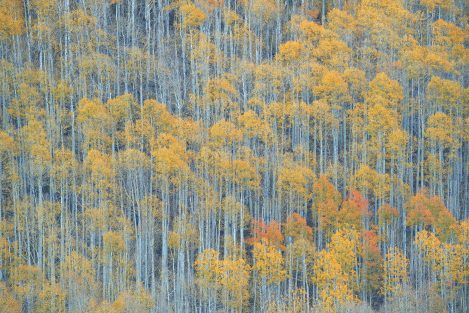
As a skateboarder in high school, I had an eclectic group of friends to say the least. Apart from our mutual love for skateboarding, many of us had other random talents and hobbies that we would practice when we were too hurt, tired, or hungover to skate. One of my closest friends was an incredibly gifted musician, and was capable of playing virtually any song on the cello, piano, and electric or flamenco guitar. Just for fun, I would find the hardest songs I could and challenge him to play them, only to watch in disbelief as he learned them in a matter of minutes.
While I am by no means a gifted musician by any stretch of the imagination, I too enjoy playing the guitar—but for a different reason. I first picked up an instrument, not just to try and replay the songs that others have made, but to play the songs I was hearing in my head. As a teenager, I found immense satisfaction in coming up with my own riffs and finding ways to string them together into melodies. I was constantly writing my own lyrics as well (they sucked). I was always dumbfounded that, despite my friend having so much skill as a musician, he never ever once wrote a song of his own. He didn’t even feel the slightest desire to try.
Winter Colour
A dive into the lessons the mountains teach us, proving that we’re real, and human experience through photography
It began when my stove exploded on the summit of Ben Macdui in the Northern Cairngorms late on one freezing evening just after New Year.
I’ve always found Ben Macdui an enigmatic place. Although it lacks the sheer grandeur and hint of remoteness projected by Braeriach, its neighbour across the Lairig Ghru, Macdui, is just far enough from the ski centre to feel like a place with an identity of its own, and there can be a delicate aura of… something… around its summit. Would it be stretching things to say an awareness? A personality? Especially around dusk or dawn, the place’s character is tangible. Why does it keep drawing me back? What does it want, and what do I want while I’m there? What experience is it I’m seeking?
I had felt a little vulnerable a couple of hours before in the winter twilight as I stamped out a tent platform in the snow. My plan: to camp on the summit in deep winter conditions, then get up early to photograph the dawn light show over Braeriach and its accompanying peaks away to the west.
Actually, that’s not quite true. I’m going to make an important distinction. Although I’d gone there with a camera and tripod and fully intended to return with some quality images, photography was not my main goal.
My philosophy of photography has evolved a few times over the last decade, but there’s a core question I keep coming back to: am I doing a thing in order to create images, or am I doing it to have an adventure and maybe create image opportunities along the way? Connected to this, what does adventure even mean now that it has become so thoroughly commoditised and commercialised? What higher purpose does it serve, if any?
On this summit camp, as I sat in my tent porch swaddled in my down jacket and heard the spurt of fuel from my stove’s faulty valve an instant before it turned into a fireball, such thoughts were far from my mind. I wasn’t thinking about the anticipated dawn light show the next morning, either. I was thinking, ‘Holy hell, my tent is about to burn down, and I’m in the middle of the Cairngorms after dark.’
The Challenge of Over Shot Locations
A photographer can make their image transcend its literalness and become their’s by recognizing something that no one else has seen or photographed in that way. This is the alchemy at the heart of any great photograph. ~David Ward
Most of the photography I have done over the course of the past decade has been within a few hours’ drive from my home. This was, in part, due to my inability to travel outside the state, both because of being in high school for much of that time as well as not having the confidence to travel alone. That last bit, in particular, held me back from experiencing a lot of unique opportunities that could have helped me grow both as artist and individual.
There was a time in high school when my German class organized a week-long trip to Germany, where we would be staying in hostels and experiencing the country. When I broached the subject to my parents, they provided me with an ultimatum: I could either go on the trip or they would give me the money that would otherwise go toward it.
Issue 321
End frame: Papaver Nudicale by Tine Poppe
In a world where we are inundated with thousands of photos daily, it is a rare and delightful pleasure to see an image that is genuinely creative, visually arresting and imbued with meaning. When I first came across Tine Poppe’s series, Gilded Lilies, I was immediately enthralled and could sense the purpose and power within the images. (Note: I encourage you to view the full series as it tells the story even more powerfully.)
At first glance, the images are strikingly atmospheric, beautiful yet foreboding and magically complex. The flowers, just past their peak and beginning to wilt, are set against the smoky, foggy and greyed landscape backgrounds, which evoke the tumult and terror of Romantic era painters working in nature’s Sublime.
As I read about the work, I understood that Tine was inspired by a TED Talk called Not So Rosy, which highlighted the environmental impact of cut flowers, now more commonly grown in industrial-scale greenhouses in Africa and South America. This resonated with me as I recalled, seemingly oddly at the time, that my local florist mentioned their poppies came from New Zealand. In these greenhouses, plants are engineered to look prettier, bloom earlier and last longer. They are then flown thousands of miles in the refrigerated holds of airplanes, only to find their way into our homes for a brief period of time before being casually thrown out. Unfortunately, all of these “improvements” come at great cost to our environment in the pursuit of an artificial perfection, obfuscating us from genuine natural beauty.
Charles Millen
Large format photographer David Tatnall contacted us and suggested we interview Charles and upon seeing his work we wholeheartedly agreed! David is the editor of View Camera Australia, a site dedicated to the promotion of large format photography and Charles wrote an article for them back in 2020. Charles's work in the mining industry in Australia gave him access to the wilderness as the mining roads cut through many parts of the landscape. We got in touch to find out more about his work in Australia and Tasmania.
Could you tell us a bit about your love for landscape photography, what your early passions were, what you studied, and the career path you ultimately pursued?
My passion for the landscape and photographing it began when I left my home state of Tasmania and moved to Western Australia in 2004. I had completed university, and a friend and I decided to have a complete lifestyle change. We drove across the country to a mining town called Kalgoorlie to look for work. At that point, I was only familiar with photography at a very basic level. I wanted a camera with manual controls because I thought it might be interesting to learn how cameras worked. That proved to be a great idea because I quickly came to enjoy photographing our trip and our subsequent explorations while living and working in a remote mining town in the Goldfields.
You completed a Fine Arts degree at the University of Tasmania, focusing mainly on the digital process of image-making, sound, and video. Did this inspire your passion for photography, and why did you choose to pursue landscape photography?
University provided the foundation for my eventual move into landscape photography, though at the time, I hadn’t found the medium for my personal work. During my final years of high school, I used an Apple QuickTake camera, which I found revolutionary. It allowed me to capture digital images and upload them directly into a computer to create composites. I always thought film photography seemed cumbersome compared to the immediacy of digital. Ironically, over the years, I’ve gravitated toward film photography, which now dominates my process.
At university, I was drawn to the video studio in the basement of the Art Building. The studio was a dimly lit space filled with patch panels, studio cameras, and audio equipment, overseen by a video and sound artist befitting a space like that, with his shock of grey hair and temperament that mirrored the environment. I also enrolled in digital imaging, drawing and graphic design classes. In hindsight, I should have enrolled in photography classes too.
By the time I graduated, I didn’t have a clear career path. I imagined working in a technical role in television but ended up taking the opportunity to travel across the country. That decision led me in time to landscape photography, and the associated pursuits that tie in with it.
Who or what has been the biggest source of inspiration in your growth as a photographer—whether photographers, artists, or individuals?
My biggest inspirations have been Peter Dombrovskis, Bruce Barnbaum, Paul Wakefield, Chris Bell, Christopher Burkett, Ansel Adams, David Tatnall, Peter Clark, Ragnar Axelsson, and Magnum and National Geographic photographers for inspiring both landscape and personal family-based documentary work. I also credit my family as a great source of inspiration.
I find it deeply rewarding to document family life, and it provides a great contrast to the landscape. Without the support and understanding of my wife, Caroline, I would not be venturing solo into the wilderness nearly as frequently as I do! On occasion, Caroline joins me, and I try not to bore her too much by wandering around in circles and looking for a composition! Much credit also needs to go to David Tatnall and the Australian large format photography community, particularly those that exhibit on View Camera Australia’s online exhibitions. It is an honour to show my work on the same web pages of some incredibly talented artists.
Can you share any books that inspired or deepened your passion for photography?
I highly recommend these books to any aspiring or seasoned photographer:
- The Landscape by Paul Wakefield
- The Negative by Ansel Adams
- Using the View Camera by Steve Simmons
- The Art of Photography by Bruce Barnbaum
- Peter Dombrovskis: A Photographic Collection
- Primal Places by Chris Bell
- Gold by Sebastião Salgado
- Last Days of the Arctic by Ragnar Axelsson
- Intimations of Paradise by Christopher Burkett
- The Pilbara by Hugh Brown
- Magnum (a collection of works from the renowned photo agency)
Your photography journey began with images captured in the Pilbara region of Western Australia. How did the unique landscape of the Pilbara influence your photographic style and the way you express yourself creatively?
The Pilbara’s vast, ancient landscape had a profound impact on my photographic style and inspiration. The region’s iron ore laden oxidising rock, dramatic light, big open skies, wet season storms, fires, floods, spinifex plains and ancient gorges taught me to appreciate light and contrast, texture and form. It is a place that also taught me to also look inwards, not just outwards. Working in such a remote and strikingly beautiful area heightened my sensitivity to the interplay of light and shadow and, at the same time, the seasons within, concepts that remain central to my work today. I think I can credit the Pilbara and the impact it has had on how I now see my work as a series of self-portraits, the camera capturing what is behind the lens as well as what is in front.
4×4 Landscape Portfolios
Welcome to our 4x4 feature, which is a set of four mini landscape photography portfolios which has been submitted for publishing. Each portfolio consists of four images related in some way. Whether that's location, a project, a theme or a story.
Submit Your 4x4 Portfolio
Interested in submitting your work? We are always keen to get submissions, so please do get in touch!
Do you have a project or article idea that you'd like to get published? Then drop us a line. We are always looking for articles.
Enzo Crispino
Meeting with William Turner
Goran Prvulovic
Over the Waves (Part 3 – Crashing the Rocks)
Rhythm & Color
Mika Stetsovski
Unromantic River Rhine
Peter Berlinghof
Unromantic River Rhine
When people think of the Rhine they usually have pictures in mind of romantic castles, lovely vineyards and steep hills on both banks of the river. This is especially true for the Upper Middle Rhine valley between Bingen and Koblenz. Further down the stream where I live, the landscape is completely different as the river enters the North German lowlands and the Lower Rhine region begins. The area is densely populated and the banks of the river are full of industrial compounds and settlements. Not much nature is to be found. Grand scenic views almost always contain traces of human activities. It does not seem to be the favourite playground for landscape photographers.
Why did I nevertheless try to take pictures there? I have always found the Rhine kilometrage very interesting, which accompanies the Rhine from Konstanz, where the river leaves Lake Constance (kilometre 0) until it flows into the North Sea after 1033 km at Hoek van Holland. At each kilometre, there is a big sign showing the position you are at, and between the kilometre signs, there are small signs in 100 m steps.
I selected a small area between kilometers 657 and 683 with Bonn at the southern end and Cologne at the northern one. My plans were to take a picture at or near each kilometre sign on both banks of the river and to capture the images with a camera converted to take infrared pictures.
I used the resulting pictures for having a photo book printed for myself in which each kilometre was given four pages and each section started with a picture of the kilometre sign. Some of the pictures also appeared in a German Photo magazine (Schwarzweiß, issue 149).
Rhythm & Color
For the last couple of years, I've been living in the beautiful country of Armenia. During this time, I’ve travelled across almost the entire country, experiencing its diverse landscapes and seasons.
What fascinates me every time is how different the mountains can be. Even within a relatively small country where everything is close together, the mountains in different regions each have their own distinct patterns. They seem to have their own unique rhythms and colors, like different songs recorded on one great album.
Over the Waves (Part 3 – Crashing the Rocks)
The most exciting part is when waves crash the rocks of the shore. It looks like the rocks are winning, but over time, waves are shaping the rocks, too. There is no winning side; it is just a beauty created by nature and a moment captured in the camera.
See my previous submissions in this series:
Meeting with William Turner
For a few years now, since 2019 to be precise, my attention and photographic research have been directed towards Pictorialism and Citationism, on which I have already produced photographic projects, two dedicated in particular to English Vedutism with the following titles: "On the trail of John Constable" and "Meeting William Turner". I have subsequently implemented photographic production on this theme in recent years with other projects, which can be consulted on my personal website.
The photographic project, Meeting William Turner, was intended as a homage to the great romantic landscape painter and master of capturing light. My intention was to photograph the best-known part of this city, its famous Brighton Pier. Before leaving on holiday, I had studied English landscape painting, focusing on its two greatest exponents: John Constable and William Turner. With the project on Turner, I closed my personal research on English landscape painting, which consisted of two separate projects; the first was entitled In the Footsteps of John Constable, where I paid particular attention to the refined and bucolic atmospheres that Constable imprinted on canvas, photographing three English parks, Richmond Park, Greenwich Park and Saint James Park. In Turner's project, however, I was deeply attracted by the romantic depiction of his landscapes, where nature is predominant in all its powerful beauty.
Brenda Tharp – Portrait of a Photographer
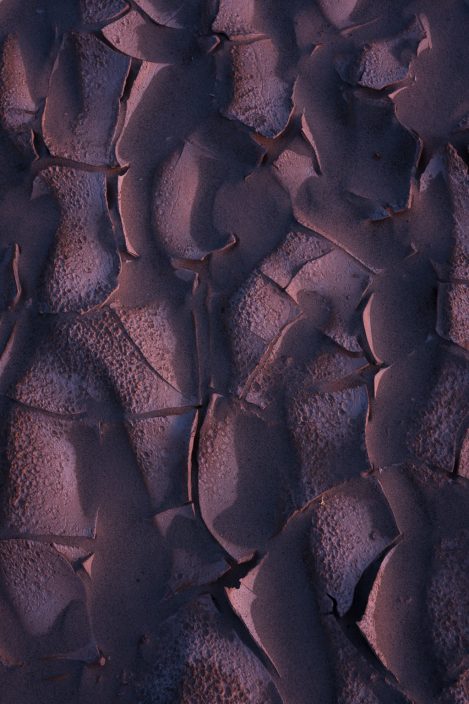
In the world of nature and landscape photography, there’s often a pull toward capturing the grandeur—the majestic mountains, sprawling valleys, and dramatic sunsets. But every so often, we encounter an artist whose work reminds us that some of the most profound beauty lies in the smaller, quieter moments of the natural world. Brenda Tharp is one such photographer, and her attention to the intimate details of nature offers a masterclass in seeing and storytelling.
Brenda’s journey into photography began early, nurtured by a childhood steeped in outdoor adventures.
Her connection to nature deepened over the years, and she ultimately carved out a career in editorial and commercial photography. Yet, it was her passion for outdoor and nature photography that called her back to her roots. This return to nature fueled her soul and allowed her to develop a visual language that celebrates the interplay of light, texture, line, and pattern in the natural world.
The Art of the Print
Entering photography competitions brings its own set of unique challenges. While outcomes can sometimes feel swayed by personal taste and the judges' moods, working with physical prints introduces its own complexities. Over the years, I've learned to approach these contests with patience, focusing on personal growth rather than rankings. In this piece, I’ll share my recent experience at the Swedish Photography Championships — from preparing my prints to embracing the process and gaining valuable insights along the way.
Can Photography Really Be Judged?
Is photography truly something that can be measured, or do the results simply reflect the mood of the judges that day? It might sound like I'm questioning the value of competitions, yet I still find myself participating. Why, you ask? It’s the challenge—a chance to present my work without my identity as the photographer influencing the outcome. It also allows me to test my visual language and push my creative limits. And honestly, it's a refreshing alternative to posting on social media, where images often get lost in the endless scroll anyways.
For me, the key is to approach competitions with a light heart. I never judge my work based on its placement. Photography isn’t just a competitive pursuit for me; it’s a form of therapy, a way to connect with nature, hone my compositional skills, and keep my curiosity alive. Sometimes, I return home with stunning shots; other times, the results aren’t quite what I hoped for. But that's the beauty of the process—whether I'm fine-tuning a composition or pushing myself beyond my comfort zone.
A New Kind of Challenge: The Swedish Photography Championships
Recently, I had the opportunity to participate in the Swedish Photography Championships, where I was thrilled to win in the Landscape/Nature category. The competition begins with a digital qualification and transitions to a print final. Competing with physical prints was a new experience that required considerable effort—not to mention the costs for test prints and ink, which often feel more precious than gold!
The Process
Printing the images myself ensured the final results aligned with my vision. While I don’t use a top-of-the-line monitor, my calibrated screen serves me well for most prints. However, knowing the prints would be viewed under controlled lighting, I took extra precautions. I purchased a lamp with a matching 5000K color temperature and relied on natural daylight to ensure color and light accuracy. The controlled lighting revealed a few inconsistencies between what I saw on the screen and what appeared on the print.
One of the prints, "Reach," had previously been exhibited, and I had developed a master file that looked nearly perfect under controlled lighting. I only needed to slightly lighten the darkest areas. However, the biggest challenge came with the next print, 'Interconnectable,' which required about twelve test prints and two full-size prints to perfect. This image features a wide range between highlights and deep blues, requiring adjustments to accurately capture tones in the dark areas and achieve the right shade in the yellow/golden highlights. While I typically handle post-processing in Lightroom, I found that accessing the subtle nuances of this image surpassed its capabilities. So, I turned to a luminosity masking panel for Photoshop. I followed a similar approach for "Excellence of Light" and the winning print "Blue Embrace," both showcasing a wide dynamic range, though I didn’t need nearly as many test prints for those.
For this competition, I used A5 pieces (148 x 210 mm) of the original paper intended for the final prints. This smaller size made it easy to spot any flaws that needed correction. For the final prints, I left a 3 cm (at the widest part) white frame around the photos to compensate for the requested aspect ratio, which didn’t align with the originals.
Crafting with Care
My experience in the media industry has given me valuable skills in image mounting, which proved essential during this process. I wanted to do as much of the mounting myself as I could. Dust is your enemy, and achieving a dust-free environment can be tricky, but it’s crucial. Thinner paper is particularly sensitive to dust and imperfections, and glossy papers are no exception; even the slightest flaw can impact the surface during mounting.
Over the years, I’ve come to trust certain papers. I use MediaJET papers, which I’m very happy with, thanks to their knowledgeable and customer-focused team. I rely on four of their papers, each selected to suit different images and moods.
Printing Process
For screen calibration, I use the Spyder-X Pro, a hardware color calibration tool for monitors.
For "Blue Embrace" and "Excellence of Light," I selected MediaJET PhotoArt White Baryta, 310 g, renowned for its exceptional color depth that enhances deep blacks—an essential quality for these shots. For the other prints, I opted for MediaJET Museum Natural Silk–300 g, known for its classic pearl finish, giving the images a rich, textured feel.
Tools and Equipment
For trimming the prints, I use a DAHLE rotary trimmer 448, which delivers clean cuts for large formats. I mount the prints on 5 mm Kapafix 600 g boards with adhesive backing. These lightweight boards provide a polished look at an affordable price. Although I ordered four 70x100 cm boards, the first batch arrived poorly packed and damaged. Thankfully, the company replaced them at no extra charge, and I repurposed the damaged boards into a practical box for transporting the finished prints to the event. To cut the boards, I used a sharp, sturdy utility knife along with a cutting mat and a metal guide rail—à la Festool.
Mounting Techniques
Mounting these relatively small images didn’t require special tools for applying them to the adhesive surface. The key is to avoid scratching the paper with materials like plastic or wood; I even used my eyeglass case, made of soft felt! For larger prints, it’s important to use a textile-covered squeegee that spans the entire image to help avoid trapping bubbles when applying the print to the adhesive side.
Reflecting on the Process
I’ve discovered that competing with prints deepens my understanding and respect for the craft. From this experience, I’ve learned that for future print competitions, I will ensure to do test prints before submitting my entries. This allows me to tweak and improve not only the prints but also the overall process.
A paper print has a more limited dynamic range than what we see on screens, meaning details in very bright or dark areas can be lost. This became especially clear when I critically examined the prints under controlled lighting. As part of my routine, I regularly calibrate my monitor to ensure the colors are as accurate as possible. Installing the correct ICC profile for the chosen printer and paper is equally important. The ICC profiles from MediaJET are of high quality, so I’ve never felt the need to create my own color profiles.
Over time, I’ve improved my ability to recognize what will and won’t work as a print, even while capturing the image. However, my approach to photography remains the same: I always aim to create a refined master print file that is exclusively used for printing.
This has also led me to reconsider my previous exhibition choices. I used to customize frames with matting and the most expensive non-reflective art glass. However, for my next exhibition, I’m thinking about mounting the prints on Kapa boards with simple hanging. This approach allows me to showcase the prints as I truly envision them, letting the carefully selected paper take center stage without distraction.
Recently, a non-photography friend said, "When you started out sharing your images, I understood your vision. But now, I feel completely lost; I don’t quite grasp what you’re doing anymore." Rather than seeing this as a disconnect, I took it as a sign of how my work has grown. My creative path has moved away from the familiar toward something perhaps less accessible but much more aligned with what resonates with me now. This shift will undoubtedly shape my prints for the next exhibition, where I’m eager to share this new direction and what truly drives my work.
After completing this article, I was honored to learn that I’ve been chosen to represent Sweden in the World Photographic Cup (WPC), set for March 2025.
- Blue Embrace
- Excellence Of Light
- Interconnectable
- Reach
The Big Move
So, MrsLJ and I have entered our fifth year in the wilds of Wester Ross. Leaving the comfort blanket of our home in Cumbria far behind us. Why did we even contemplate such a move. I’m not sure that I’d even scratched the photographic surface of Cumbria in that time. People, and by people I mean photographers, think of Cumbria in terms of its lakes and the various views that surround them. But Cumbria is so much more than that. There’s the quiet, pastoral beauty of the Eden Valley, the vast open spaces of the Pennines and the East Fellside. The Cumbrian views are quite polished. Civilisation is obvious at every turn. The dry stone walls, the boats that ply its lakes, the chains of pubs that open all year round.
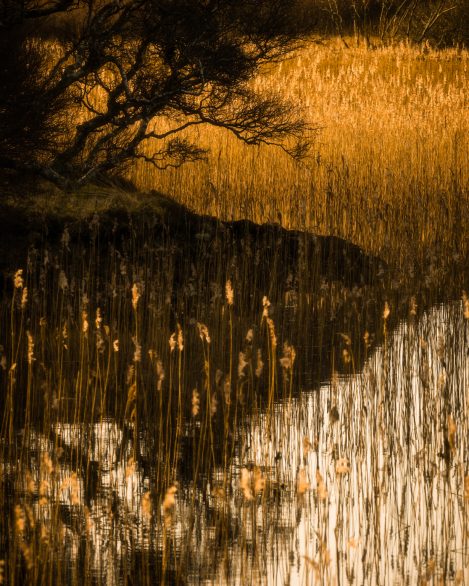
Golden Reeds Bad a Crotha: A favourite of our time here. A view thats glimpsed every time we head through to Gairloch for supplies. An awkward spot for the right perspective, but I wanted to capture what my eye saw.
If Wester Ross has a layer of civilisation, it's skin deep, a thin veneer only. The mountains are bigger. More rugged. Instead of manicured fields, there are miles of bog and rock.
I thought I’d be exploring the relationship between mountains, Scots Pines, tumbling streams and bottomless lochs. But in truth, I failed miserably in that task. I found that photographing the (even bigger) view was not my forte. I can’t do it. Joe Cornish and the like can do it with ease. But my attempts to capture the grandeur of my locale left me seriously underwhelmed. Instead, I found that my head was being turned with greater regularity by the smaller view. Views that I’m fairly sure I would have walked past in the lakes.
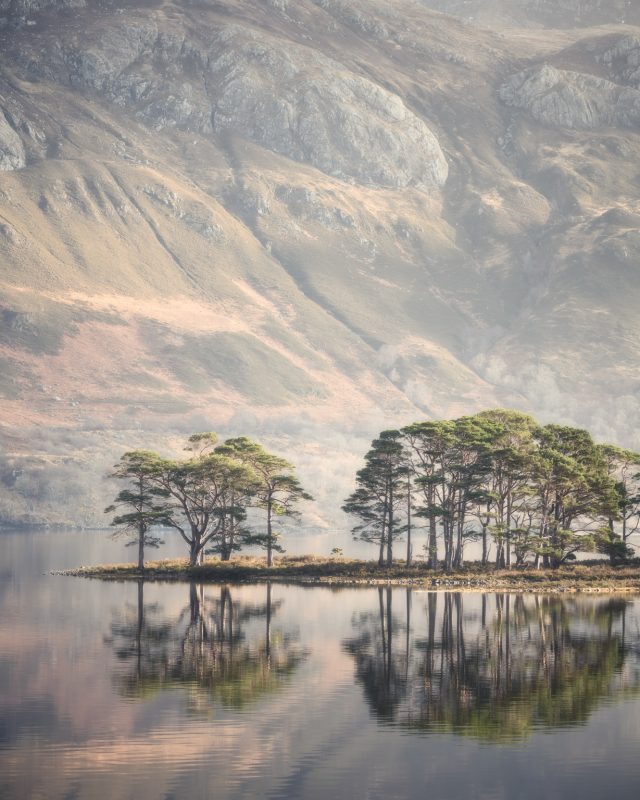
Grudie Pines: The sort of scene that I regressed to after failing with the bigger views. I’ve always believed in the ‘less is more’ principle, but that meant I was just taking the same pictures as before.
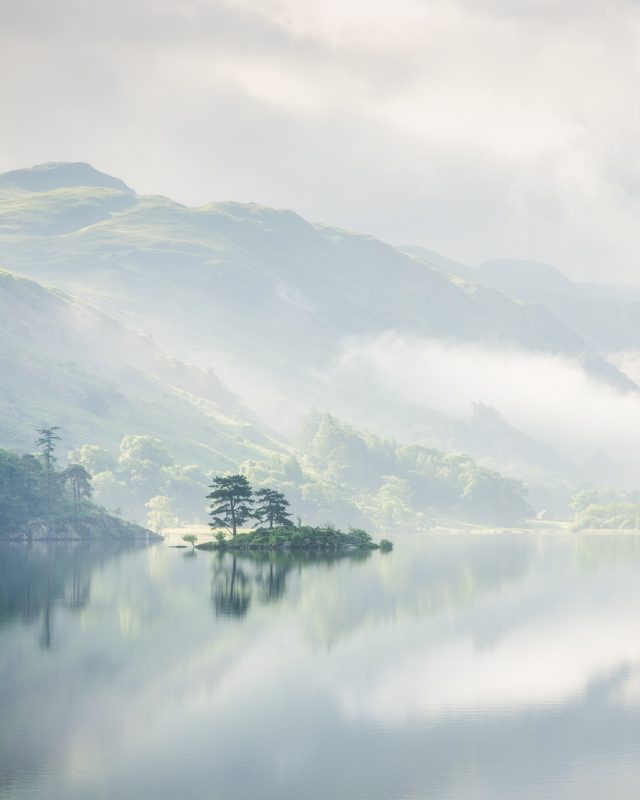
Wall Holm: Ullswater was five miles from my home when I took up photography. With views like this, thought wasn’t really necessary. I literally wandered around in point/shoot mode.
Views that were as nothing to the grand views. But continued to hold my gaze the longer I looked at them. I’ve always said, “See with the heart, shoot with the head”. Perhaps it was time to take my own advice. To shoot the smaller view.
Do I question my failure at capturing the bigger view? No. It's just the way it is. If I dwelt on that failure, I might question our move to the desolate wastelands of the North. Instead of basking in my failure I’d rather look back at some of the images over the last three years or so with a smug feeling of pride. Having said all that, I’ve no idea what is next. But whatever it is, I’m looking forward to it.
Reading the Landscape
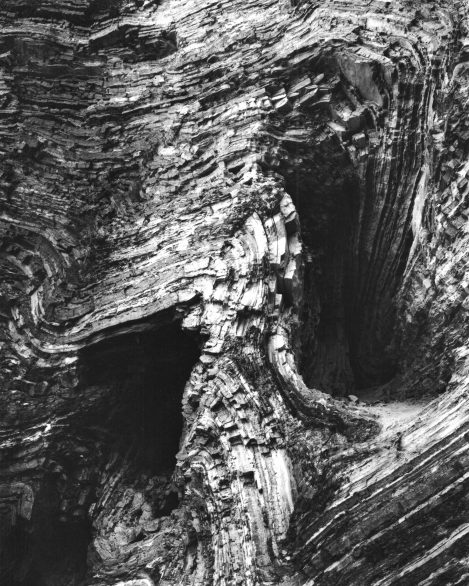
Like growling water grows
into a drowning swell,
this scarp of buckled waves
pound more than they expel.
The screams of molten Earth
blast through ruptured jaws to Hell;
no doubt the horrors beneath,
wreak darkly stories as well.
I’ve long held the regrettable belief that landscape captures of a traditional genre are rarely seen by the non-photographic community as anything more than visual selections – sometimes captivating, even thoughtful selections, but selections made of those largely inanimate objects considered by many to be neutral elements. For the eyes of these viewers journey only to a place and time of presumed authentic origins, where beauty or perhaps darker moods prevail, but little separates this understanding from those intentions (and actions) perceived of the photographer. There may be a feeling of having simply being privy to a view of singular worth, as witnessed by another.
To say that a fleeting pictorial only assessment of that landscape is all that is justified almost certainly devalues a photograph’s true potential, as even the most casual of images evolve from a unique perspective.
Titling an image is one way to draw your viewer away from an otherwise purely visual interpretation and into a mindset where a declared artistic intention brings additional weight. A few well chosen keywords may stimulate our pictorial objectivity and metaphorically rearrange a photograph’s architecture into an alternative understanding. For me, choosing to title a landscape with information other than a location or time has helped both present a parallel understanding to a viewer and, indeed, challenge my own sense of place in relationship to the environment.
In recent years, that familiarity with landscape for me has become more engaging, more intimate, and, I believe, more communicative. Those once descriptive titles have now morphed into increasingly multi-layered phrases and, ultimately, into poetic pairings. Today, I find verse without any titling at all offers a rewarding exchange between the image and its latent meaning – at least to me as the maker. Perhap,s too, a viewer now possessing another perspective will find a passing visual encounter to no longer be conclusive; this interaction must be approached as if a meeting of minds, where involvement is clearly encouraged.
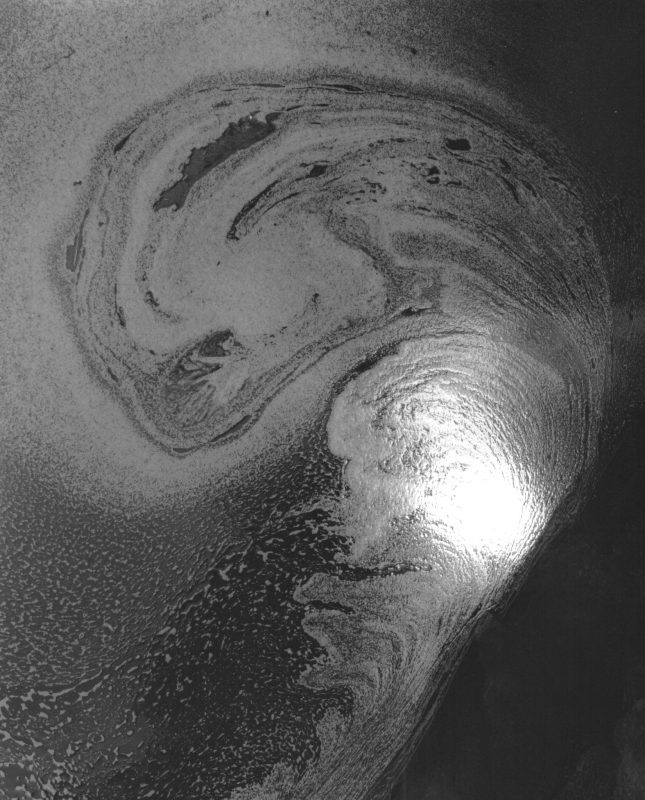
How far away
does space go on
… to astral graves,
where light rays shone?
Or further still,
beyond these tombs.
Where nothing leaves.
But space resumes.
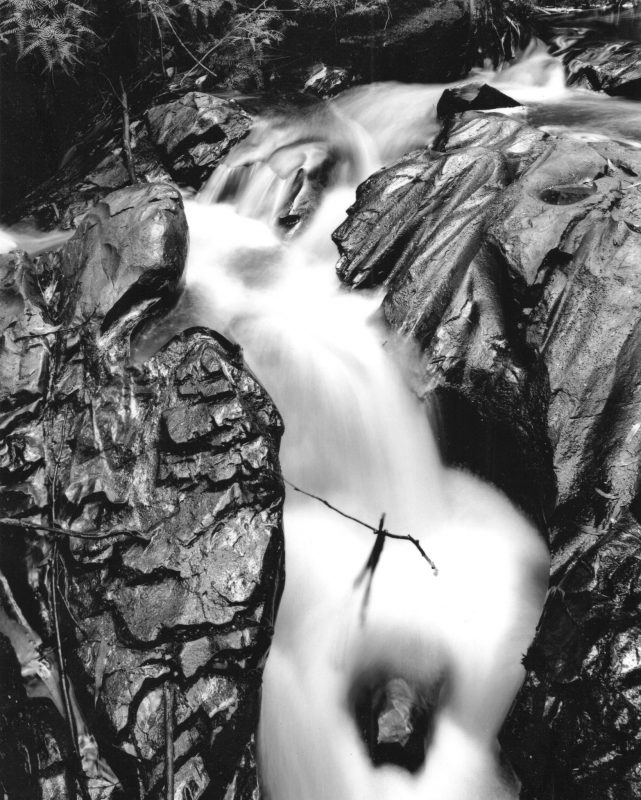
Look first to light
for what is sure,
lest that unseen
doubts what we saw.
But feel the truth
that sight ignores:
when darkness breathes,
our soul explores.
To those visual folk uneasy with a word and image pairing, it is worth mentioning that diptychs and similar photographic mechanisms of association have long served as very effective vectors for viewer interaction. In their simplest form, such pairings provide evidence of visual or emotional similarities (or differences) while more complex examples can explore those conceptual landscapes where the meaning or question may be more nuanced. In either guise, it is the exchange itself that confirms of a deeper link, an idea that the partnership holds more value than the sum of its parts.
A poetic pairing can exhibit these same mutually beneficial qualities. Sympathetic verse blends effortlessly with an appropriate image to either broaden the scope of its understanding or narrow the focus to a specific aspect of the subject. In some instances, both outcomes can be simultaneously true – in my mind, the capacity for an ambiguous pairing to evade description or be different things to different people only amplifies the possibilities for us as the creator.
My eyes are invariably drawn to cryptic subjects and puzzling features, especially those that mimic human behaviours or suggest bodily forms, and I enjoy the holistic flavour that verse can bring to these studies. Anthropomorphic images invite the use of text to further that interpretation or even imply conscious communication.
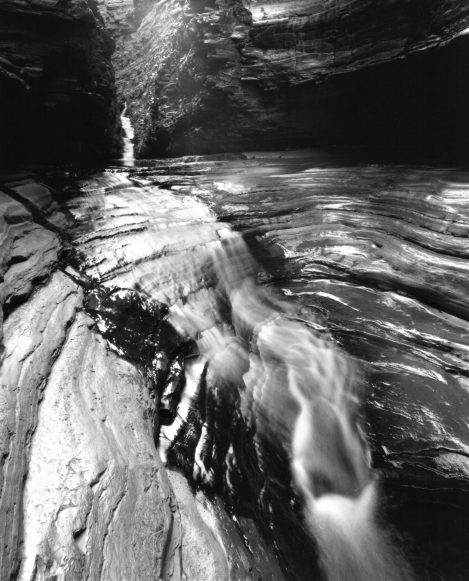
In an underworld of polish,
like an opal cut by trolls,
the weary hone of time
shines its gloss in jagged knolls.
Water skips a starry glint,
on that trickling chime that rolls;
through endless velvet echoes,
so smoothing to our souls.
Using words as a catalyst to extend the artistic merit (both real or projected) of our landscape is no different to any other mechanism we may reach for. But just as alternative processes or dramatic Photoshop editing, for example, are unlikely to transform a mediocre image into a more meaningful print, poetic verse can only pass on that which the photograph is capable of holding. An inadequate image will not be redeemed by poetry alone. And vice versa.
Despite the overlap of this media driven collaboration, the photograph must still provide an engaging visual experience without the aid of verbal direction. Ideally, any words should remain meaningful and uncoupled from the image. (Although it could be argued that as visual layers always exist, they will be self-evident to the viewer; however, words, particularly poetic sequences, are often vague and therefore rely on context for clarification.) Either way, the best work is made when each component is singularly strong, gathering even more power in concert.
In my practice, I have chosen to only use two rhyming quatrains to accompany an uncropped 4X5 format monochromatic image. Somewhat paradoxically, I find the limitations that accompany these self-imposed creative boundaries actually broaden the scope of the pairing. Using only a Mamiya 7 and 4X5 Ebony, I force myself to identify landscape elements compatible with standard silver gelatin paper sizes rather than allow the most obvious subject or compositional framework to dictate how I should treat it. Similarly, by containing my text to a specific length and format, I must explore alternative and unexpected arrangements of verse because I have found that which initially links most conveniently to the image often contributes the least inspiring content.
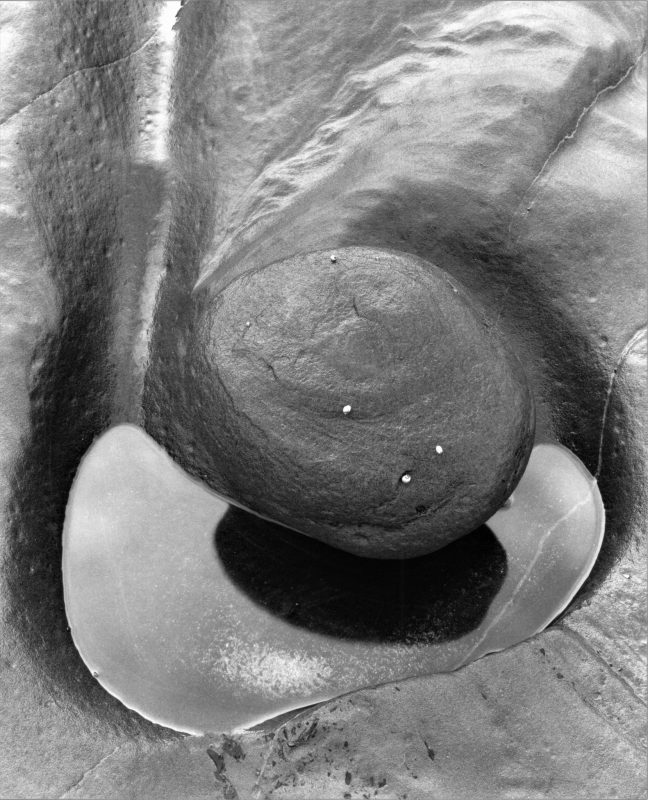
Should belief respond to cues
that vision yearns to see;
to assume that curves must flow,
like roots support a tree?
Or shall form beyond clear sight,
as shadows may promote,
then pose another truth -
or sink what seems to float?
Choosing to follow an instinctive rather than intellectual pathway through an image and its supporting text does not necessarily weaken the veracity of the subject matter either. I remain committed to a faithful reproduction of the natural environment (notwithstanding the B&W capture), but happily respond to those unexpected possibilities that emerge from the visual authenticity.
Indeed, one of the most rewarding aspects of pairing words with photography is being able to explore the visual world as a participant and redefine our own sense of landscape. In many instances, the basic concept and its artistic intention at the time of exposure remain fixed, but the breadth of interpretation, and importantly, those boundaries we may have consciously set, need not restrict a richer understanding of the scene. Perhaps choosing to find words may also find a depth we have not visualised before.
-
Like growling water grows
into a drowning swell,
this scarp of buckled waves
pound more than they expel.
The screams of molten Earth
blast through ruptured jaws to Hell;
no doubt the horrors beneath,
wreak darkly stories as well.
-
How far away
does space go on
… to astral graves,
where light rays shone?
Or further still,
beyond these tombs.
Where nothing leaves.
But space resumes.
-
Look first to light
for what is sure,
lest that unseen
doubts what we saw.
But feel the truth
that sight ignores:
when darkness breathes,
our soul explores.
-
In an underworld of polish,
like an opal cut by trolls,
the weary hone of time
shines its gloss in jagged knolls.
Water skips a starry glint,
on that trickling chime that rolls;
through endless velvet echoes,
so smoothing to our souls.
-
Should belief respond to cues
that vision yearns to see;
to assume that curves must flow,
like roots support a tree?
Or shall form beyond clear sight,
as shadows may promote,
then pose another truth –
or sink what seems to float?
-
When vision cedes to darkness,
(assuming of Nature’s flaws),
that divine jade of cactus
can savagely bare its claws.
But flowers erupt from quills
proffered light by Summer days.
Full blooms now bound like armour
– and those talons reveal bouquets.
-
I paused where time had ended.
There on the beach that day.
It wasn’t clear just when,
or why it chose to stay.
And for moments held so still,
no more did come my way,
but in the rolling march of tide
– this stop… was just delay.
-
Light stirs the mind uncertain,
from water’s gathering glint.
Where inky stains fluoresce
… and time bleeds that hazy tint.
Wave plumes beneath swirl foreign
– more liquid than bubbled air;
of fluid and lyrical thoughts,
that swim to a world elsewhere.
-
Who tastes the blood of Nature
to recoil from soil so sweet?
Or watches pleading echoes
tumble down an empty street?
For neither blowing kisses
nor by proxy should we greet,
but embrace our Earthen pulse,
then surrender to its beat.
-
Can numbers mark the milling wind,
or compare the glare of dew?
Would quieter flame prove love is less
… or just glow a different hue?
Love measures not through size or weight.
Nor scores by arrows Cupid drew.
For the arms of Earthly passion
reach beyond our Earthly view.
-
Does Creation shade its magic,
as a hat may hide a hare?
For that water spun by rock
conjures light from thinnest air!
In truth there is no puzzle;
just a twist to so declare.
No sleight of hand in Nature?
– but eyes may choose to stare.
-
The danger of nothing,
should ambition shun the call,
is certainty of loss,
not fear to scale the wall.
With emptiness ahead
when dreams take in the fall,
what risk can be greater,
than taking none at all?
-
While knowledge writes its pitch
to explain of all things known,
so strength of hope signs on,
to books of text unshown.
For faith invites a vision,
that lecture may not demand
– to understand of our belief:
not believe we understand.
-
What fearsome creatures,
estranged from view.
With dark they conspired,
to crush its curfew.
Any rustle or roar,
stoked visions that grew
– for terror chose night.
But that’s all they knew.
-
For what do we strive
in haste to begin;
could sparkle and want
bring joy without win?
For contentment smiles
on a race well run –
to treasure your dreams,
but live more with none.

